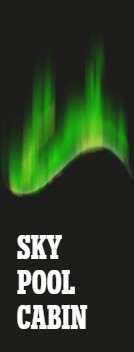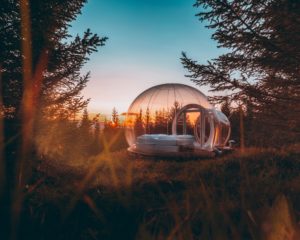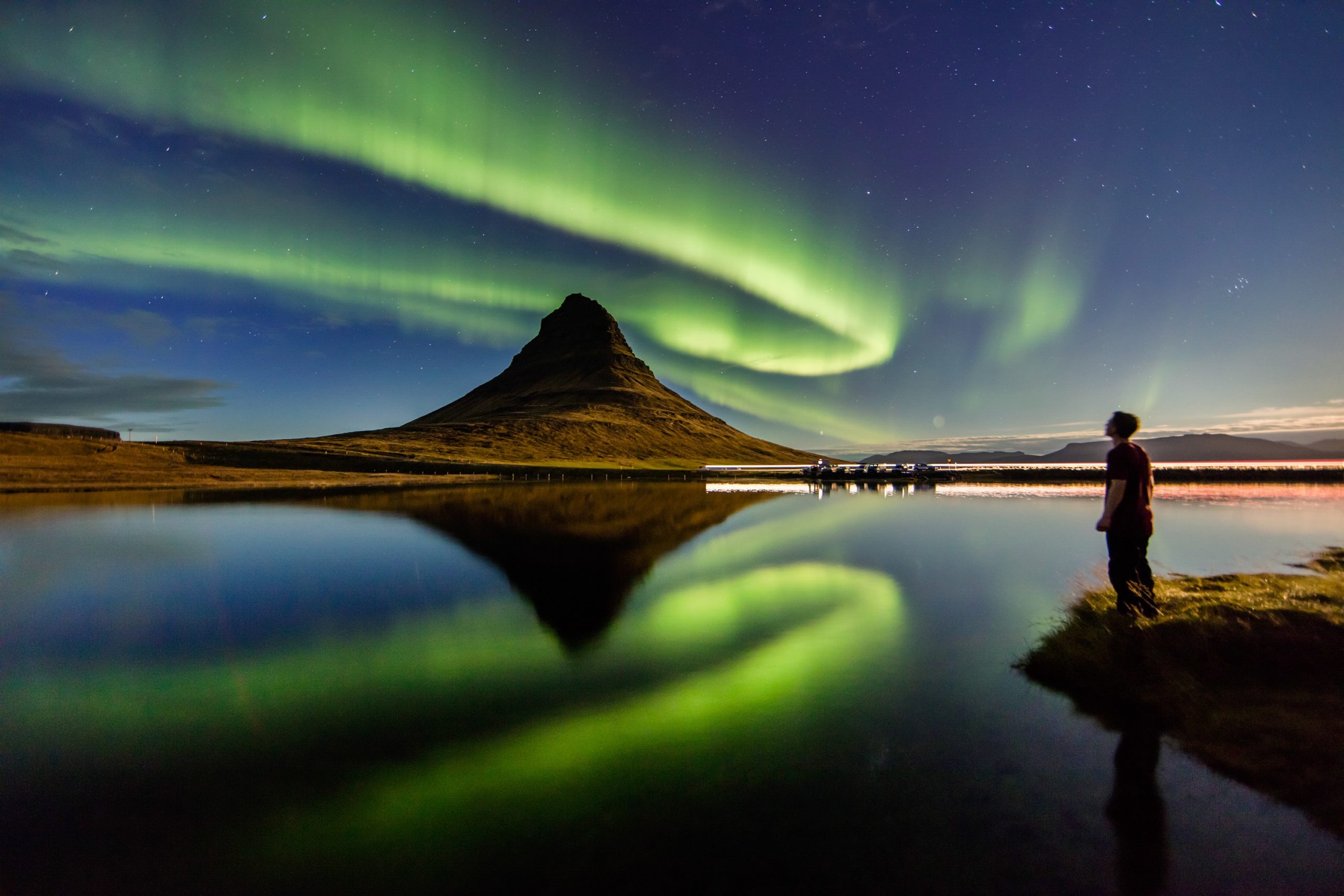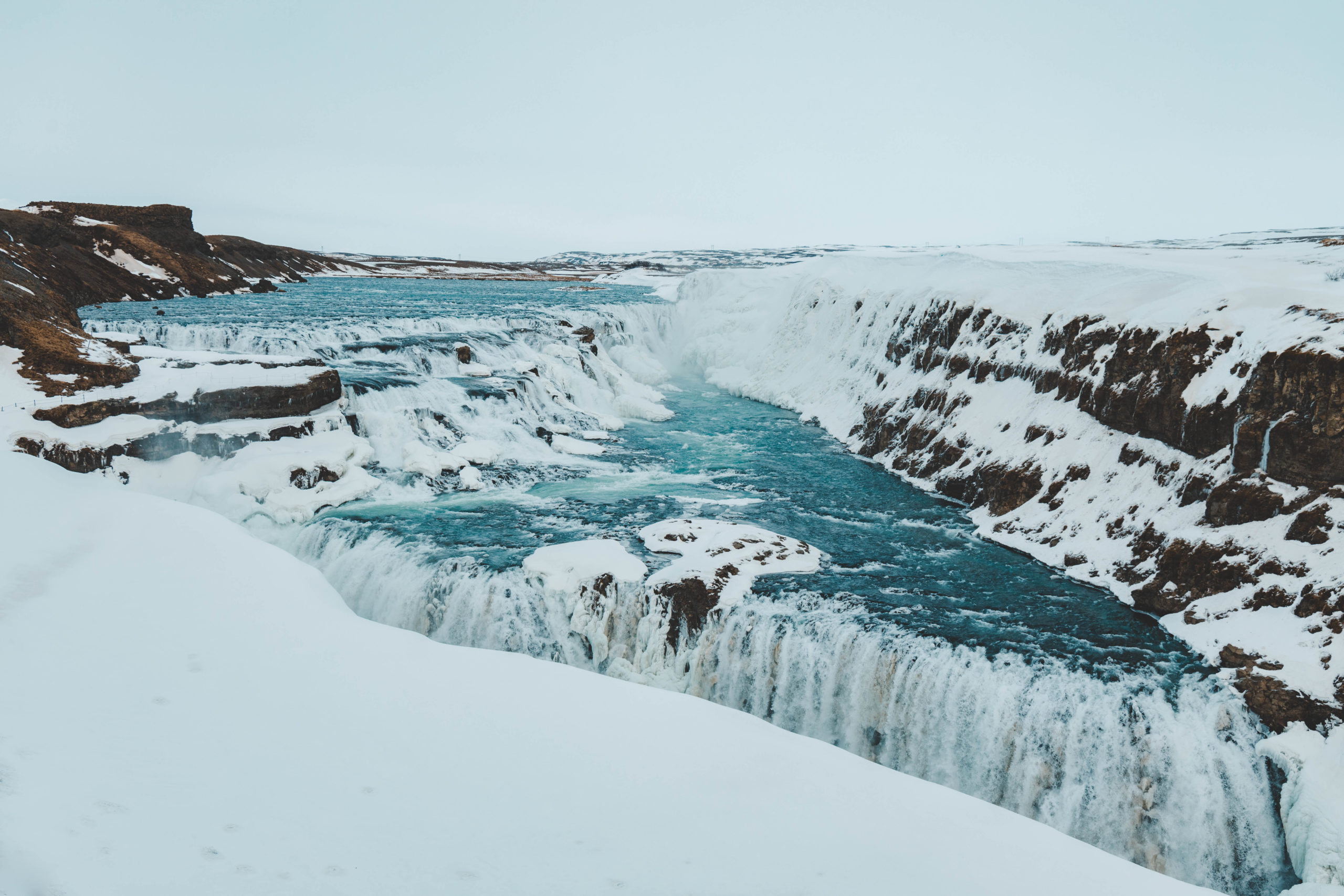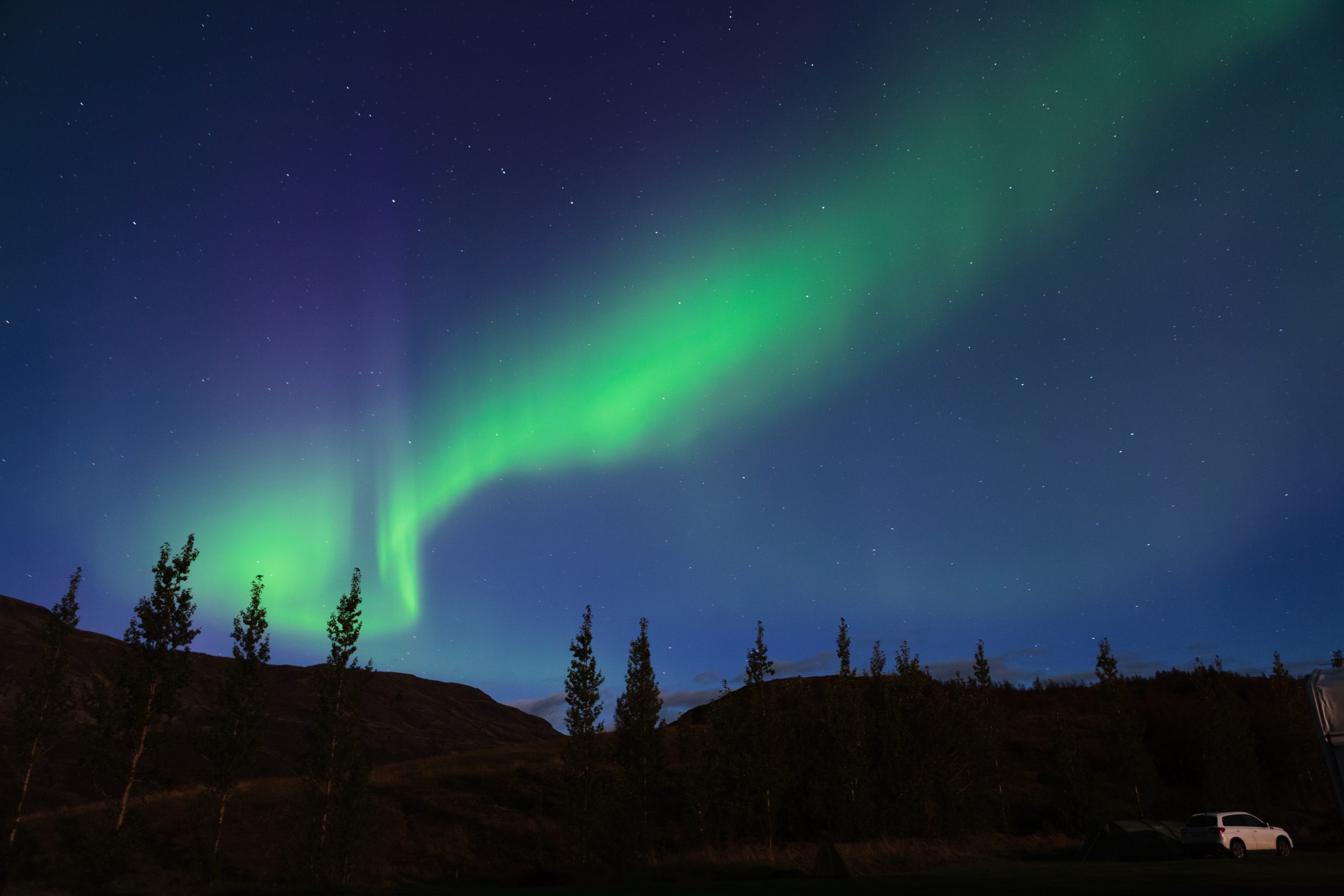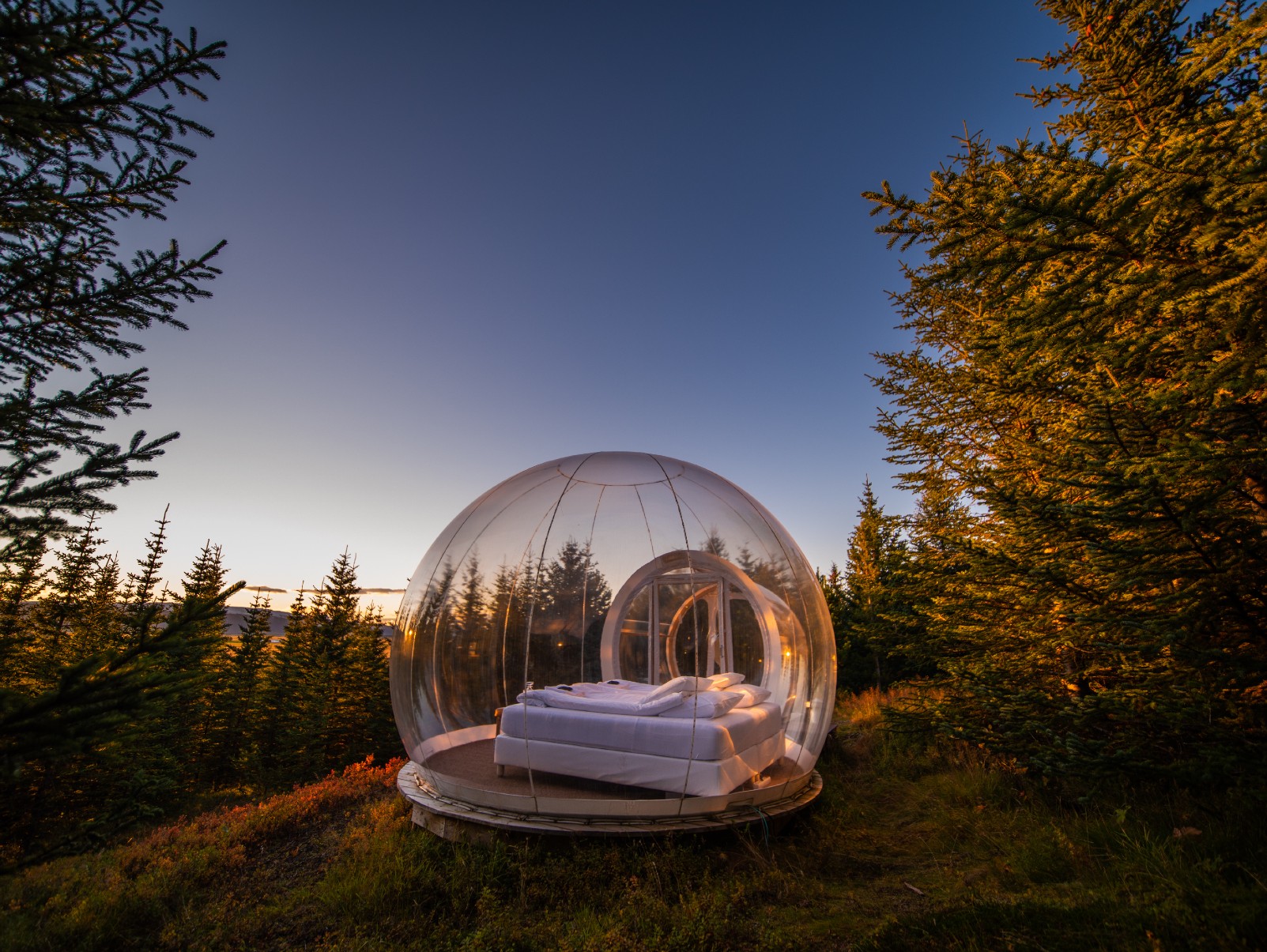Midnight Sun in Iceland | Nature's Most Beautiful Phenomenon
When can you see the Midnight Sun in Iceland
The Midnight Sun in Iceland illuminates the country throughout the day and night during summer.
When can you see the Midnight Sun in Iceland
The Midnight Sun in Iceland illuminates the country throughout the day and night during summer.
The Midnight Sun in Iceland is a fascinating phenomenon that takes place between May and August. Synonymous with summer, longer days mean more hours to enjoy Iceland's many attractions, as well as its vibrant cultural scene.
The Midnight Sun reaches its peak around the summer solstice, (or Sumarsólstöður) which generally falls on June 21st each year. Setting beyond the horizon for only an hour each day, Iceland becomes a land of eternal sunlight, renewing its reputation every year as one of the planet’s most surreal and alluring destinations.
For much of the Spring and Autumn (or Fall, for US readers), Iceland resembles many other European countries in its climate and daylight hours, with the sun setting around 6 PM. Both seasons are still considered beautiful, by any standard, though they lack the magical ambience of the Midnight Sun at its full height.
What is summer like in Iceland?
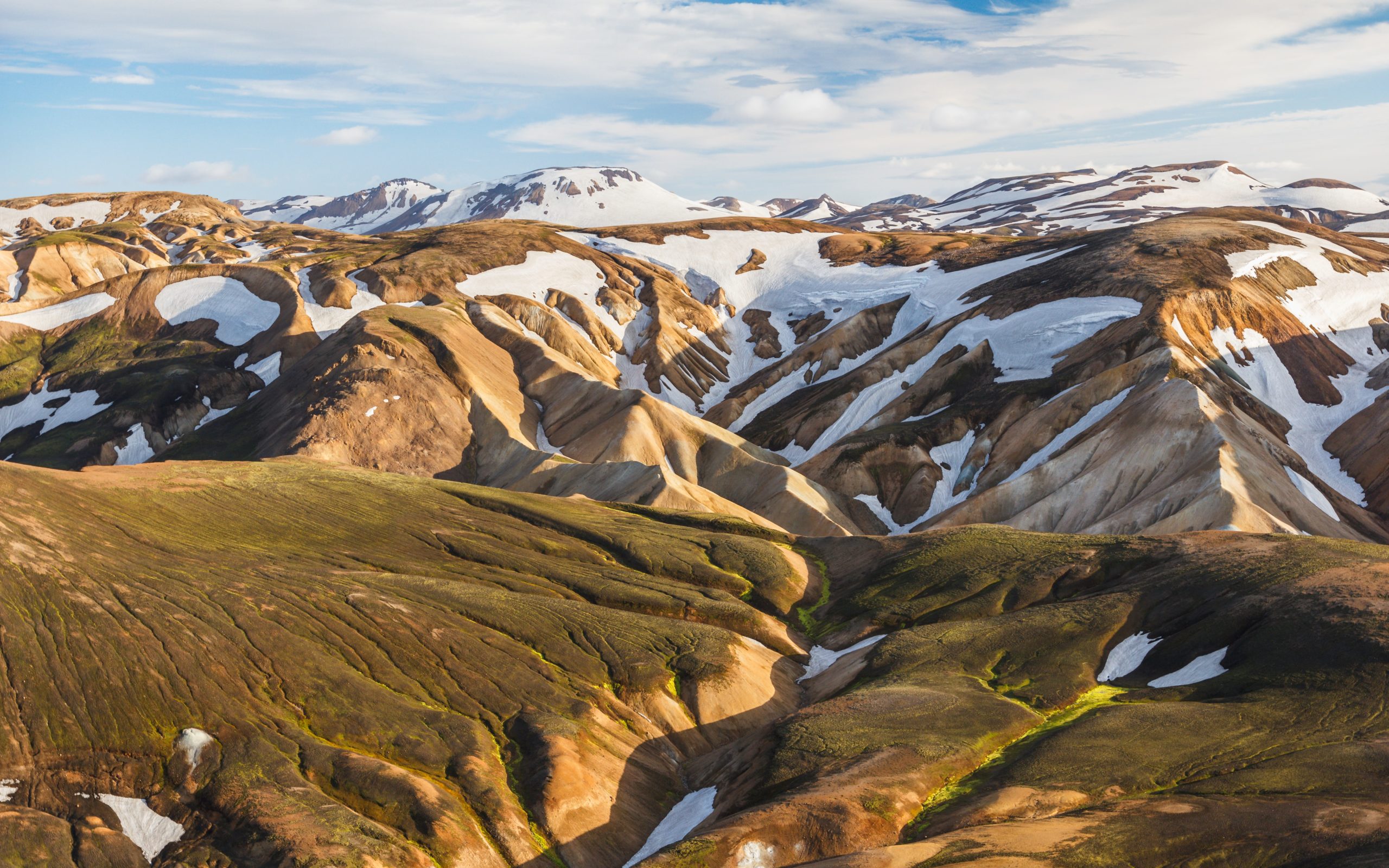
When most people think of Iceland, they picture a frosted land of snow-capped mountains, iceberg-filled glacier lagoons and soothing outdoor hot tubs. This description is accurate enough in winter, but Iceland’s warmer months defy the expectations that come with its name, resembling someplace else entirely.
Rolling green meadows, sweeping hills and welcoming coastal settlements wait on being discovered by summer guests. With days that can reach up to 20–25 °C (68–77 °F), Iceland becomes a surprisingly fitting summer getaway, providing guests ample time beneath the Midnight Sun to explore the many opportunities available here.
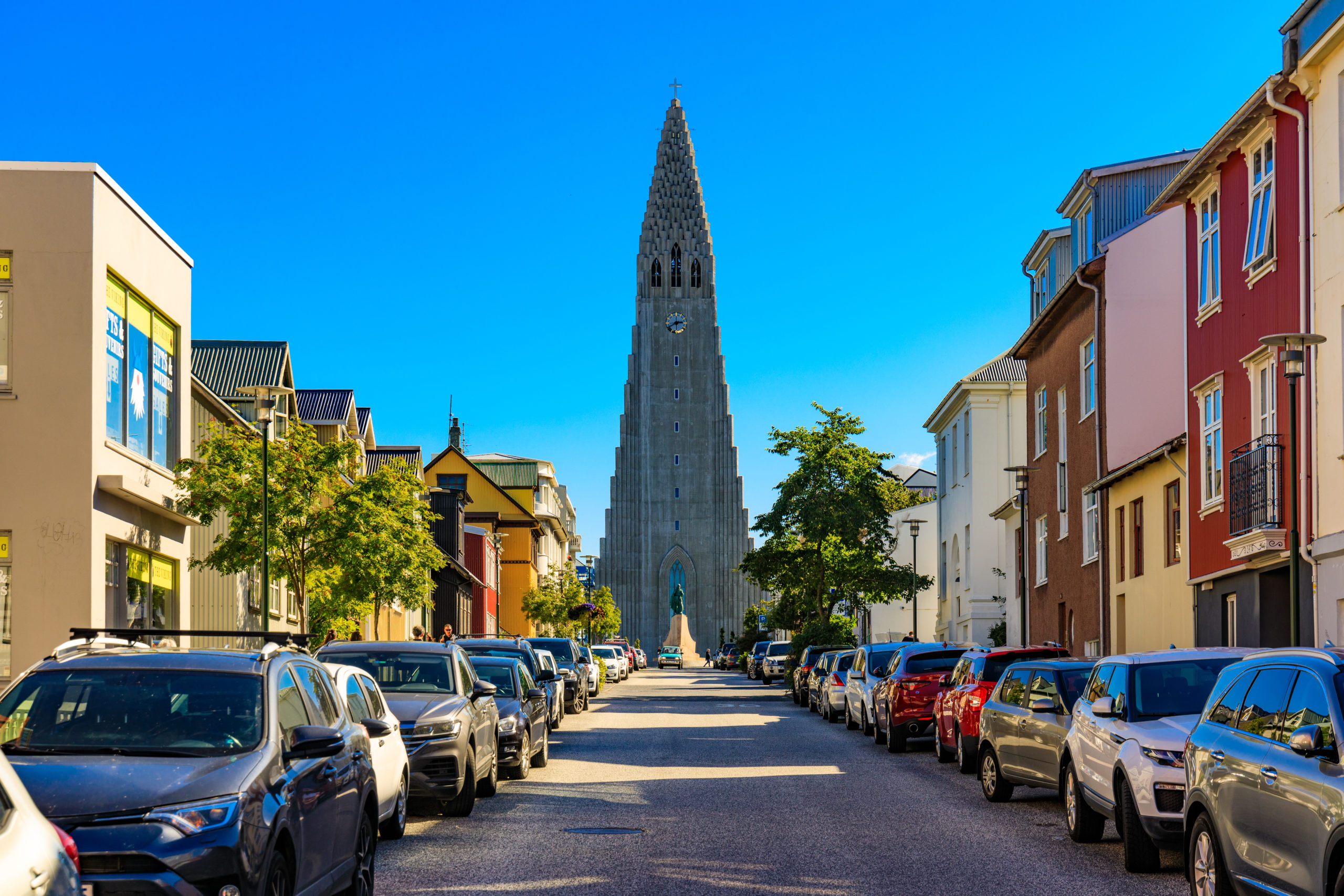
It is during the summer that Iceland’s most prominent festivals are held. Music festivals like Secret Solstice and Sonar are now staples of Iceland’s cultural circuit, attracting a wealth of local artists and more giant stars from abroad. In previous years, great acts including the Black Eyed Peas, Led Zeppelin’s Robert Plant, Cypress Hill and Rita Ora.
Summer is also a brilliant season to see Iceland’s wildlife. Sheep roam the countryside freely, and guests can regularly see Icelandic horses grazing by the famous Ring Road. Bird-lovers will be particularly interested in seeing the iconic Atlantic Puffin, a migratory species that nests in Iceland during the season. (In fact, twitchers can find the world’s biggest puffin colony in the Westman Islands, just south of the Icelandic mainland.)
What causes the Midnight Sun in Iceland?

While it might seem straight out of a science-fiction movie, there are solid reasons why the Midnight Sun appears in Iceland’s sky as it does.
Our planet rotates on an axis tilted at 23.5 degrees during its orbit, meaning higher latitudes are exposed to more sunlight throughout specific periods each year. When it is the Northern Hemisphere’s turn to be more revealed, particular countries, including Iceland, experience what’s known as the Midnight Sun.
Iceland is located a touch below the Arctic Circle, which sits at a latitude of 66.5°N. Grímsey Island, 40 kilometres from the country’s northern coastline, is the only Icelandic territory that constitutes being within the Arctic Circle.
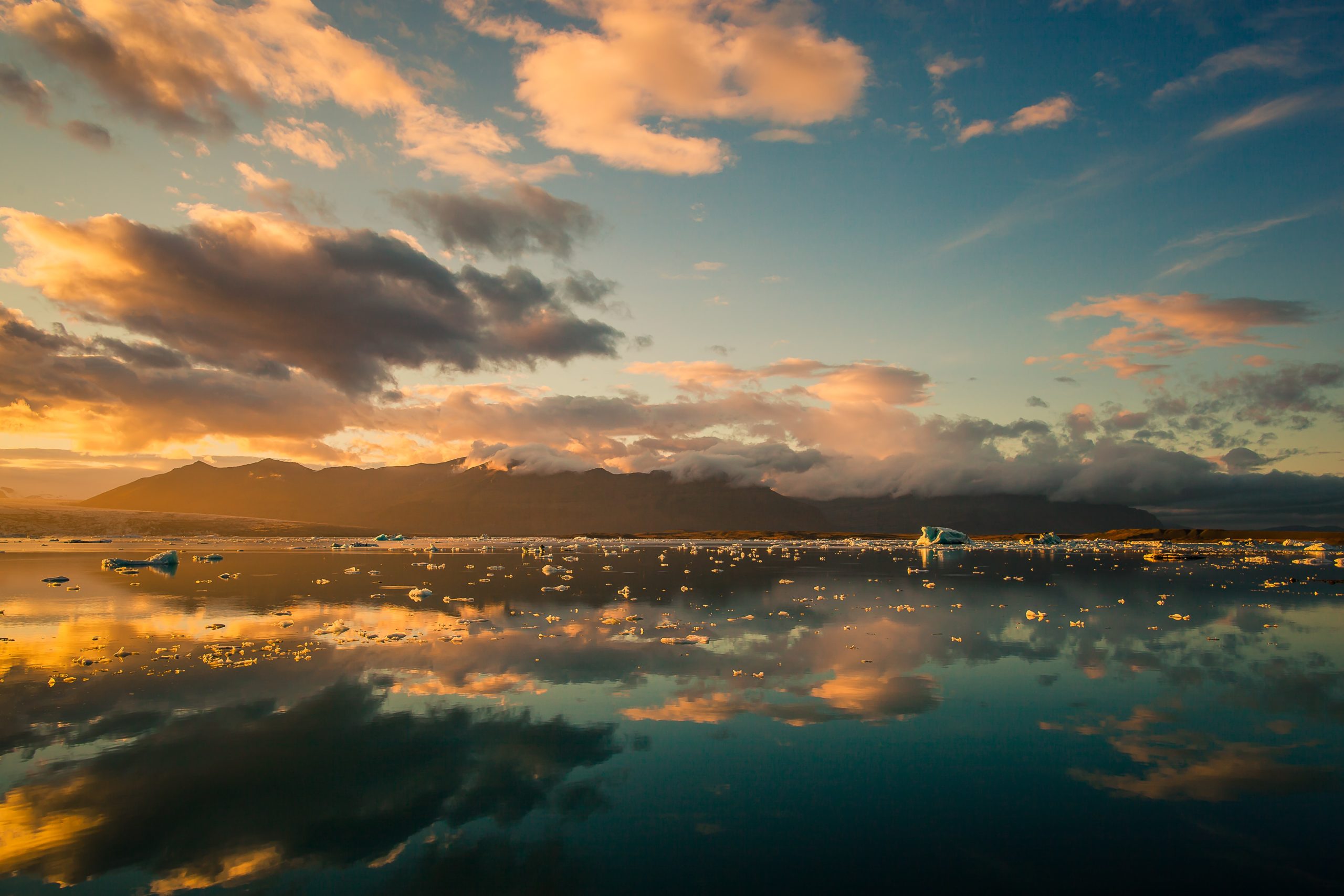
Iceland undergoes what’s known as a ‘Polar Night’ when the Southern Hemisphere is facing in the opposite direction to the sun. Throughout this time, Iceland experiences only a few hours of sunlight a day, making for incredibly dark winters.
In summer, the Westfjords is the one location in Iceland that experiences near 24 hours of sunlight due to its geographical position in the country’s northwest. Guests can visit many memorable sites in the Westfjords, including the tranquil Ísafjörður Bay and the thunderous, layer-cake shaped waterfall, Dynjandi.
Other destinations one can see this phenomenon include Alaska, Norway, Russia, Canada, Finland, Sweden and Greenland. However, given the wealth of experiences in Iceland, we sincerely believe this to be among top destinations to see the Midnight Sun firsthand.
Top locations to experience the Midnight Sun in Iceland
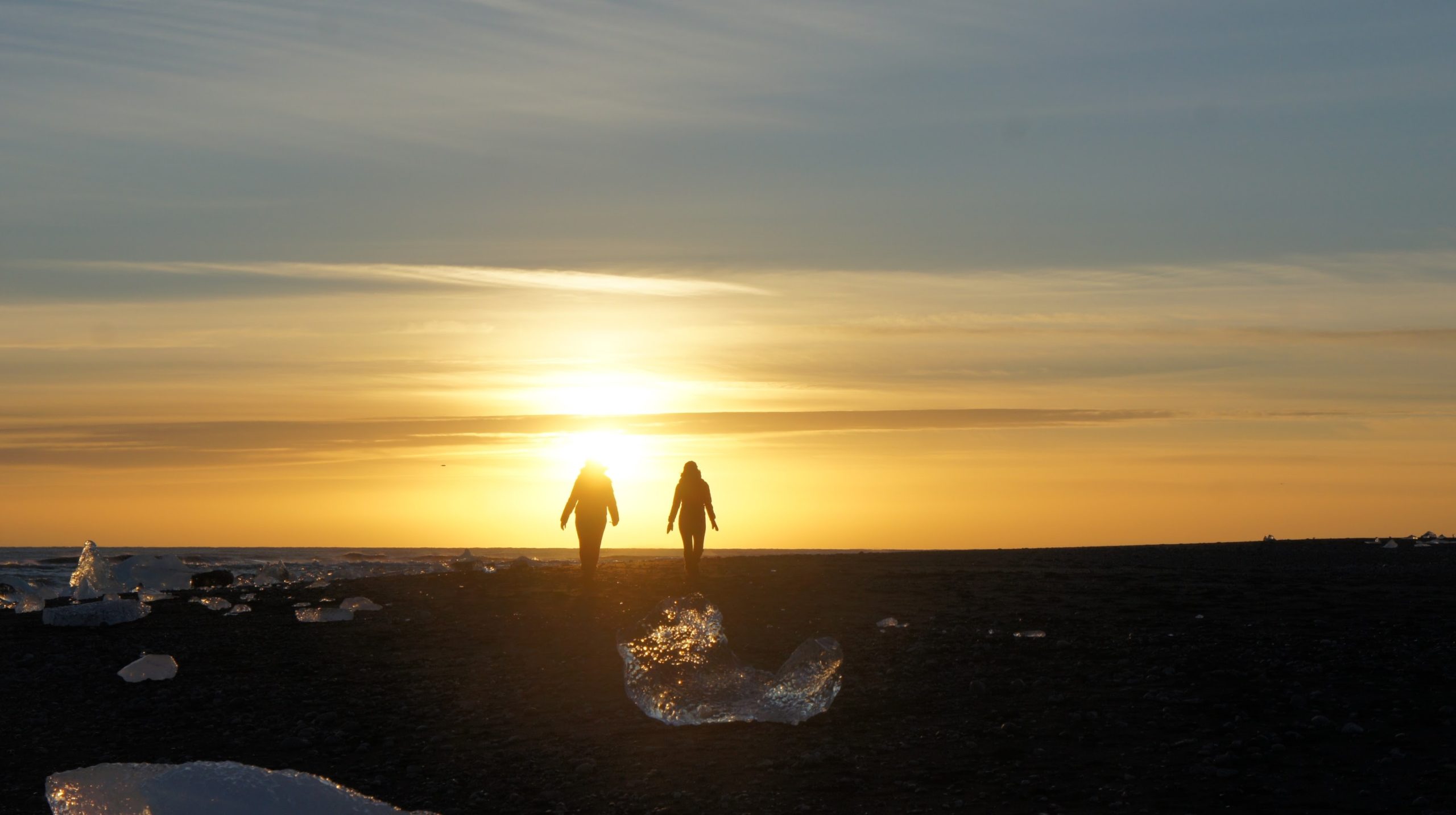
With its translucent icebergs reflecting each ray of light, Jökulsárlón glacier lagoon is the most famed spot for witnessing how the Midnight Sun tones Iceland’s landscape. Though the lagoon’s icebergs are smaller during the summer than winter, the breadth of Vatnajökull National Park can be witnessed around you, unhampered by fog, cloud-cover or rain.
Any one of Iceland’s waterfalls makes for a good choice too. Those on the South Coast, like Skogafoss and Seljalandsfoss, are obvious, but perfectly ample choices. Gullfoss, which is part of the Golden Circle, also looks stunning beneath the Midnight Sun’s rays, as does the northern giant, Dettifoss.
Mountains are another brilliant choice of subject for those looking to appreciate nature beneath the Midnight Sun. The sharpened peak of Kirkjufell, on the Snaefellsnes Peninsula, is a popular peak among visitors and is widely thought to be Iceland’s most photographed mountain. Those in Reykjavik can make do with the city’s landmark mountain, Esja, which looks especially dramatic during the summer months.
PLAN YOUR JOURNEY
Travelling to Iceland?
Check our overnight tours with a driver guide that includes a one night stay in a bubble.
*Starting from ISK 59.900 per person
How to best enjoy the Midnight Sun in Iceland
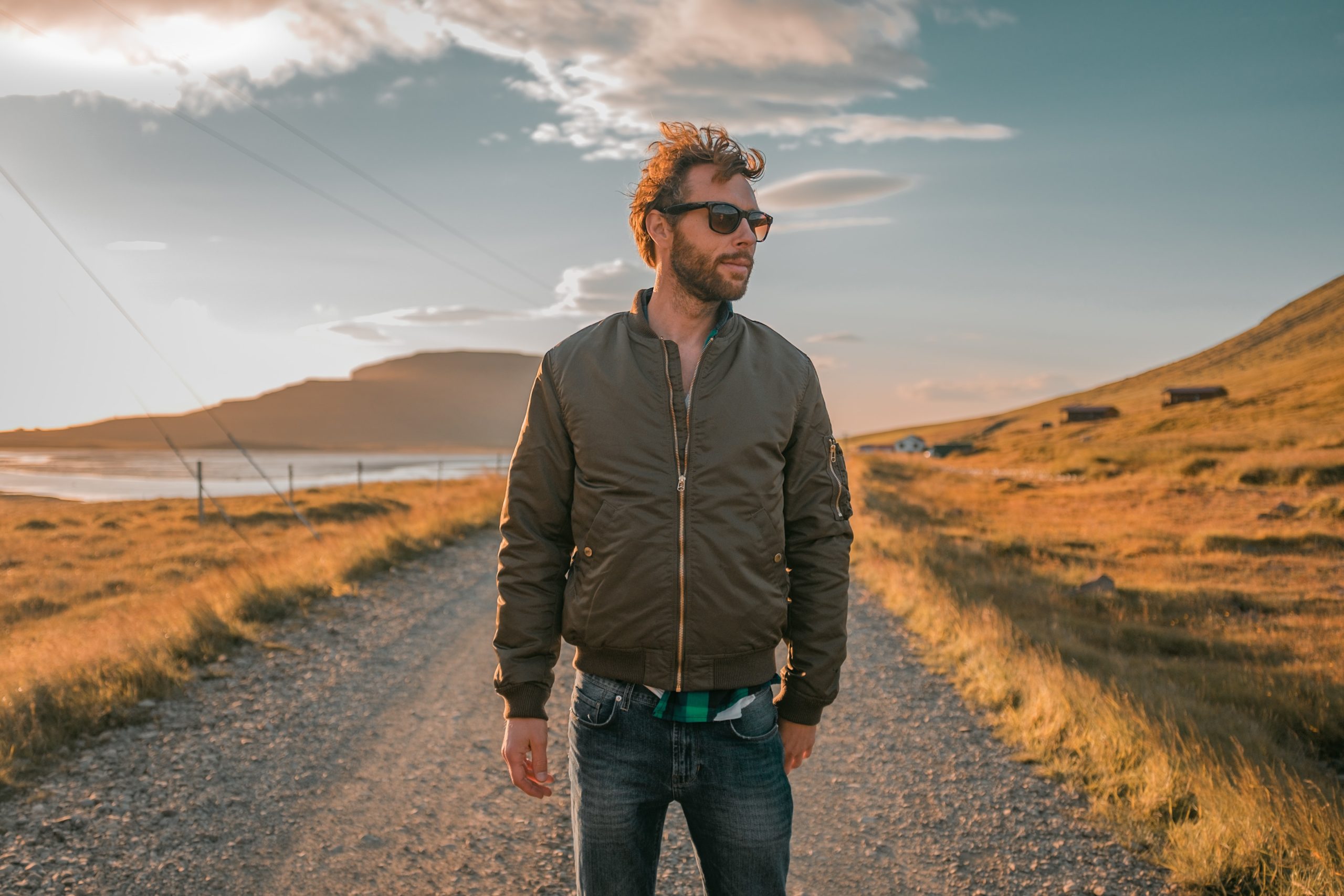
Iceland is positively brimming with fun activities competing for your time. With the Midnight Sun high in the sky throughout the night, you’ll have plenty of time to explore the vast array of opportunities available to travellers here.
Whale watching is among Iceland’s most popular tour activities. With over twenty whale and dolphin species found in Icelandic waters, this adventure on the high seas is a fantastic choice for wildlife lovers looking for a closer perspective. During summer, tours run late into the evening, allowing you additional time to see the humpbacks, minkes and harbour porpoises commonly sighed on these trips.
For those of a more thrill-seeking persuasion, ATV and quad-biking should be right up your alley. This high-speed, high-octane tour provides a fun and adrenaline-pounding means of experiencing this country’s nature. The only question is before zooming-off; do you have the bottle?
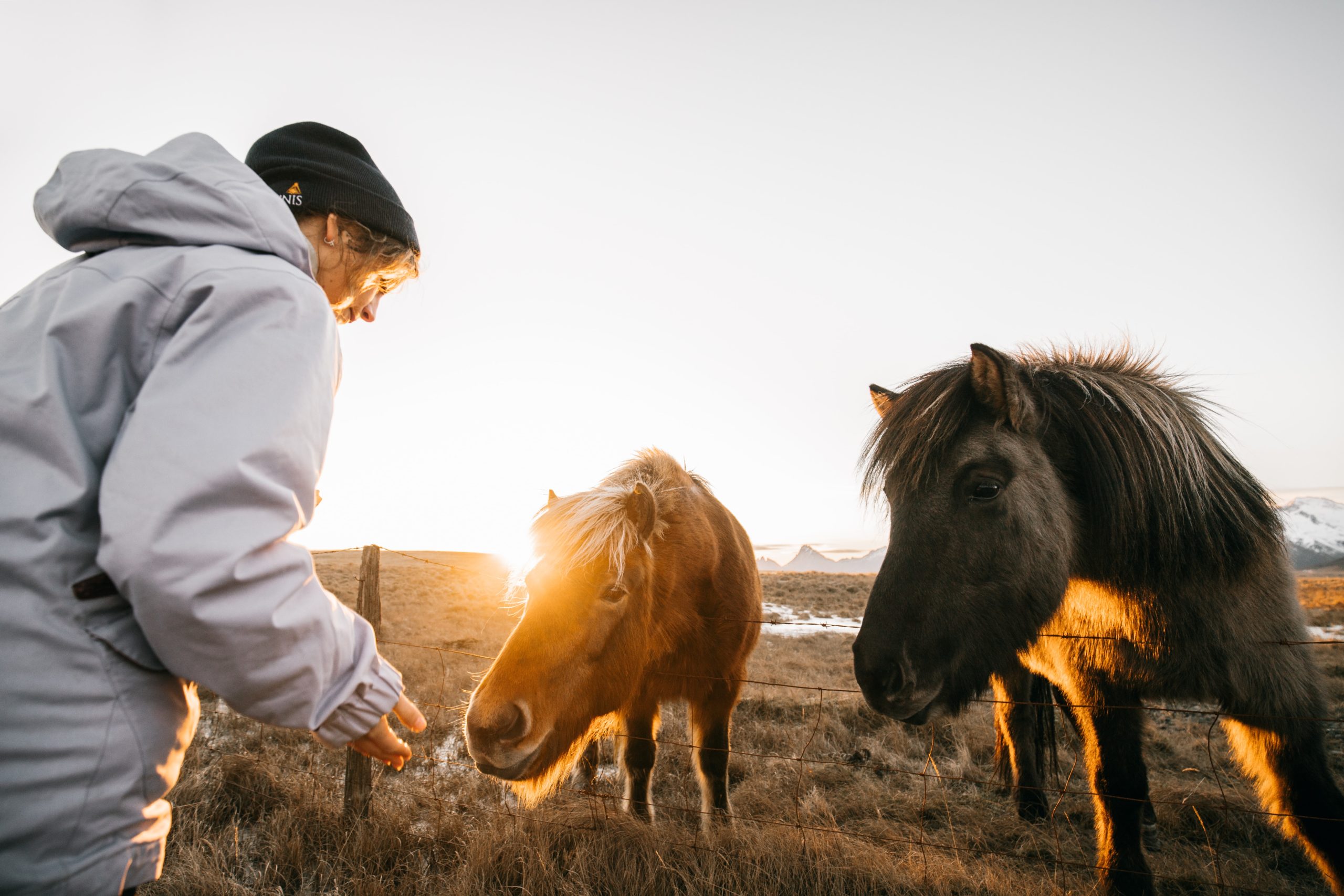
Visitors looking to experience the countryside by more peaceful means might instead try their hand at horse riding. The Icelandic horse is a famous breed amongst equestrians, best known for its short stature, curious intelligence and ability to trot uniquely. Importantly, Icelandic horses are friendly and used to the company of humans, making this tour a brilliant choice for families and newcomers.
Glacier hiking in the summer might seem against the grain, but it offers many benefits over doing so during the cold, blizzard-heavy winter. For one thing, hiking under the Midnight Sun is an excellent experience in itself, making for a less challenging hike overall.
From atop an ice cap, you will have staggering panoramic views over the surrounding landscape, with clear visibility that allows for the mountains, ocean, and everything in between to remain in sight. On the glacier itself, you will appreciate the intricate ice sculptures, moulins and crevasses, all twinkling beneath the summer sunlight.
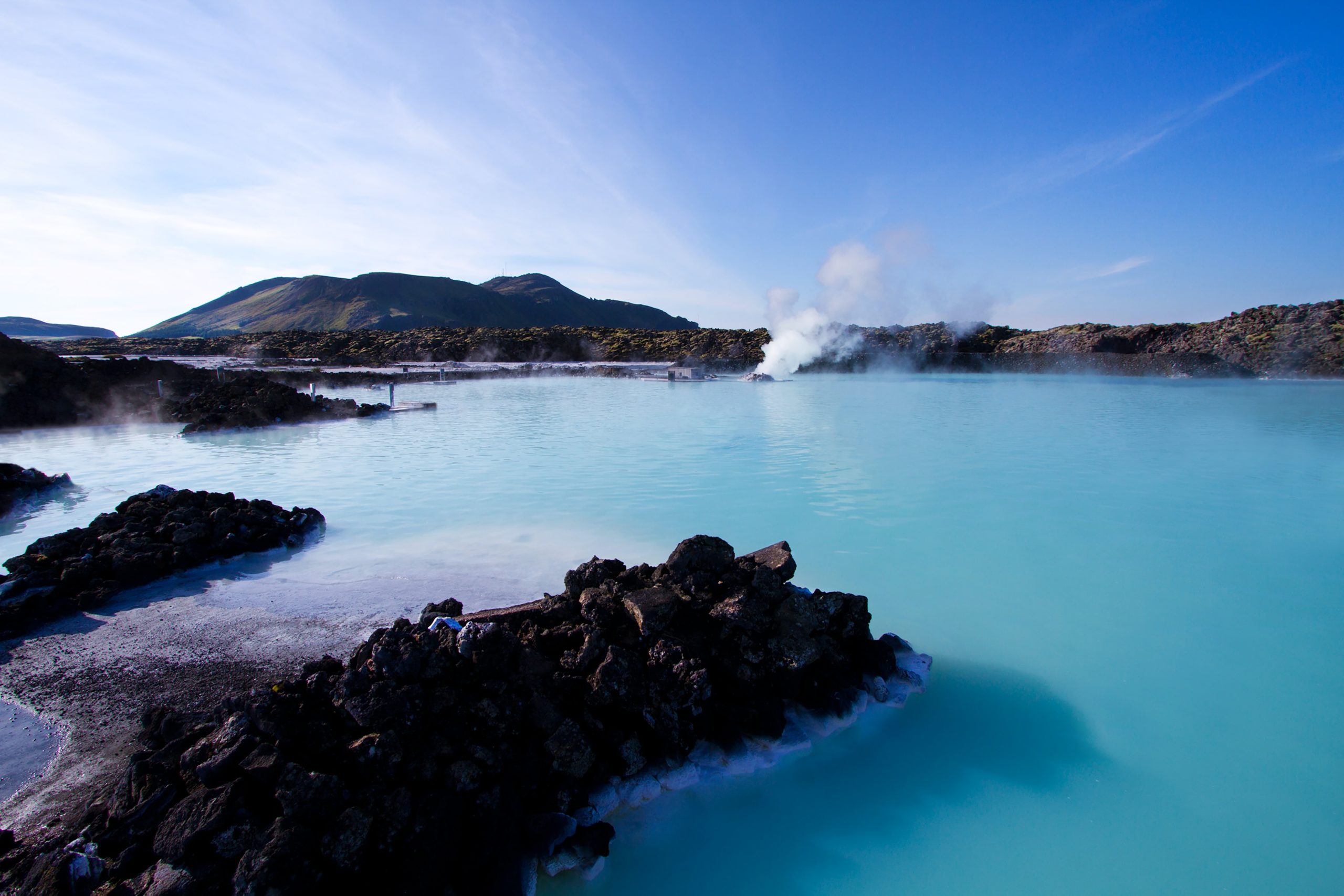
After a hard day’s adventuring, there is no better way to unwind than with a visit to one of Iceland’s many luxury spas. With their tantalising geothermal tubs, on-site saunas and steam rooms, Iceland lives up to its reputation as a country well-trained in the arts of relaxation and personal health.
While the Reykjanes Peninsula’s Blue Lagoon might be the most famous of Iceland’s geothermal spas, countless other worthy counterparts are found countrywide, including Krauma, Vok, Laugarvatn Fontana, Myvatn Nature Baths and the Secret Lagoon.
One of the greatest pleasures summer offers is the chance to get to know Iceland’s capital city, Reykjavik. It is effortless to find yourself paralysed with appreciation when strolling around the capital’s streets, forced to stop every few minutes or so to look upon a new statue, park or church.
Of course, one should aim to see Reykjavik’s most beloved landmarks, including the unique, stepping-stone steeple of Hallgrimskirkja Lutheran Church, or the intrinsically designed glass architecture of Harpa Concert Hall.
Do Icelanders have any Midnight Sun traditions?
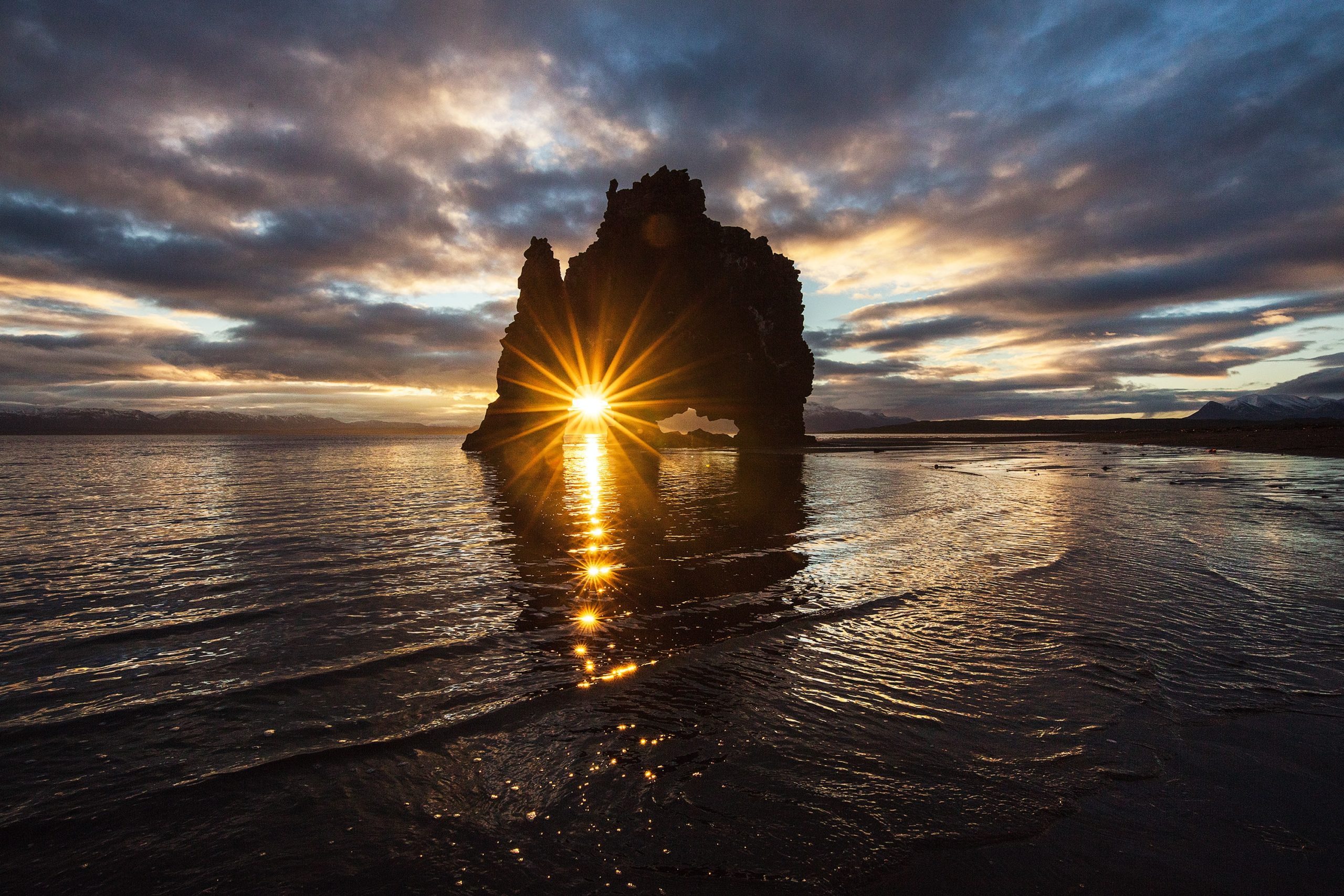
We have already mentioned that summer sees Iceland’s biggest festivals rolling into town. Still, there is one festive event, celebrated on June 24th each year, that is mainly linked to the Midnight Sun’s presence. Of course, we are talking about Jónsmessa, better known to English speakers as Midsummer’s Night.
Named after John the Baptist, this local take of a Christian holiday is typically Icelandic in so much as the event comes packaged with all sorts of strange folktales and goings-on. If the sagas are anything to go by, Jónsmessa will see Iceland’s seal colonies turn into humans, cows will gain the power of speech, and local people will roll themselves in dew-laden grass for the health benefits it provides.
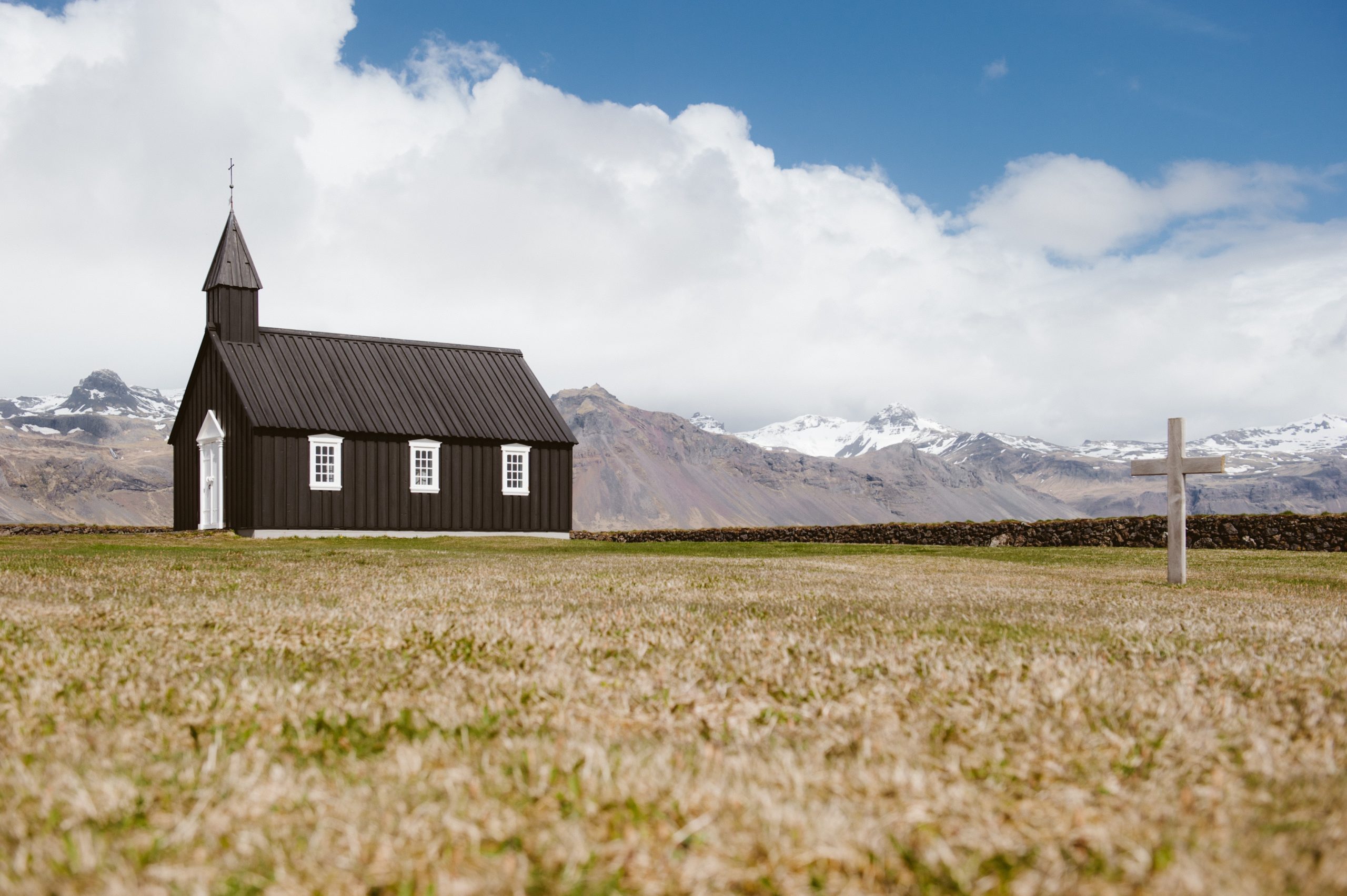
Circumstances get stranger still. Suppose you choose to take a seat at a four-way crossroads, with each leg heading towards different churches. In that case, you might encounter Iceland’s Huldufolk (“Hidden Folk”), better known as elves, who will attempt to lure you into the wilderness with food and treasures.
We would advise against sitting on the road at the best of times, but you want to avoid doing such a thing around mid-June especially.
In reality, Jónsmessa is not so much celebrated today as it is appreciated as a valuable part of Icelandic history. From a modern perspective, the strange, surreal imagery associated with the holiday might have something to do with the bounty of psychotropic mushrooms that sprout in Iceland during this time.
Historical records demonstrate that picking medicinal herbs was a tradition of Jonmessa, so this line of thinking might not be as far-fetched as you might at first believe.
How to sleep during the Midnight Sun in Iceland
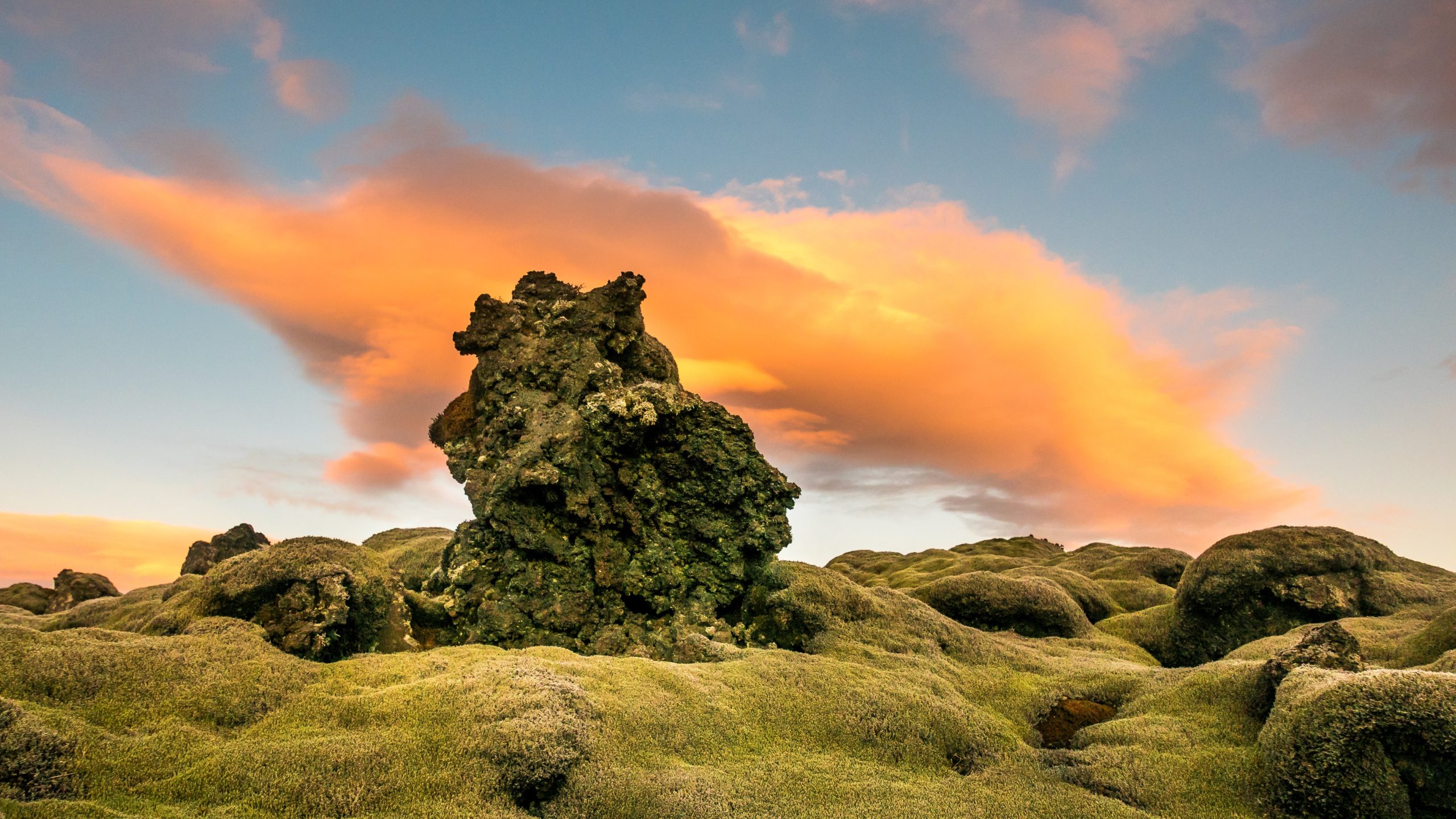
If you’re someone who has trouble drifting-off when it’s light outside, the Midnight Sun in Iceland can pose a problem. Then again, there are measures you can take to help ease you into a sound sleep.
The Midnight Sun can be an unwelcome presence when all you want is a little shut-eye, but there’s no reason to let it get in the way of feeling fresh throughout your trip.
Some locals have adopted using blackout curtains or boards to prevent any sunlight from entering their bedrooms. Such thinking goes a long way and is crucial to creating a dark, harmonious environment for yourself a couple of hours before deciding to sleep.
Much in the same vein, one easy way to ensure your rest is to pack a sleep mask. With one of these handy (dare we say, fashionable) nighttime essentials, you’ll be sure to recuperate your energy each evening, leaving you fresh to get out there and explore the next morning. Sleep masks can be brought from home, bought at the airport or in one of the many tourist shops that dot the capital.
If you’re someone who has trouble drifting-off when it’s light outside, there are measures you can take to help ease you into a sound sleep. Unfortunately, the Midnight Sun can be an unwelcome presence when all you want is a little shut-eye, but there’s no reason to let it get in the way of feeling fresh throughout your trip.
Some locals have adopted using blackout curtains or boards to prevent any sunlight from entering their bedrooms. Such thinking goes a long way and is crucial to creating a dark, harmonious environment for yourself a couple of hours before deciding to sleep.
Much in the same vein, one easy way to ensure your rest is to pack a sleep mask. With one of these handy (dare we say, fashionable) nighttime essentials, you’ll be sure to recuperate your energy each evening, leaving you fresh to get out there and explore the next morning. Sleep masks can be brought from home, bought at the airport or in one of the many tourist shops that dot the capital.
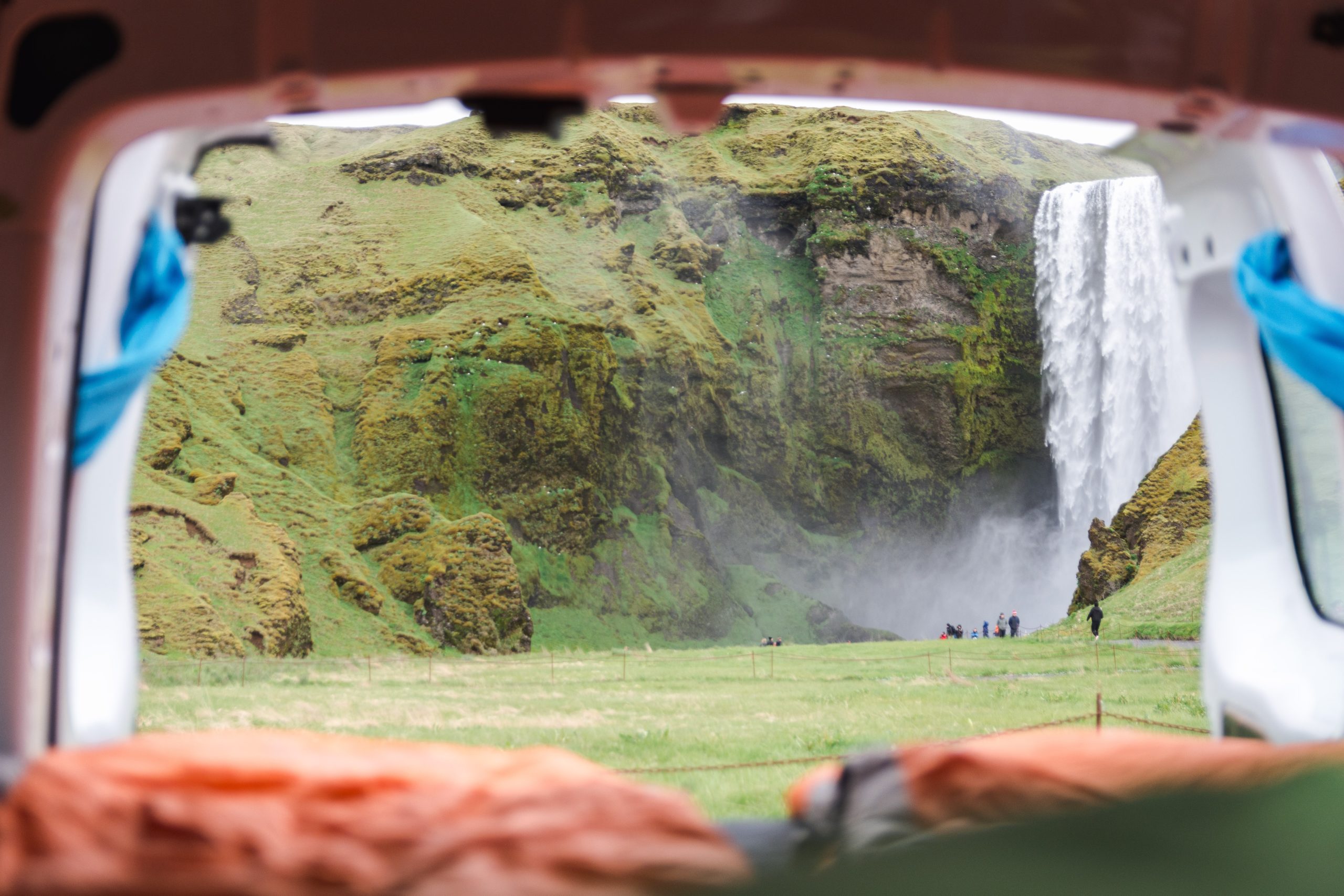
Another consequence of the Midnight Sun that might prevent you from sleeping is sunburn. Believe it or not, the summer sun in Iceland is very powerful and is more than capable of causing pain and discomfort to those who do not protect against it.
With that in mind, you should also not mistake the sun shining for it being warm outside, as this is not always the case here, even during the summer. Did we mention that Iceland’s weather is notoriously unpredictable?
Remember, extra sunlight brings extra energy with it, and it is not uncommon to feel somewhat out-of-step regarding when you wake and when you should sleep.
This feeling should be welcomed as an authentic part of the Icelandic experience, but it can certainly be a tad unsettling for some. If you are light-sensitive, we advise adorning a pair of sunglasses during the later parts of the day to negate the Midnight Sun’s hold over you.
Most visitors to Iceland welcome extra time awake, spending these newfound hours partying in downtown Reykjavik, enjoying late-night jacuzzi sessions or even out on the road, visiting side-attractions around the country.
How to photograph the Midnight Sun in Iceland
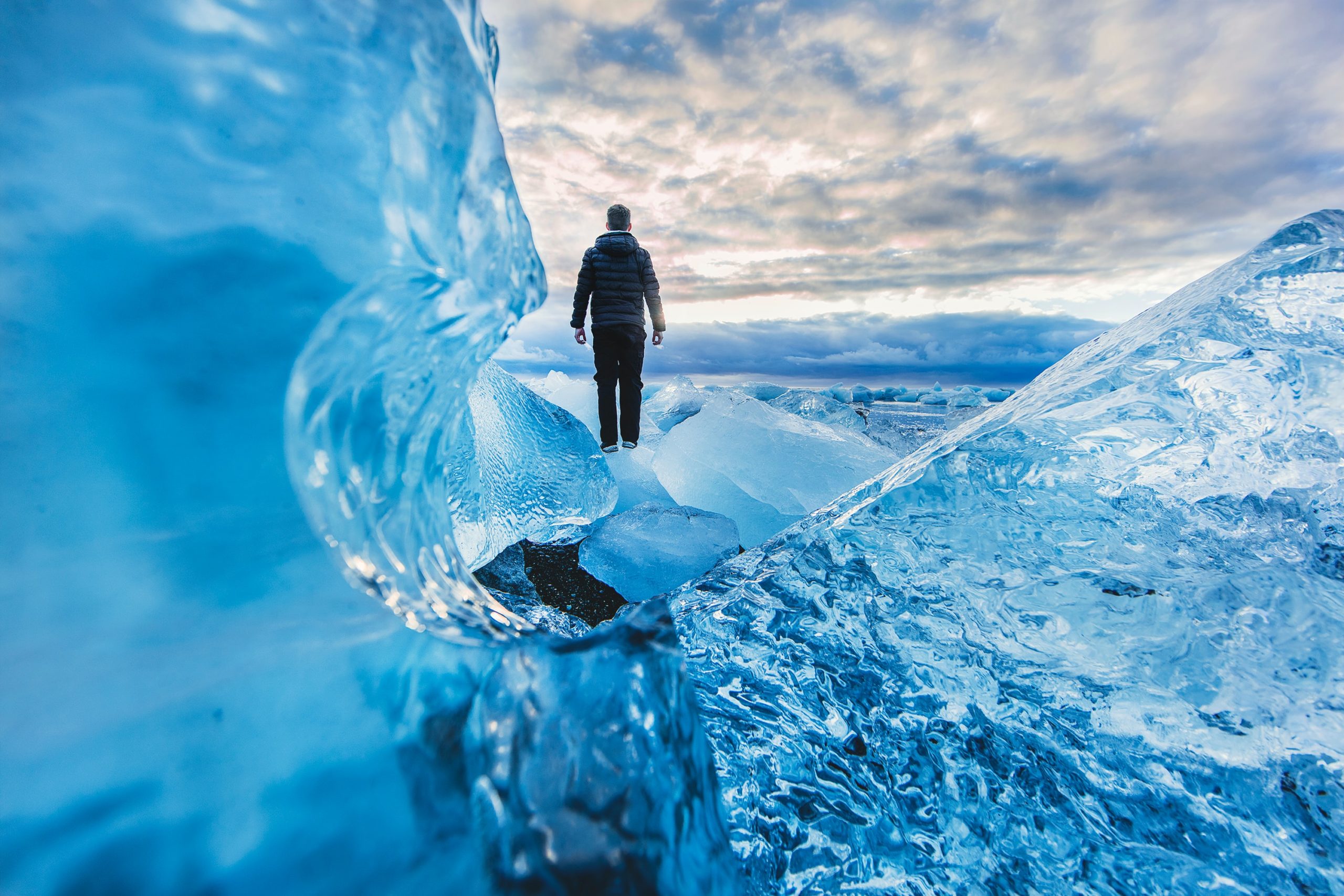
As with all exciting phenomena, it is natural to capture a photograph of the experience to cherish for years to come. The Midnight Sun in Iceland is, of course, no different.
Thankfully, landscape photographers are artists when it comes to using light to their advantage, and thus Iceland will serve as the perfect environment to showcase their talents.
Before setting out on your photographic expedition, make sure to research which sites you most wish to capture. If, for instance, you want pictures of Jökulsárlón, Vestrahorn mountain and Lake Mývatn, you will need to allow yourself plenty of time to travel the breadth of the country.
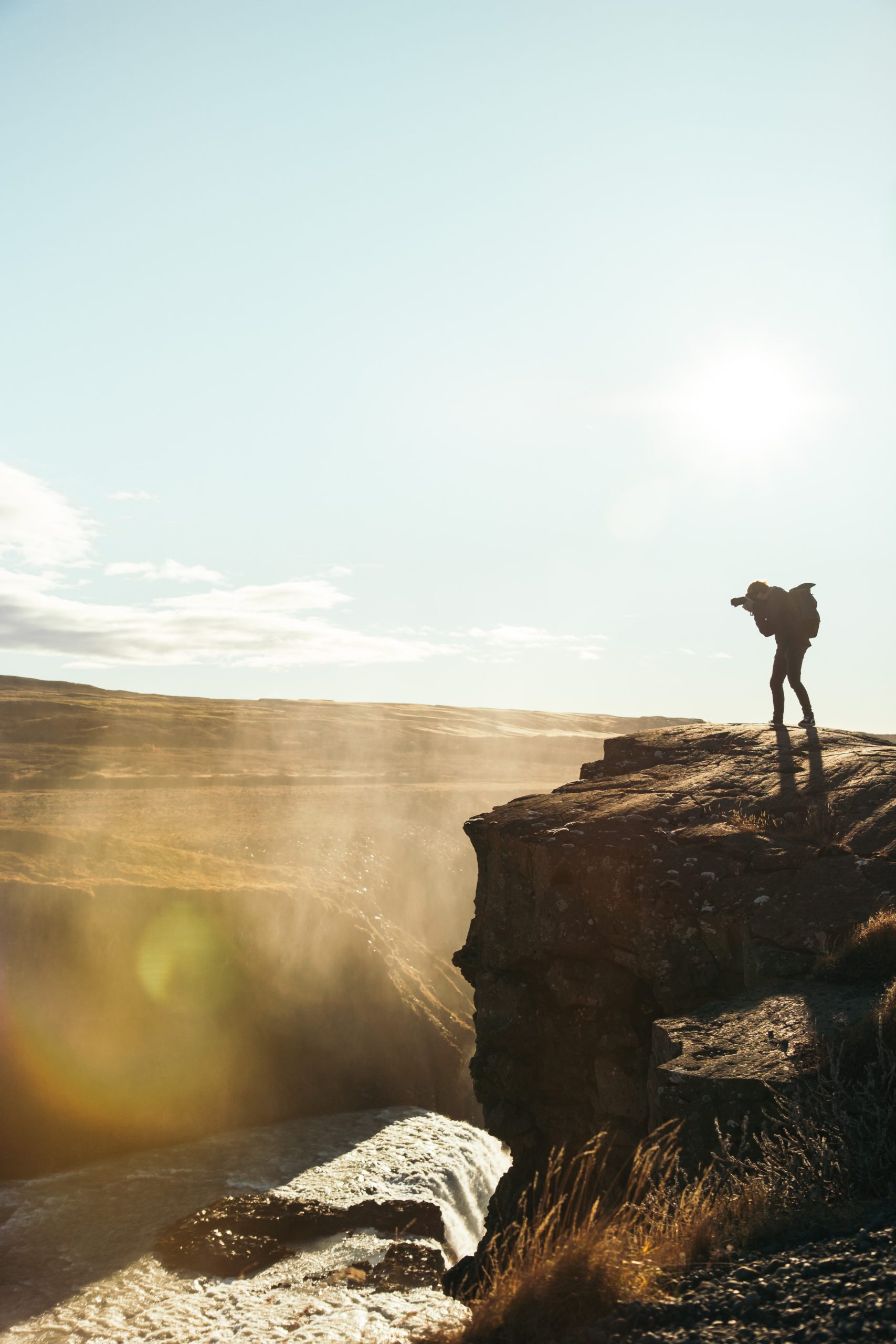
With careful planning, shutterbugs have the opportunity to photograph stunning attractions beneath the Midnight Sun in Iceland. More hours to play with means there is plenty of time to travel between waterfalls and black sand beaches and glaciers, making valuable contributions to the album as you do so.
When it comes to your camera settings, you will want to ensure your ISO is as low as possible, maintaining an aperture of f/7.1 to f/11. From there, you will need to experiment with the shutter speed to find the level of exposure for you, which can be challenging given the great contrasts you wish to harmonise.
A graduated ND filter can help with this tampering, and you will want to make sure your White Balance setting is marked ‘Daylight’.
The Midnight Sun in Iceland offers conditions that are nothing short of a photographer’s dream, and with careful planning, you can capture fantastic images here with ease.
Summary
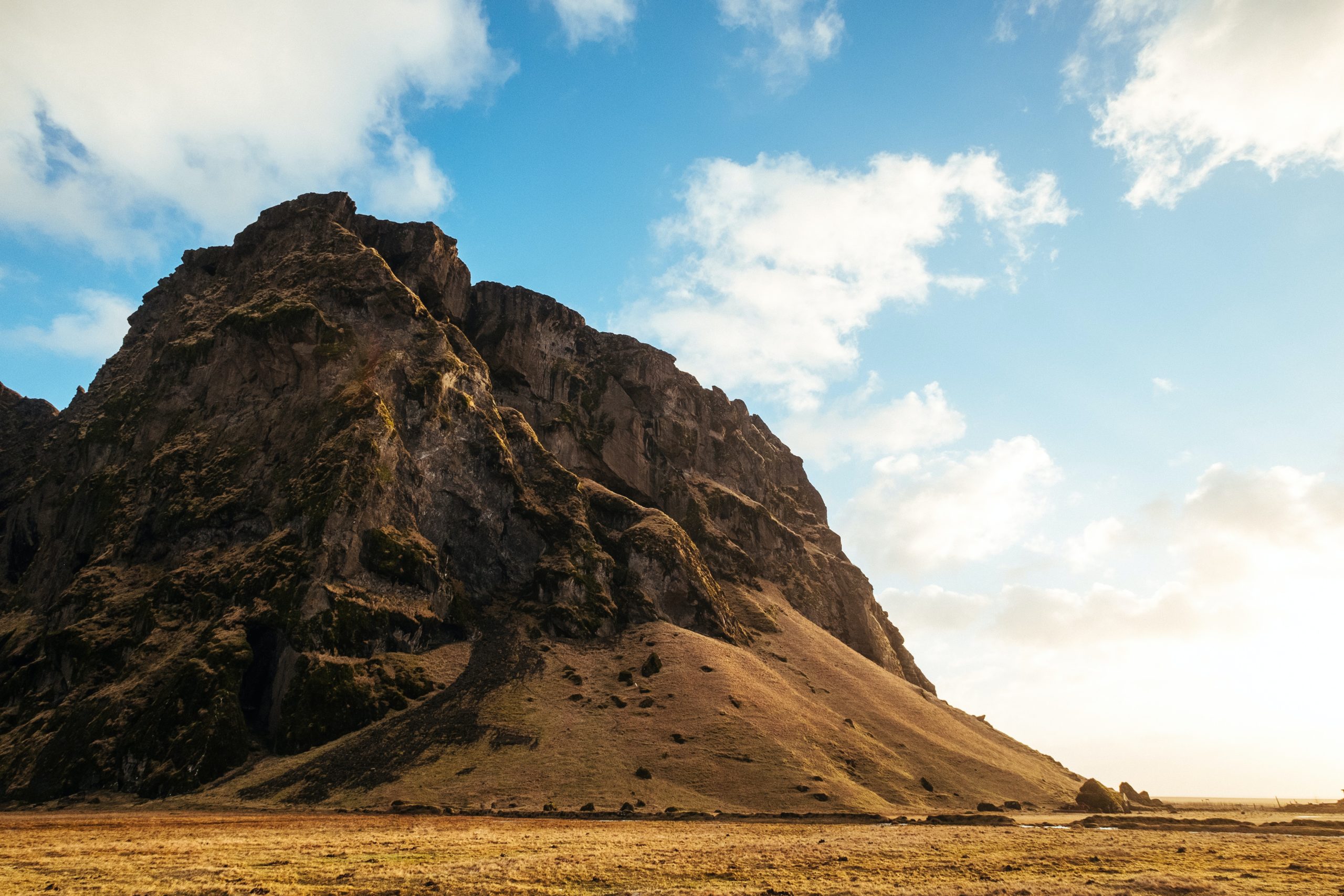
If you like the sound of a country bathed in eternal sunlight—a land of glaciers and deserts and volcanoes straight from a storybook—then Iceland in the summer is the perfect holiday destination for you. With trips booked between May and August, you will have a wealth of time in which to discover all this magical sub-arctic island has to offer.
PLAN YOUR JOURNEY
Travelling to Iceland?
Check our overnight tours with a driver guide that includes a one night stay in a bubble.
*Starting from ISK 59.900 per person
When can you see the beautiful Northern Lights in Iceland
When can you see the Northern Lights in Iceland?
By Michael Chapman
The Aurora Borealis remains among the top reasons to visit Iceland during winter.
Northern Lights season is between August and April in Iceland, co-aligned with the summer sun setting, and the incursion of long winter nights.
Guests will have a better chance of seeing the Northern Lights at their full potential deeper into the winter and should aim for visiting between September and March.
There are many reasons to choose Iceland for your Northern Lights experience, from our long nights to our wealth of dark and open spaces. Together, let us delve into the many reasons why experiencing the auroras in Iceland should be top of your bucket-list in 2021.
Northern Lights season is between August and April in Iceland, co-aligned with the summer sun setting, and the incursion of long winter nights.
Guests will have a better chance of seeing the Northern Lights at their full potential deeper into the winter and should aim for visiting between September and March.
There are many reasons to choose Iceland for your Northern Lights experience, from our long nights to our wealth of dark and open spaces. Together, let us delve into the many reasons why experiencing the auroras in Iceland should be top of your bucket-list in 2021.
What causes the Northern Lights?
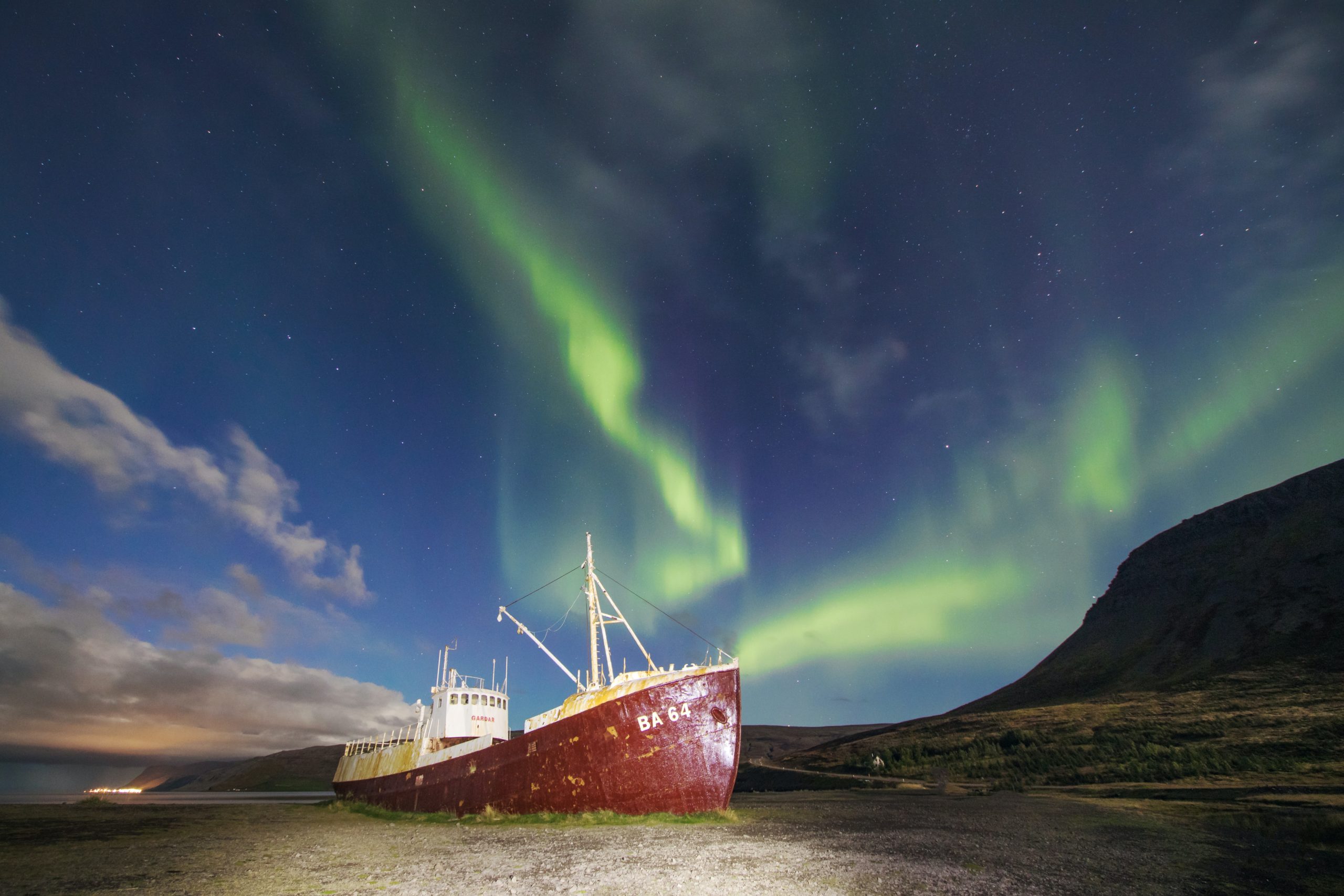
The Northern Lights result from a disturbed magnetosphere, a term which describes space around astronomical objects. When powerful solar winds buffer the magnetosphere, a tiny number of charged electrical particles enter the earth’s atmosphere at tremendous speed, clustering and concentrating at the North and South poles.
Due to their entry velocity, these particles will go through a process known as ionisation, which describes how an atom or molecule comes to be positively or negatively charged. As this change occurs, particles emit a plethora of colours (red, yellow, purple and green) which together make up the many shades of the Northern Lights.
Though you wouldn’t know it to look, the auroras are above us always, day-and-night, month-to-month; it is only we are incapable of seeing them unless conditions are just so.
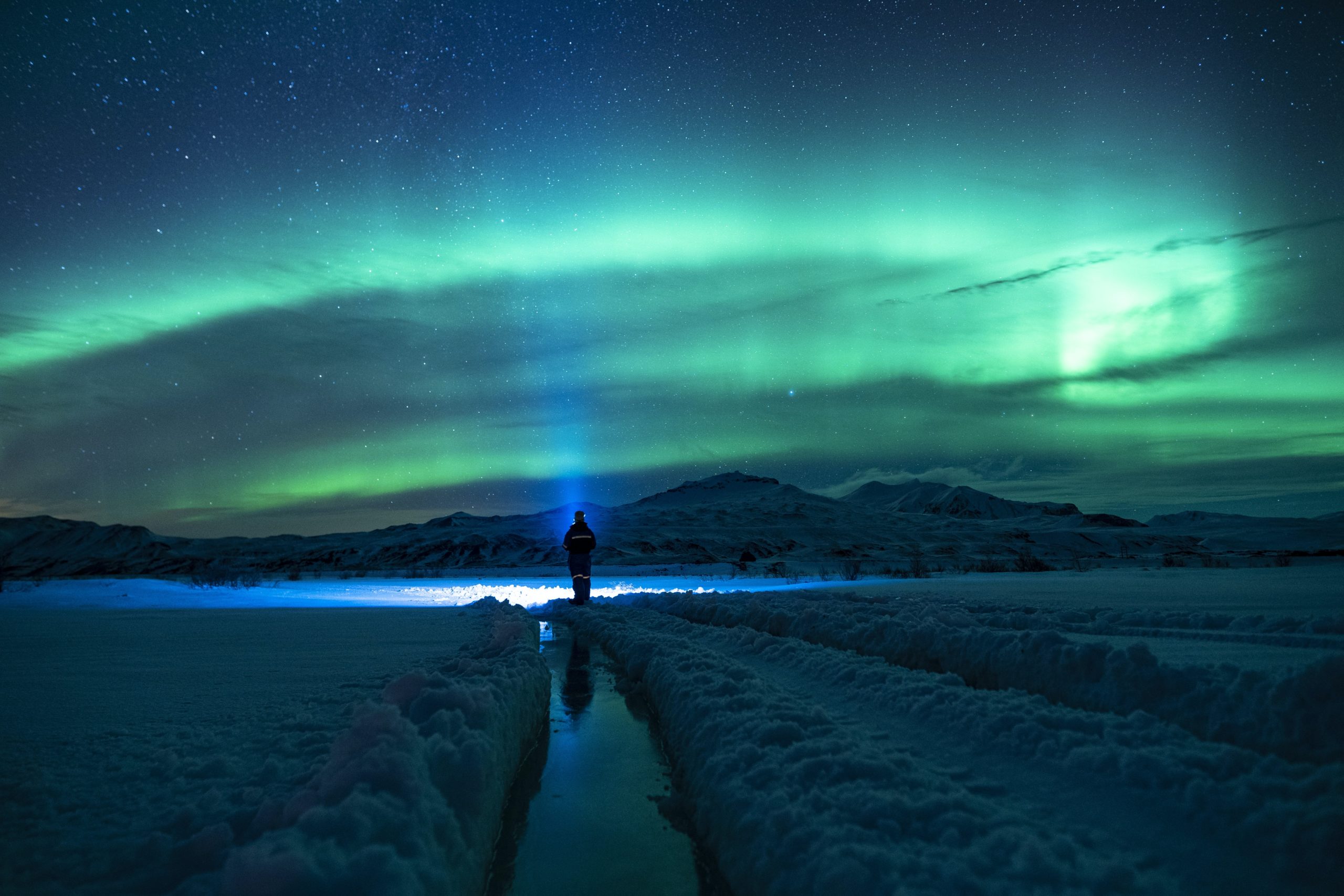
As mentioned, the auroras only appear in the Northern and Southern hemisphere, making their rare presence especially appealing for those living near the equator. Those in the south are the Aurora Australis, while those in the north are the Aurora Borealis.
There is no difference between the two phenomena save their location and fame; travellers can only see the Southern Lights from such remote areas that they are less widely spoken about than their northern cousins.
Without further ado, let’s take a look at the vital ingredients necessary to ensure you can witness the Northern Lights during your time in Iceland.
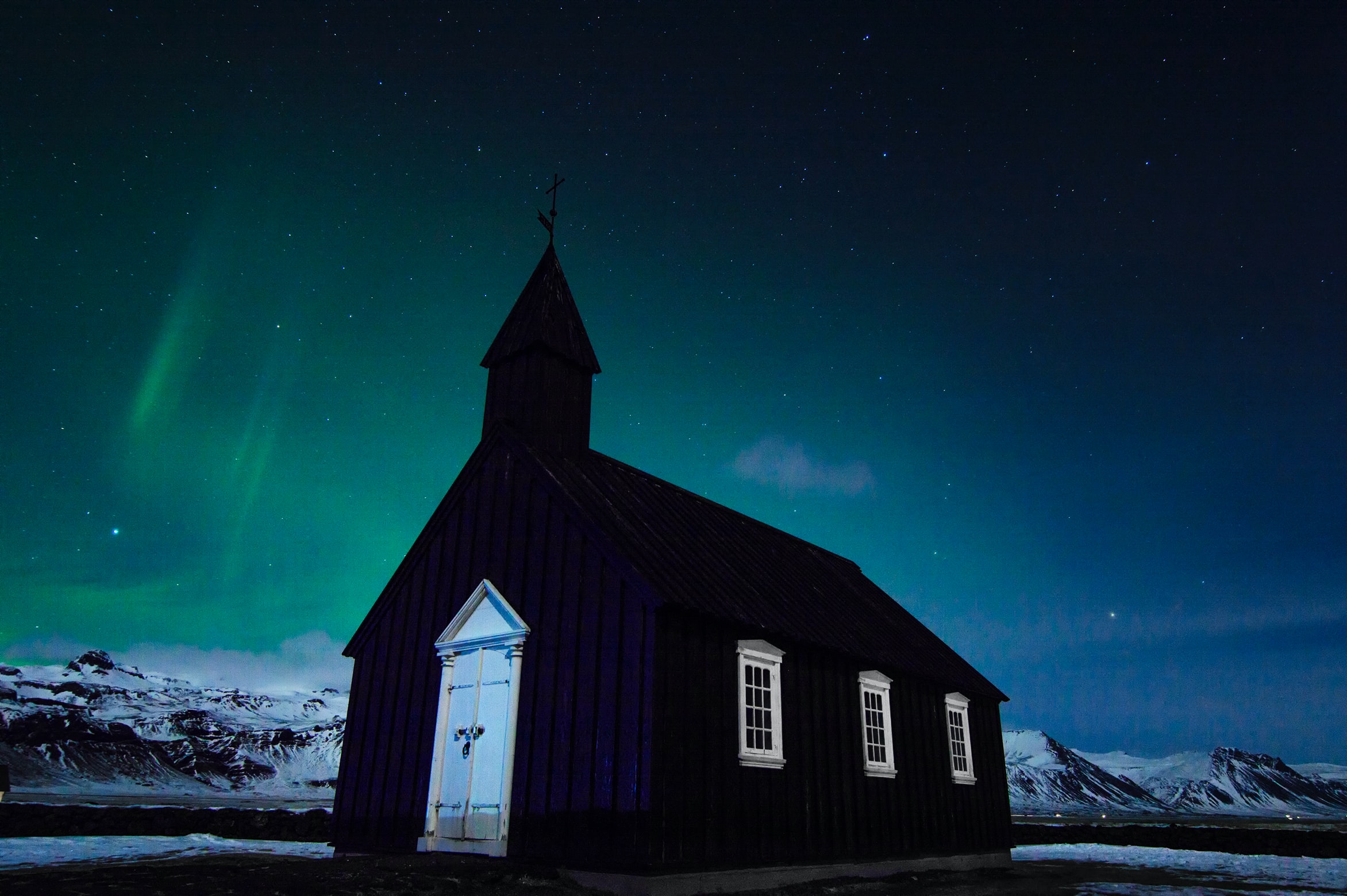
What causes the Northern Lights?

The Northern Lights result from a disturbed magnetosphere, a term which describes space around astronomical objects. When powerful solar winds buffer the magnetosphere, a tiny number of charged electrical particles enter the earth’s atmosphere at tremendous speed, clustering and concentrating at the North and South poles.
Due to their entry velocity, these particles will go through a process known as ionisation, which describes how an atom or molecule comes to be positively or negatively charged. As this change occurs, particles emit a plethora of colours (red, yellow, purple and green) which together make up the many shades of the Northern Lights.
Though you wouldn’t know it to look, the auroras are above us always, day-and-night, month-to-month; it is only we are incapable of seeing them unless conditions are just so.

As mentioned, the auroras only appear in the Northern and Southern hemisphere, making their rare presence especially appealing for those living near the equator. Those in the south are the Aurora Australis, while those in the north are the Aurora Borealis.
There is no difference between the two phenomena save their location and fame; travellers can only see the Southern Lights from such remote areas that they are less widely spoken about than their northern cousins.
Without further ado, let’s take a look at the vital ingredients necessary to ensure you can witness the Northern Lights during your time in Iceland.

What is needed to experience the Northern Lights in Iceland?
There are three significant prerequisites for catching the Northern Lights in Iceland. The first is clear and open skies, devoid of cloud cover or pesky light pollution. Northern Lights tend to form at higher altitudes than clouds, which means a blanket of grey overhead will stop your Northern Lights hunt dead in its tracks.
This brings us to our second requirement, total darkness, of which there is plenty to be found during the winter. If you escape from the city borders, you’ll find yourself quickly in Iceland’s wilderness, providing that perfect, untarnished black that is optimal for viewing the auroras. With it, you’ll have an excellent appreciation of just how nuanced the auroras’ colouring can be, including small pockets of grey and white.
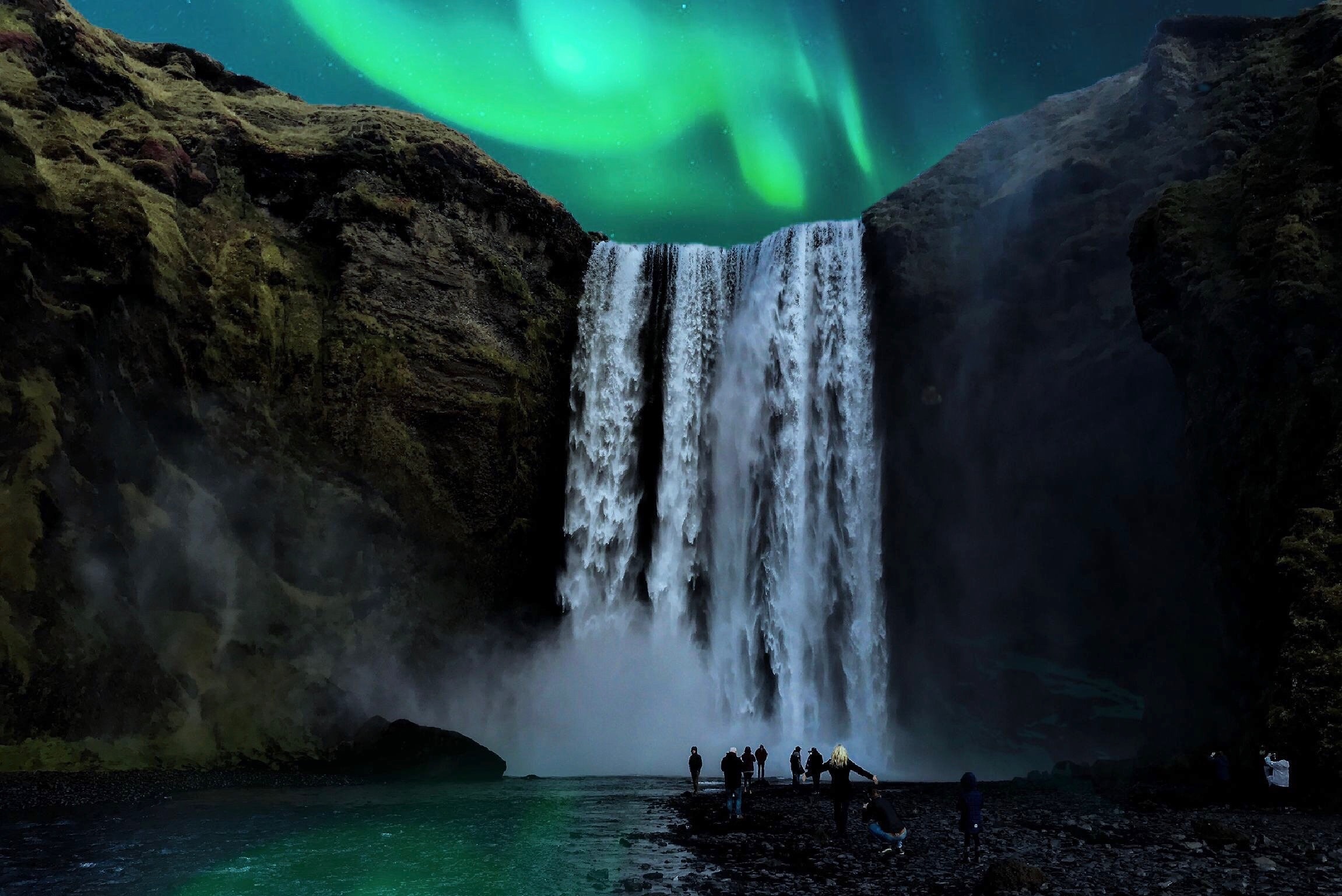
Finally, forecasters must predict high levels of solar activity on the night you hope to see the Northern Lights; otherwise, it is unlikely you’ll see anything but a blanket of stars above you. Before heading out, ensure you check the aurora forecasts predicted by the Icelandic Meteorological Office.
Bear in mind that even when each of these prerequisites are ticked off, there is no certainty the Northern Lights will appear where or when you want them too. While disappointing when it happens, it is their very elusiveness that has helped build such interest among travellers.
You might hear some misinformation during your travels that the Northern Lights are more likely to appear when the air temperature outside is colder. Such a claim is unequivocally false—except, of course, because their appearance is exclusive to the winter months—so don’t plan your excursion around what days are going to be warmer than others. Doing so will get you no closer to seeing the auroras.
What is needed to experience the Northern Lights in Iceland?
There are three significant prerequisites for catching the Northern Lights in Iceland. The first is clear and open skies, devoid of cloud cover or pesky light pollution. Northern Lights tend to form at higher altitudes than clouds, which means a blanket of grey overhead will stop your Northern Lights hunt dead in its tracks.
This brings us to our second requirement, total darkness, of which there is plenty to be found during the winter. If you escape from the city borders, you’ll find yourself quickly in Iceland’s wilderness, providing that perfect, untarnished black that is optimal for viewing the auroras. With it, you’ll have an excellent appreciation of just how nuanced the auroras’ colouring can be, including small pockets of grey and white.

Finally, forecasters must predict high levels of solar activity on the night you hope to see the Northern Lights; otherwise, it is unlikely you’ll see anything but a blanket of stars above you. Before heading out, ensure you check the aurora forecasts predicted by the Icelandic Meteorological Office.
Bear in mind that even when each of these prerequisites are ticked off, there is no certainty the Northern Lights will appear where or when you want them too. While disappointing when it happens, it is their very elusiveness that has helped build such interest among travellers.
You might hear some misinformation during your travels that the Northern Lights are more likely to appear when the air temperature outside is colder. Such a claim is unequivocally false—except, of course, because their appearance is exclusive to the winter months—so don’t plan your excursion around what days are going to be warmer than others. Doing so will get you no closer to seeing the auroras.
Top Locations in Iceland to Experience the Northern Lights
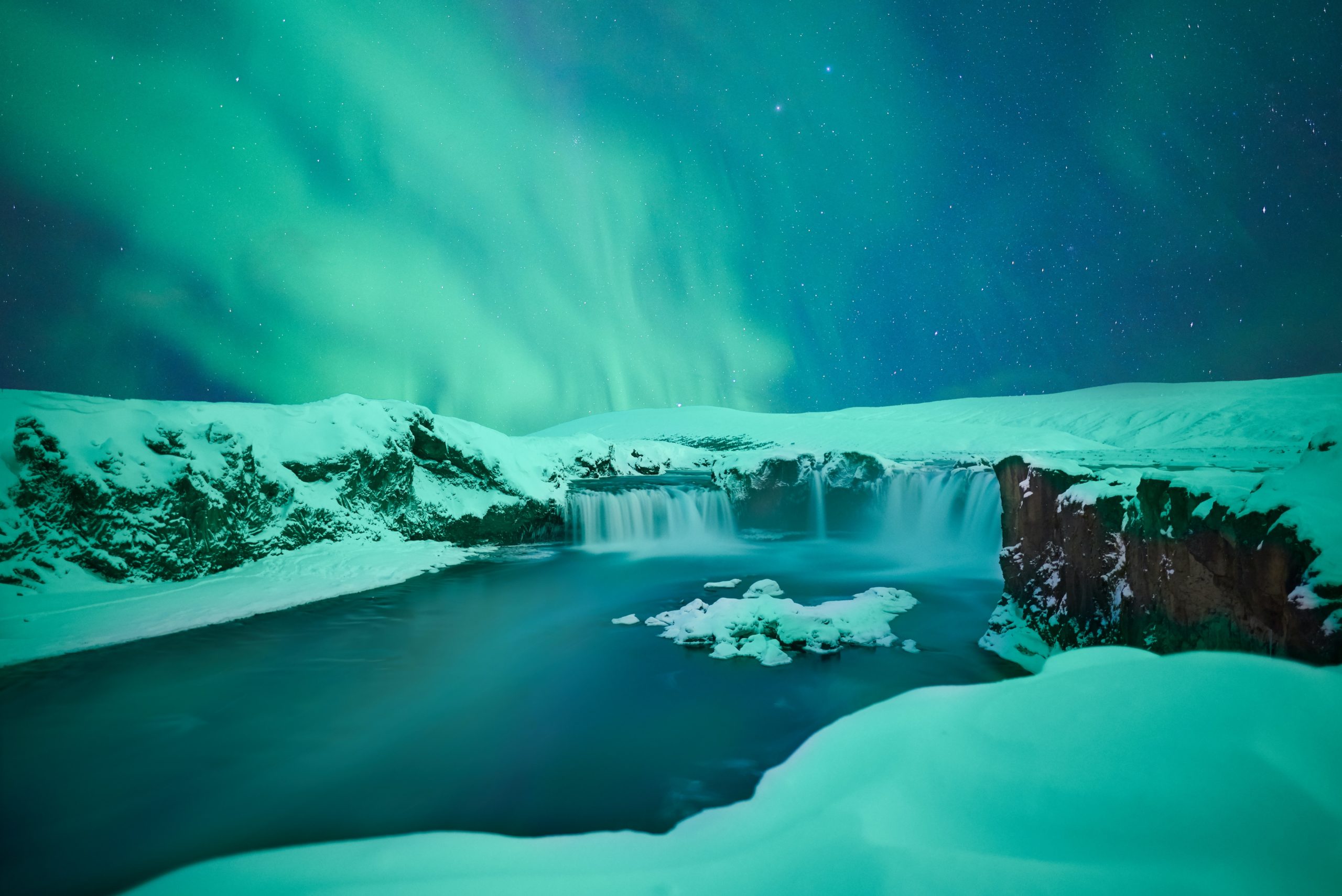
Iceland’s waterfalls, glacier lagoons, black sand beaches and lava fields all serve as fitting surroundings to look upon the Northern Lights. Photographers looking to capture stunning images of the Icelandic nature beneath the auroras will want to carefully research which locations they’ll want to spend the most time at so as not to miss their opportunity.
Exactly which location is best to see the Northern Lights in Iceland is more about personal preference than anything. Some will argue the iceberg dotted lagoon, Jökulsárlón, makes for the best setting, while others will swear by the stark fields of Lake Mývatn, or the windswept Dyrhólaey promenade or even Sólheimasandur plane wreck. What is clear is that wherever the Northern Lights appear, they compliment the Icelandic landscape no end.
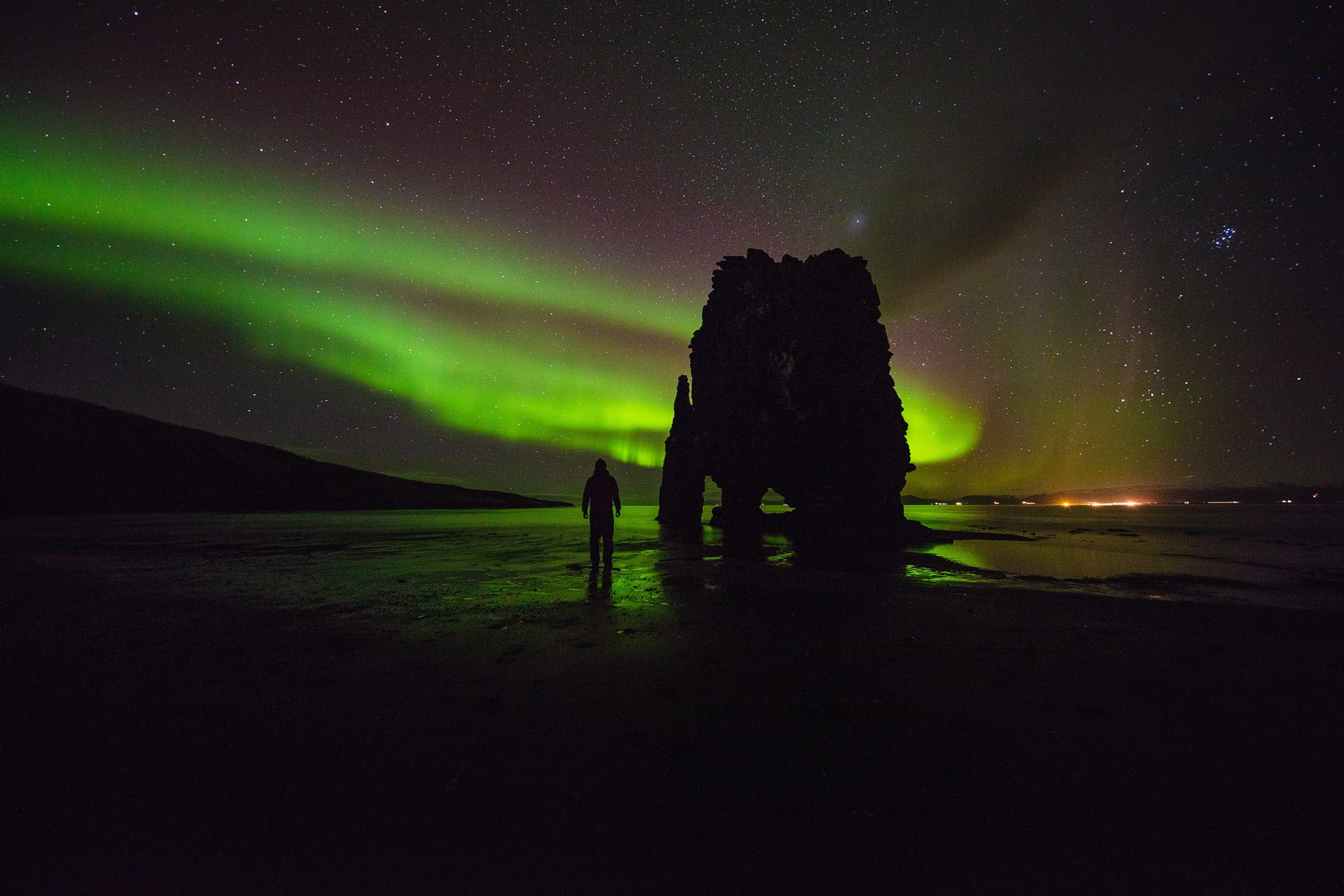
On average, the Northern Lights form around 100 kilometres above the earth’s surface, thus covering great swathes of the sky on appearance. This unpredictability can make knowing where to see the auroras a difficult task, and more often comes down to luck than research.
With that said, professional tour operators tend to know the country’s best spots to observe the lights at their fullest. If seeing the Northern Lights is something you feel you must do during your time in Iceland, booking a specially designed tour is your safest bet. Most times, your guides will take you out into the countryside in a 4×4 jeep, though there are also options to book Northern Lights cruises should that be preferable.
Top Locations in Iceland to Experience the Northern Lights

Iceland’s waterfalls, glacier lagoons, black sand beaches and lava fields all serve as fitting surroundings to look upon the Northern Lights. Photographers looking to capture stunning images of the Icelandic nature beneath the auroras will want to carefully research which locations they’ll want to spend the most time at so as not to miss their opportunity.
Exactly which location is best to see the Northern Lights in Iceland is more about personal preference than anything. Some will argue the iceberg dotted lagoon, Jökulsárlón, makes for the best setting, while others will swear by the stark fields of Lake Mývatn, or the windswept Dyrhólaey promenade or even Sólheimasandur plane wreck. What is clear is that wherever the Northern Lights appear, they compliment the Icelandic landscape no end.

On average, the Northern Lights form around 100 kilometres above the earth’s surface, thus covering great swathes of the sky on appearance. This unpredictability can make knowing where to see the auroras a difficult task, and more often comes down to luck than research.
With that said, professional tour operators tend to know the country’s best spots to observe the lights at their fullest. If seeing the Northern Lights is something you feel you must do during your time in Iceland, booking a specially designed tour is your safest bet. Most times, your guides will take you out into the countryside in a 4×4 jeep, though there are also options to book Northern Lights cruises should that be preferable.
Experience the Northern Lights in a Bubble hotel in Iceland
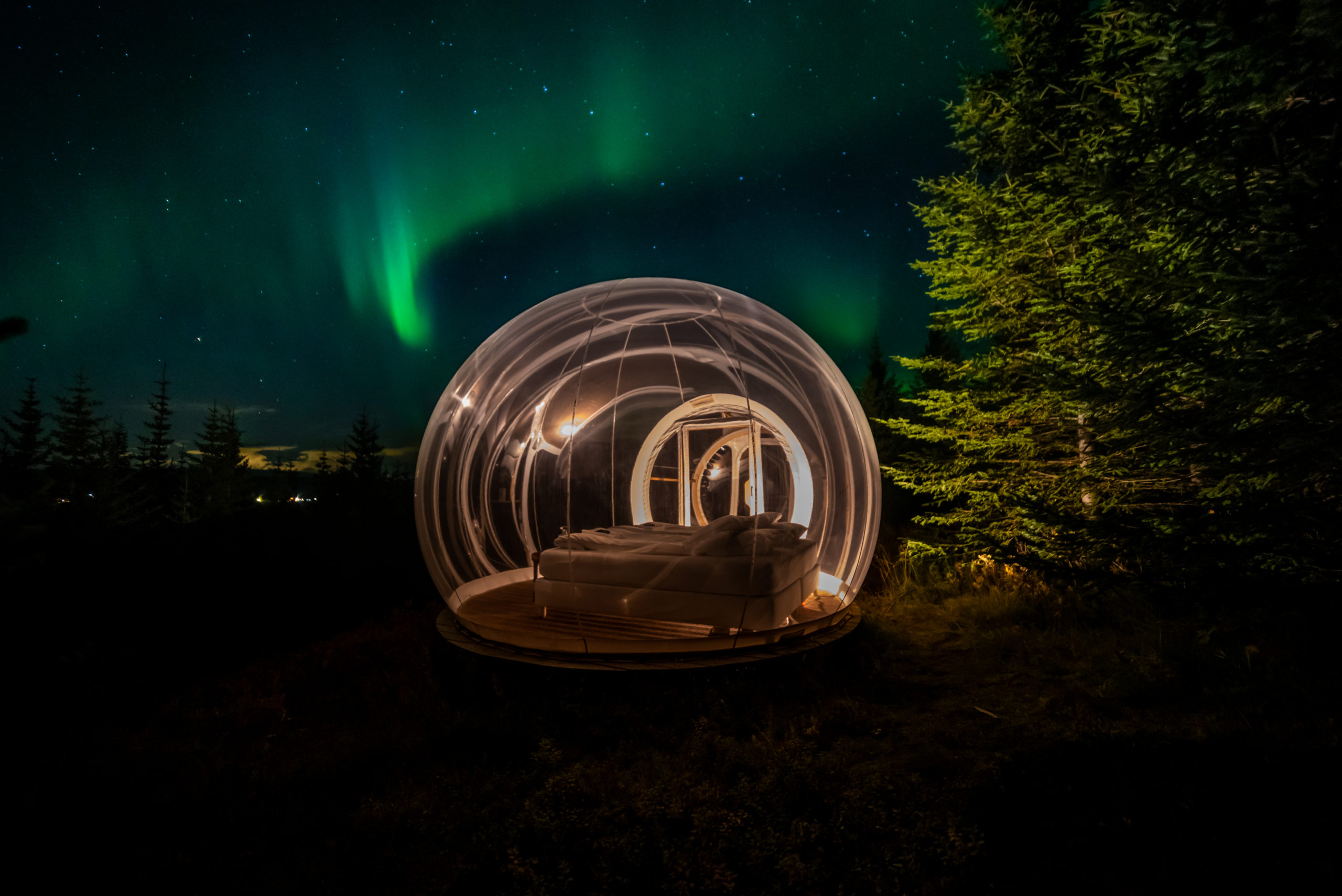
We would argue the best way to maximise the Northern Lights in Iceland is by choosing an overnight stay in one of our transparent bubbles. Designed to sleep two people, these cosy and unique spheres allow 360-degree views of both your surroundings and the sky, doubling up as your very own personal observatory.
Without worrying about the wind, cold, or having to get home on time, you are free to spend hour-upon-hour laying in bed looking up at the night sky. With all that time, you’ll feel less like you’re hunting the Northern Lights; more like you’re right there alongside them, an equal under the eyes of nature. In the meantime, you will have a full view of the cosmos, and it’s constellations and shooting stars.
Could a Northern Lights experience in Iceland get any better than this? Read more about Bubble hotels in Iceland on our informative FAQ page.
Experience the Northern Lights in a Bubble hotel in Iceland

We would argue the best way to maximise the Northern Lights in Iceland is by choosing an overnight stay in one of our transparent bubbles. Designed to sleep two people, these cosy and unique spheres allow 360-degree views of both your surroundings and the sky, doubling up as your very own personal observatory.
Without worrying about the wind, cold, or having to get home on time, you are free to spend hour-upon-hour laying in bed looking up at the night sky. With all that time, you’ll feel less like you’re hunting the Northern Lights; more like you’re right there alongside them, an equal under the eyes of nature. In the meantime, you will have a full view of the cosmos, and it’s constellations and shooting stars.
Could a Northern Lights experience in Iceland get any better than this? Read more about Bubble hotels in Iceland on our informative FAQ page.
How to Experience the Northern Lights in Reykjavik
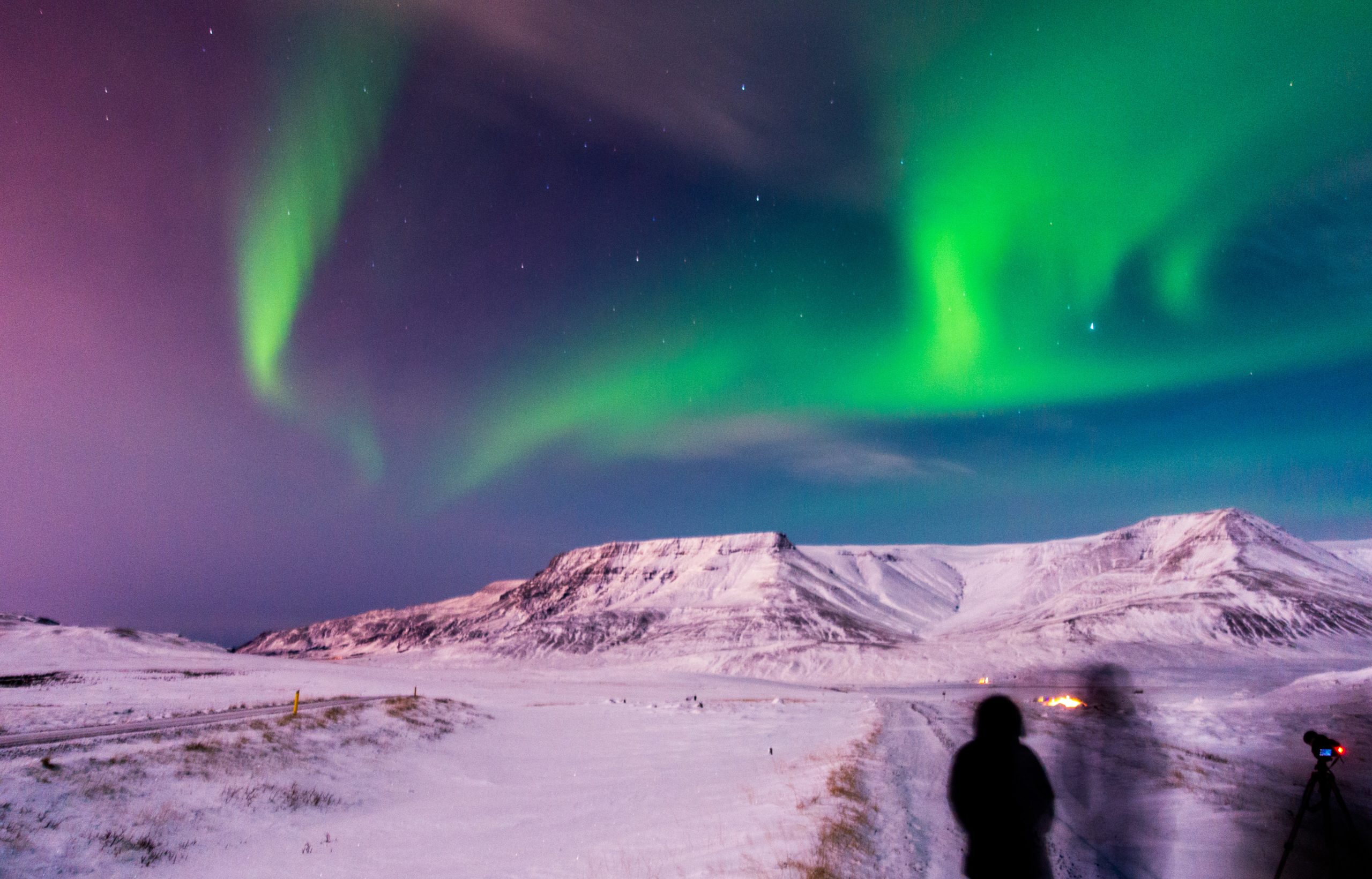
Yes, seeing the Northern Lights from Reykjavik is definitely a possibility. However, most advise against staying in the capital on account of the city lights. Light pollution can have a hugely adverse effect on the auroras’ vivacity, so it is always better to seek out far darker, more remote areas for your viewing pleasure.
Another issue with viewing the auroras from the city is that your view will likely be hampered by obtrusive buildings which can detract from the natural splendour above. Much better to find yourself somewhere wide and open, free of distractions and better-suited to viewing the night sky overall.
Nevertheless, there are a few places that can make for good Northern Lights viewing nearby to downtown. On the tip of the Seltjarnarnes Peninsula, Grótta lighthouse and nature reserve is widely known to be the go-to spot, offering a pitch-black coastline, and only minimal light pollution from nearby homes.
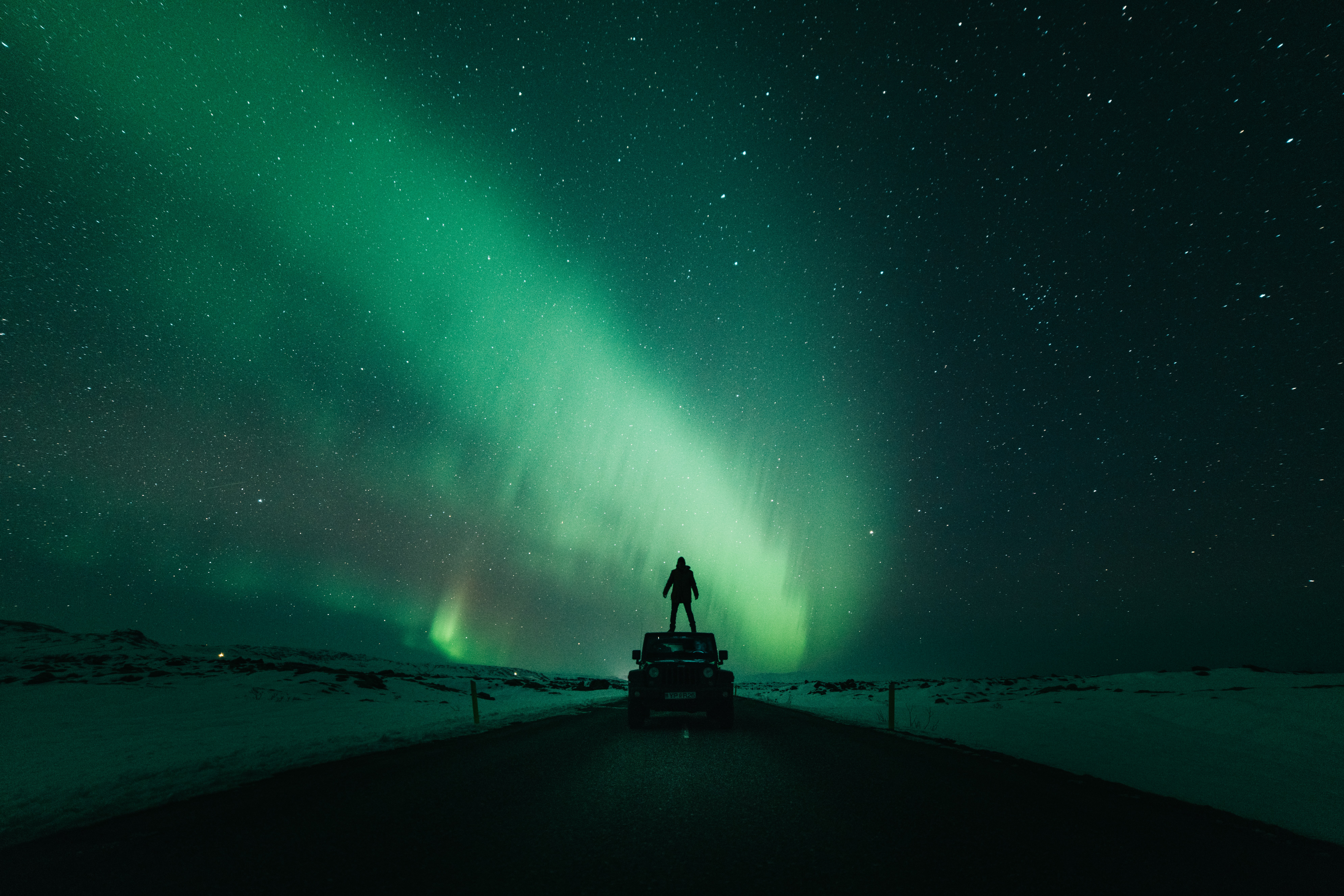
Another good location would be Heiðmörk conservation reserve, only six short miles from Reykjavik. Rich with vegetation and tree life, this gorgeous recreational area on the banks of Lake Elliðavatn provides enough distance from the city to see the Northern Lights without distraction.
If you happen to be unlucky during your visit, the Northern Lights may not appear at all. If this is the case, there are still a few places in the capital where you can get a sense of what this phenomenon is like.
Perlan Museum, for instance, is famed for its high-tech planetarium and Northern Lights in Iceland exhibition. At the same time, Aurora Reykjavík offers a range of art, information and theatre through its entertaining multimedia displays.
How to Experience the Northern Lights in Reykjavik

Yes, seeing the Northern Lights from Reykjavik is definitely a possibility. However, most advise against staying in the capital on account of the city lights. Light pollution can have a hugely adverse effect on the auroras’ vivacity, so it is always better to seek out far darker, more remote areas for your viewing pleasure.
Another issue with viewing the auroras from the city is that your view will likely be hampered by obtrusive buildings which can detract from the natural splendour above. Much better to find yourself somewhere wide and open, free of distractions and better-suited to viewing the night sky overall.
Nevertheless, there are a few places that can make for good Northern Lights viewing nearby to downtown. On the tip of the Seltjarnarnes Peninsula, Grótta lighthouse and nature reserve is widely known to be the go-to spot, offering a pitch-black coastline, and only minimal light pollution from nearby homes.

Another good location would be Heiðmörk conservation reserve, only six short miles from Reykjavik. Rich with vegetation and tree life, this gorgeous recreational area on the banks of Lake Elliðavatn provides enough distance from the city to see the Northern Lights without distraction.
If you happen to be unlucky during your visit, the Northern Lights may not appear at all. If this is the case, there are still a few places in the capital where you can get a sense of what this phenomenon is like.
Perlan Museum, for instance, is famed for its high-tech planetarium and Northern Lights in Iceland exhibition. At the same time, Aurora Reykjavík offers a range of art, information and theatre through its entertaining multimedia displays.
When should I hunt the auroras in Iceland?
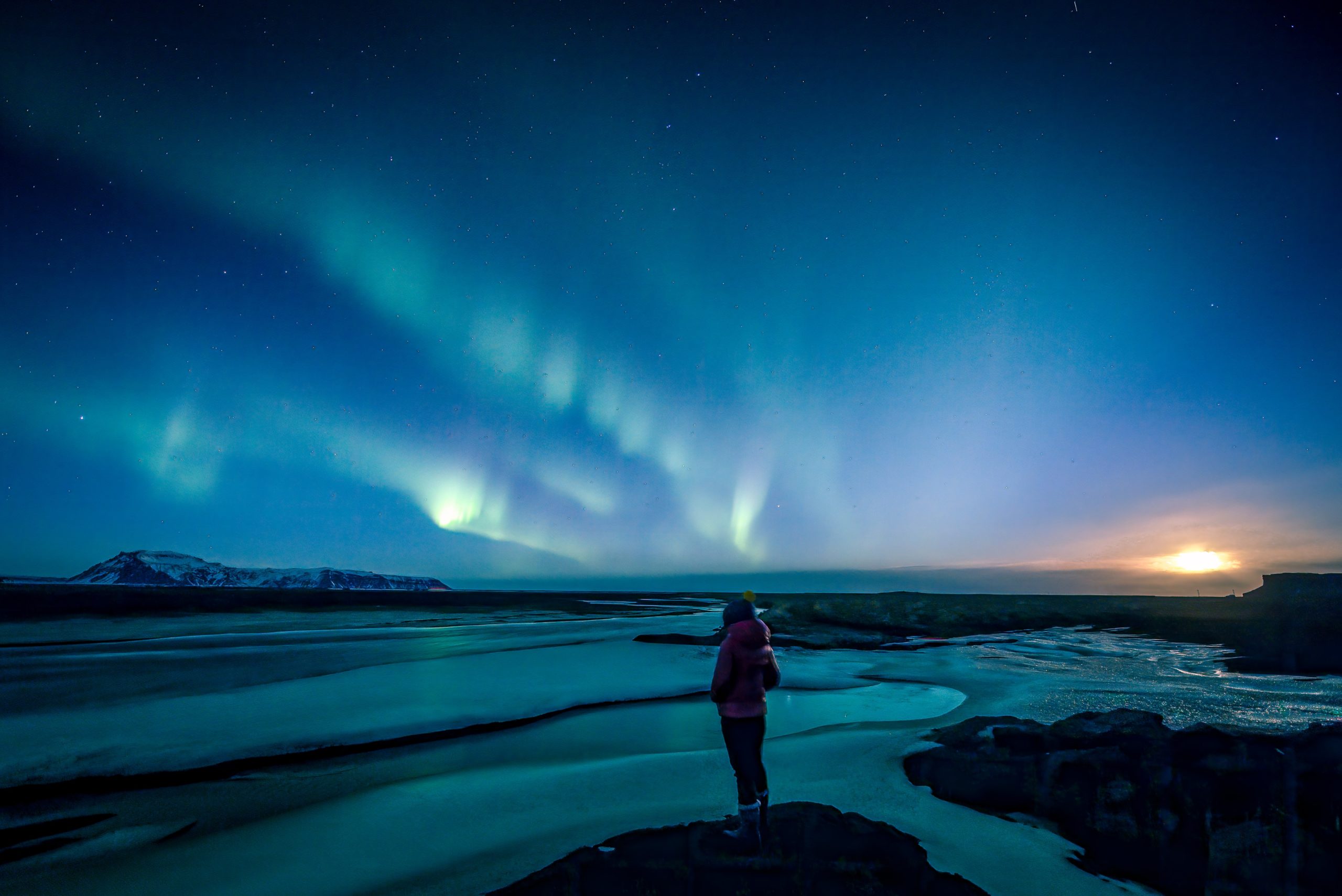
If you’re planning on hunting the Northern Lights in Iceland, leave in the early evening so you can arrive at the most-prized observation spots in good time. Between September and March, it is assured the darkness will have swept in by 6 PM, which leaves plenty of space for travelling to, and waiting for, the lights on site.
Given this window, it’s highly recommended you grab some food at one of Reykjavik’s many fine dining establishments before venturing out, not only so that you’re well-fed during the experience, but also to provide the perfect social opening to your Northern Lights adventure.
When should I hunt the auroras in Iceland?

If you’re planning on hunting the Northern Lights in Iceland, leave in the early evening so you can arrive at the most-prized observation spots in good time. Between September and March, it is assured the darkness will have swept in by 6 PM, which leaves plenty of space for travelling to, and waiting for, the lights on site.
Given this window, it’s highly recommended you grab some food at one of Reykjavik’s many fine dining establishments before venturing out, not only so that you’re well-fed during the experience, but also to provide the perfect social opening to your Northern Lights adventure.
Other useful tips about the Northern Lights in Iceland
There are a few other useful tips to keep in mind when hunting the Northern Lights in Iceland, the most important of which is to try and book your excursion as early into your holiday as possible. This way, you will have more opportunity to spot them as your time in Iceland progresses, and may even be able to jump on a rescheduled tour.
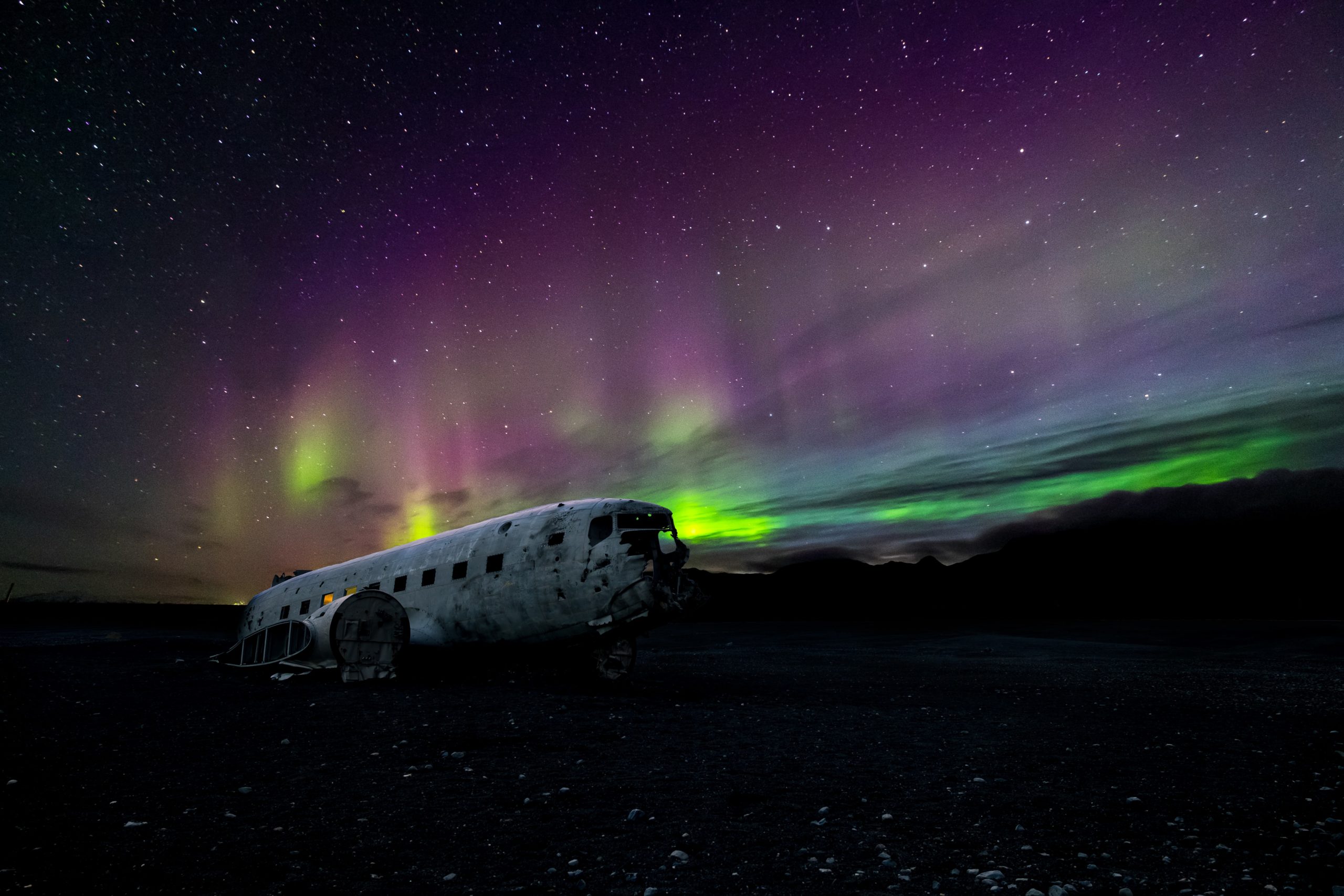
Another handy tip is to make sure you avoid any dates where a full moon is present in the sky. This is a bit of a contentious issue, as photographers find capturing an image of both the moon and Northern Lights appealing, and many will argue that the risks are overblown. While you might think it picturesque, the moon’s brightness can go a long way in diluting the intensity of the auroras, sapping the experience of its true potential. Don’t say you weren’t warned!
When it comes to dressing yourself, you’ll want to make sure you’re wearing several thermal layers to protect from the cold. A waterproof and windproof jacket is always a good idea, as are sturdy hiking boots capable of traversing rough terrain (—after all, who knows which patch of darkness you’ll choose to visit?). Gloves, scarves and hats are necessary for winter, so should not be forgotten before heading out into the wilderness at night.
Iceland is not the only country in the world where you can witness the auroras in action. The Northern Lights can be observed in North Canada and Alaska, as well as Norway, Finland, Sweden and Greenland. On the other hand, those fortunate enough to see them can observe the Southern Lights in Tasmania, New Zealand, Australia, Chile, and Argentina.
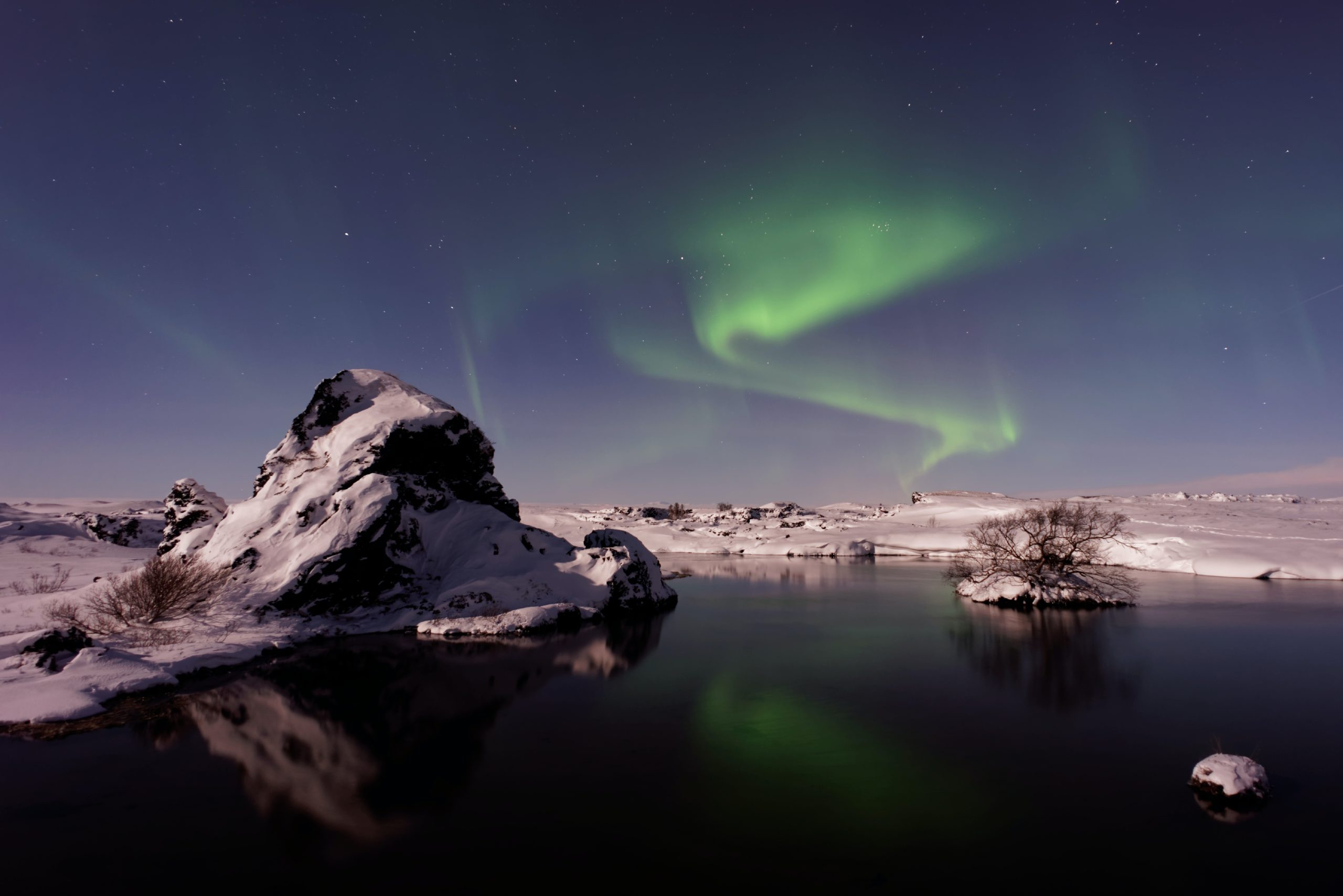
This tip is solely for loyal trivia fans. The Northern Lights’ scientific term is named after Aurora, the Roman Goddess of dawn, frost and dew, whereas the Greeks knew her as Eos. Borealis is the Greek term for the north wind. Whilst not a practical bit of information, per se, you’ll undoubtedly impress your travelling party with knowledgeable tidbits on the subject at hand.
In the absence of science, ancient people speculated the Northern Lights in Iceland were the glint that shone from the armour of mythic Valkyries, goddess-warriors who shepherded souls to Valhalla. There have been many other theories across the ages; Native Americans believed the lights to be a form of communication with the spirit ancestors, whereas the Finnish Sami believed they were the sparks created by snow foxes running across the landscape.
In short, experiencing the Northern Lights in Iceland is something that every traveller should aspire to. With their breathtaking ambience, vivid colourisation and lively disposition, the Aurora Borealis is a natural phenomenon with no rival, and as such, will long remain one of Iceland’s greatest pulls for visitors overseas.
Other useful tips about the Northern Lights in Iceland
There are a few other useful tips to keep in mind when hunting the Northern Lights in Iceland, the most important of which is to try and book your excursion as early into your holiday as possible. This way, you will have more opportunity to spot them as your time in Iceland progresses, and may even be able to jump on a rescheduled tour.

Another handy tip is to make sure you avoid any dates where a full moon is present in the sky. This is a bit of a contentious issue, as photographers find capturing an image of both the moon and Northern Lights appealing, and many will argue that the risks are overblown. While you might think it picturesque, the moon’s brightness can go a long way in diluting the intensity of the auroras, sapping the experience of its true potential. Don’t say you weren’t warned!
When it comes to dressing yourself, you’ll want to make sure you’re wearing several thermal layers to protect from the cold. A waterproof and windproof jacket is always a good idea, as are sturdy hiking boots capable of traversing rough terrain (—after all, who knows which patch of darkness you’ll choose to visit?). Gloves, scarves and hats are necessary for winter, so should not be forgotten before heading out into the wilderness at night.
Iceland is not the only country in the world where you can witness the auroras in action. The Northern Lights can be observed in North Canada and Alaska, as well as Norway, Finland, Sweden and Greenland. On the other hand, those fortunate enough to see them can observe the Southern Lights in Tasmania, New Zealand, Australia, Chile, and Argentina.

This tip is solely for loyal trivia fans. The Northern Lights’ scientific term is named after Aurora, the Roman Goddess of dawn, frost and dew, whereas the Greeks knew her as Eos. Borealis is the Greek term for the north wind. Whilst not a practical bit of information, per se, you’ll undoubtedly impress your travelling party with knowledgeable tidbits on the subject at hand.
In the absence of science, ancient people speculated the Northern Lights in Iceland were the glint that shone from the armour of mythic Valkyries, goddess-warriors who shepherded souls to Valhalla. There have been many other theories across the ages; Native Americans believed the lights to be a form of communication with the spirit ancestors, whereas the Finnish Sami believed they were the sparks created by snow foxes running across the landscape.
In short, experiencing the Northern Lights in Iceland is something that every traveller should aspire to. With their breathtaking ambience, vivid colourisation and lively disposition, the Aurora Borealis is a natural phenomenon with no rival, and as such, will long remain one of Iceland’s greatest pulls for visitors overseas.
Why travellers from the UK should visit Iceland first after the pandemic
Why travellers from the UK should visit Iceland first after the pandemic
By Michael Chapman
With its wide-open spaces and focus on health and well-being, Iceland is an oasis in a post-COVID-19 world.
Throughout the last year, we have seen the coronavirus pandemic drastically alter the world in which we live. Stuck in our homes like passengers waiting for a plane that never arrives, we have seen this terrible virus disregard global borders, ravaging wherever and whenever people tend to gather.
Staring at the same rooms, the same laptop-screen, the same people, we have become both nervous of the outside world, and deeply yearnful for it. For those in the UK and elsewhere, this position has proved uncomfortable; a waiting game to be endured, regardless of how long the road ahead might prove to be.
We here at Bubble hotel know all too well how many travellers were excited to visit Iceland in 2020, only to be disappointed when circumstances made such a trip impossible. Having not experienced Iceland so quiet and empty in many years, there is a growing feeling among those who live here that the sooner guests return, the better.
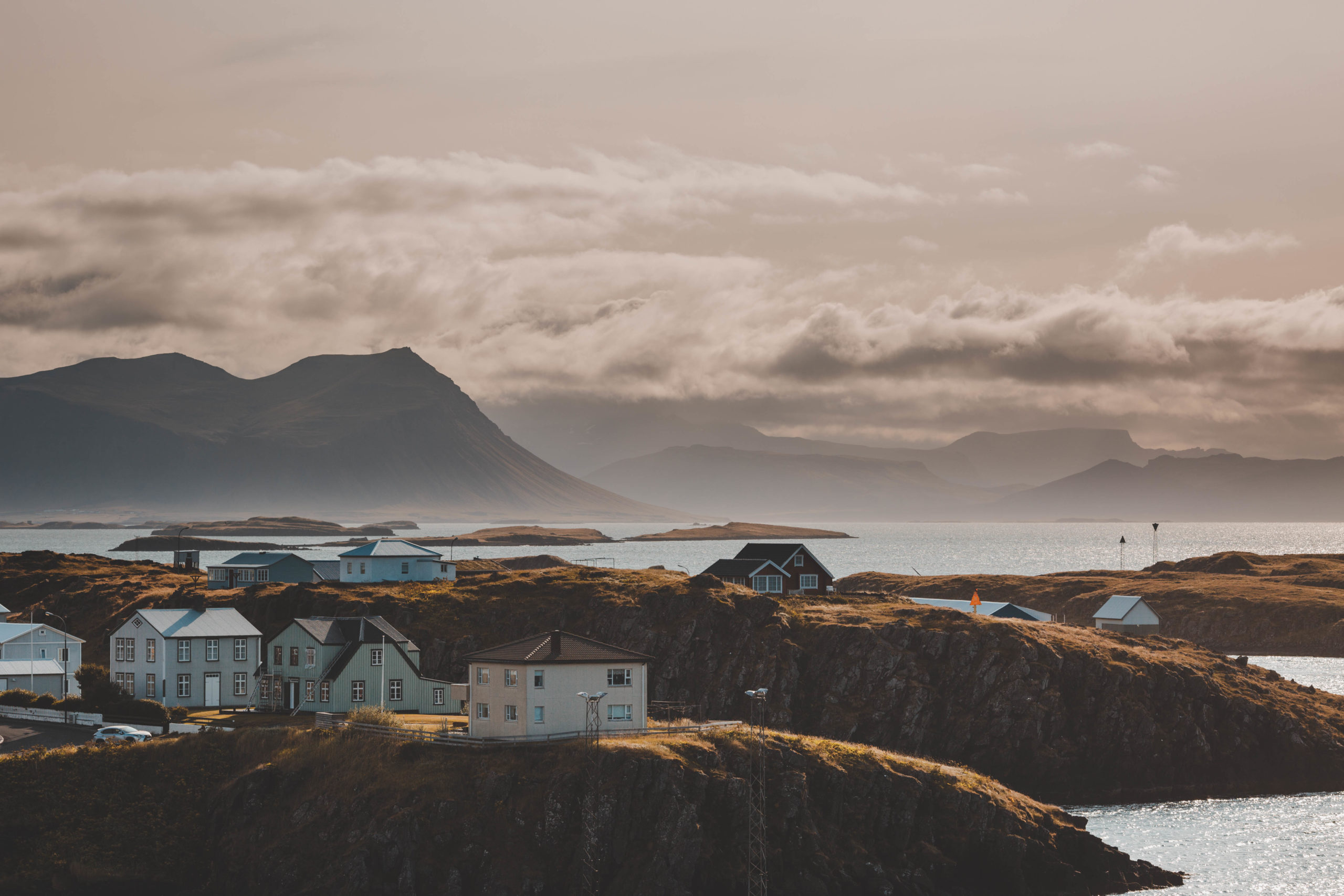
Fortunately, as we move into 2021, both Iceland and the UK are now underway rolling out the vaccine. Many predict the two nations will be among the first to achieve herd-immunity in Europe, though that has yet to be proven correct. While the situation may appear dire today, there is a genuine hope that a travel corridor will open between Iceland and the UK by mid-year.
Just like health officials and governments the world over, tourism agencies closely monitor the situation and are finally beginning to see signs of healing. In other words, those looking to reawaken their ambition to travel from the UK to Iceland would be well advised to start planning now. If that describes you, then rest assured, this is a good jumping-off point!
Throughout the last year, we have seen the coronavirus pandemic drastically alter the world in which we live. Stuck in our homes like passengers waiting for a plane that never arrives, we have seen this terrible virus disregard global borders, ravaging wherever and whenever people tend to gather.
Staring at the same rooms, the same laptop-screen, the same people, we have become both nervous of the outside world, and deeply yearnful for it. For those in the UK and elsewhere, this position has proved uncomfortable; a waiting game to be endured, regardless of how long the road ahead might prove to be.
We here at Bubble hotel know all too well how many travellers were excited to visit Iceland in 2020, only to be disappointed when circumstances made such a trip impossible. Having not experienced Iceland so quiet and empty in many years, there is a growing feeling among those who live here that the sooner guests return, the better.

Fortunately, as we move into 2021, both Iceland and the UK are now underway rolling out the vaccine. Many predict the two nations will be among the first to achieve herd-immunity in Europe, though that has yet to be proven correct. While the situation may appear dire today, there is a genuine hope that a travel corridor will open between Iceland and the UK by mid-year.
Just like health officials and governments the world over, tourism agencies closely monitor the situation and are finally beginning to see signs of healing. In other words, those looking to reawaken their ambition to travel from the UK to Iceland would be well advised to start planning now. If that describes you, then rest assured, this is a good jumping-off point!
Why visit Iceland from the UK?
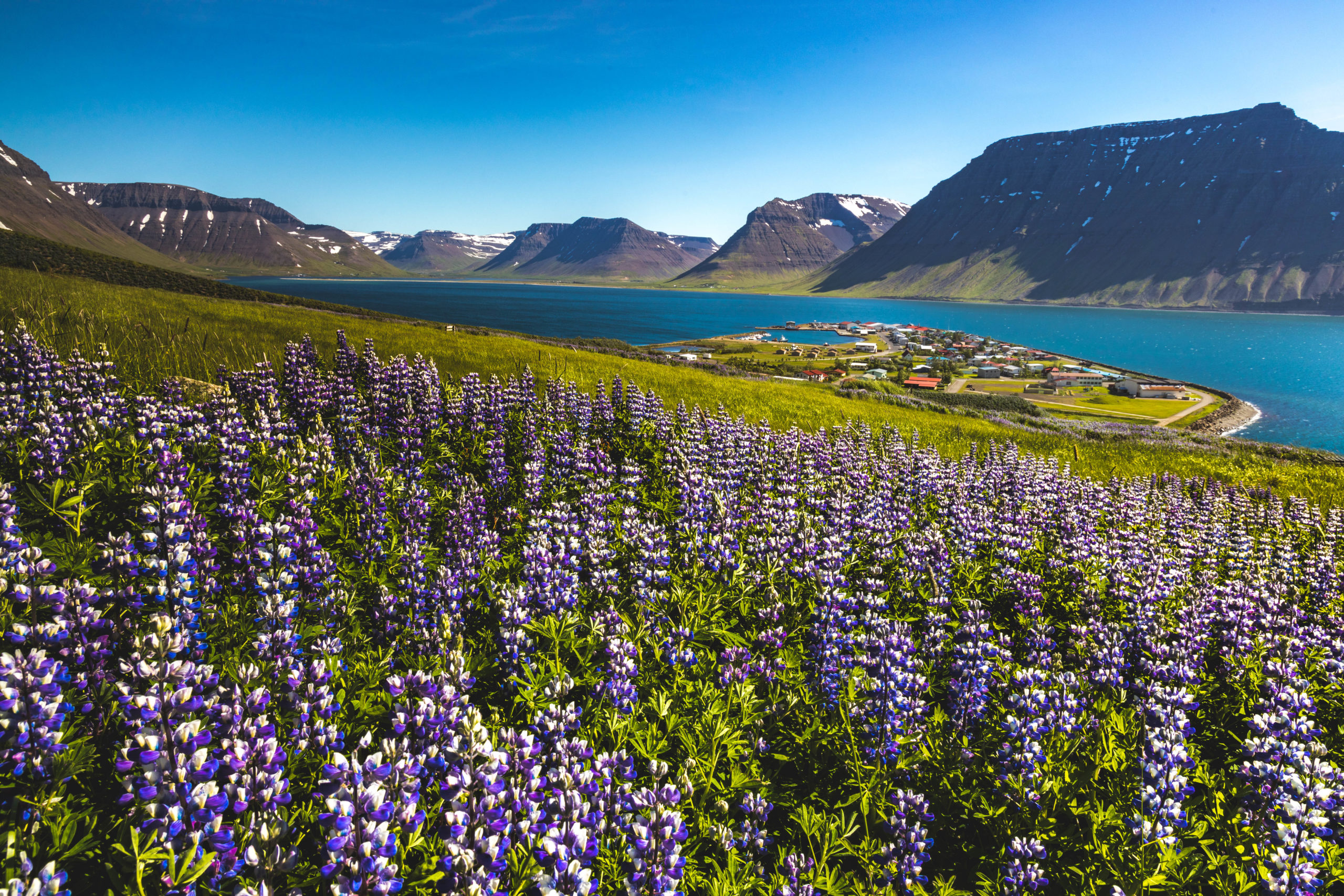
Those who have visited Iceland in previous years can attest to the beauty, adventure and local character of this soul-stirring place. With its advantageous location between North America and Europe, most people forget that Iceland is only 800 kilometres or so from Scotland. That’s closer than Scotland is to France by 400 kilometres, which should go some way putting into context just how adjacent our two islands are.
Such proximity has bred a neighbourly relationship between Iceland and the UK—save for the odd Cod War or two—and Icelanders are more than welcoming to their cousins from the West. 99% of the population speak near-perfect English, and many have ties to family in the UK or have even lived there for a time themselves.
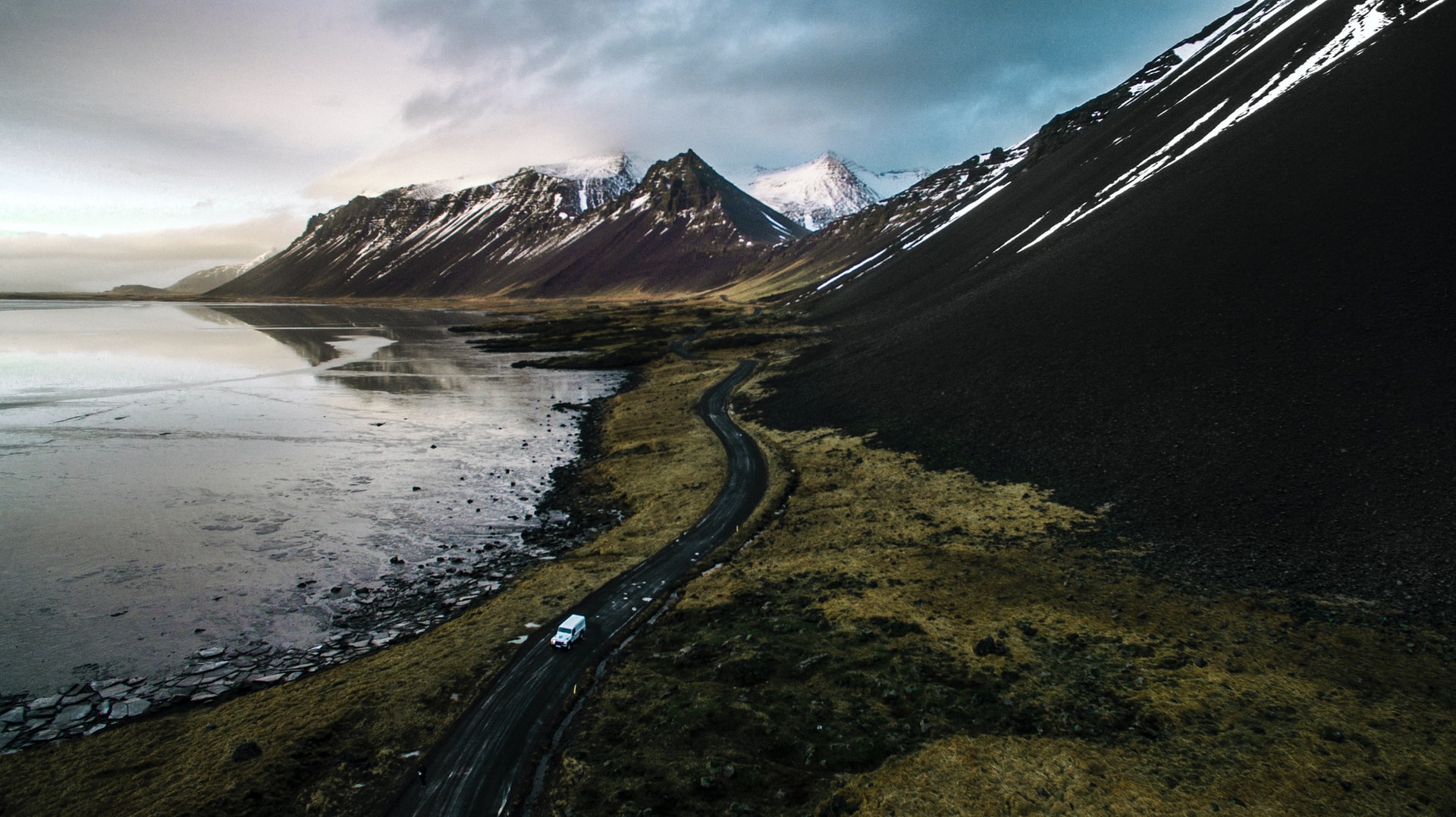
With a nickname like ‘the Land of Ice and Fire’, it’s no surprise that this is a highly diverse landscape of staggering appeal, offering UK travellers sub-arctic sights and experiences unique to this island. While Stevenage, or perhaps, Shropshire, are no doubt lovely in their way (—alright, not Stevenage), there is no matching the spectacle and drama the Icelandic landscape possesses.
In better times, visitors flocked here in their millions to look upon its awe-inspiring nature, its ethereal glacier lagoons, smokey mountain tops and remote coastal settlements. These allures have become more magnetic for those yet to visit, heightened over recent months, transforming from something people would like to see to something people need to see. In 2021, let us hope they get their chance.
Why visit Iceland from the UK?

Those who have visited Iceland in previous years can attest to the beauty, adventure and local character of this soul-stirring place. With its advantageous location between North America and Europe, most people forget that Iceland is only 800 kilometres or so from Scotland. That’s closer than Scotland is to France by 400 kilometres, which should go some way putting into context just how adjacent our two islands are.
Such proximity has bred a neighbourly relationship between Iceland and the UK—save for the odd Cod War or two—and Icelanders are more than welcoming to their cousins from the West. 99% of the population speak near-perfect English, and many have ties to family in the UK or have even lived there for a time themselves.

With a nickname like ‘the Land of Ice and Fire’, it’s no surprise that this is a highly diverse landscape of staggering appeal, offering UK travellers sub-arctic sights and experiences unique to this island. While Stevenage, or perhaps, Shropshire, are no doubt lovely in their way (—alright, not Stevenage), there is no matching the spectacle and drama the Icelandic landscape possesses.
In better times, visitors flocked here in their millions to look upon its awe-inspiring nature, its ethereal glacier lagoons, smokey mountain tops and remote coastal settlements. These allures have become more magnetic for those yet to visit, heightened over recent months, transforming from something people would like to see to something people need to see. In 2021, let us hope they get their chance.
Iceland has an absence of crowds.
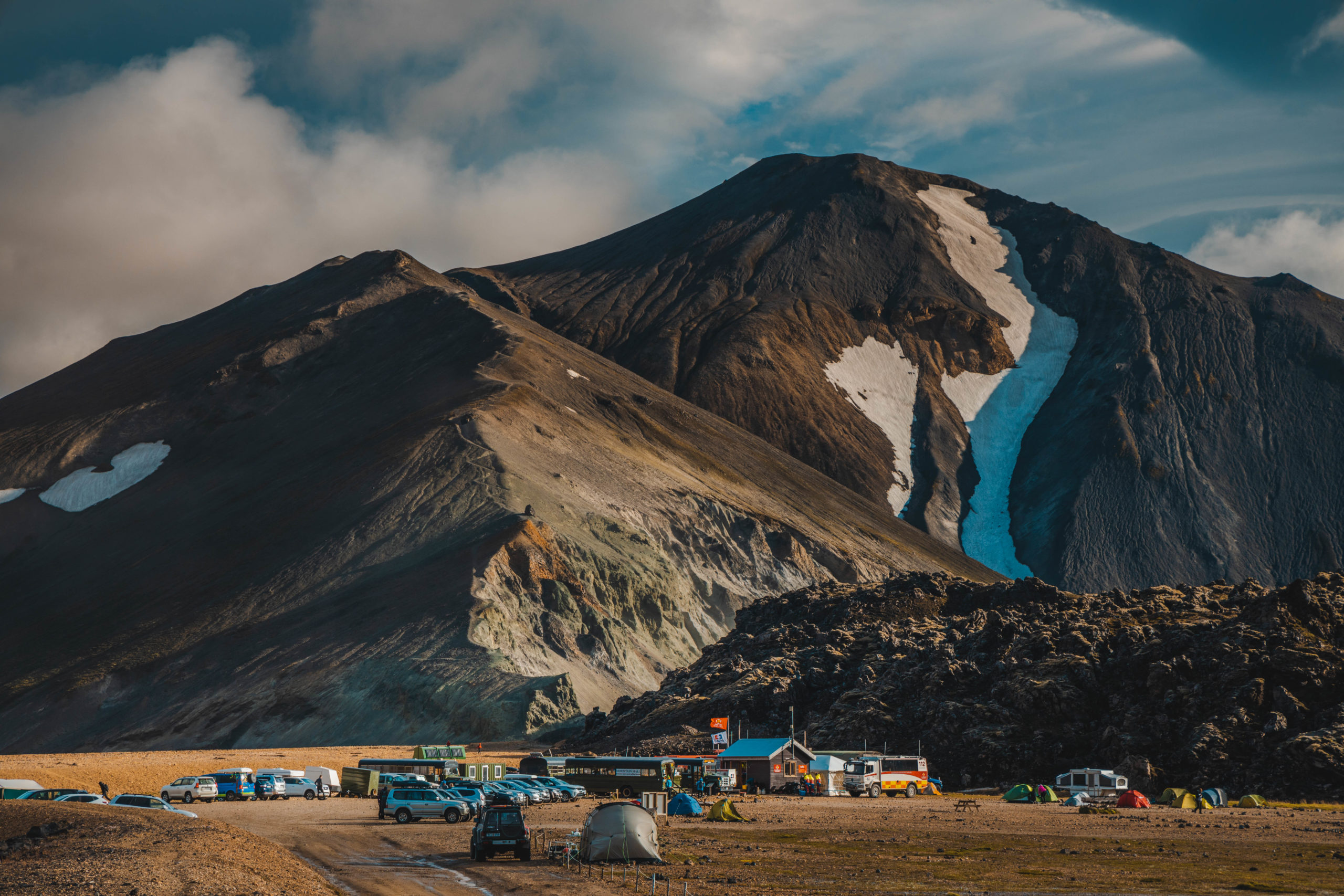
Iceland is famous for its vast landscapes, devoid of people, structures and highways. Meadows blend seamlessly into volcanic lava-fields, black sand beaches and deserts, culminating in an island that, in some parts, is as open as it is mountainous in others.
Iceland is the least populated country in Europe, with two-thirds of its 357,000 people living in the Capital Region alone. The rest of the island consists of either quaint farmland or stark, untameable wilderness—with the odd village or town thrown in for good measure.
In any case, those who step beyond Reykjavík’s borders will find themselves alone soon enough. Surrounded by the overwhelming magnificence of Iceland’s nature, you’ll find the solitude cleansing and much-needed.
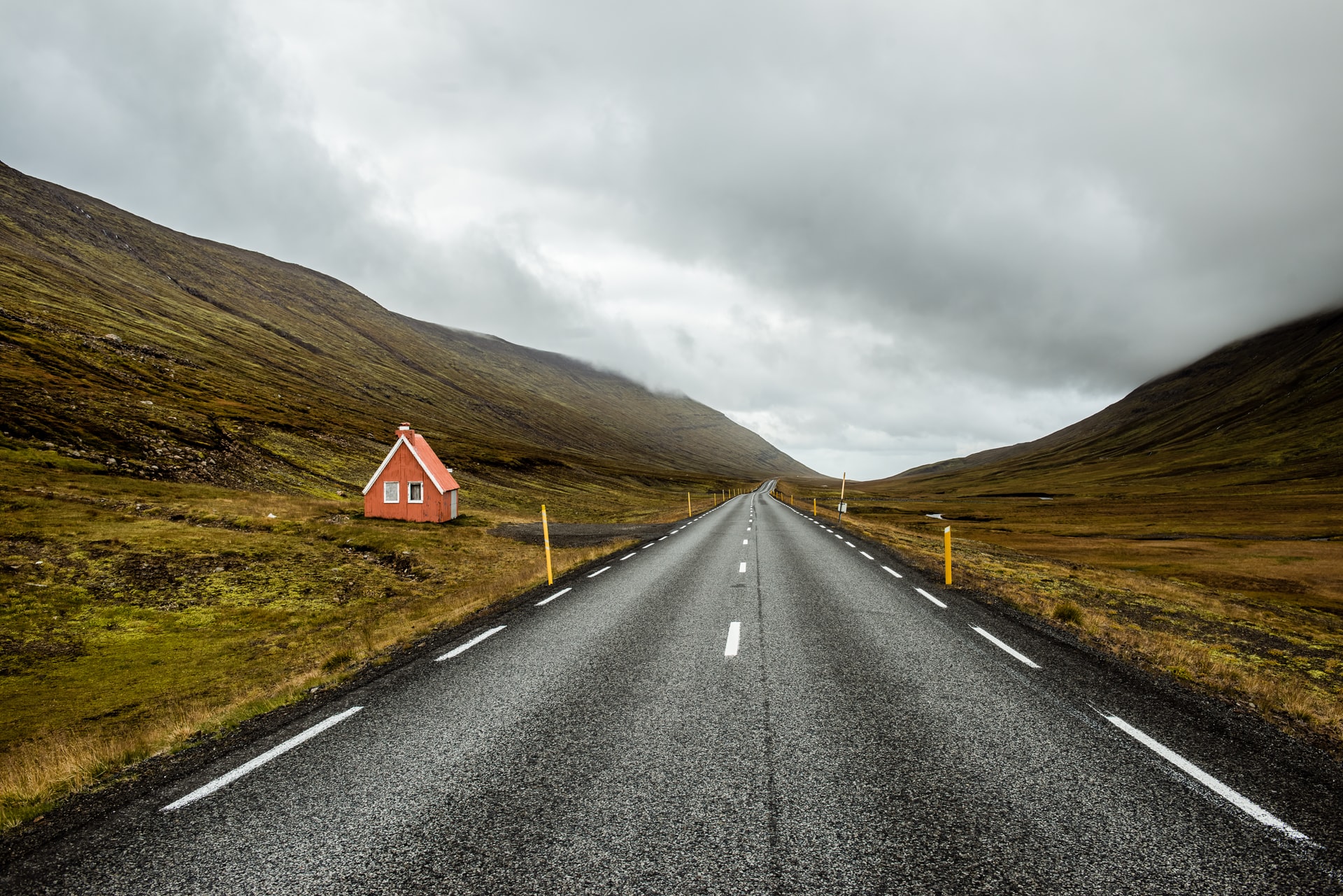
Summer guests will experience a land of eternal light, where the Midnight Sun remains high in the sky deep into the evening. On the other hand, those in winter will discover an entirely different landscape, one glazed in snow and frequented in cherished moments by the sudden appearance of the auroras above.
Given that overseas travel will, in all likelihood, rise slowly rather than surge, guests who make their way to Iceland sooner than others will discover the most popular attractions without the distraction of crowds. Again, time and space allow for a deeper connection to the environment, providing more value and depth to the experience.
Iceland has an absence of crowds.

Iceland is famous for its vast landscapes, devoid of people, structures and highways. Meadows blend seamlessly into volcanic lava-fields, black sand beaches and deserts, culminating in an island that, in some parts, is as open as it is mountainous in others.
Iceland is the least populated country in Europe, with two-thirds of its 357,000 people living in the Capital Region alone. The rest of the island consists of either quaint farmland or stark, untameable wilderness—with the odd village or town thrown in for good measure.
In any case, those who step beyond Reykjavík’s borders will find themselves alone soon enough. Surrounded by the overwhelming magnificence of Iceland’s nature, you’ll find the solitude cleansing and much-needed.

Summer guests will experience a land of eternal light, where the Midnight Sun remains high in the sky deep into the evening. On the other hand, those in winter will discover an entirely different landscape, one glazed in snow and frequented in cherished moments by the sudden appearance of the auroras above.
Given that overseas travel will, in all likelihood, rise slowly rather than surge, guests who make their way to Iceland sooner than others will discover the most popular attractions without the distraction of crowds. Again, time and space allow for a deeper connection to the environment, providing more value and depth to the experience.
Short flights from the UK to Iceland
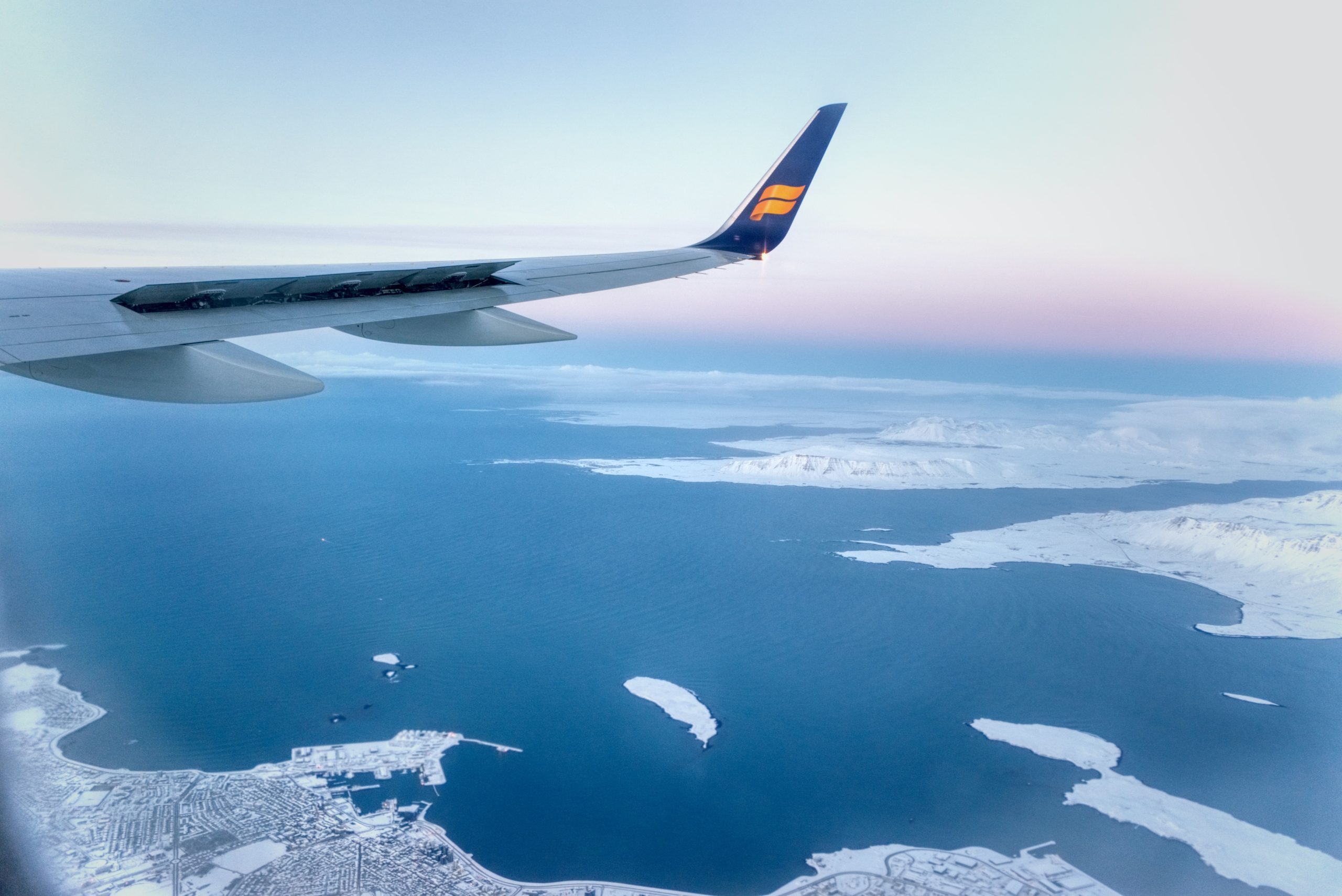
Travelling between the UK and Iceland is about as easy a flight as one could ask for. All it takes is a power nap, a packet of peanuts and one in-flight movie to cross the Norwegian Sea, fast arriving in a location that is incomparable to the UK in almost every way.
Flying between London and Reykjavík takes only three hours. Flying from Edinburgh takes it down to a meagre 2 hours and 5 minutes. Frankly, I’ve been on bus rides that felt longer. Short flights are great for avoiding exhaustion, and allow you to feed-off the pre-arrival excitement before becoming bored of the commute.
Another benefit of short flights is that there is no need to sacrifice your precious time merely travelling to the destination you wish to explore. If you were to leave from the UK in the early morning, you would have the entire day left to explore West Iceland upon your arrival.
Such flexibility is not possible when travelling to destinations further afield. For those in the UK who can’t wait to touch down on foreign soil, getting to Iceland is a quick and straightforward affair.
Short flights from the UK to Iceland

Travelling between the UK and Iceland is about as easy a flight as one could ask for. All it takes is a power nap, a packet of peanuts and one in-flight movie to cross the Norwegian Sea, fast arriving in a location that is incomparable to the UK in almost every way.
Flying between London and Reykjavík takes only three hours. Flying from Edinburgh takes it down to a meagre 2 hours and 5 minutes. Frankly, I’ve been on bus rides that felt longer. Short flights are great for avoiding exhaustion, and allow you to feed-off the pre-arrival excitement before becoming bored of the commute.
Another benefit of short flights is that there is no need to sacrifice your precious time merely travelling to the destination you wish to explore. If you were to leave from the UK in the early morning, you would have the entire day left to explore West Iceland upon your arrival.
Such flexibility is not possible when travelling to destinations further afield. For those in the UK who can’t wait to touch down on foreign soil, getting to Iceland is a quick and straightforward affair.
Icelanders respect public health.
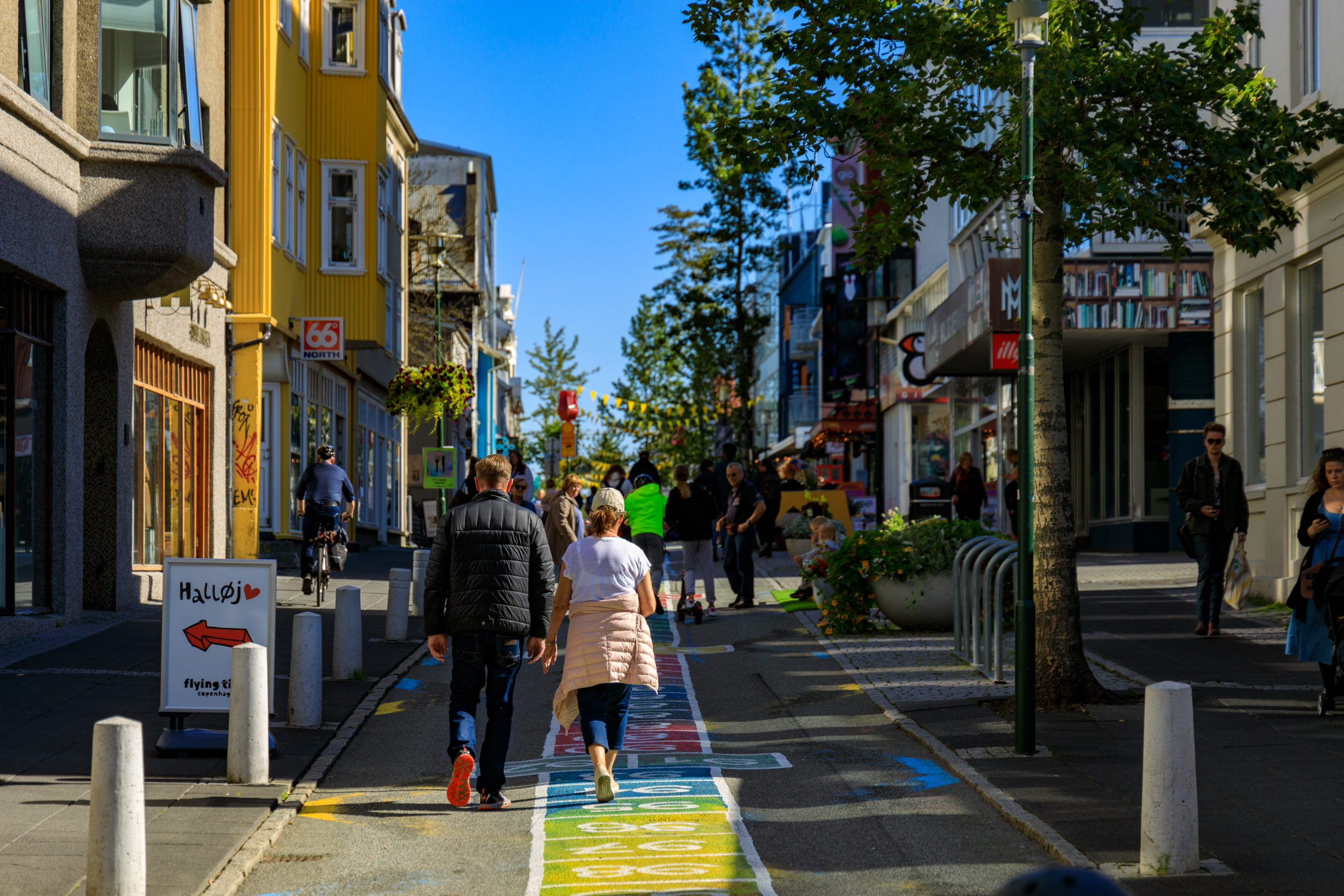
By and large, Icelanders are a forward-thinking people, not prone to conspiracies, hysteria or dwelling on problems long-term. While their choice in woollen sweaters might raise a few eyebrows, the way they’ve handled the coronavirus pandemic has been met with nothing but praise.
When news of the virus first hit, measures were put in place almost at once to combat the spread. The government set a maximum limit on public gatherings. Bars, gyms and swimming pools were closed. Restaurants and cafes were only permitted to remain open until early evening.

While, of course, there has been heated discussion as to the best path forward, this is true of all nations, and by and large, Iceland has proven itself to be well equipped in handling the crisis.
Walking through the city, you’ll find most people wear masks and sanitise their hands after being outside or before entering shops. For now, the capital streets are quiet, with many shops and popular bars on hiatus. Though there has been small pockets of resistance, the vast majority of the Icelandic population understands that, for now, everybody should take precautions.
Awareness of the risks have been bolstered by both the Icelandic Directorate of Health and deCode Genetics, a Reykjavík-based company that specialises in understanding more about human genetics.
By sharing data and information between them, both organisations have made enormous leaps in slowing down the local infection rate, not mentioning the greater understanding gained from stringent tracking protocols.
Icelanders respect public health.

By and large, Icelanders are a forward-thinking people, not prone to conspiracies, hysteria or dwelling on problems long-term. While their choice in woollen sweaters might raise a few eyebrows, the way they’ve handled the coronavirus pandemic has been met with nothing but praise.
When news of the virus first hit, measures were put in place almost at once to combat the spread. The government set a maximum limit on public gatherings. Bars, gyms and swimming pools were closed. Restaurants and cafes were only permitted to remain open until early evening.

While, of course, there has been heated discussion as to the best path forward, this is true of all nations, and by and large, Iceland has proven itself to be well equipped in handling the crisis.
Walking through the city, you’ll find most people wear masks and sanitise their hands after being outside or before entering shops. For now, the capital streets are quiet, with many shops and popular bars on hiatus. Though there has been small pockets of resistance, the vast majority of the Icelandic population understands that, for now, everybody should take precautions.
Awareness of the risks have been bolstered by both the Icelandic Directorate of Health and deCode Genetics, a Reykjavík-based company that specialises in understanding more about human genetics.
By sharing data and information between them, both organisations have made enormous leaps in slowing down the local infection rate, not mentioning the greater understanding gained from stringent tracking protocols.
Iceland is a family-friendly destination
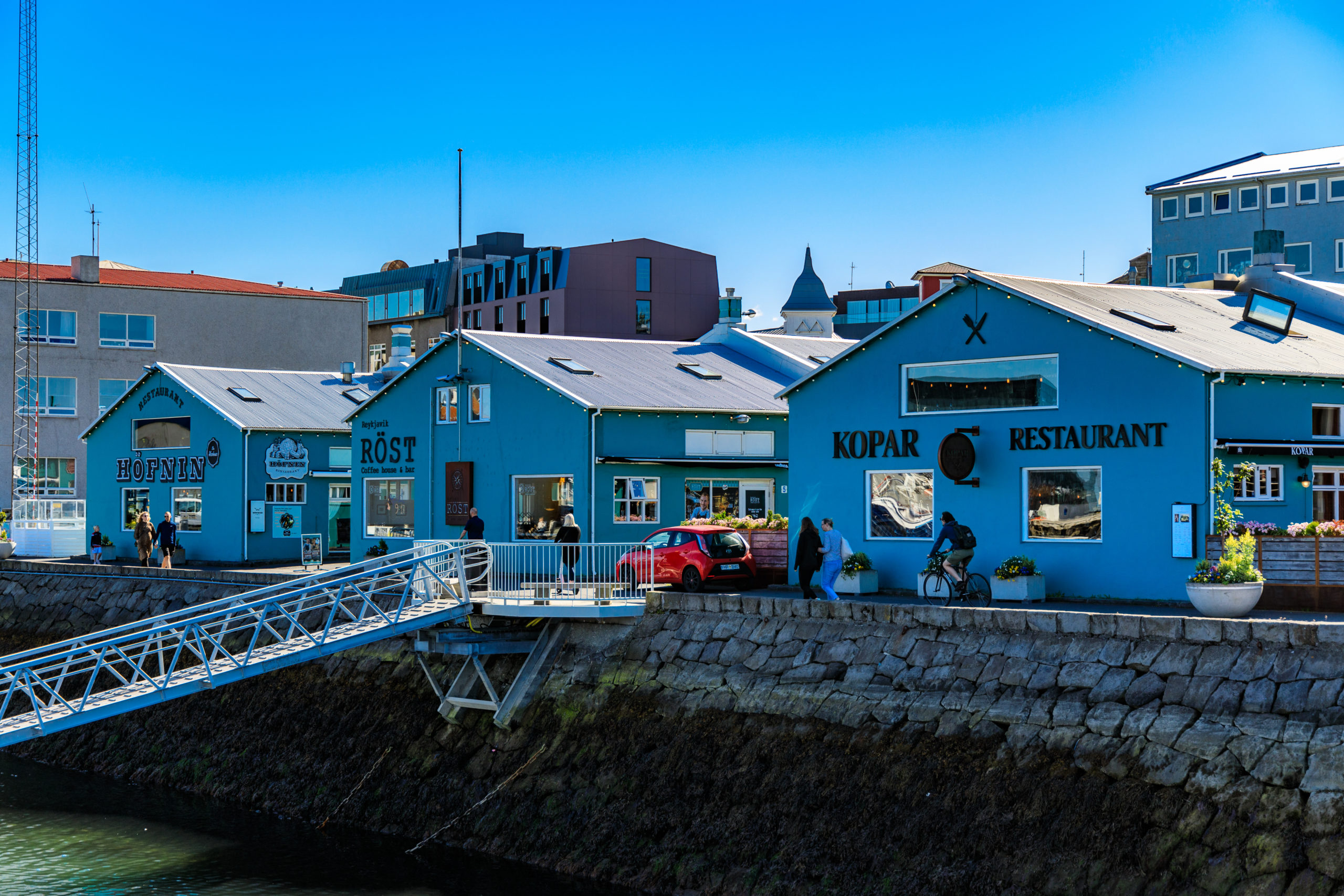
Iceland is a treat for the whole family, providing memories that are sure to define a child’s formative years. Kids of all ages will find Iceland’s countryside a fantastical dreamscape, one that inspires their imagination, fuels their passion for the environment, and offers a fascinating glimpse into another way-of-life.
Reykjavík has several museums suited to families, the most fun of which is the Perlan Museum on Öskjuhlíð Hill. Inside this iconic domed building, guests will find the incredible Wonders of Iceland exhibition. This showcase includes Iceland’s only planetarium, complete with Northern Lights show, as well as artificial bird cliffs and a meticulously recreated ice tunnel.
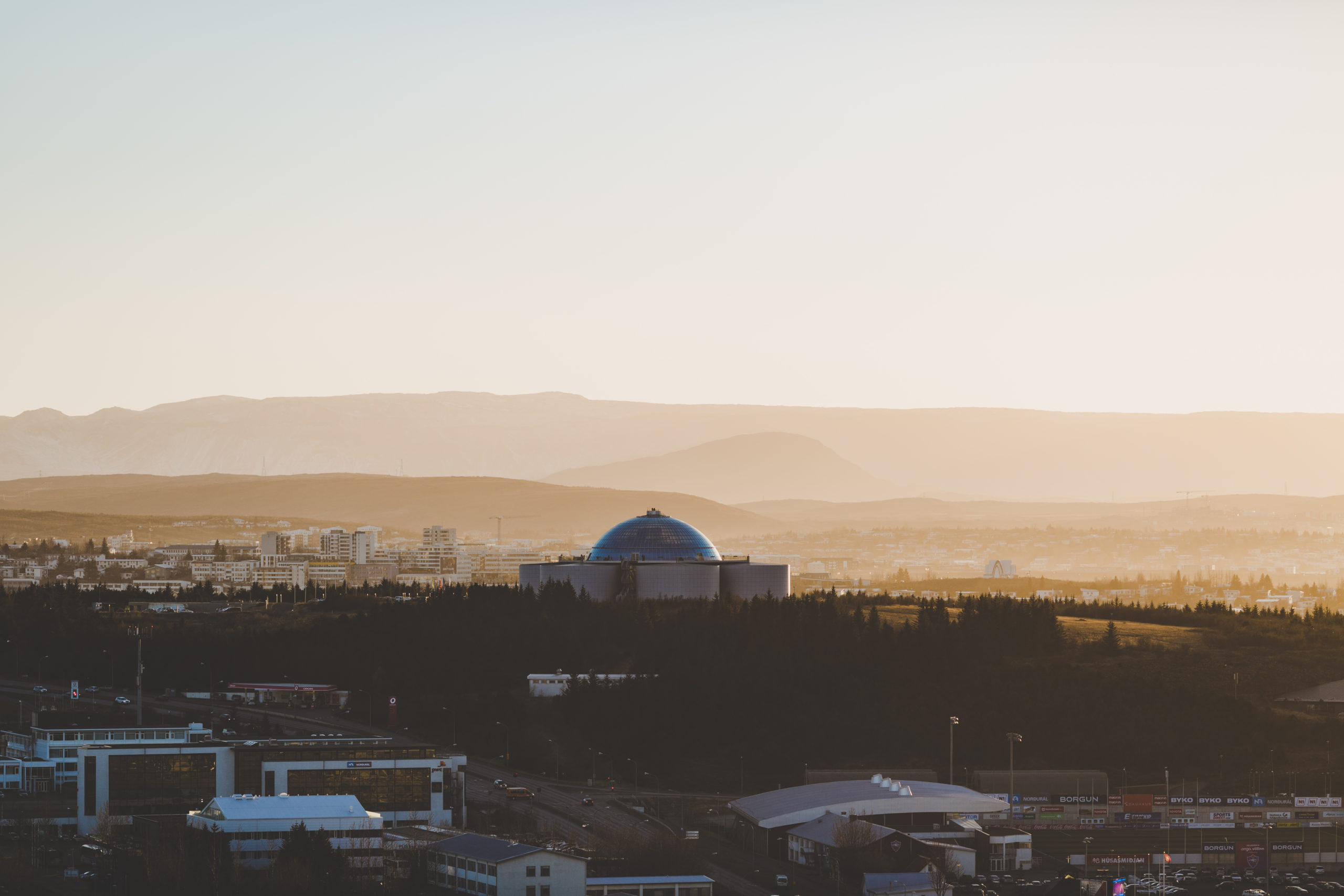
Of course, none of this mentions the Observation Deck that encircles Perlan dome ceiling. Offering 360-degree panoramas of Reykjavík, Faxafloi Bay and the epic table-top mountain, Esja, there is no better place to give your family an appreciation of just how surrounded the capital is by lava fields and encroaching mountains.
Most families will want to escape the city during their time here, venturing out into the wilds searching for Iceland’s top attractions. Thankfully, renting a suitable vehicle is easy, and can be picked-up straight outside the arrivals hall of Keflavik International Airport. Such autonomy is perfect for families looking to truly make their time in Iceland count as it allows for quick diversions and comfortable travel.
Iceland is a family-friendly destination

Iceland is a treat for the whole family, providing memories that are sure to define a child’s formative years. Kids of all ages will find Iceland’s countryside a fantastical dreamscape, one that inspires their imagination, fuels their passion for the environment, and offers a fascinating glimpse into another way-of-life.
Reykjavík has several museums suited to families, the most fun of which is the Perlan Museum on Öskjuhlíð Hill. Inside this iconic domed building, guests will find the incredible Wonders of Iceland exhibition. This showcase includes Iceland’s only planetarium, complete with Northern Lights show, as well as artificial bird cliffs and a meticulously recreated ice tunnel.

Of course, none of this mentions the Observation Deck that encircles Perlan dome ceiling. Offering 360-degree panoramas of Reykjavík, Faxafloi Bay and the epic table-top mountain, Esja, there is no better place to give your family an appreciation of just how surrounded the capital is by lava fields and encroaching mountains.
Most families will want to escape the city during their time here, venturing out into the wilds searching for Iceland’s top attractions. Thankfully, renting a suitable vehicle is easy, and can be picked-up straight outside the arrivals hall of Keflavik International Airport. Such autonomy is perfect for families looking to truly make their time in Iceland count as it allows for quick diversions and comfortable travel.
Natural attractions in Iceland are (mostly) free-to-visit
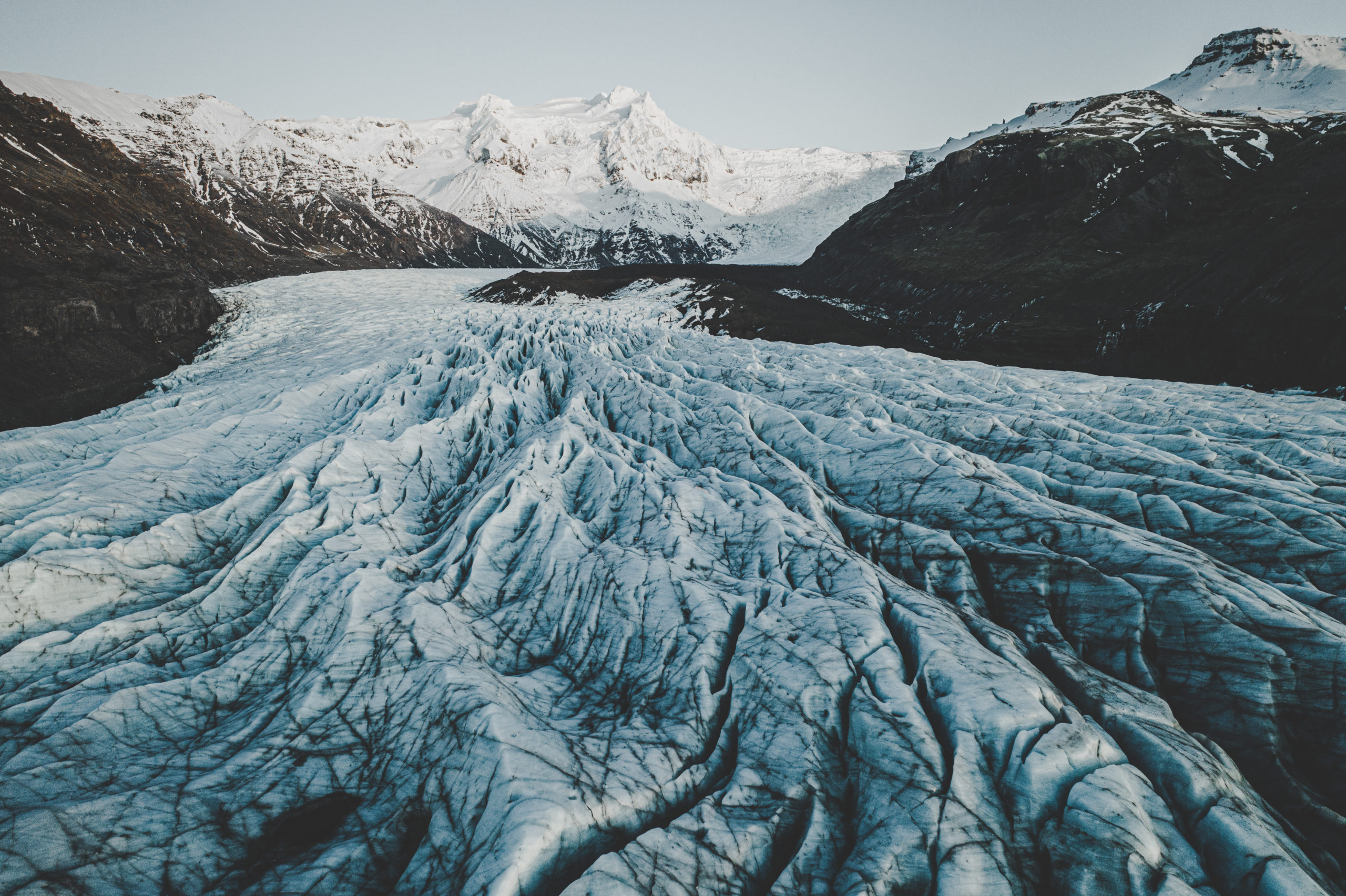
Aside from petrol costs and parking fees, there’s not much in the way of extra charges when visiting Iceland’s major natural attractions. Parking fees can reach up to 800 ISK, payable by credit card on most sites. This relative lack of expenditure can provide relief to travellers preoccupied with how expensive Iceland can be.
Waterfalls like Seljalandsfoss, Gullfoss and Dettifoss are all free to appreciate up-close. So too are the island’s many canyons, black beaches, nature reserves and turf houses. A trip to the heavenly glacier lagoon, Jökulsárlón, is another priceless experience, and there is no cost to appreciating the weatherbeaten lava fields of Reykjanes or Lake Mývatn.
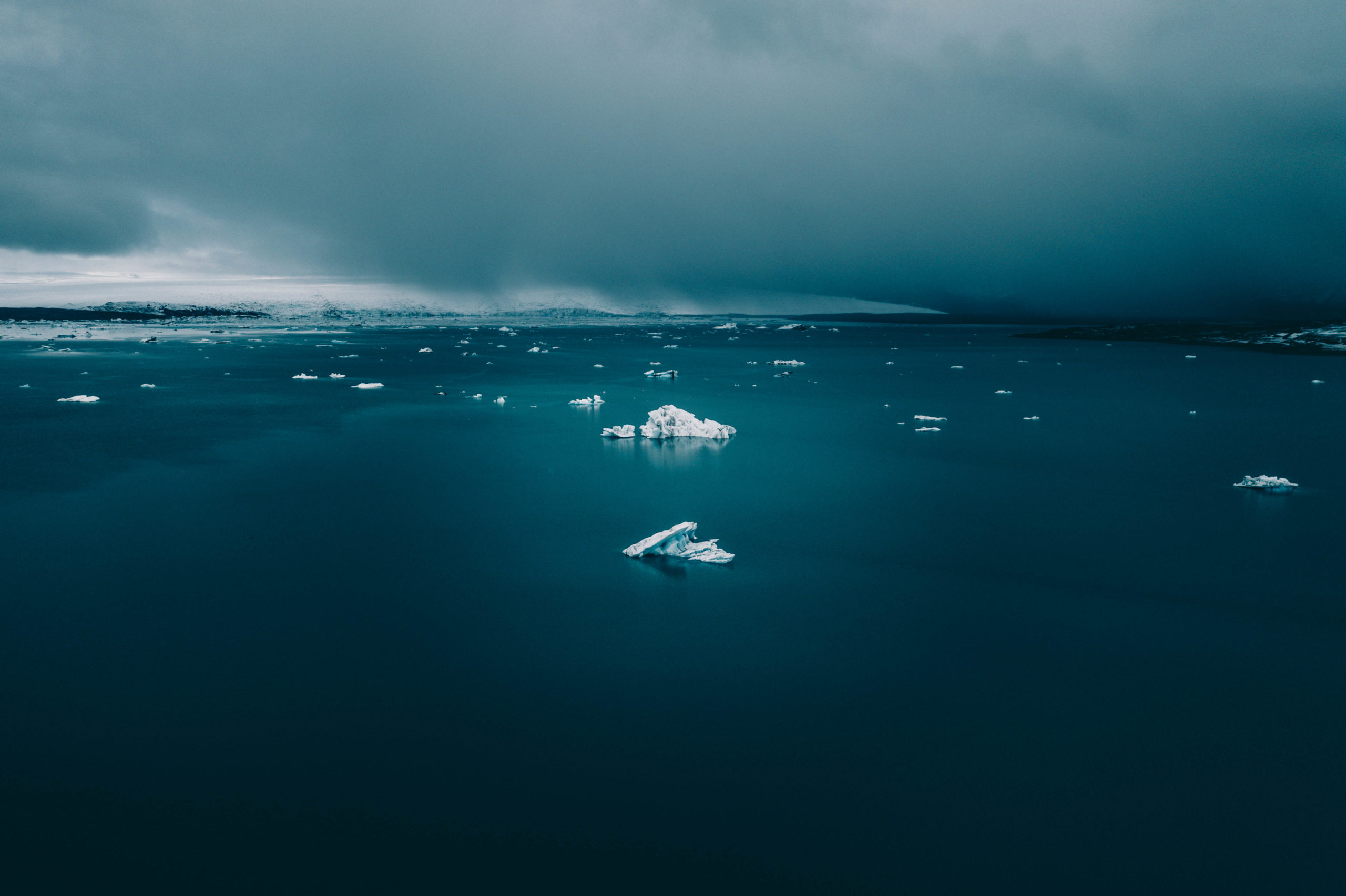
There are only a few attractions where an extra expense is necessary to pay a visit. The most famous example of this is Kerið volcanic crater on the Golden Circle sightseeing route, which has an entrance fee stipulated by the landowners.
Glaciers and ice caves require tour parties to be led by a professional guide given the inherent risk involved, as do other activities like snorkelling, horseback riding and ATV drives. In all the above cases, pre-booked excursions are necessary.
The same can be said for entering the volcanic caldera, Þríhnúkagígur, on the Reykjanes Peninsula, or the Icelandic highlands, which are largely inaccessible to holiday drivers.
Natural attractions in Iceland are (mostly) free-to-visit

Aside from petrol costs and parking fees, there’s not much in the way of extra charges when visiting Iceland’s major natural attractions. Parking fees can reach up to 800 ISK, payable by credit card on most sites. This relative lack of expenditure can provide relief to travellers preoccupied with how expensive Iceland can be.
Waterfalls like Seljalandsfoss, Gullfoss and Dettifoss are all free to appreciate up-close. So too are the island’s many canyons, black beaches, nature reserves and turf houses. A trip to the heavenly glacier lagoon, Jökulsárlón, is another priceless experience, and there is no cost to appreciating the weatherbeaten lava fields of Reykjanes or Lake Mývatn.

There are only a few attractions where an extra expense is necessary to pay a visit. The most famous example of this is Kerið volcanic crater on the Golden Circle sightseeing route, which has an entrance fee stipulated by the landowners.
Glaciers and ice caves require tour parties to be led by a professional guide given the inherent risk involved, as do other activities like snorkelling, horseback riding and ATV drives. In all the above cases, pre-booked excursions are necessary.
The same can be said for entering the volcanic caldera, Þríhnúkagígur, on the Reykjanes Peninsula, or the Icelandic highlands, which are largely inaccessible to holiday drivers.
How is Iceland dealing with the coronavirus pandemic?
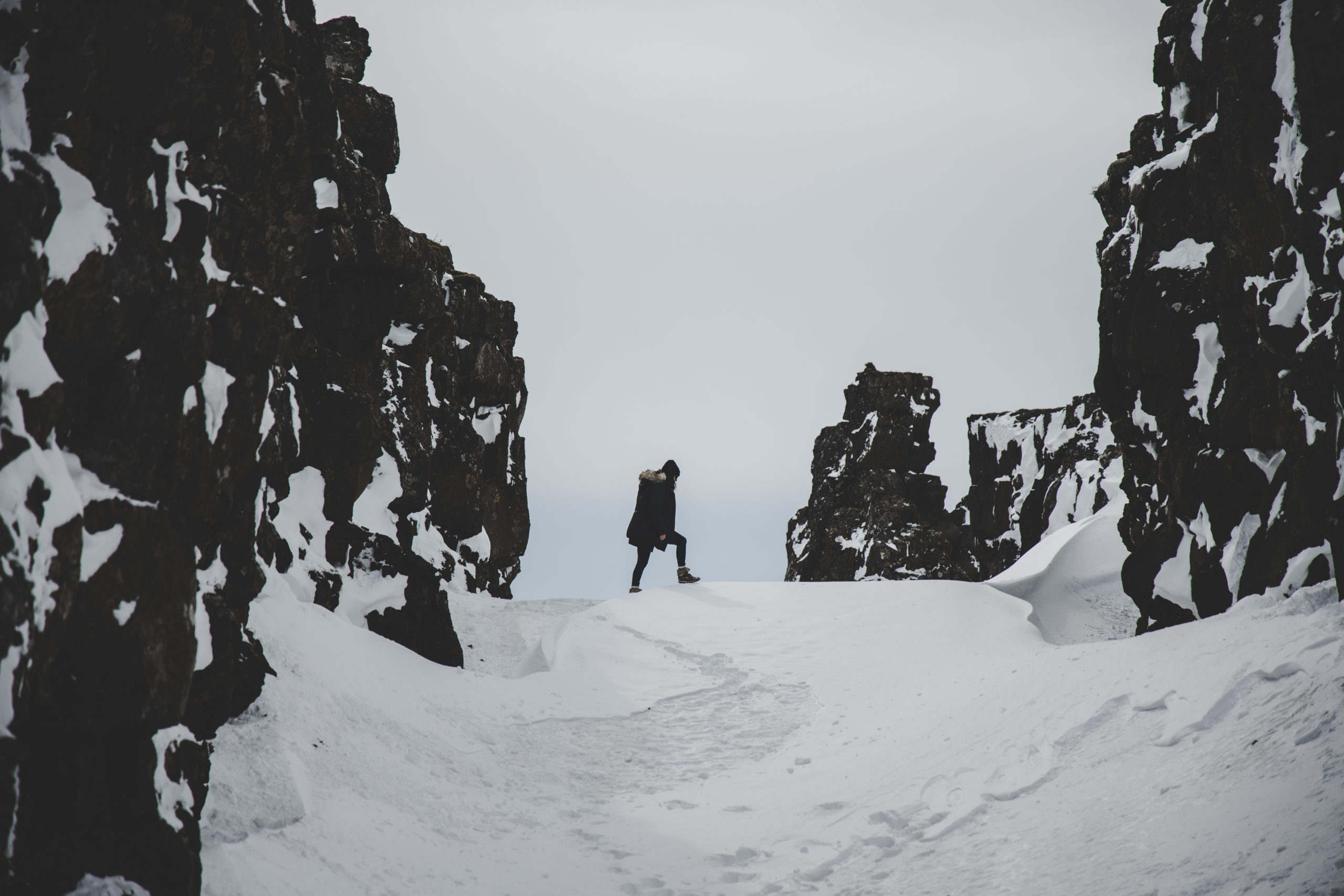
Iceland is ranked 7th globally (80.1/98) on the Lowy Institute’s COVID-19 performance index, which measures how countries with comparable data have handled confirmed coronavirus cases domestically. By comparison, New Zealand, Vietnam and Taiwan are, as it stands, the top three ranking nations.
Our current predicament with the coronavirus is not the first time Iceland fell victim to outside contamination, having suffered an influenza pandemic after two ships brought it to the island in October 1918. In no less than a month of a half, 60% of Reykjavík residents had been infected. Over a century later, the Icelandic government appears to have learnt from its mistakes.
Like almost everywhere else, Iceland quickly imposed strict border controls to protect the domestic populace from outside infection. Since June 2020, tourists have been welcome back to Iceland given they follow the new regulations.
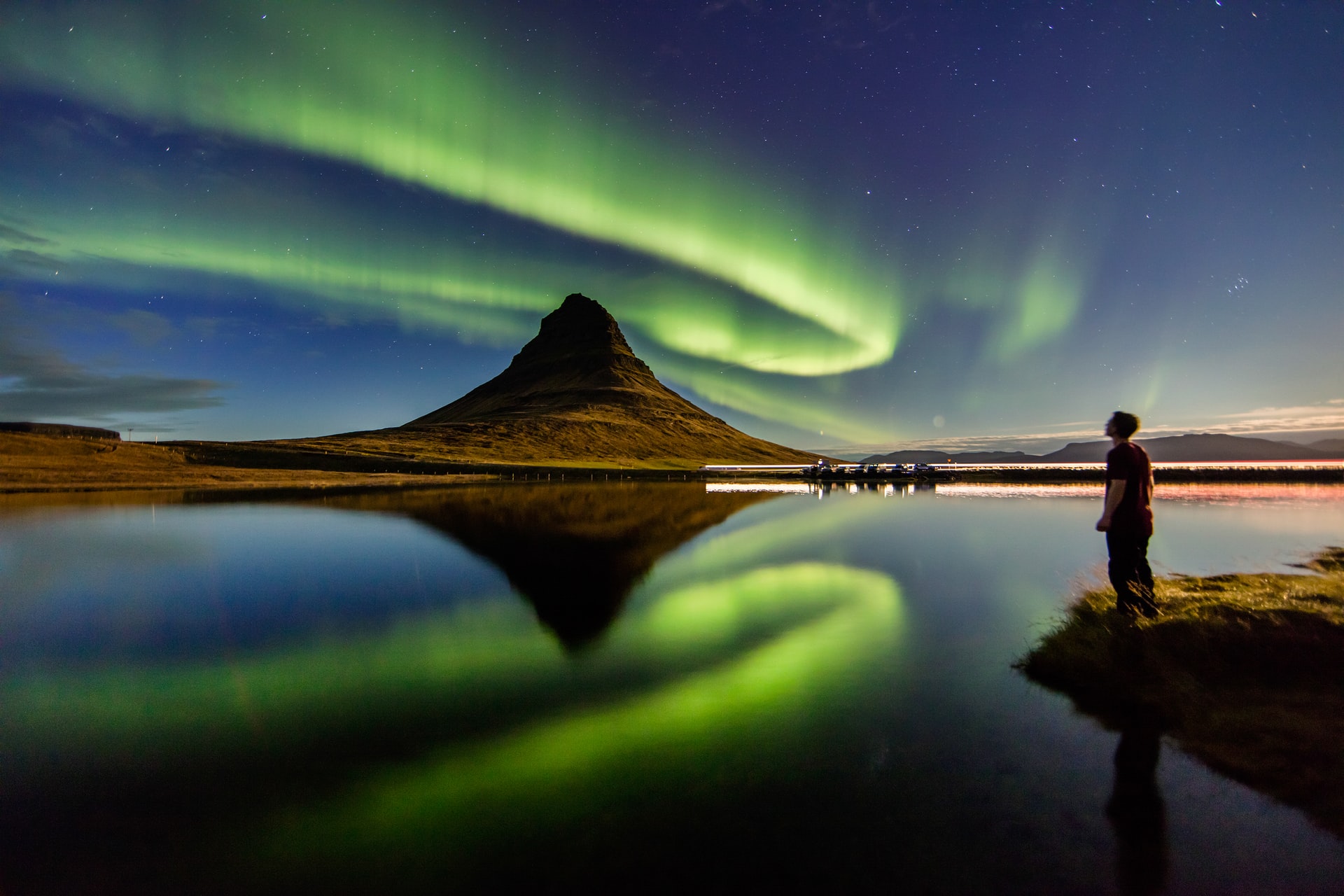
All new arrivals were faced with a decision as to whether they be tested at the border, or forgo testing and opt for a 14-day quarantine instead. Those tested at the border require only 5-days quarantine before being tested for a second time at a health clinic in Reykjavík.
A companion app, Rakning C-19, informs the subject within 24 hours as to whether their result is positive or negative, as well as tracks movement throughout the quarantine period. Those in quarantine are not permitted to leave their hotel.
Border regulations have changed throughout the pandemic, and are liable to adapt again. Please take some time perusing the official government website www.covid.is for the latest information before you travel. You can also find more useful details related to travelling to Iceland from the UK at the Icelandic Tourist Board and the Directorate of Health.
Keep up to date with the latest COVID-10 statistics in Iceland here.
As it stands currently, travellers from the EU that have a certification proving they have been vaccinated will be allowed entry into the country without the need to quarantine. Given the UK’s recent departure from the EU, this exemption does not yet apply to British travellers, though it will only be a matter of time until this rule is relaxed.
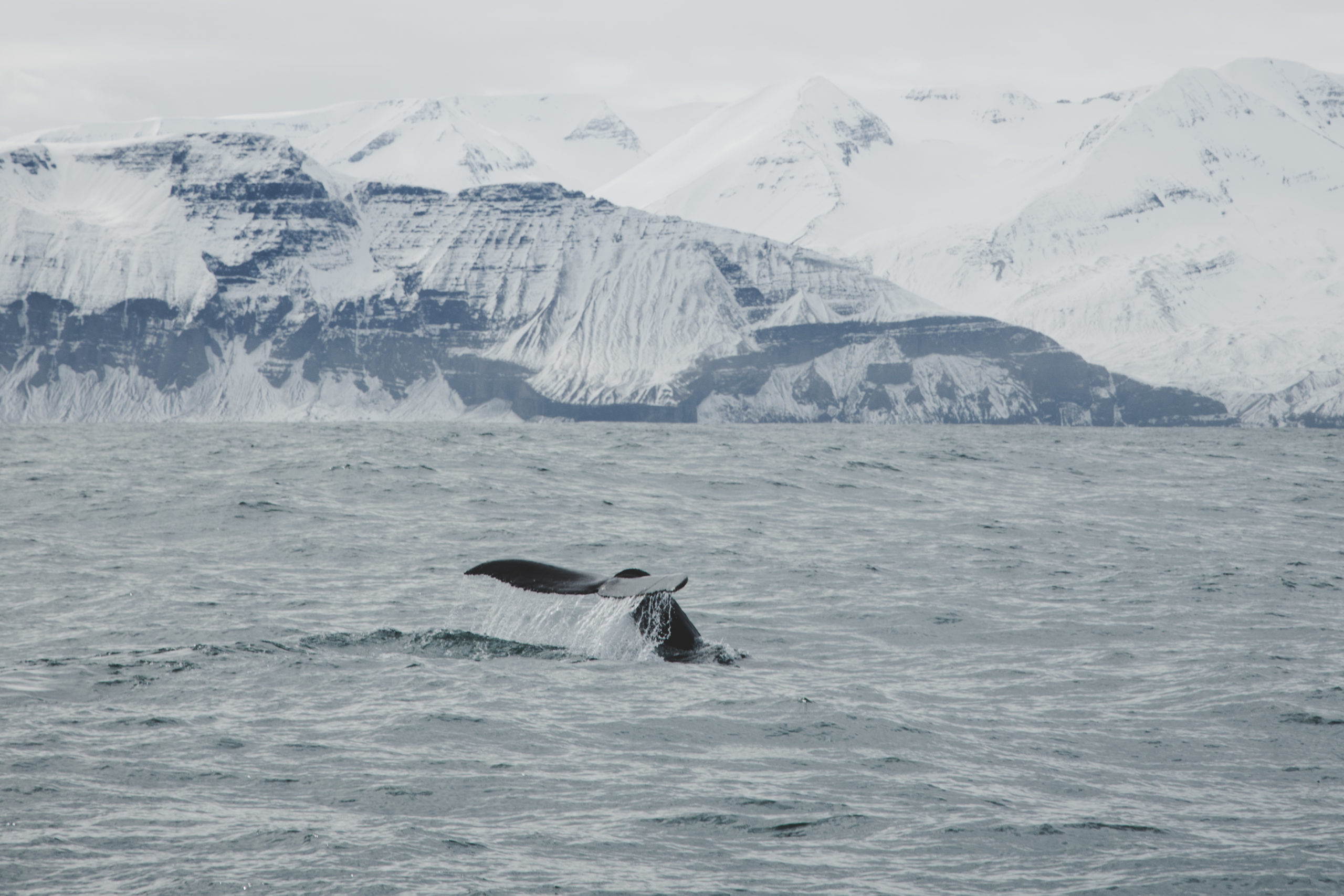
How is Iceland dealing with the coronavirus pandemic?

Iceland is ranked 7th globally (80.1/98) on the Lowy Institute’s COVID-19 performance index, which measures how countries with comparable data have handled confirmed coronavirus cases domestically. By comparison, New Zealand, Vietnam and Taiwan are, as it stands, the top three ranking nations.
Our current predicament with the coronavirus is not the first time Iceland fell victim to outside contamination, having suffered an influenza pandemic after two ships brought it to the island in October 1918. In no less than a month of a half, 60% of Reykjavík residents had been infected. Over a century later, the Icelandic government appears to have learnt from its mistakes.
Like almost everywhere else, Iceland quickly imposed strict border controls to protect the domestic populace from outside infection. Since June 2020, tourists have been welcome back to Iceland given they follow the new regulations.

All new arrivals were faced with a decision as to whether they be tested at the border, or forgo testing and opt for a 14-day quarantine instead. Those tested at the border require only 5-days quarantine before being tested for a second time at a health clinic in Reykjavík.
A companion app, Rakning C-19, informs the subject within 24 hours as to whether their result is positive or negative, as well as tracks movement throughout the quarantine period. Those in quarantine are not permitted to leave their hotel.
Border regulations have changed throughout the pandemic, and are liable to adapt again. Please take some time perusing the official government website www.covid.is for the latest information before you travel. You can also find more useful details related to travelling to Iceland from the UK at the Icelandic Tourist Board and the Directorate of Health.
Keep up to date with the latest COVID-10 statistics in Iceland here.
As it stands currently, travellers from the EU that have a certification proving they have been vaccinated will be allowed entry into the country without the need to quarantine. Given the UK’s recent departure from the EU, this exemption does not yet apply to British travellers, though it will only be a matter of time until this rule is relaxed.

Hope for the Future
The few COVID-19 infections we are now seeing in Iceland instil real hope that 2021 might finally see this virus conquered. It’s been a long time coming, and while there may be some miles to go, we seem to be at a stage in the pandemic where it is not considered overly optimistic breathing small sighs of relief.
If there is a lesson to be learnt from COVID-19, perhaps it is that our vulnerability is what binds us most. So too does our mutual longing to meet friends and family, visit far-away places, sculpt new relationships, and live unhampered by fear and regulation.
When COVID-19 is brought to its knees—as, indeed, it will be—we’ll all have a chance to revisit the plans we’ve been forced to put on hold. Trips to Iceland, long in the making, can finally be realised, providing the respite and rejuvenation so needed after the troubles this previous year.
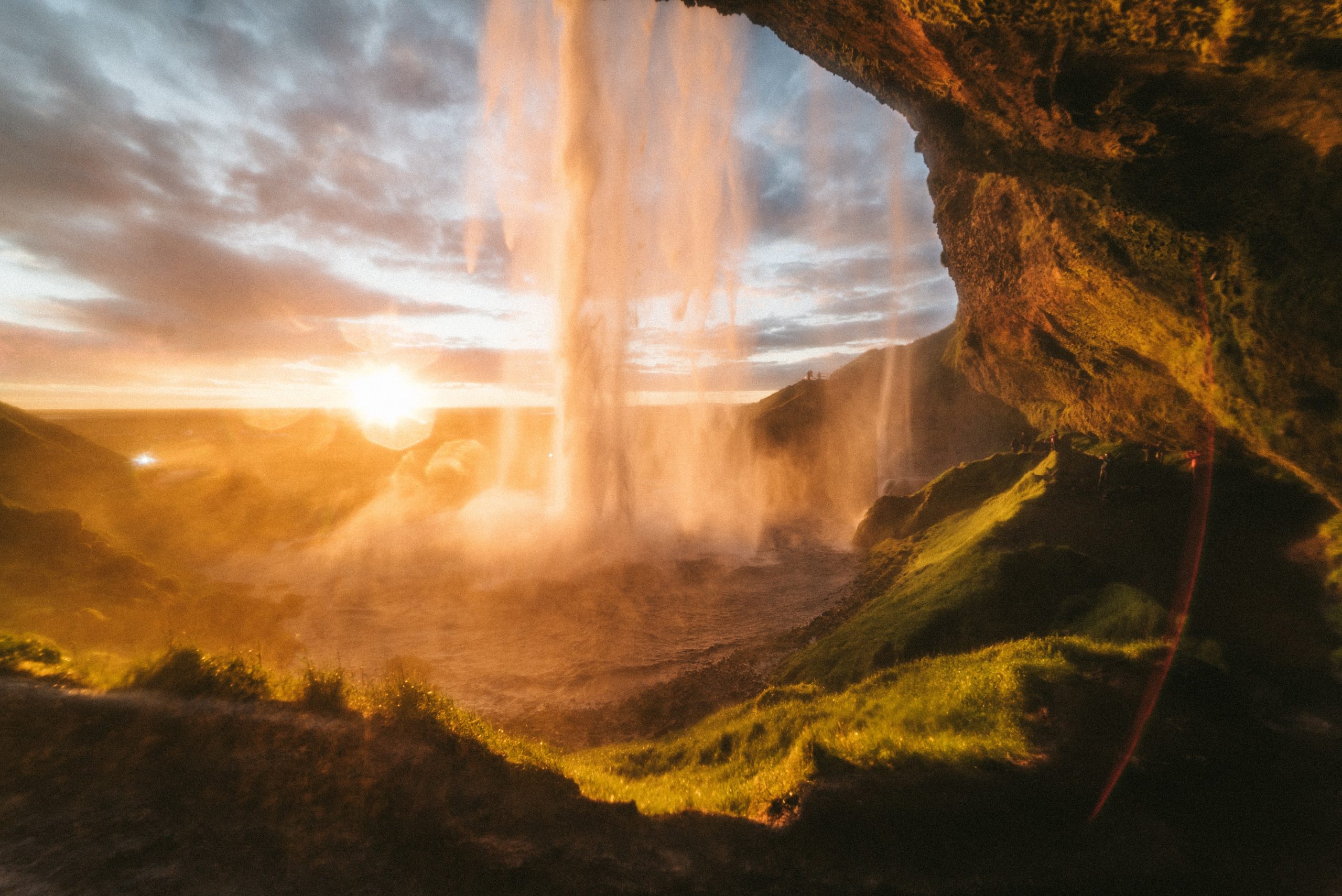
Update as of 23rd March 2021: The above article lays out the entry rules currently stipulated by the Icelandic government, and thus does not apply to those whose own home countries have forbidden travel. Currently, the UK is imposing fines to anyone taking foreign holidays.
Hope for the Future
The few COVID-19 infections we are now seeing in Iceland instil real hope that 2021 might finally see this virus conquered. It’s been a long time coming, and while there may be some miles to go, we seem to be at a stage in the pandemic where it is not considered overly optimistic breathing small sighs of relief.
If there is a lesson to be learnt from COVID-19, perhaps it is that our vulnerability is what binds us most. So too does our mutual longing to meet friends and family, visit far-away places, sculpt new relationships, and live unhampered by fear and regulation.
When COVID-19 is brought to its knees—as, indeed, it will be—we’ll all have a chance to revisit the plans we’ve been forced to put on hold. Trips to Iceland, long in the making, can finally be realised, providing the respite and rejuvenation so needed after the troubles this previous year.

Update as of 23rd March 2021: The above article lays out the entry rules currently stipulated by the Icelandic government, and thus does not apply to those whose own home countries have forbidden travel. Currently, the UK is imposing fines to anyone taking foreign holidays.
Experience The Popular Golden Circle In Iceland
All You Need To Know About
The Golden Circle In Iceland
By Michael Chapman
Iceland’s most popular sightseeing trail is known as “Gullni hringurinn” in Icelandic, and the Golden Circle to the rest of us. There are three major highlights en route; Þingvellir National Park, the Geysir hot springs and Gullfoss waterfall, all of which attract thousands of visitors each year with their dramatic scenery and importance to local culture.
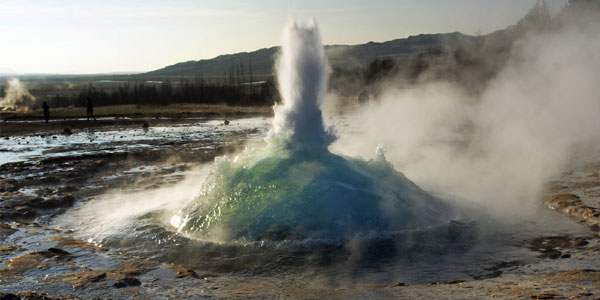
Thanks to its proximity to Iceland’s capital city, Reykjavík, undertaking the Golden Circle is the perfect activity for those looking to maximise their stay and is especially practical for travellers with only a limited time in the country.
Whoever you are, this unforgettable journey has a little something for you. Be you part of a family hungry for adventure, a honeymooner hunting for romance, or a photographer seeking out your next award-winning shot; the Golden Circle is sure to provide you with what you’re looking for, and so much more.
Iceland’s most popular sightseeing trail is known as “Gullni hringurinn” in Icelandic, and the Golden Circle to the rest of us. There are three major highlights en route; Þingvellir National Park, the Geysir hot springs and Gullfoss waterfall, all of which attract thousands of visitors each year with their dramatic scenery and importance to local culture.

Thanks to its proximity to Iceland’s capital city, Reykjavík, undertaking the Golden Circle is the perfect activity for those looking to maximise their stay and is especially practical for travellers with only a limited time in the country.
Whoever you are, this unforgettable journey has a little something for you. Be you part of a family hungry for adventure, a honeymooner hunting for romance, or a photographer seeking out your next award-winning shot; the Golden Circle is sure to provide you with what you’re looking for, and so much more.
Where is the Golden Circle in Iceland?
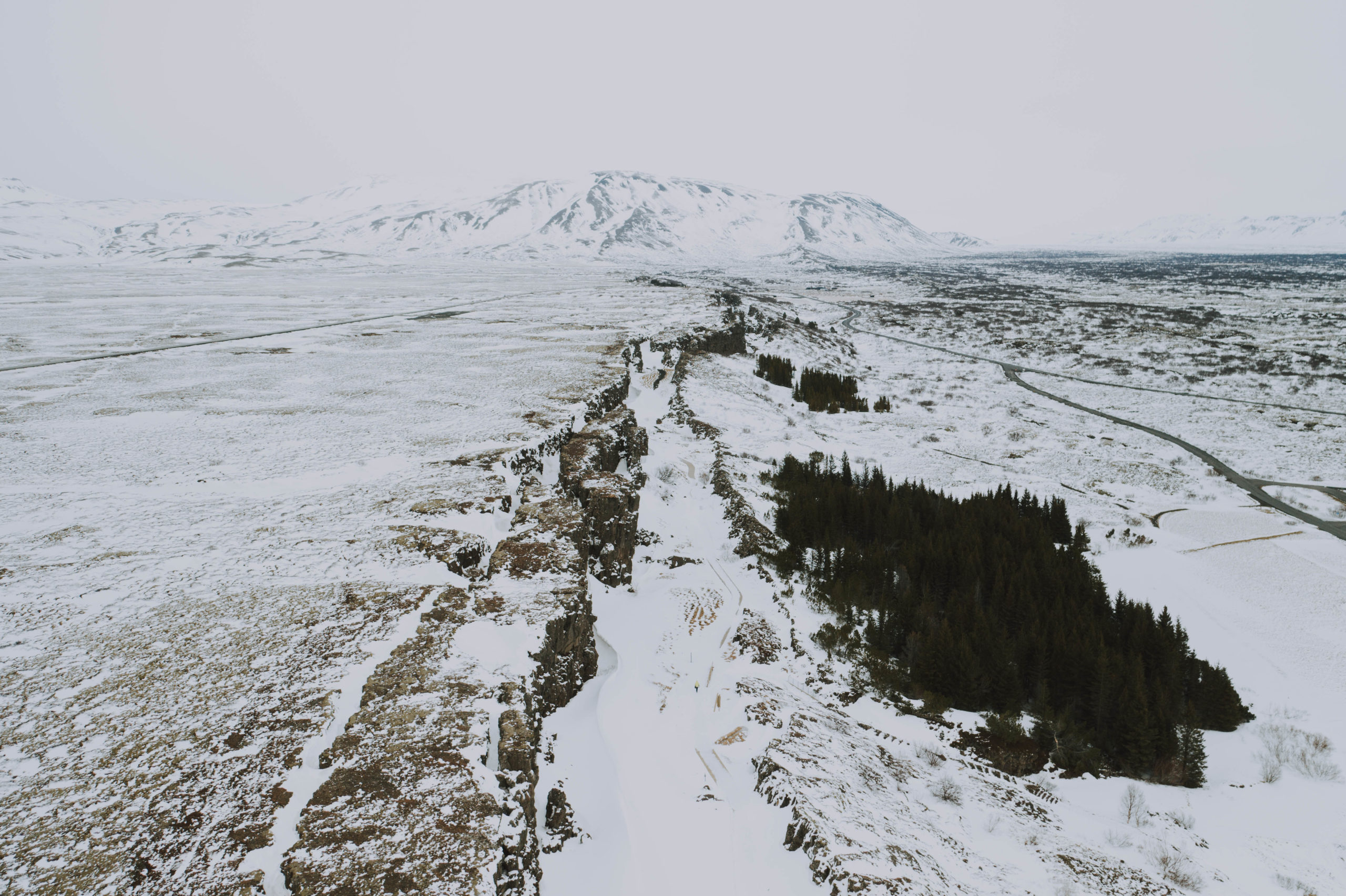
The Golden Circle route is located in the Bláskógabyggð municipality of southwest Iceland and covers a total distance of 300 kilometres.
Visitors can reach Þingvellir—considered the first stop by most—after a short forty-minute drive from Reykjavík, covering a distance of some 48 kilometres. Nothing can quite describe that feeling as you leave the concrete confines of the city behind, embarking inland into a landscape of vast black fields and distant mountainscapes.
From Þingvellir, you will swing into the higher regions of the southwest, passing a diverse landscape that can swiftly transform from mossy lava fields to quaint meadows and farmland. Geysir geothermal valley is found among the latter category, marking a drastic change in aesthetic from the park.
As you traverse the higher plateaus of your trip, you will look upon Gullfoss water cascading into a dramatic canyon, before returning towards Reykjavík on the southwestern coast.The waterfall marks the most inland point of the Golden Circle, and is 115.8 kilometers from the capital, approximately a 1 hour and 40 minute drive.
Where is the Golden Circle in Iceland?

The Golden Circle route is located in the Bláskógabyggð municipality of southwest Iceland and covers a total distance of 300 kilometres.
Visitors can reach Þingvellir—considered the first stop by most—after a short forty-minute drive from Reykjavík, covering a distance of some 48 kilometres. Nothing can quite describe that feeling as you leave the concrete confines of the city behind, embarking inland into a landscape of vast black fields and distant mountainscapes.
From Þingvellir, you will swing into the higher regions of the southwest, passing a diverse landscape that can swiftly transform from mossy lava fields to quaint meadows and farmland. Geysir geothermal valley is found among the latter category, marking a drastic change in aesthetic from the park.
As you traverse the higher plateaus of your trip, you will look upon Gullfoss water cascading into a dramatic canyon, before returning towards Reykjavík on the southwestern coast.The waterfall marks the most inland point of the Golden Circle, and is 115.8 kilometers from the capital, approximately a 1 hour and 40 minute drive.
How long does the Golden Circle take?
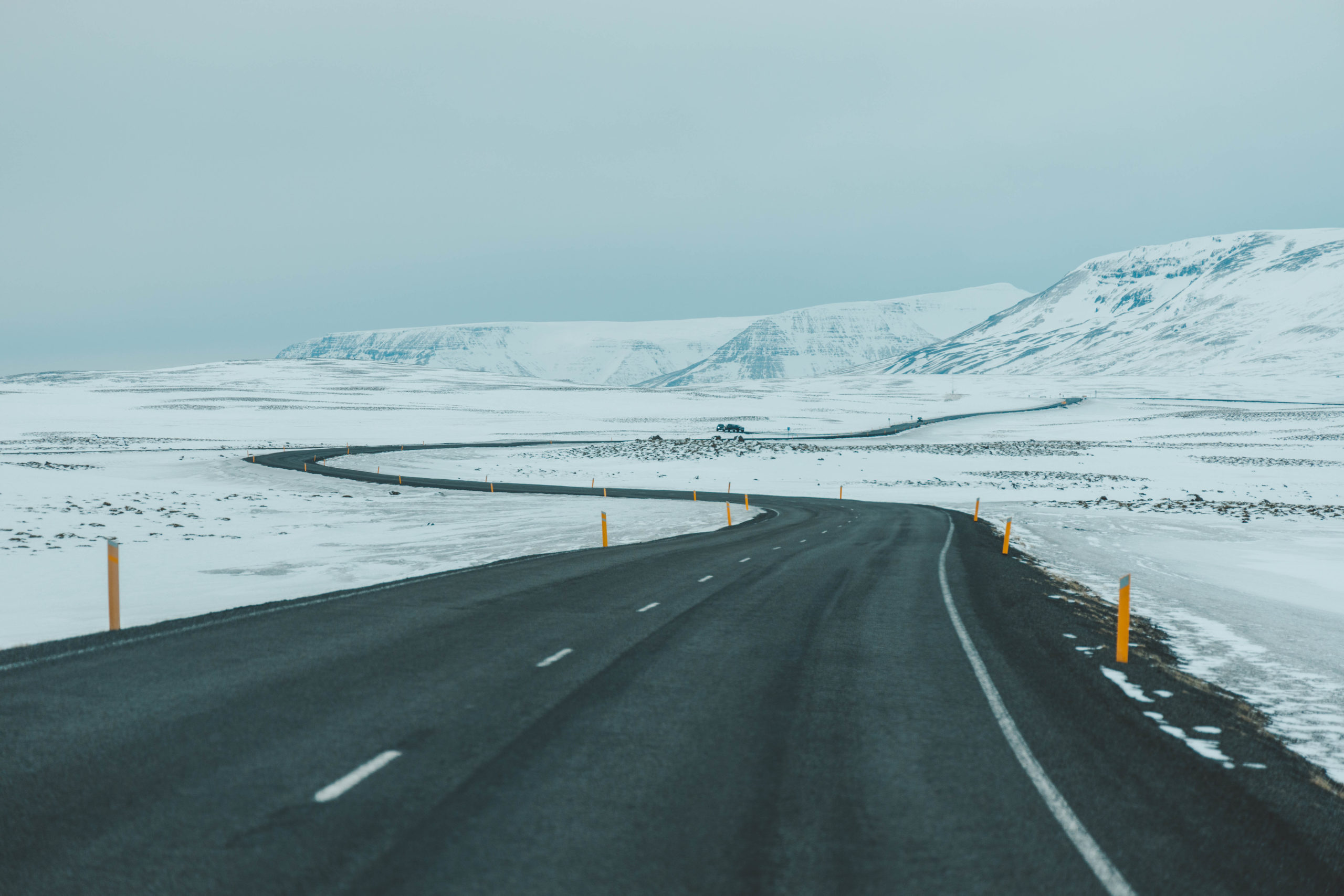
How long it will take you to visit each of the three sites of the Golden Circle will depend on various factors, from the season of your visit to the weather conditions that day.
Those who undergo the experience during winter will have to drive slower on the roads and will likely encounter adverse weather conditions at some point during their travels. On the other hand, summer visitors will have more daylight hours to work with, allowing for exciting late-night visits and a more relaxed schedule.
Tour providers and travel agencies will usually allot eight hours for the Golden Circle, considering how long it takes to drive between each attraction and the time spent appreciating them.
Those who drive themselves are afforded more flexibility in how they wish to experience the trail, free to make stops and diversions as they so desire. Travellers desperate to maximise each moment of their time on the Golden Circle should consider splitting the trip over a few days.
How long does the Golden Circle take?

How long it will take you to visit each of the three sites of the Golden Circle will depend on various factors, from the season of your visit to the weather conditions that day.
Those who undergo the experience during winter will have to drive slower on the roads and will likely encounter adverse weather conditions at some point during their travels. On the other hand, summer visitors will have more daylight hours to work with, allowing for exciting late-night visits and a more relaxed schedule.
Tour providers and travel agencies will usually allot eight hours for the Golden Circle, considering how long it takes to drive between each attraction and the time spent appreciating them.
Those who drive themselves are afforded more flexibility in how they wish to experience the trail, free to make stops and diversions as they so desire. Travellers desperate to maximise each moment of their time on the Golden Circle should consider splitting the trip over a few days.
The Top Attractions on the Golden Circle in Iceland
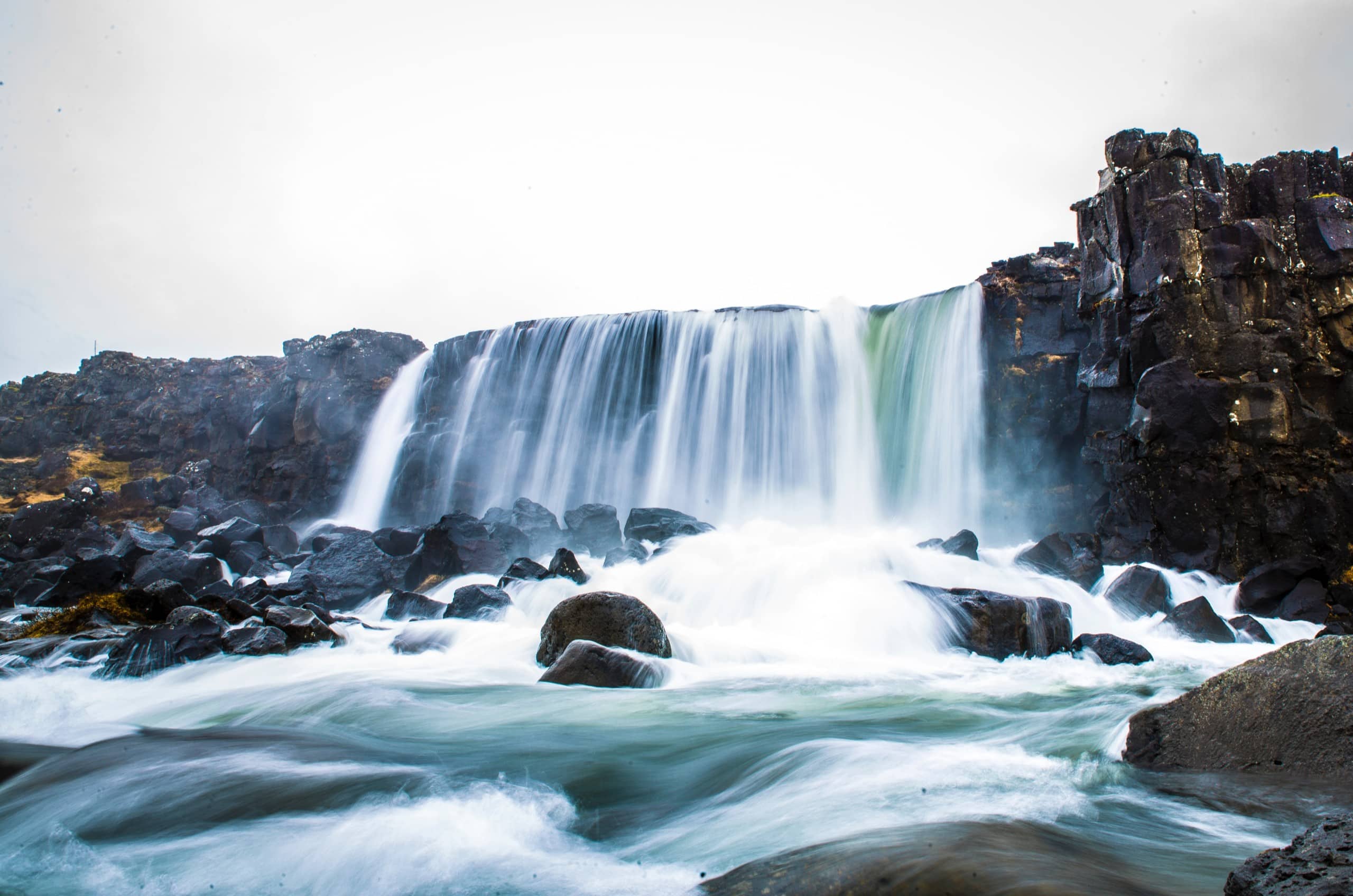
Þingvellir National Park, Geysir geothermal springs and Gullfoss waterfall are considered the holy trinity of attractions in southwest Iceland. How you choose to explore these sites is entirely up to you, though might we recommend our own Golden Circle bubble tour.
Not only will our experienced, friendly and professional guides show you around each location, but you’ll also spend the night in one of our great transparent bubbles. Only a short distance from all the main attractions, this novel choice of accommodation allows for utter immersion in the Icelandic wilderness.
The Golden Circle route has much to offer guests besides the three superstar attractions that have made it famous worldwide. Volcanic craters, luxury spas and fine-dining are all options when it comes to taking a diversion. Still, first things first, we must concentrate on the most beloved sites, starting with the infinitely fascinating national park, Þingvellir.

The Top Attractions on the Golden Circle in Iceland

Þingvellir National Park, Geysir geothermal springs and Gullfoss waterfall are considered the holy trinity of attractions in southwest Iceland. How you choose to explore these sites is entirely up to you, though might we recommend our own Golden Circle bubble tour.
Not only will our experienced, friendly and professional guides show you around each location, but you’ll also spend the night in one of our great transparent bubbles. Only a short distance from all the main attractions, this novel choice of accommodation allows for utter immersion in the Icelandic wilderness.
The Golden Circle route has much to offer guests besides the three superstar attractions that have made it famous worldwide. Volcanic craters, luxury spas and fine-dining are all options when it comes to taking a diversion. Still, first things first, we must concentrate on the most beloved sites, starting with the infinitely fascinating national park, Þingvellir.

Thingvellir National Park
Designated as a UNESCO World Heritage site since 2004, Þingvellir National Park is widely recognised for its beautiful environment, unique geology and essential role in Icelandic history.
After arriving at the modern Visitor’s Centre, most travellers begin their time here at the viewpoint, which provides staggering scope over the park. To the southeast, visitors will have a fantastic vantage over the glittering waters of Þingvallavatn—the largest natural lake in Iceland—as well as the iconic Þingvallakirkja church and several mountains and volcanoes.
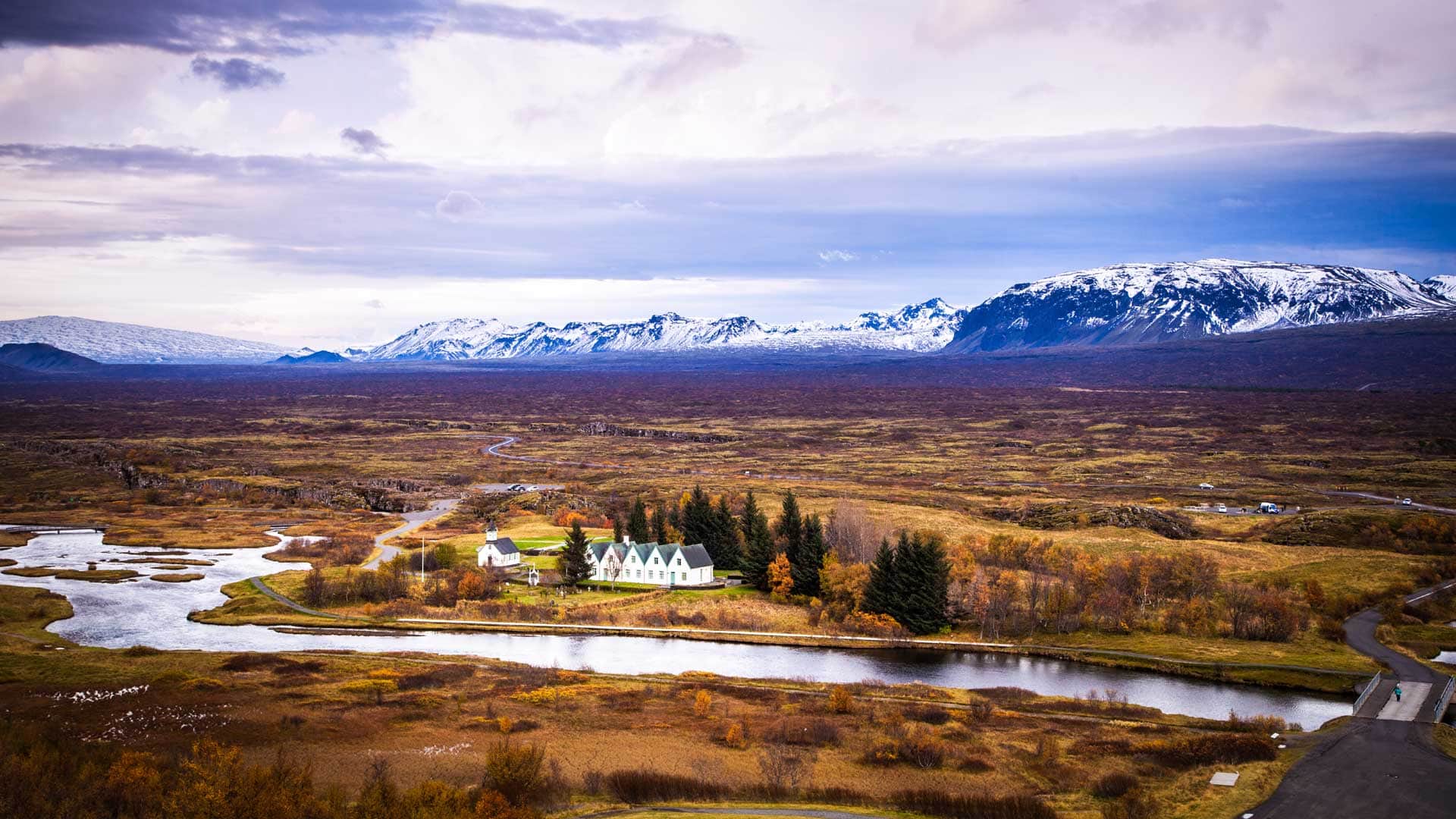
Given the viewpoint is situated atop the Almannagjá gorge, guests will find themselves standing on the edge of the North American tectonic plate, which stands exposed from the earth alongside the Eurasian plate, visible across the lava fields of the Mid-Atlantic Ridge.
The Mid-Atlantic ridge is colloquially referred to as a ‘Continental No-Man’s Land’. Indeed, the North American and Eurasian plates are drifting apart at a rate of 1 millimetre each year, securing this beautiful location as one of the most exciting examples of living geology on the planet.
A pathway leads from the viewpoint down alongside the North American plate, with display and information boards placed at the relevant points. These are more than worth stopping for as they provide a fantastic insight into the life-changing events in the area over the last 1000 years.
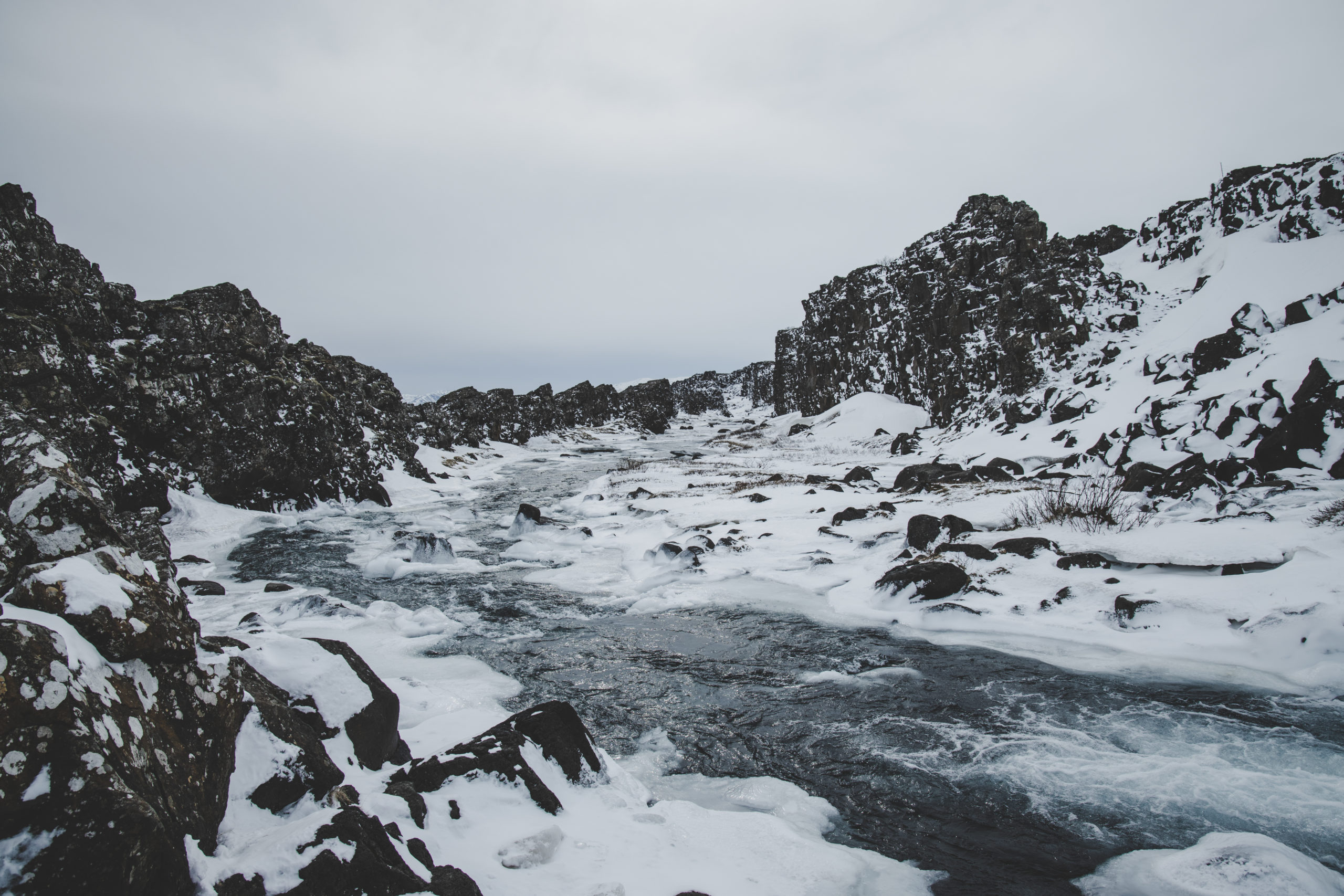
Among its most astounding claims to fame, Þingvellir was where the world’s oldest democratically elected parliament, the Alþingi, was formed around the year 930 AD. Large outdoor assemblies (known as things) would congregate here throughout the ages to enact new legislation, settle tribal disputes and punish criminals. It is for this reason that Þingvellir is translated to ‘Fields of Parliament‘.
One of the most critical decisions made here was to convert the Icelandic people en masse from Norse paganism to Christianity. This historically important event occurred in 1000 AD due to external pressure from outside nations unwilling to trade with heathens.
In Iceland, this incident is referred to as kristnitaka (“the taking of Christianity”). According to the ancient sagas, the Law Speaker, Þorgeir Þorkelsson, took three days and nights to decide Iceland’s religious future. Interestingly enough, Icelandic pagans were still permitted to worship the Norse pantheon of gods, the Æsir, as long as they did so in secret.
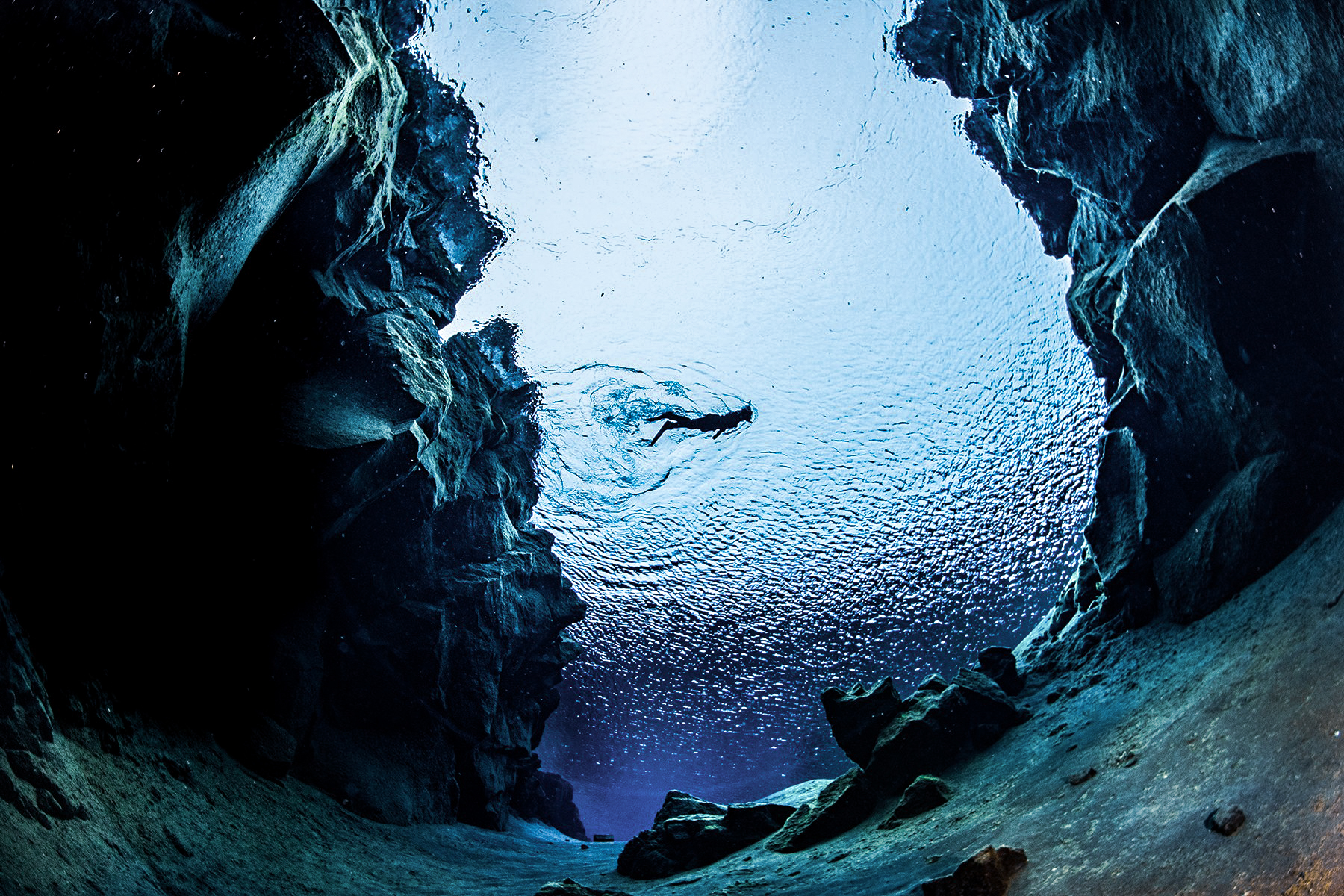
Back to our present day, one of the most appealing activities guests can partake in during the Golden Circle in Iceland is taking a dip in the crystalline glacial spring, Silfra Fissure. While at first, you might think it a daunting task, thermal drysuits, gloves and hoods ensure that anyone who takes to the water is well equipped to deal with the cold temperature.
Floating through this vast underwater canyon, you’ll be astonished by the beauty on offer. The water’s purity promises visibility of up to 100 metres, allowing you clear views over the site’s dark cliff sides and bright green algae. However, do note that you must be a competent swimmer to book a snorkelling tour, while diving tours require evidence of drysuit certification and logged coldwater dives.
If you decide you want to discover Silfra Fissure for yourself, we advise you to take the morning tour, rather than the afternoon. This way, we can pick you up from Þingvellir when your time in the water’s done, allowing you ample time to enjoy the rest of our unforgettable Golden Circle Bubble tour.
Available in both summer and the winter, you can check out more details on this package on our Guided Tours and Accommodation page.
Thingvellir National Park
Designated as a UNESCO World Heritage site since 2004, Þingvellir National Park is widely recognised for its beautiful environment, unique geology and essential role in Icelandic history.
After arriving at the modern Visitor’s Centre, most travellers begin their time here at the viewpoint, which provides staggering scope over the park. To the southeast, visitors will have a fantastic vantage over the glittering waters of Þingvallavatn—the largest natural lake in Iceland—as well as the iconic Þingvallakirkja church and several mountains and volcanoes.

Given the viewpoint is situated atop the Almannagjá gorge, guests will find themselves standing on the edge of the North American tectonic plate, which stands exposed from the earth alongside the Eurasian plate, visible across the lava fields of the Mid-Atlantic Ridge.
The Mid-Atlantic ridge is colloquially referred to as a ‘Continental No-Man’s Land’. Indeed, the North American and Eurasian plates are drifting apart at a rate of 1 millimetre each year, securing this beautiful location as one of the most exciting examples of living geology on the planet.
A pathway leads from the viewpoint down alongside the North American plate, with display and information boards placed at the relevant points. These are more than worth stopping for as they provide a fantastic insight into the life-changing events in the area over the last 1000 years.

Among its most astounding claims to fame, Þingvellir was where the world’s oldest democratically elected parliament, the Alþingi, was formed around the year 930 AD. Large outdoor assemblies (known as things) would congregate here throughout the ages to enact new legislation, settle tribal disputes and punish criminals. It is for this reason that Þingvellir is translated to ‘Fields of Parliament‘.
One of the most critical decisions made here was to convert the Icelandic people en masse from Norse paganism to Christianity. This historically important event occurred in 1000 AD due to external pressure from outside nations unwilling to trade with heathens.
In Iceland, this incident is referred to as kristnitaka (“the taking of Christianity”). According to the ancient sagas, the Law Speaker, Þorgeir Þorkelsson, took three days and nights to decide Iceland’s religious future. Interestingly enough, Icelandic pagans were still permitted to worship the Norse pantheon of gods, the Æsir, as long as they did so in secret.

Back to our present day, one of the most appealing activities guests can partake in during the Golden Circle in Iceland is taking a dip in the crystalline glacial spring, Silfra Fissure. While at first, you might think it a daunting task, thermal drysuits, gloves and hoods ensure that anyone who takes to the water is well equipped to deal with the cold temperature.
Floating through this vast underwater canyon, you’ll be astonished by the beauty on offer. The water’s purity promises visibility of up to 100 metres, allowing you clear views over the site’s dark cliff sides and bright green algae. However, do note that you must be a competent swimmer to book a snorkelling tour, while diving tours require evidence of drysuit certification and logged coldwater dives.
If you decide you want to discover Silfra Fissure for yourself, we advise you to take the morning tour, rather than the afternoon. This way, we can pick you up from Þingvellir when your time in the water’s done, allowing you ample time to enjoy the rest of our unforgettable Golden Circle Bubble tour.
Available in both summer and the winter, you can check out more details on this package on our Guided Tours and Accommodation page.
Geysir Geothermal Area
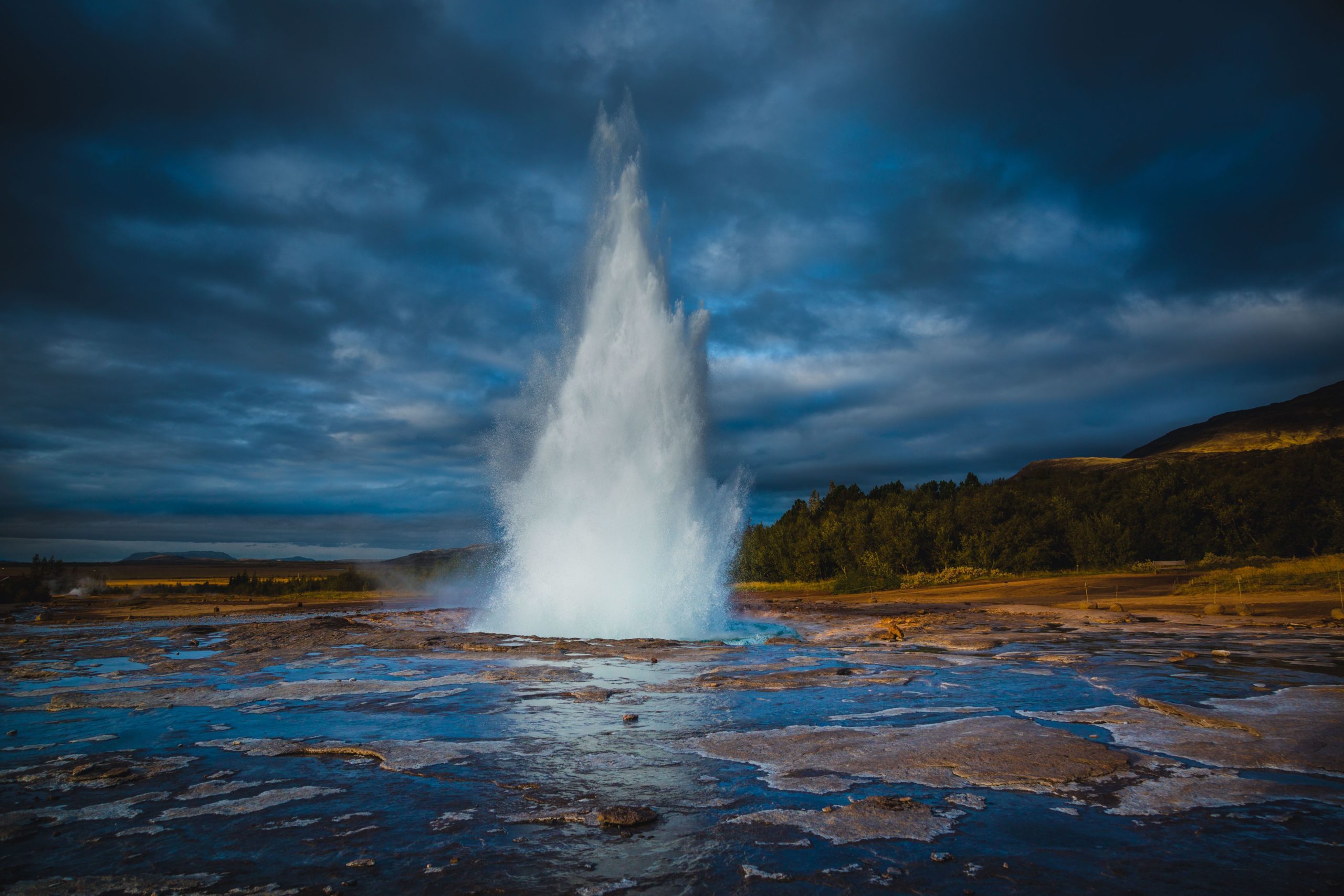
This phenomenal site is known as Haukadalur, though it is more commonly referred to by travel guides and locals as Geysir geothermal area. Either way, this area is one of the staples of the Golden Circle in Iceland, and is considered a favourite stop by many.
With its bubbling mud cauldrons and steaming fumaroles, this site is where the hot spring, Geysir, is found. Geysir is best known for lending its name to similar sites across the globe.
While Geysir is no longer active, its neighbour Strokkur has stolen the limelight over recent years with its high-octane, high-profile eruptions. With a name that translates to “churn,” it is perhaps no surprise that Strokkur routinely shoots boiling water to heights exceeding twenty metres, creating a true spectacle of nature.
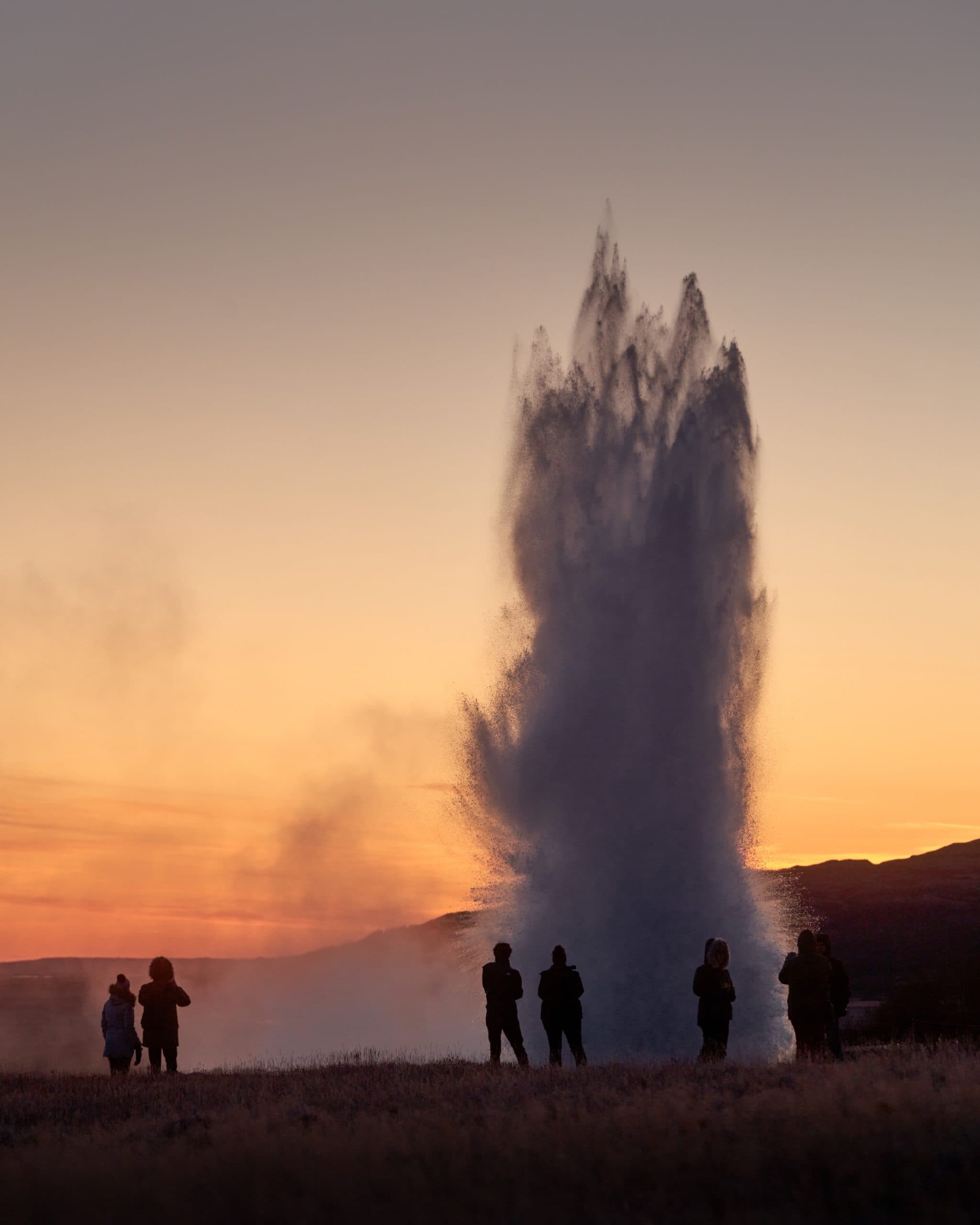
The hot spring jettisons water every five to ten minutes, so make sure to stick around on-site if you have yet to witness this incredible phenomenon in action. In the meantime, explore the many other small hot pockets and geothermal formations on-site. Make sure to keep a safe distance; however; the water is exceedingly hot and more than capable of causing injury.
Across the road from the geothermal site is the Geysir Centre, making for the perfect stop for a little respite and a bite-to-eat.
After you’ve finished tucking into the delicious food, dished up in a steaming buffet, feel free to wander back to the geothermal area in order to catch another glimpse of Strokkur in action before you go.
Geysir Geothermal Area

This phenomenal site is known as Haukadalur, though it is more commonly referred to by travel guides and locals as Geysir geothermal area. Either way, this area is one of the staples of the Golden Circle in Iceland, and is considered a favourite stop by many.
With its bubbling mud cauldrons and steaming fumaroles, this site is where the hot spring, Geysir, is found. Geysir is best known for lending its name to similar sites across the globe.
While Geysir is no longer active, its neighbour Strokkur has stolen the limelight over recent years with its high-octane, high-profile eruptions. With a name that translates to “churn,” it is perhaps no surprise that Strokkur routinely shoots boiling water to heights exceeding twenty metres, creating a true spectacle of nature.

The hot spring jettisons water every five to ten minutes, so make sure to stick around on-site if you have yet to witness this incredible phenomenon in action. In the meantime, explore the many other small hot pockets and geothermal formations on-site. Make sure to keep a safe distance; however; the water is exceedingly hot and more than capable of causing injury.
Across the road from the geothermal site is the Geysir Centre, making for the perfect stop for a little respite and a bite-to-eat.
After you’ve finished tucking into the delicious food, dished up in a steaming buffet, feel free to wander back to the geothermal area in order to catch another glimpse of Strokkur in action before you go.
Gullfoss Waterfall
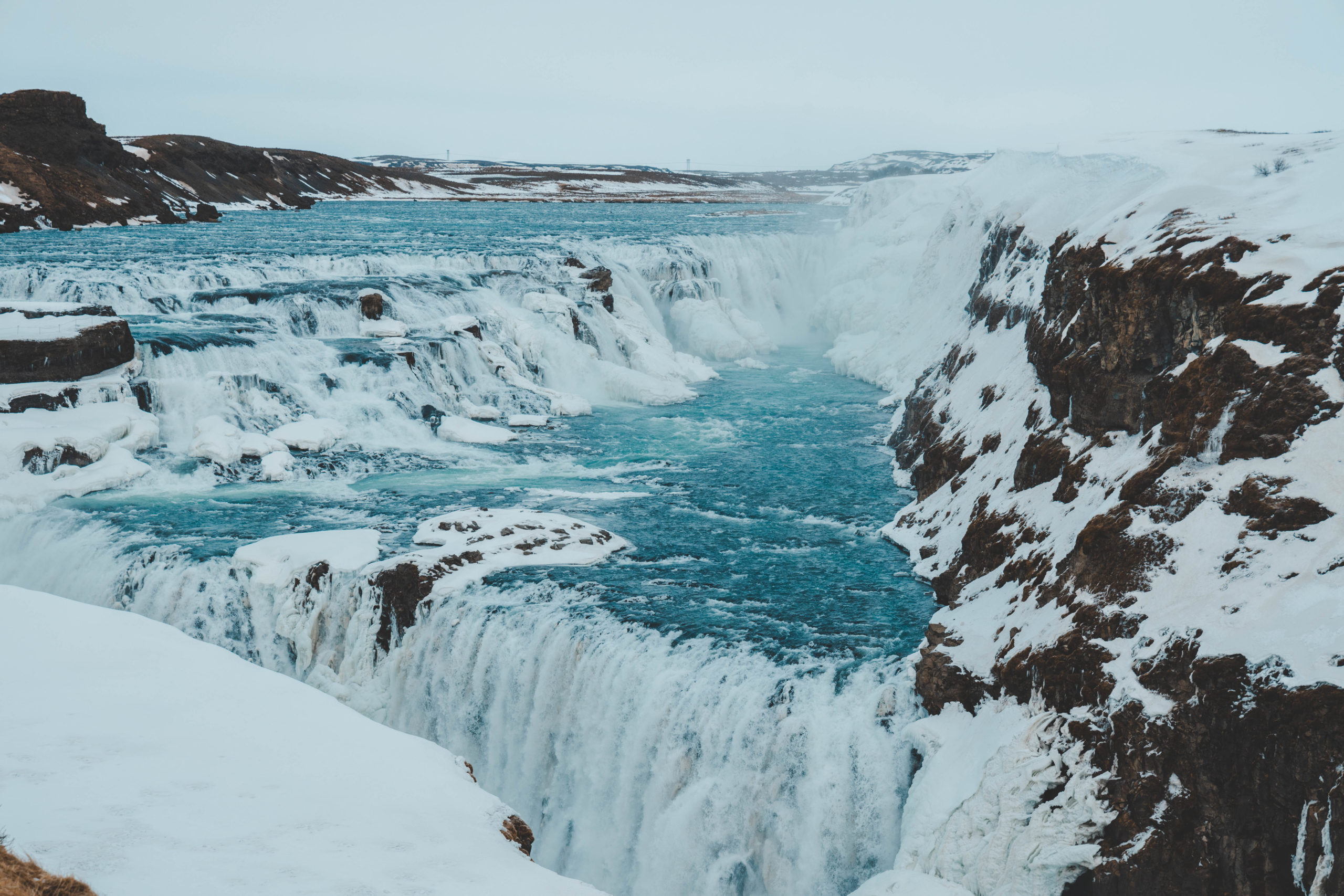
Gullfoss (“Golden Falls”) is a dramatic two-tier waterfall on the Hvítá river, located amidst the otherwise quaint agricultural surroundings of southwest Iceland. On approach, guests will likely spot an enormous plume of steam rising over the surrounding hilltops. So too will they hear the thunderous roar of rushing water. Then it appears, a true titan of the landscape.
Falling a total of 32 metres, Gullfoss cascades over two rocky steps, its frothing waters feeding the hungry mouth of Gullfossgjúfur canyon below. On either side of the river, the cliff sides rise to seventy metres, perfectly framing the waterfall for photographers looking upon it from either one of the site’s two viewpoints.
Pushing 140 cubic metres (459 cubic feet) of water every second of the summer, Gullfoss is a sight to behold. In the early 20th-century, there were plans to harness Gullfoss’ energy by building a Hydropower plant on site. Tómas Tómasson, who owned a farmstead at Gullfoss, refused to sign away ownership, famously telling the British businessmen in question, “I will not sell my friend!”
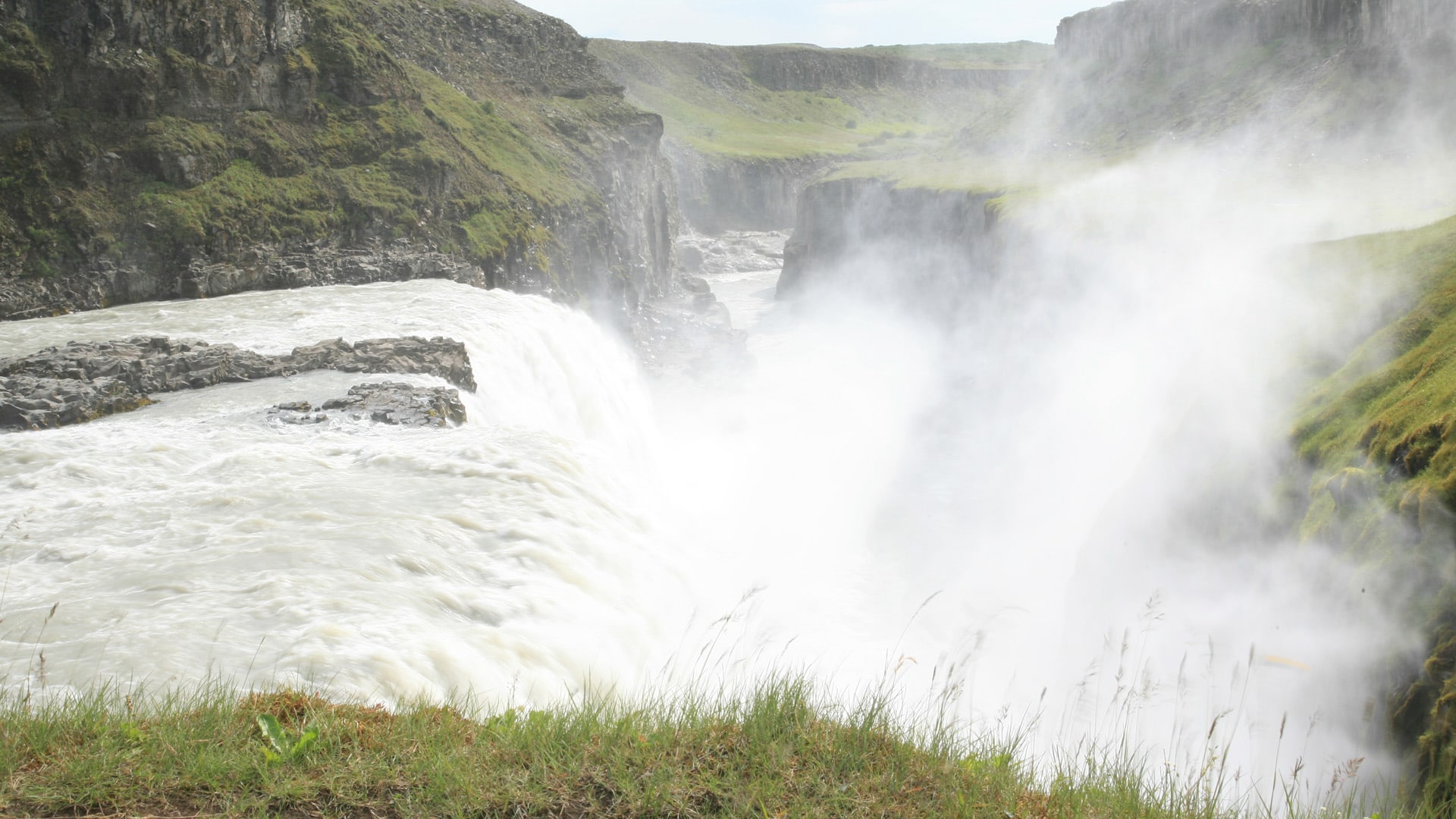
He did, however, allow for the land to be leased, opening a chapter in Icelandic history that has become close to mythos in the years since.
When plans to build the hydropower plant looked to be moving swiftly ahead, Tómas’ daughter, Sigriður, embroiled the buyers in a lengthy legal dispute, walking mile upon mile to court each day, and even going so far as to threaten to throw herself into Gullfoss’ raging waters should construction on the project begin.
Thankfully, the British defaulted on their payments, leaving Sigriður a hero to her people.
The rest, as they say, is history. Today, guests are free to enjoy Gullfoss as nature intended; a rare, soul-stirring feature destined to top bucket-lists for years to come. And before we forget, if you’re planning on seeing Gullfoss while discovering the Golden Circle in Iceland, make sure to bring your camera! You won’t want to forget this!
Gullfoss Waterfall

Gullfoss (“Golden Falls”) is a dramatic two-tier waterfall on the Hvítá river, located amidst the otherwise quaint agricultural surroundings of southwest Iceland. On approach, guests will likely spot an enormous plume of steam rising over the surrounding hilltops. So too will they hear the thunderous roar of rushing water. Then it appears, a true titan of the landscape.
Falling a total of 32 metres, Gullfoss cascades over two rocky steps, its frothing waters feeding the hungry mouth of Gullfossgjúfur canyon below. On either side of the river, the cliff sides rise to seventy metres, perfectly framing the waterfall for photographers looking upon it from either one of the site’s two viewpoints.
Pushing 140 cubic metres (459 cubic feet) of water every second of the summer, Gullfoss is a sight to behold. In the early 20th-century, there were plans to harness Gullfoss’ energy by building a Hydropower plant on site. Tómas Tómasson, who owned a farmstead at Gullfoss, refused to sign away ownership, famously telling the British businessmen in question, “I will not sell my friend!”

He did, however, allow for the land to be leased, opening a chapter in Icelandic history that has become close to mythos in the years since.
When plans to build the hydropower plant looked to be moving swiftly ahead, Tómas’ daughter, Sigriður, embroiled the buyers in a lengthy legal dispute, walking mile upon mile to court each day, and even going so far as to threaten to throw herself into Gullfoss’ raging waters should construction on the project begin.
Thankfully, the British defaulted on their payments, leaving Sigriður a hero to her people.
The rest, as they say, is history. Today, guests are free to enjoy Gullfoss as nature intended; a rare, soul-stirring feature destined to top bucket-lists for years to come. And before we forget, if you’re planning on seeing Gullfoss while discovering the Golden Circle in Iceland, make sure to bring your camera! You won’t want to forget this!
Hidden Gems near the Golden Circle in Iceland
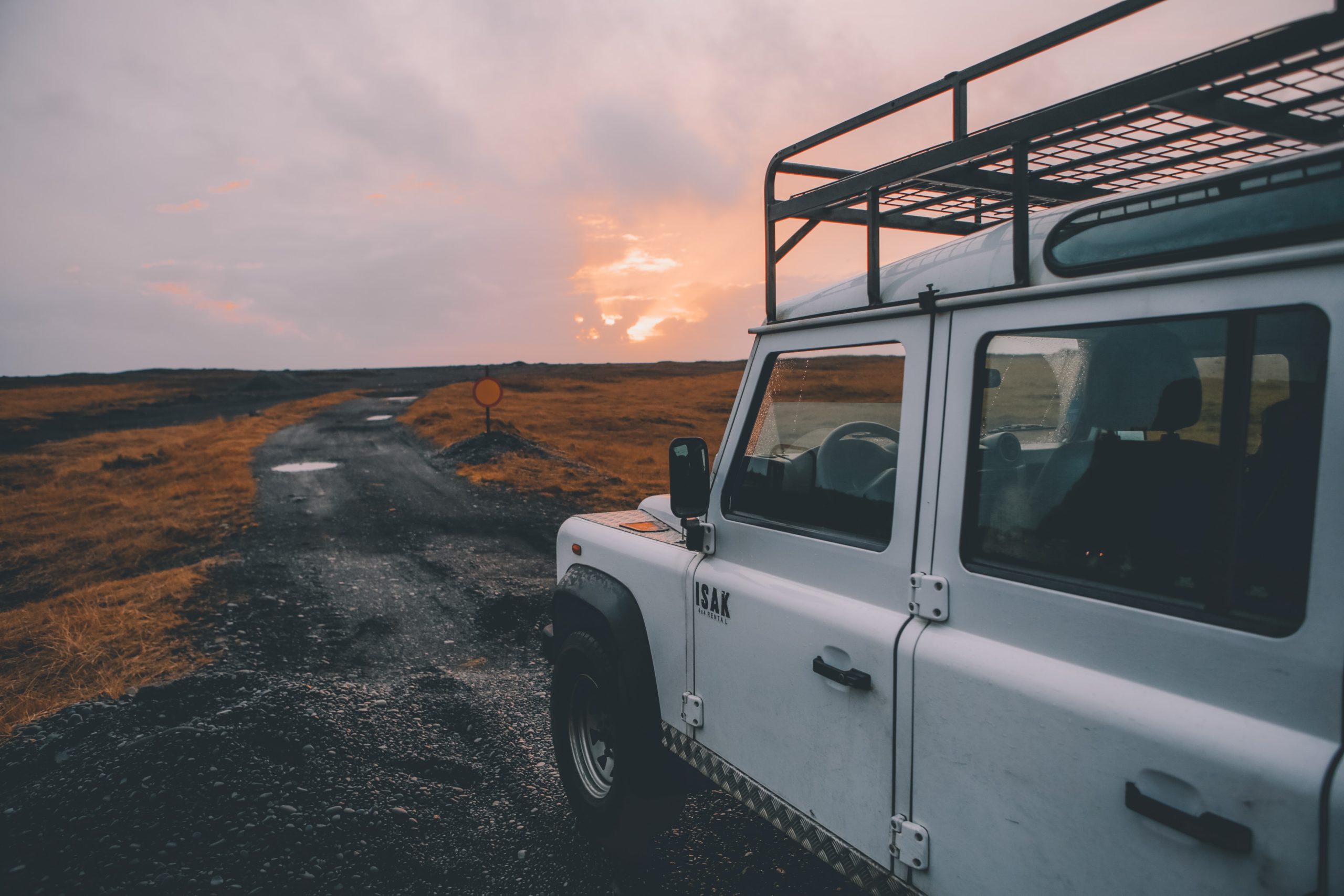
As mentioned previously, there are several extras, hidden attractions that can be visited on the Golden Circle in Iceland for those who make the time. For one thing, guests can access several small towns and villages during their travels in the area.
Secret Lagoon in Flúðir Village
Flúðir is a picturesque settlement famed for the pillars of steam that billow at street-level, a sure sign of the geothermal underbelly on which the town rests.
With a population of little over 800 people, Flúðir is a great spot to grab some lunch between Geysir hot springs and Gullfoss waterfall.
The village’s hot springs are put to use at the Secret Lagoon, which has put Flúðir on the map since 1891. As one of the country’s oldest social hubs, there is a real air of authenticity bathing here, matched only by the intrigue and awe one feels looking at the live hot springs surrounding the pool itself.
If you book a Golden Circle Bubble trip with us, you’ll be sure to spend some quality time soaking in the luxurious waters of this popular stop.
Laugarvatn Fontana Spa
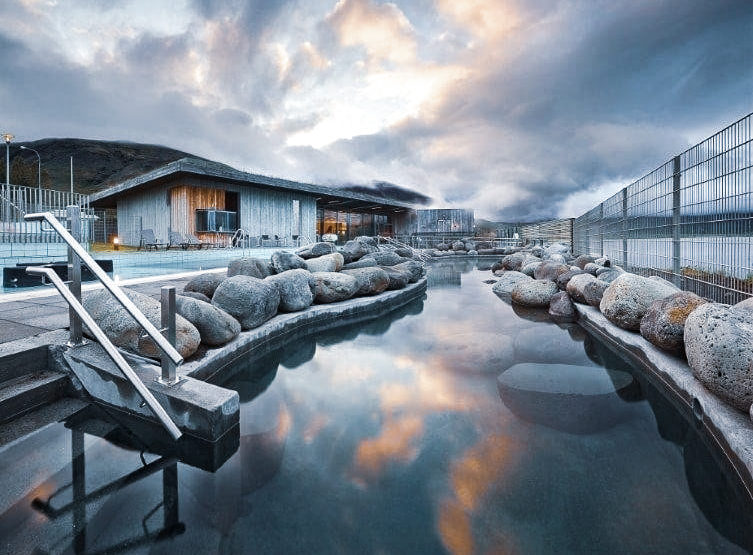
Those looking for an alternative spa to the Secret Lagoon should stop by Laugarvatn Fontana, which can be found central to the Golden Circle in Iceland. Complete with steam rooms, outdoor mineral baths, hot tubs and a Finnish-style sauna, Laugarvatn Fontana should be seen as the perfect rest stop for sightseers in the area.
Aside from allowing visitors to use their soothing facilities, the staff will also demonstrate how bread was baked in Iceland using geothermal energy. Starting from an old Icelandic recipe, Fontana’s bakery will dig their loaf into the warm ground, only to dig it up baked a full day later, finally serving it with a smidge of butter and a warm brew.
Mika Restaurant in Reykholt
Reykholt is another perfect village for taking a welcome lunch or dinner break while partaking in the Golden Circle in Iceland. The acclaimed restaurant Mika should be your number-stop if you’re feeling peckish for two reasons. First, their menu is superb, and second, they offer a range of homemade confectionery. What more could a hungry traveller ask for?
Renowned for its fresh and organic dishes, anyone taking part in our Golden Circle Bubble tour will get to sample Mika’s wide selection of delicious meals for themselves. Might we personally recommend the roasted lobster, served with garlic butter, or perhaps their lamb-stuffed pierogi pasta pillows?
Friðheimar tomato farm
A visit to Friðheimar is not so much a lunch stop as it is a fantastic all-round experience, perfect for families looking to add value to their time on the Golden Circle in Iceland.
Specialising in four tomato varieties, guests will eat directly inside the greenhouses, right beside where the fruit grows on the vine. Experts in horticulture, the green fingers behind Friðheimar grow tomatoes year-round, using artificial lighting to combat Iceland’s dark winters days.
After tucking into a lip-smacking course of mussels doused in tomato and basil sauce, or perhaps, a homemade Icelandic burrata, you can spectate the epic horse show that’s been entertaining guests since 2013.
Kerið volcanic crater
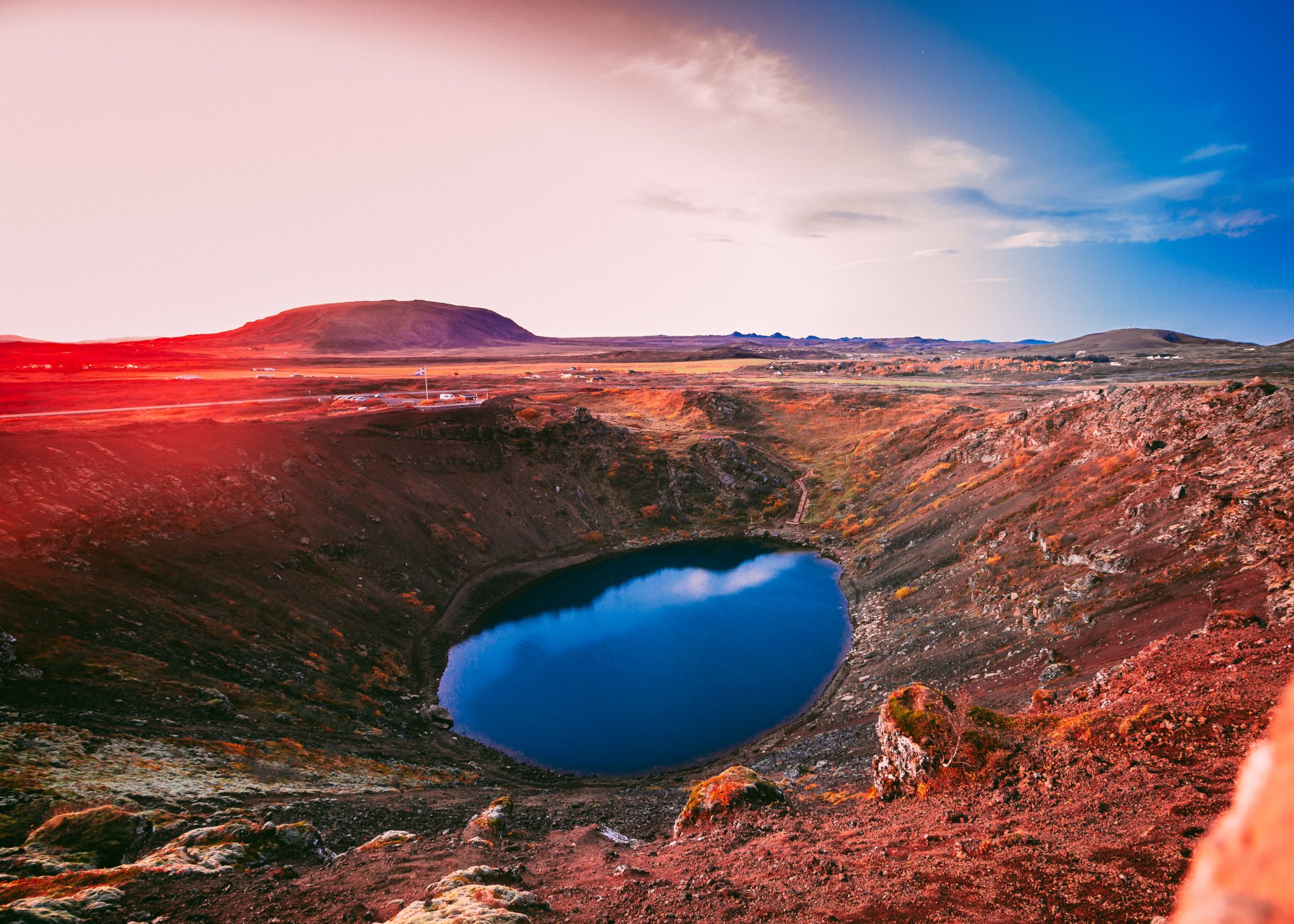
The Golden Circle in Iceland has many detours, the most famous of which, arguably, is Kerið volcanic crater. At around 3000 years old, Kerið is considered much younger than other volcanic features found in the Grímsnes area.
With its sloping scarlet walls, glistening basin pool and circular walking trail around the lip of the caldera, this stunning remnant of prior eruptions is a sight to behold.
An entrance fee of 400 ISK has been imposed to see this attraction, making it something of an anomaly in Iceland.
Hidden Waterfalls
You can see other natural sites during your time on the Golden Circle in Iceland, including Brúarfoss (‘Bridge Falls’) and Faxi waterfalls, both magnificent in their own right. While nowhere near as powerful as Gullfoss, each waterfall boasts a unique, photogenic beauty that makes diverting from the well-trodden path all the more worth it.
Brúarfoss is named after the large rock archway that once crossed the water, since disappeared due to water erosion. While this feature is long lost to time, the water’s vibrancy here is what really draws the eye.
Toned in a gorgeous aquamarine blue, Brúarfoss is a delight for photographers looking to pull colour from the Icelandic landscape.
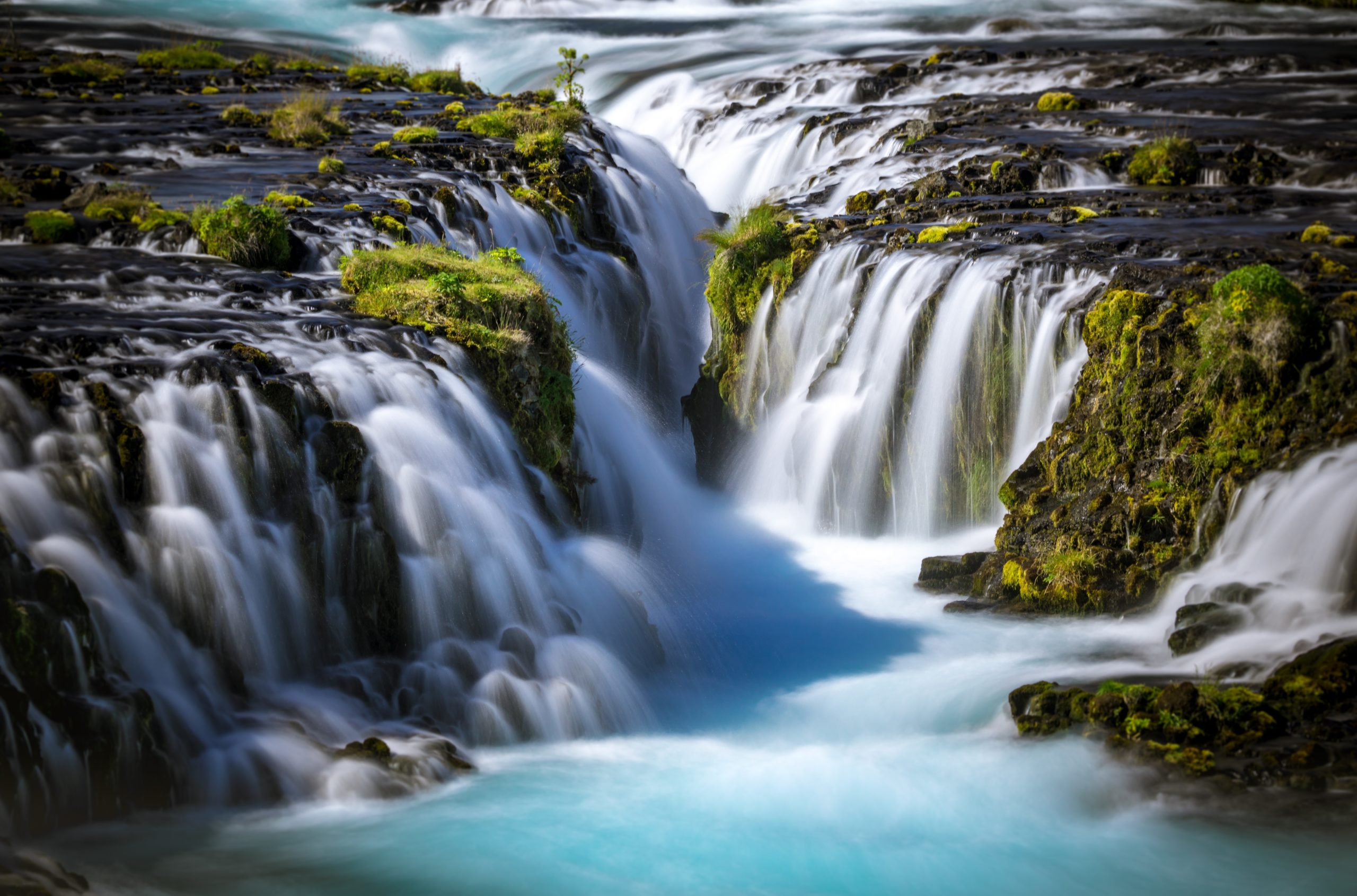
Faxi is around 12 kilometres from Geysir, 20 kilometres from Gullfoss, making it a quick and easy distraction during your day on the Golden Circle in Iceland. As part of the Tungufljót river, Faxi is at once recognisable thanks to its 80-metre width, far more significant than its relatively meagre height of 7-metres.
Though something of a mystery, Faxi waterfall is also known as Vatnsleysufoss, which roughly translates to “No Water Falls”. It’s hard to understand how such a name could come about given the power and beauty on display.
Langjökull Glacier
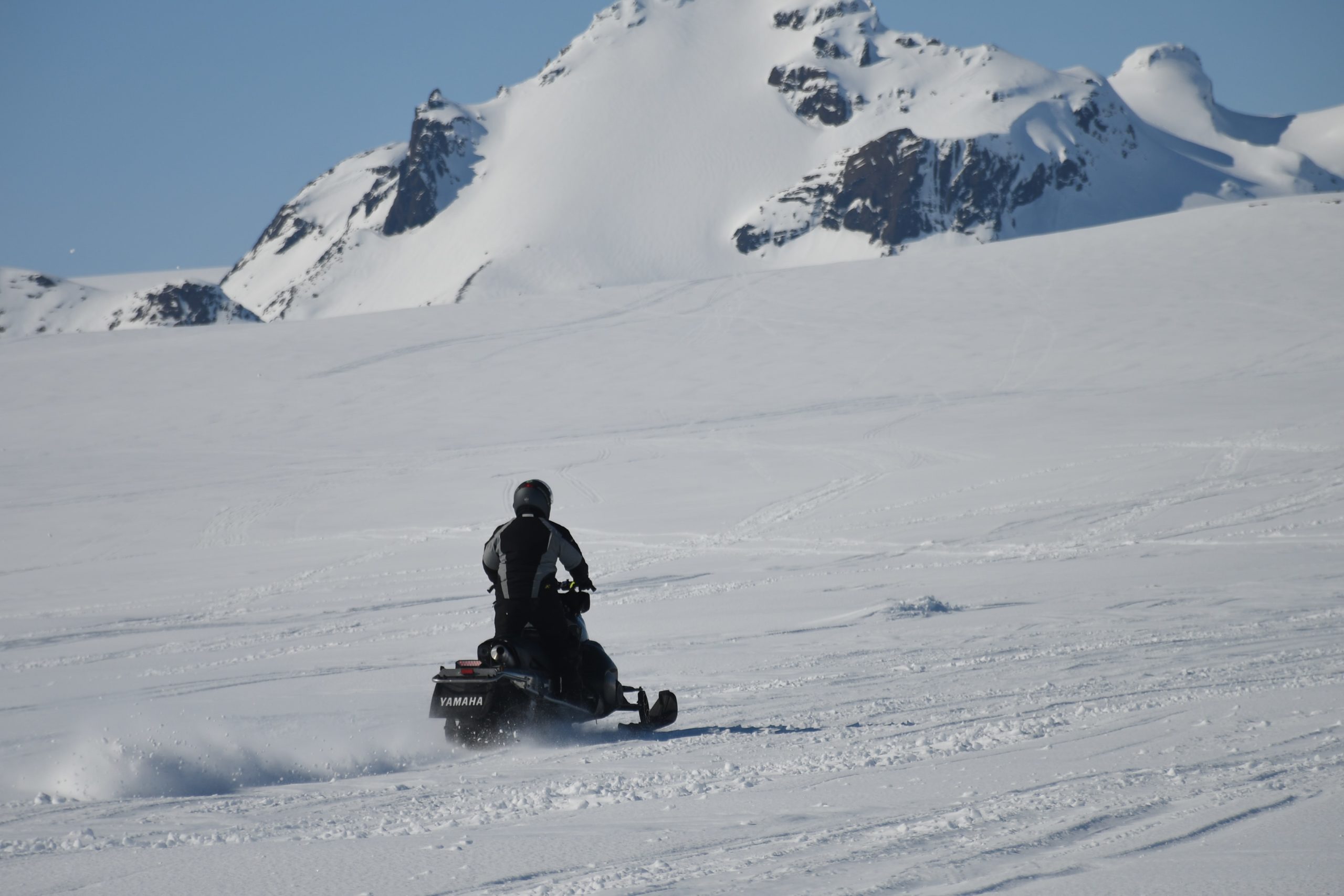
Adventurers looking for a real thrill-ride might opt for a spot of snowmobiling on the mighty glacier Langjökull (“Long Glacier”). As you might expect, snowmobiling is a popular activity for day-trippers in the southwest, offering breath-taking views, bare-knuckle speeds and a visit to one of the country’s most beautiful ice caps.
Langjökull is Iceland’s second biggest ice cap after Vatnajökull, at the opposite end of the country. With a volume of 195 km³, Langjökull’s ice can reach up to 580 metres in thickness. Its water feeds into numerous rivers in the country, and even that found in Silfra Fissure can trace its origins back to the glacier.
Hidden Gems near the Golden Circle in Iceland

As mentioned previously, there are several extras, hidden attractions that can be visited on the Golden Circle in Iceland for those who make the time. For one thing, guests can access several small towns and villages during their travels in the area.
Secret Lagoon in Flúðir Village
Flúðir is a picturesque settlement famed for the pillars of steam that billow at street-level, a sure sign of the geothermal underbelly on which the town rests.
With a population of little over 800 people, Flúðir is a great spot to grab some lunch between Geysir hot springs and Gullfoss waterfall.
The village’s hot springs are put to use at the Secret Lagoon, which has put Flúðir on the map since 1891. As one of the country’s oldest social hubs, there is a real air of authenticity bathing here, matched only by the intrigue and awe one feels looking at the live hot springs surrounding the pool itself.
If you book a Golden Circle Bubble trip with us, you’ll be sure to spend some quality time soaking in the luxurious waters of this popular stop.
Laugarvatn Fontana Spa

Those looking for an alternative spa to the Secret Lagoon should stop by Laugarvatn Fontana, which can be found central to the Golden Circle in Iceland. Complete with steam rooms, outdoor mineral baths, hot tubs and a Finnish-style sauna, Laugarvatn Fontana should be seen as the perfect rest stop for sightseers in the area.
Aside from allowing visitors to use their soothing facilities, the staff will also demonstrate how bread was baked in Iceland using geothermal energy. Starting from an old Icelandic recipe, Fontana’s bakery will dig their loaf into the warm ground, only to dig it up baked a full day later, finally serving it with a smidge of butter and a warm brew.
Mika Restaurant in Reykholt
Reykholt is another perfect village for taking a welcome lunch or dinner break while partaking in the Golden Circle in Iceland. The acclaimed restaurant Mika should be your number-stop if you’re feeling peckish for two reasons. First, their menu is superb, and second, they offer a range of homemade confectionery. What more could a hungry traveller ask for?
Renowned for its fresh and organic dishes, anyone taking part in our Golden Circle Bubble tour will get to sample Mika’s wide selection of delicious meals for themselves. Might we personally recommend the roasted lobster, served with garlic butter, or perhaps their lamb-stuffed pierogi pasta pillows?
Friðheimar tomato farm
A visit to Friðheimar is not so much a lunch stop as it is a fantastic all-round experience, perfect for families looking to add value to their time on the Golden Circle in Iceland.
Specialising in four tomato varieties, guests will eat directly inside the greenhouses, right beside where the fruit grows on the vine. Experts in horticulture, the green fingers behind Friðheimar grow tomatoes year-round, using artificial lighting to combat Iceland’s dark winters days.
After tucking into a lip-smacking course of mussels doused in tomato and basil sauce, or perhaps, a homemade Icelandic burrata, you can spectate the epic horse show that’s been entertaining guests since 2013.
Kerið volcanic crater

The Golden Circle in Iceland has many detours, the most famous of which, arguably, is Kerið volcanic crater. At around 3000 years old, Kerið is considered much younger than other volcanic features found in the Grímsnes area.
With its sloping scarlet walls, glistening basin pool and circular walking trail around the lip of the caldera, this stunning remnant of prior eruptions is a sight to behold.
An entrance fee of 400 ISK has been imposed to see this attraction, making it something of an anomaly in Iceland.
Hidden Waterfalls
You can see other natural sites during your time on the Golden Circle in Iceland, including Brúarfoss (‘Bridge Falls’) and Faxi waterfalls, both magnificent in their own right. While nowhere near as powerful as Gullfoss, each waterfall boasts a unique, photogenic beauty that makes diverting from the well-trodden path all the more worth it.
Brúarfoss is named after the large rock archway that once crossed the water, since disappeared due to water erosion. While this feature is long lost to time, the water’s vibrancy here is what really draws the eye.
Toned in a gorgeous aquamarine blue, Brúarfoss is a delight for photographers looking to pull colour from the Icelandic landscape.

Faxi is around 12 kilometres from Geysir, 20 kilometres from Gullfoss, making it a quick and easy distraction during your day on the Golden Circle in Iceland. As part of the Tungufljót river, Faxi is at once recognisable thanks to its 80-metre width, far more significant than its relatively meagre height of 7-metres.
Though something of a mystery, Faxi waterfall is also known as Vatnsleysufoss, which roughly translates to “No Water Falls”. It’s hard to understand how such a name could come about given the power and beauty on display.
Langjökull Glacier

Adventurers looking for a real thrill-ride might opt for a spot of snowmobiling on the mighty glacier Langjökull (“Long Glacier”). As you might expect, snowmobiling is a popular activity for day-trippers in the southwest, offering breath-taking views, bare-knuckle speeds and a visit to one of the country’s most beautiful ice caps.
Langjökull is Iceland’s second biggest ice cap after Vatnajökull, at the opposite end of the country. With a volume of 195 km³, Langjökull’s ice can reach up to 580 metres in thickness. Its water feeds into numerous rivers in the country, and even that found in Silfra Fissure can trace its origins back to the glacier.
Are there trees in Iceland?
Are there trees in Iceland?
By Michael Chapman
Reforestation efforts are underway to restore Iceland's formerly lush woodlands.
Yes, visitors will find many tree species across the country, the most common being Birch, Poplar, Pine and Rowan. However, there is no denying that Iceland is deprived of vast wooded areas, with only a few locations—including Hallormsstaðaskógur in East Iceland, and Reykjavík's Öskjuhlíð Hill—that constitute actual forests.
While forests are an everyday sight across much of mainland Europe and North America, Iceland bucks the trend, trading in its trees for stark lava fields, glacial valleys and vast black sand deserts. Where there are trees, they tend to be young, relatively small and concentrated in preorganised patches. Such diminutive woodlands has led to the widely-shared Icelandic wisecrack;
‘What’s your best move if you get lost in an Icelandic forest?’
‘Just stand up!’
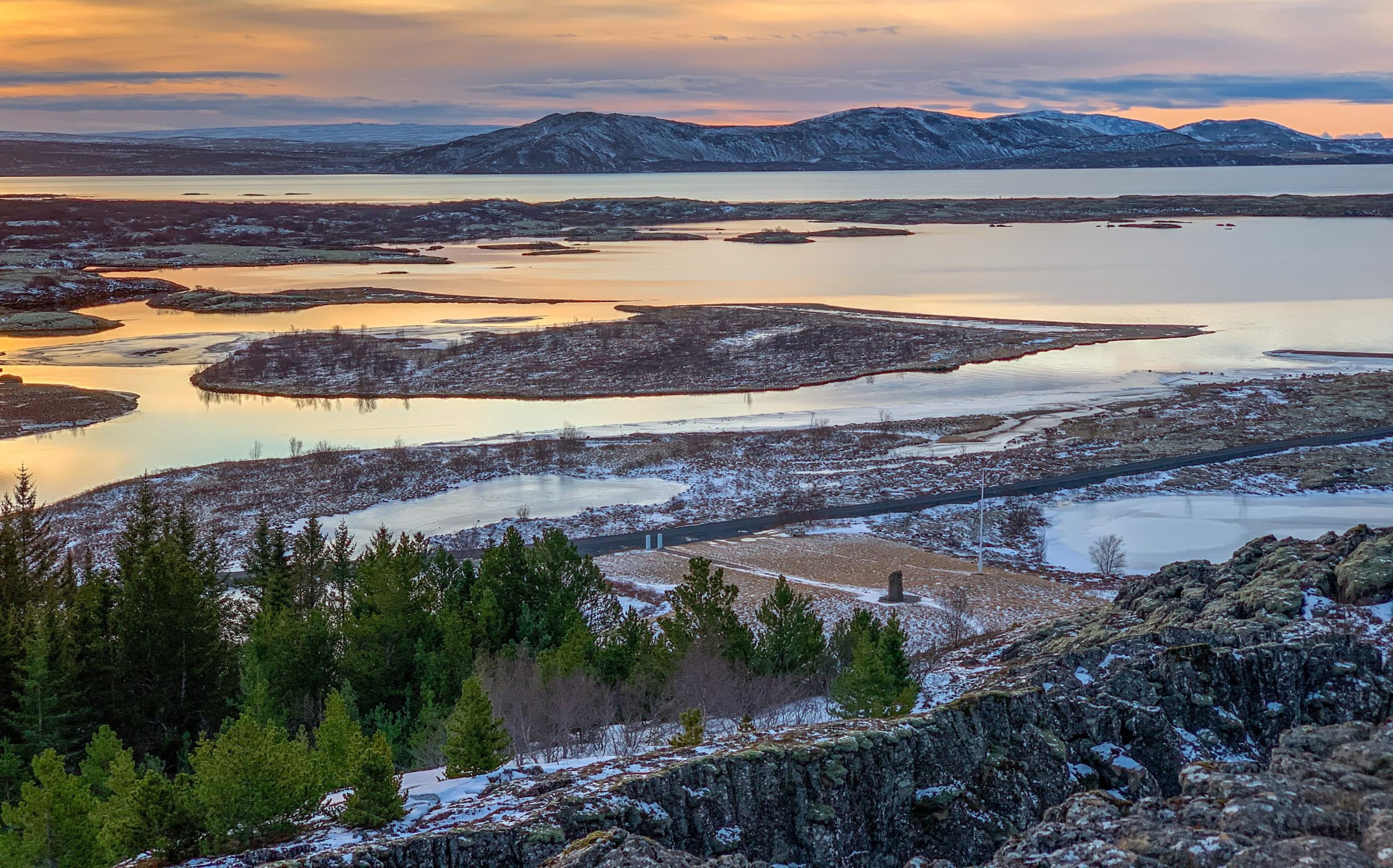
This absence of sprawling forests—or, indeed many trees at all—is one of the first things international visitors notice upon their arrival. Stepping out of Keflavík Airport, the gnarled, liquorice-black rocks of Reykjanes Peninsula are visible at once, stretching out to distant hilltops whose sparse slopes are forever exposed to the elements.
This scarcity of flora leaves us with a poignant question. Has Iceland always been short of trees, and if not, what happened to change the look, no less the make-up of this island so drastically?
Yes, visitors will find many tree species across the country, the most common being Birch, Poplar, Pine and Rowan. However, there is no denying that Iceland is deprived of vast wooded areas, with only a few locations—including Hallormsstaðaskógur in East Iceland, and Reykjavík’s Öskjuhlíð Hill—that constitute actual forests.
While forests are an everyday sight across much of mainland Europe and North America, Iceland bucks the trend, trading in its trees for stark lava fields, glacial valleys and vast black sand deserts. Where there are trees, they tend to be young, relatively small and concentrated in preorganised patches. Such diminutive woodlands has led to the widely-shared Icelandic wisecrack;
‘What’s your best move if you get lost in an Icelandic forest?’
‘Just stand up!’

This absence of sprawling forests—or, indeed many trees at all—is one of the first things international visitors notice upon their arrival. Stepping out of Keflavík Airport, the gnarled, liquorice-black rocks of Reykjanes Peninsula are visible at once, stretching out to distant hilltops whose sparse slopes are forever exposed to the elements.
This scarcity of flora leaves us with a poignant question. Has Iceland always been short of trees, and if not, what happened to change the look, no less the make-up of this island so drastically?
How did Iceland lose its forests?
The picturesque and instantly-recognisable desolation that characterises much of Iceland was not always so prominent. Whereas meadows and deserts, glacial expanses and steamy geothermal highlands are now considered iconic of Icelandic nature, the island has changed dramatically over the centuries.
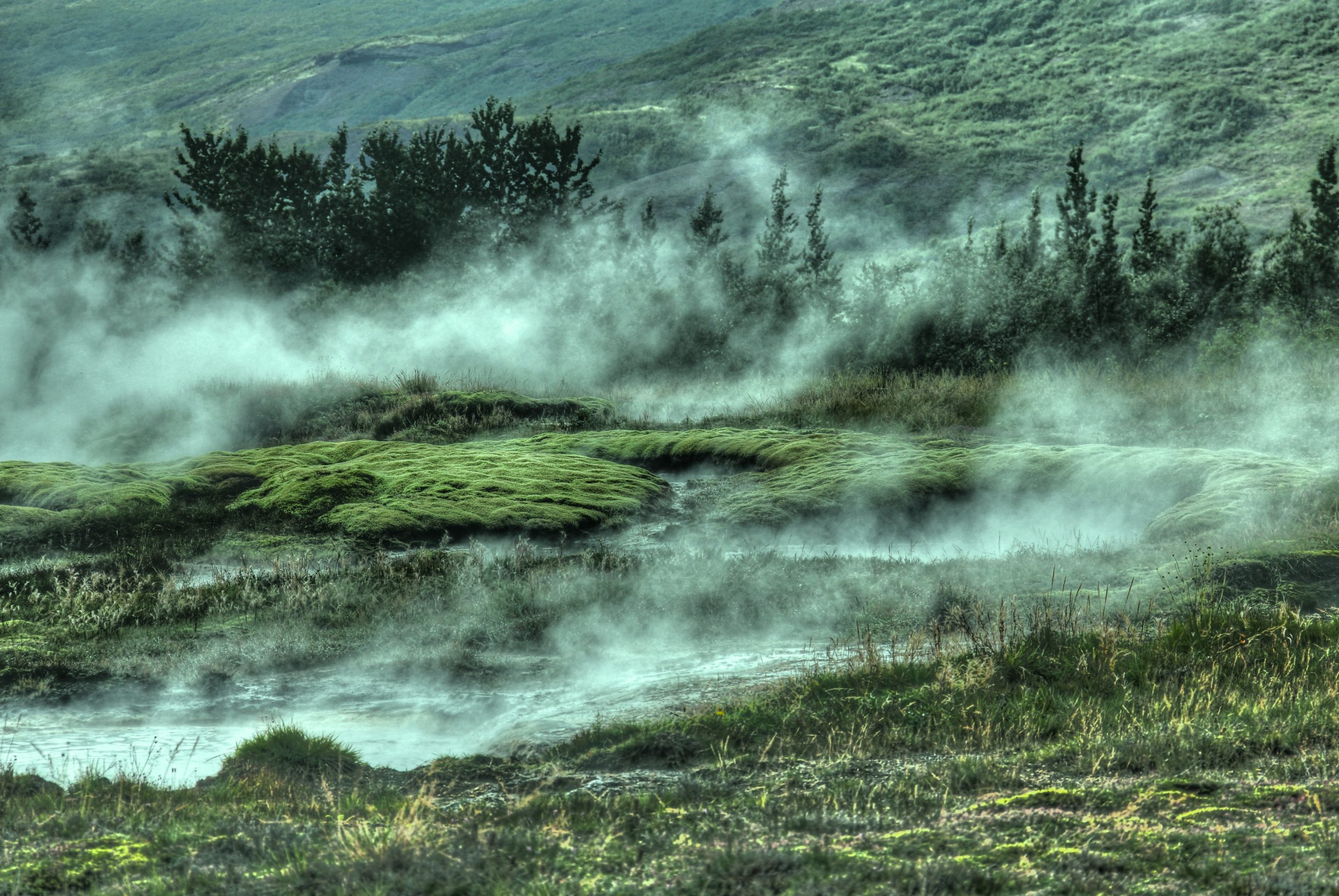
According to scientific records, between 20-40% of the country was dense with forest cover when humans first arrived around 870 AD. The ancient Landnámabók—a saga better known as the Book of Settlement—confirms this with its poetic description of land “covered with wood between the seashore and the mountains.”
In a bid to survive the hardships of their newfound home, the early settlers chopped down trees with alarming speed, using the timber for fuel, home and shipbuilding, while clearing the remainder of the space for agriculture—typical for all agrarian societies. Given that the landmass was only 15 million years old at the settlement point, it is widely agreed upon among scientists that the ecosystem was not primed to deal with such a sudden influx of resource-hungry organisms.
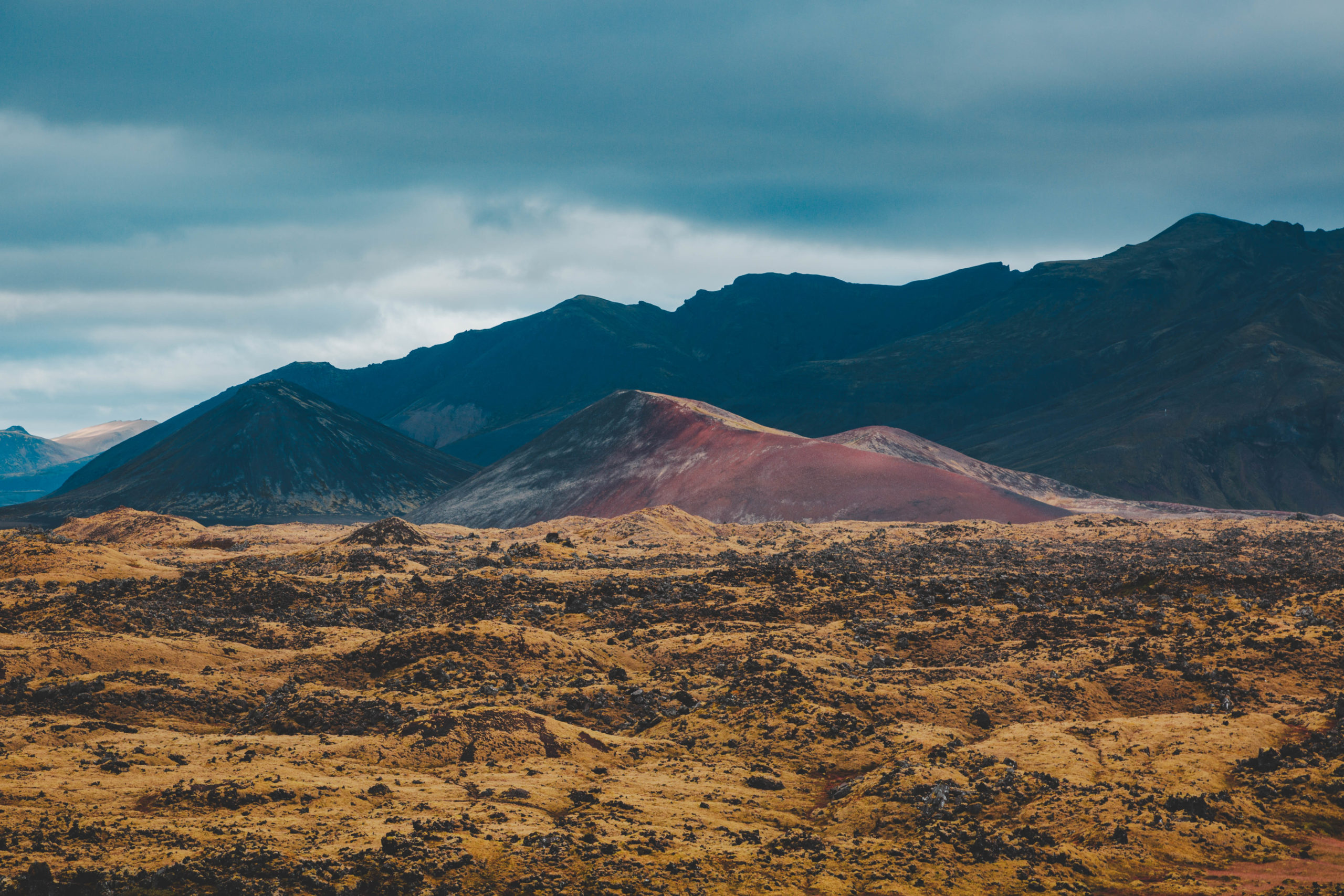
Charcoal was an essential product sourced from the forest, vital for the smelting of iron and manufacturing of tools. This reliance on charcoal was only alleviated in the mid-19th century when Icelandic farmers could import new equipment from overseas. The local people were still using wood as fuel to heat their homes as late as 1940, which is an incredible thought given the country’s self-reliance on geothermal energy today.
By then, of course, much of the landscape had already been pilfered of its resources. Eyeing our surroundings now, the most evident reminder of the settlers’ past action is the barren and windswept country they left behind.
Though so not visible, another lasting consequence is soil quality, which is decidedly poor here in Iceland. Soil erosion is the greatest obstacle faced by those looking to reforest the land and refers to how the top layer of any given soil is displaced over time by water, wind and ice.
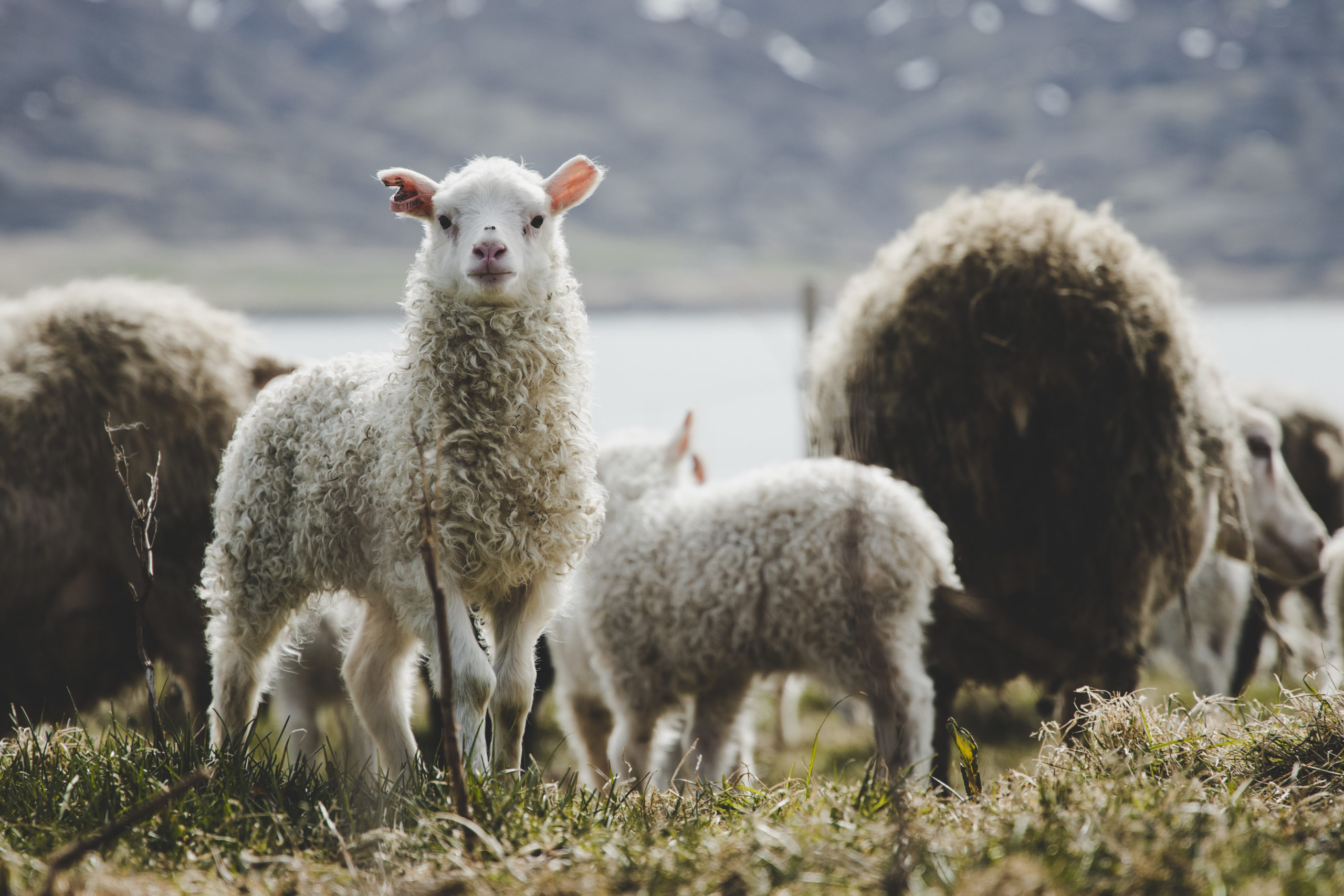
Farming is among the worst culprits of soil erosion. Given that sheep have been a staple of the Icelandic diet since around 1300 AD, local agriculture has had enormous influence over which flora prospers, and which dies out. Many foresters refer to Iceland as the ‘wet desert’ given the difficulties of planting now flora.
Humans and livestock are not solely to blame for Iceland’s deforestation, however. Sporadic volcanic disturbances and various periods of rapid cooling can also be pegged as reasons for why Iceland’s forests diminished in such a short period.
How did Iceland lose its forests?
The picturesque and instantly-recognisable desolation that characterises much of Iceland was not always so prominent. Whereas meadows and deserts, glacial expanses and steamy geothermal highlands are now considered iconic of Icelandic nature, the island has changed dramatically over the centuries.

According to scientific records, between 20-40% of the country was dense with forest cover when humans first arrived around 870 AD. The ancient Landnámabók—a saga better known as the Book of Settlement—confirms this with its poetic description of land “covered with wood between the seashore and the mountains.”
In a bid to survive the hardships of their newfound home, the early settlers chopped down trees with alarming speed, using the timber for fuel, home and shipbuilding, while clearing the remainder of the space for agriculture—typical for all agrarian societies. Given that the landmass was only 15 million years old at the settlement point, it is widely agreed upon among scientists that the ecosystem was not primed to deal with such a sudden influx of resource-hungry organisms.

Charcoal was an essential product sourced from the forest, vital for the smelting of iron and manufacturing of tools. This reliance on charcoal was only alleviated in the mid-19th century when Icelandic farmers could import new equipment from overseas. The local people were still using wood as fuel to heat their homes as late as 1940, which is an incredible thought given the country’s self-reliance on geothermal energy today.
By then, of course, much of the landscape had already been pilfered of its resources. Eyeing our surroundings now, the most evident reminder of the settlers’ past action is the barren and windswept country they left behind.
Though so not visible, another lasting consequence is soil quality, which is decidedly poor here in Iceland. Soil erosion is the greatest obstacle faced by those looking to reforest the land and refers to how the top layer of any given soil is displaced over time by water, wind and ice.

Farming is among the worst culprits of soil erosion. Given that sheep have been a staple of the Icelandic diet since around 1300 AD, local agriculture has had enormous influence over which flora prospers, and which dies out. Many foresters refer to Iceland as the ‘wet desert’ given the difficulties of planting now flora.
Humans and livestock are not solely to blame for Iceland’s deforestation, however. Sporadic volcanic disturbances and various periods of rapid cooling can also be pegged as reasons for why Iceland’s forests diminished in such a short period.
Is Iceland planting new trees?
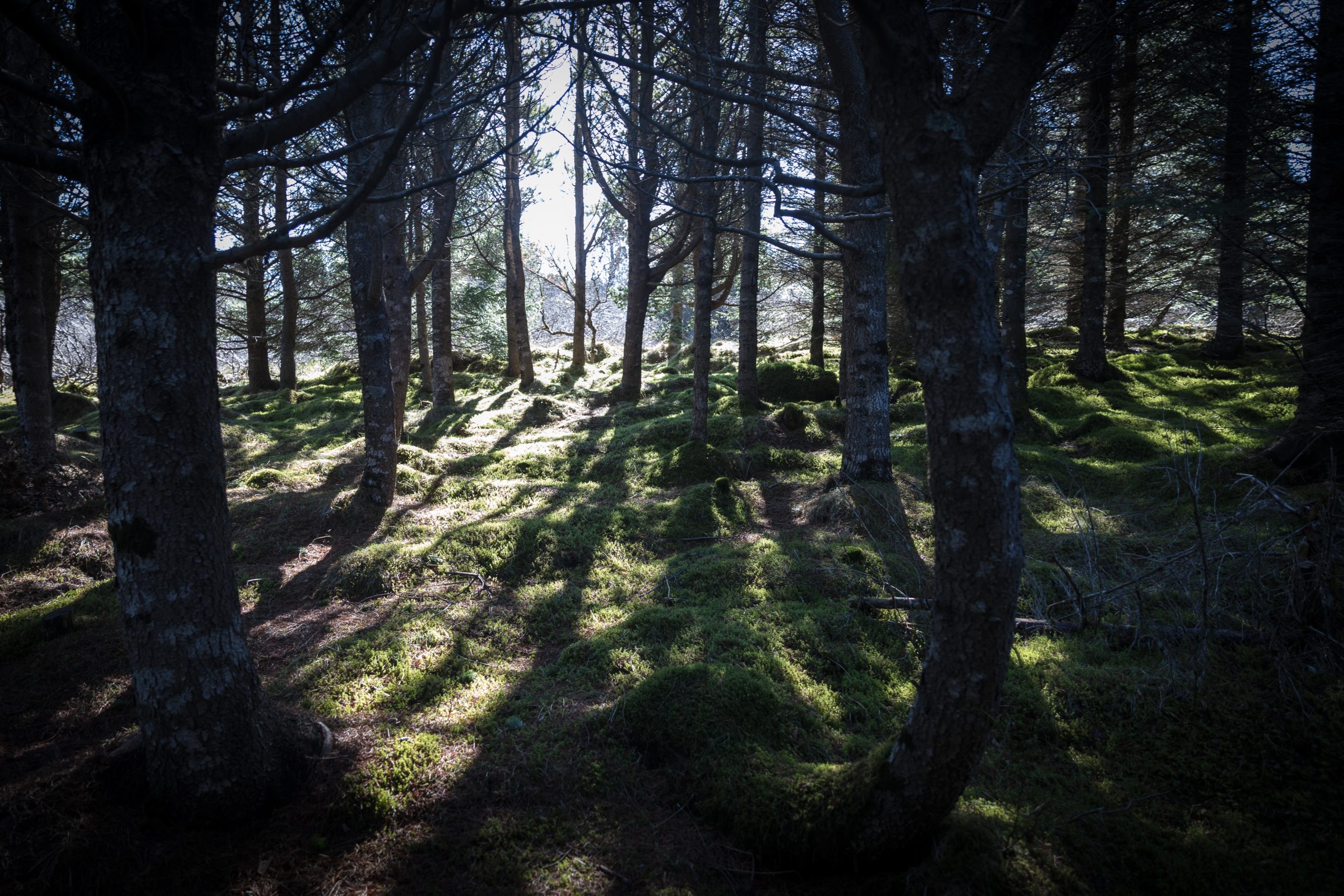
Reforestation efforts are underway to transform this island’s landscape into one of rich, luscious woodlands. Planting and restocking is a relatively new concept here; less than a century ago, most Icelanders would have believed it impossible that any tree could grow in Iceland, let alone entire patches of woodland.
A greater level of forest management experience and a deeper scientific understanding have helped shift this perspective among the local populace away from draining resources to preserving them. In our modern era, most Icelanders are all too aware of the benefits and rewards that future forests might provide, a realisation which has helped bolster the nation’s image as environmentally proactive.
Regardless of this positive change in attitude, Iceland’s climate is still openly hostile for much of the year, making for slow progress regarding reforestation. Bear in mind, before a single tree is planted, a base-level of vegetation must be first grown, which takes time and luck to be successful.
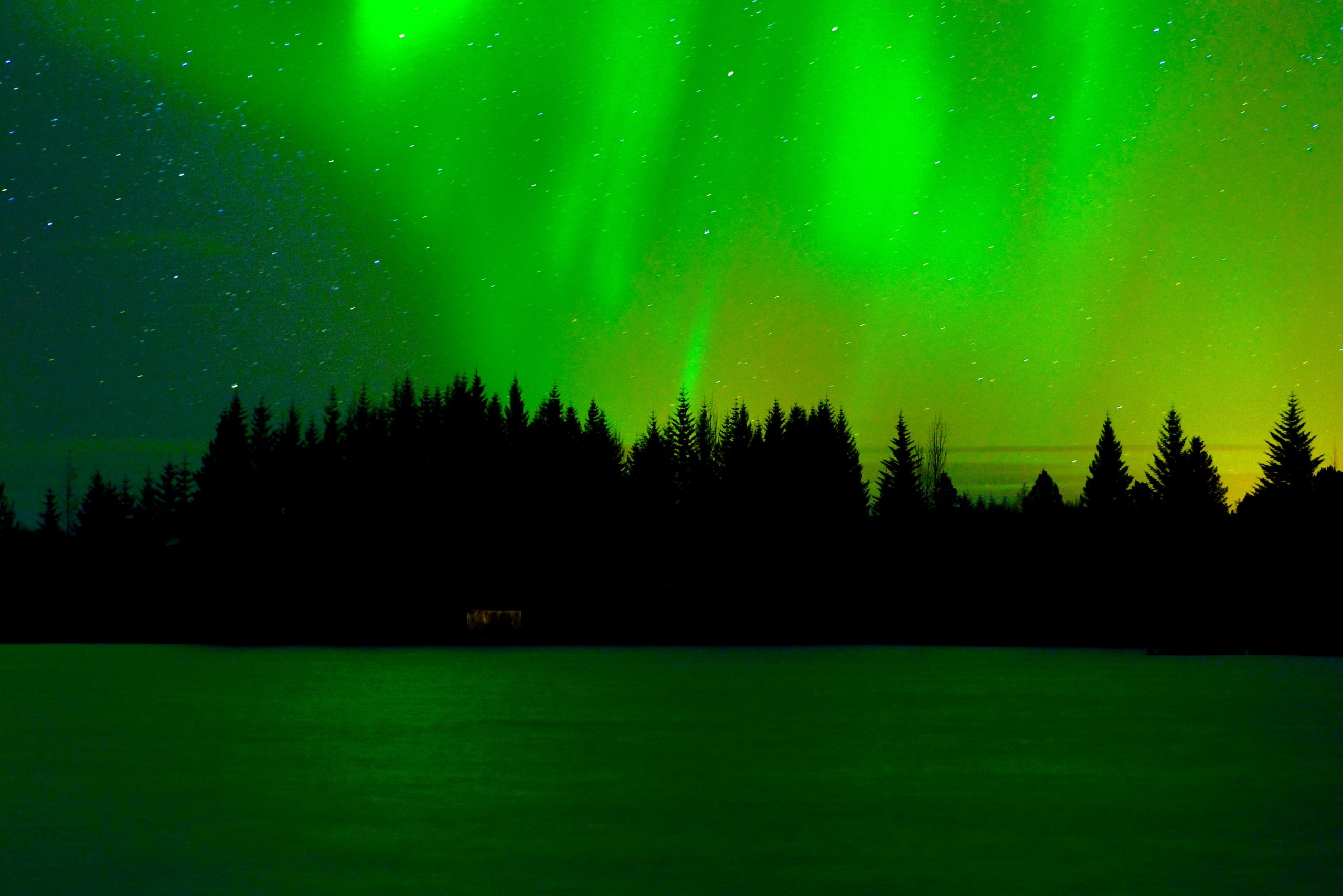
It is because of these odds that only around 0.5% of Iceland’s landmass is forested today. Still, the country has seen between 3 – 4 million trees planted since 2015, which only goes to show the motivation is there to surmount the challenges posed by the environment.
Other issues that must be overcome are Iceland’s reliance on grazing animals and the more significant threat posed by global warming, which tends to be behind the death of many young saplings, including those of the native birch.
The Icelandic government has aimed for 5% forest cover in fifty years, though given what we’ve learnt, many foresters consider this to be overly-ambitious. Regardless, among the new trees being planted are larch, Alaska aspen, Sitka spruce and logdgepoles. While young now, future generations looking upon these new additions to Iceland’s wildlife will, no doubt, be grateful for the efforts we made today.
Is Iceland planting new trees?

Reforestation efforts are underway to transform this island’s landscape into one of rich, luscious woodlands. Planting and restocking is a relatively new concept here; less than a century ago, most Icelanders would have believed it impossible that any tree could grow in Iceland, let alone entire patches of woodland.
A greater level of forest management experience and a deeper scientific understanding have helped shift this perspective among the local populace away from draining resources to preserving them. In our modern era, most Icelanders are all too aware of the benefits and rewards that future forests might provide, a realisation which has helped bolster the nation’s image as environmentally proactive.
Regardless of this positive change in attitude, Iceland’s climate is still openly hostile for much of the year, making for slow progress regarding reforestation. Bear in mind, before a single tree is planted, a base-level of vegetation must be first grown, which takes time and luck to be successful.

It is because of these odds that only around 0.5% of Iceland’s landmass is forested today. Still, the country has seen between 3 – 4 million trees planted since 2015, which only goes to show the motivation is there to surmount the challenges posed by the environment.
Other issues that must be overcome are Iceland’s reliance on grazing animals and the more significant threat posed by global warming, which tends to be behind the death of many young saplings, including those of the native birch.
The Icelandic government has aimed for 5% forest cover in fifty years, though given what we’ve learnt, many foresters consider this to be overly-ambitious. Regardless, among the new trees being planted are larch, Alaska aspen, Sitka spruce and logdgepoles. While young now, future generations looking upon these new additions to Iceland’s wildlife will, no doubt, be grateful for the efforts we made today.
Where do trees grow in Iceland?
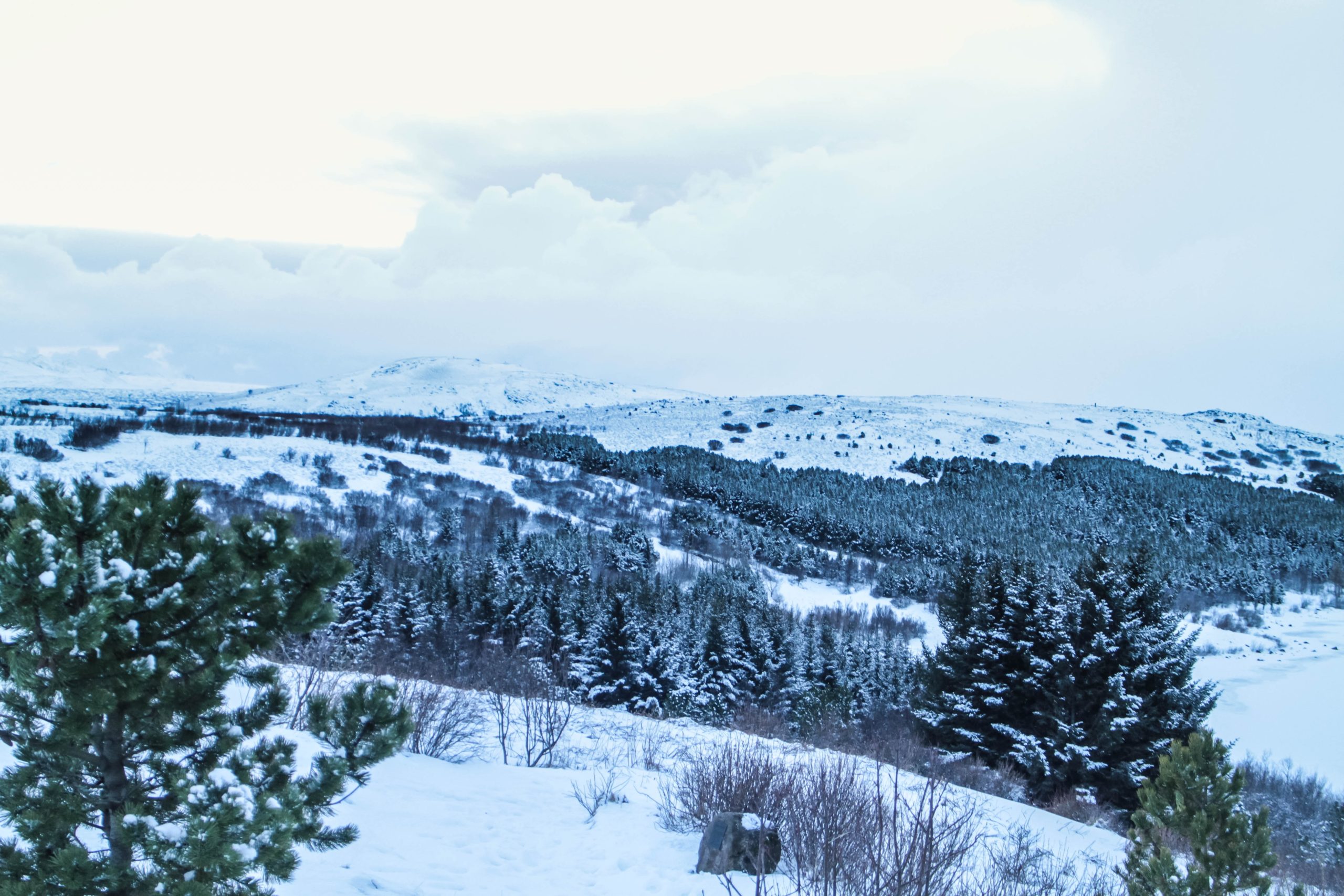
As previously mentioned, the most common trees seen in Iceland are Rowan, Poplar and Birch, as these tend to be prioritised in reforestation projects. Patches of these woods can be seen throughout the country. With that said, many other species contribute to this island’s biodiversity, if only you know where to look!
Hallormsstaðaskógur, in the east of the country, is Iceland’s largest national forest, made up primarily of native dwarf and mountain birch trees. We say primarily because around ninety species of foreign tree from over 177 locations worldwide can be seen while strolling one of the forest’s pleasant hiking trails. Thankfully, each species comes with an information board that lists more details on each plant and its origins.
Hallormsstaðaskógur is something of an amolay in Iceland. The site began with the planting of fifty saplings in 1905, making it the first and largest protected forest in Iceland. This status has had a litany of positive effects in the years since then. A plethora of wild berries now grow there, ready for the picking, and the forest homes a very diverse range of bird species, including the likes of Redpolls and Goldcrests.
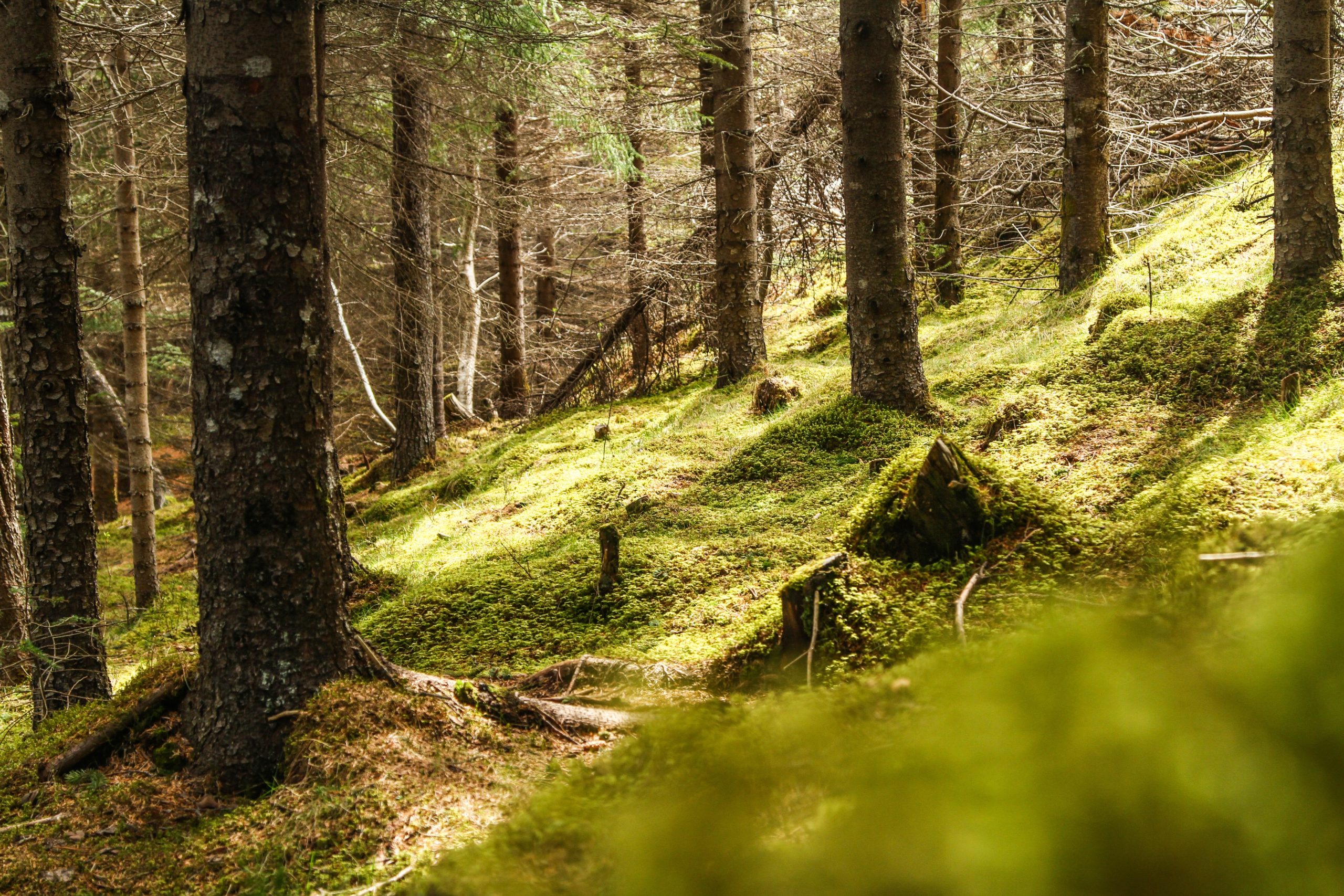
Today, this area on the banks of Lake Lagarfljot is spread over 740 scenic hectares, and as such, attracts thousands of campers, cyclists and picnickers every single year. Don’t miss out on paying a visit yourself should you travel around East Iceland in the future.
In sheltered areas and greenhouses, some intuitive locals have even taken to growing their own fruit trees; something that would have been considered all but impossible not that long ago. Apples and tomatoes are now considered something of a speciality, and bananas have been grown here since the 1940s. Such success shows a real determination in the Icelandic people to cultivate entirely new ecosystems and crops across their land.

One location it is possible to appreciate just how much potential Iceland has for growing new species of plants is Lystigarður Akureyrar, better known as the Akureyri Botanical Gardens. Despite its proximity to the Arctic Circle, this quaint and colourful attraction boasts over 7000 different flora types, securing it as a fantastic family outing for summer visitors.
In Iceland’s official capital, Reykjavík, the best known forested area is Öskjuhlíð Hill, where the famed landmark, Perlan Museum and Observation Deck, is also found. Popular with city residents looking for a quick escape into nature, over 200,000 trees have been planted on the site since the project began in 1950. Visitors to this beloved hill should also check out the abandoned WW2 outposts, as well as the geothermal beach, Nauthólsvík.
If you’re looking for a comprehensive list as to where all of Iceland’s National Forests can be found, make sure to peruse this map by the Icelandic Forest Service.
Where do trees grow in Iceland?

As previously mentioned, the most common trees seen in Iceland are Rowan, Poplar and Birch, as these tend to be prioritised in reforestation projects. Patches of these woods can be seen throughout the country. With that said, many other species contribute to this island’s biodiversity, if only you know where to look!
Hallormsstaðaskógur, in the east of the country, is Iceland’s largest national forest, made up primarily of native dwarf and mountain birch trees. We say primarily because around ninety species of foreign tree from over 177 locations worldwide can be seen while strolling one of the forest’s pleasant hiking trails. Thankfully, each species comes with an information board that lists more details on each plant and its origins.
Hallormsstaðaskógur is something of an amolay in Iceland. The site began with the planting of fifty saplings in 1905, making it the first and largest protected forest in Iceland. This status has had a litany of positive effects in the years since then. A plethora of wild berries now grow there, ready for the picking, and the forest homes a very diverse range of bird species, including the likes of Redpolls and Goldcrests.

Today, this area on the banks of Lake Lagarfljot is spread over 740 scenic hectares, and as such, attracts thousands of campers, cyclists and picnickers every single year. Don’t miss out on paying a visit yourself should you travel around East Iceland in the future.
In sheltered areas and greenhouses, some intuitive locals have even taken to growing their own fruit trees; something that would have been considered all but impossible not that long ago. Apples and tomatoes are now considered something of a speciality, and bananas have been grown here since the 1940s. Such success shows a real determination in the Icelandic people to cultivate entirely new ecosystems and crops across their land.

One location it is possible to appreciate just how much potential Iceland has for growing new species of plants is Lystigarður Akureyrar, better known as the Akureyri Botanical Gardens. Despite its proximity to the Arctic Circle, this quaint and colourful attraction boasts over 7000 different flora types, securing it as a fantastic family outing for summer visitors.
In Iceland’s official capital, Reykjavík, the best known forested area is Öskjuhlíð Hill, where the famed landmark, Perlan Museum and Observation Deck, is also found. Popular with city residents looking for a quick escape into nature, over 200,000 trees have been planted on the site since the project began in 1950. Visitors to this beloved hill should also check out the abandoned WW2 outposts, as well as the geothermal beach, Nauthólsvík.
If you’re looking for a comprehensive list as to where all of Iceland’s National Forests can be found, make sure to peruse this map by the Icelandic Forest Service.
Experience Iceland's Forest in a Bubble
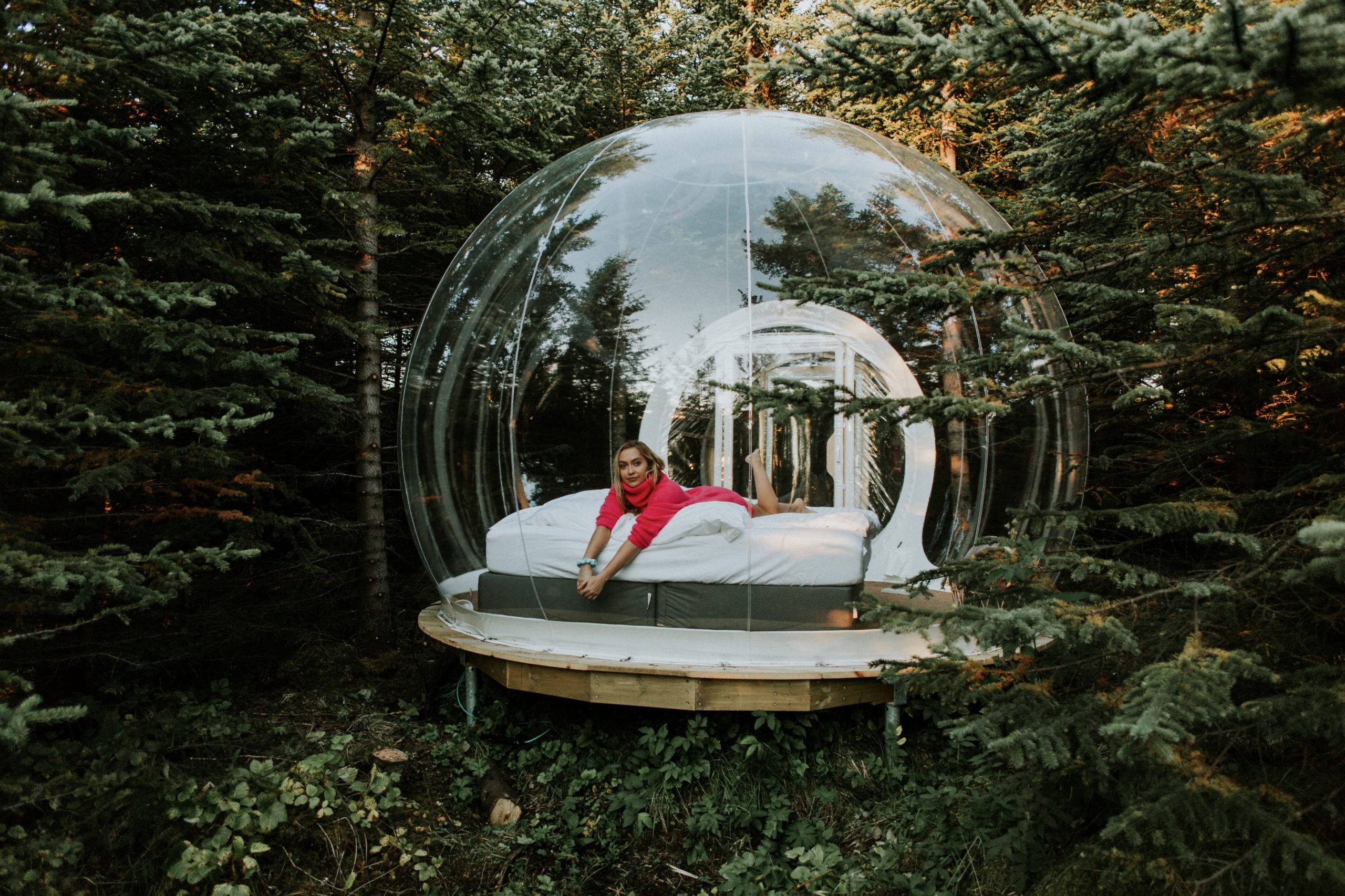
Without a doubt, one of the best means of experiencing an Icelandic forest is to spend a night or two in one of our fantastic bubbles. We offer two locations that maximise the beauty and ambience of Iceland’s forests, culminating in a tranquil overnight experience quite unlike anything you’ve experienced before.
Nestled amid the trees and vegetation, this novel, yet highly sought-after accommodation, allows guests to reconnect with the environment’s natural rhythms in comfort and style. With their transparent walls and ceilings, you will have a 360-degree panorama of the pine and shrubbery from inside your cosy bubble, not mentioning the wide-open skies above.
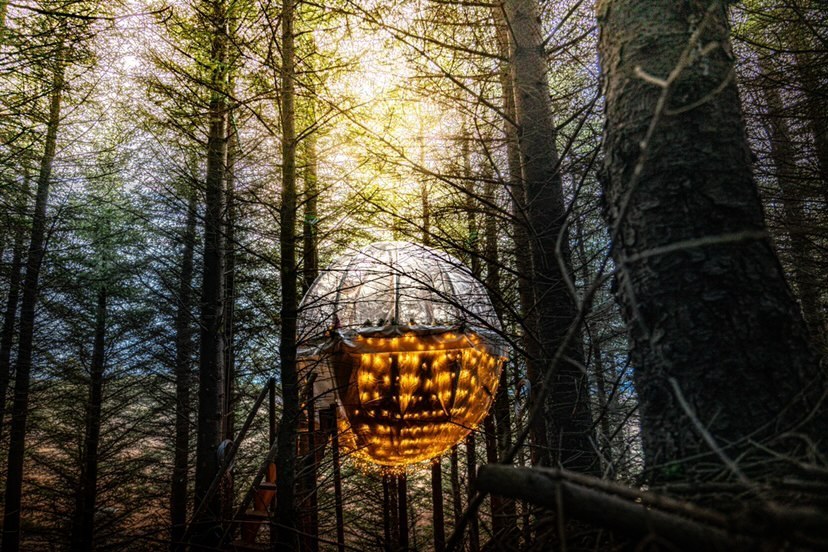
In summer, you’ll find these woodlands bathed in the apricot wash of the Midnight Sun, while the winter welcomes in virgin snowfall, intricate frost sculptures, and the promise of witnessing the elusive Aurora Borealis. Whatever season you choose to visit us, a stay at the Bubble hotel is sure to provide you with both lasting memories and a newfound appreciation of the world around you.
Perfect for stargazers, Northern Lights hunters and all-round nature-lovers, choosing one of our bubbles is choosing to spend the most luxurious night in the wilderness you’ll likely ever have. During the day, you have both the famous Golden Circle and South Coast sightseeing routes on your doorstep, allowing you to see Iceland’s most beloved natural attractions.
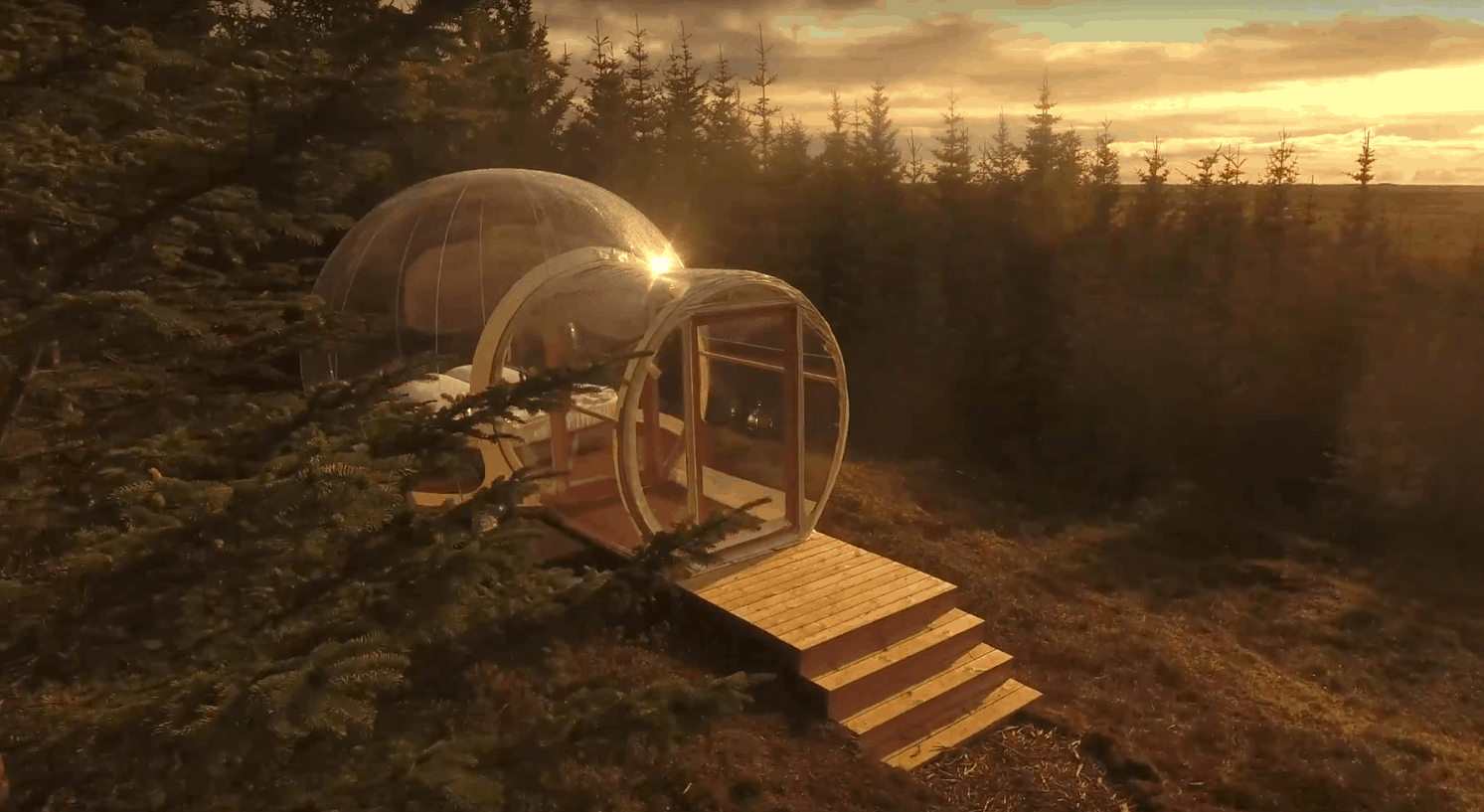
For those who want peak immersion, might we recommend our new hanging bubble. This stunning addition to our accommodation choices will sure to bring new heights to your experience in the forest. Make sure to check out our guided tours and overnight packages before you decide to discover Iceland’s small, yet beautiful forests for yourself.
Experience Iceland's Forest in a Bubble

Without a doubt, one of the best means of experiencing an Icelandic forest is to spend a night or two in one of our fantastic bubbles. We offer two locations that maximise the beauty and ambience of Iceland’s forests, culminating in a tranquil overnight experience quite unlike anything you’ve experienced before.
Nestled amid the trees and vegetation, this novel, yet highly sought-after accommodation, allows guests to reconnect with the environment’s natural rhythms in comfort and style. With their transparent walls and ceilings, you will have a 360-degree panorama of the pine and shrubbery from inside your cosy bubble, not mentioning the wide-open skies above.

In summer, you’ll find these woodlands bathed in the apricot wash of the Midnight Sun, while the winter welcomes in virgin snowfall, intricate frost sculptures, and the promise of witnessing the elusive Aurora Borealis. Whatever season you choose to visit us, a stay at the Bubble hotel is sure to provide you with both lasting memories and a newfound appreciation of the world around you.
Perfect for stargazers, Northern Lights hunters and all-round nature-lovers, choosing one of our bubbles is choosing to spend the most luxurious night in the wilderness you’ll likely ever have. During the day, you have both the famous Golden Circle and South Coast sightseeing routes on your doorstep, allowing you to see Iceland’s most beloved natural attractions.

For those who want peak immersion, might we recommend our new hanging bubble. This stunning addition to our accommodation choices will sure to bring new heights to your experience in the forest. Make sure to check out our guided tours and overnight packages before you decide to discover Iceland’s small, yet beautiful forests for yourself.
About Iceland's Breathtaking Black Sand Beach
About Iceland's Black Sand Beach
By Michael Chapman
The hauntingly beautiful Reynisfjara beach is one of South Iceland's most beloved sites.
About Iceland's Black Sand Beach
By Michael Chapman
The hauntingly beautiful Reynisfjara beach is one of South Iceland's most beloved sites.
With its inky coastlines and stunning highland interior, Iceland has grown into its reputation as a true paradise for those looking to immerse themselves in nature at its most unusual.
Much like its creeping glaciers, mountain peaks, and moss-blanketed lava fields, Iceland’s volcanic beaches draw visitors to this country in their thousands.
Much of this interest can be attributed to Reynisfjara, which has been attracting guests since National Geographic magazine voted it among the top ten of the planet’s most beautiful non-tropical beaches back in 1991.
Neither its reputation nor its beauty has diminished over the years. In fact, with more exposure than ever before, this particular stretch of shoreline could be considered at the height of its popularity. The shoreline’s stark monotone shades, distinctive geology and relative proximity to Iceland’s capital city, Reykjavík, all bolster this fact.
If you’re looking to visit this iconic beach during your travels, make sure to read on and learn all the essential travel information before you arrive.
Why does Iceland have black sand beaches?
Whereas most beaches on Earth are either pebbled or host to golden sands, those in Iceland are dark obsidian in colour.
Generally, sand colour depends on the rocks from which it originated, with tan-coloured quartz and feldspar being the two most common materials found elsewhere.
Iceland, on the other hand, was formed through a series of historical volcanic eruptions. There are over 200 volcanoes on the island, many of which remain active and capable of shaping the terrain around them.
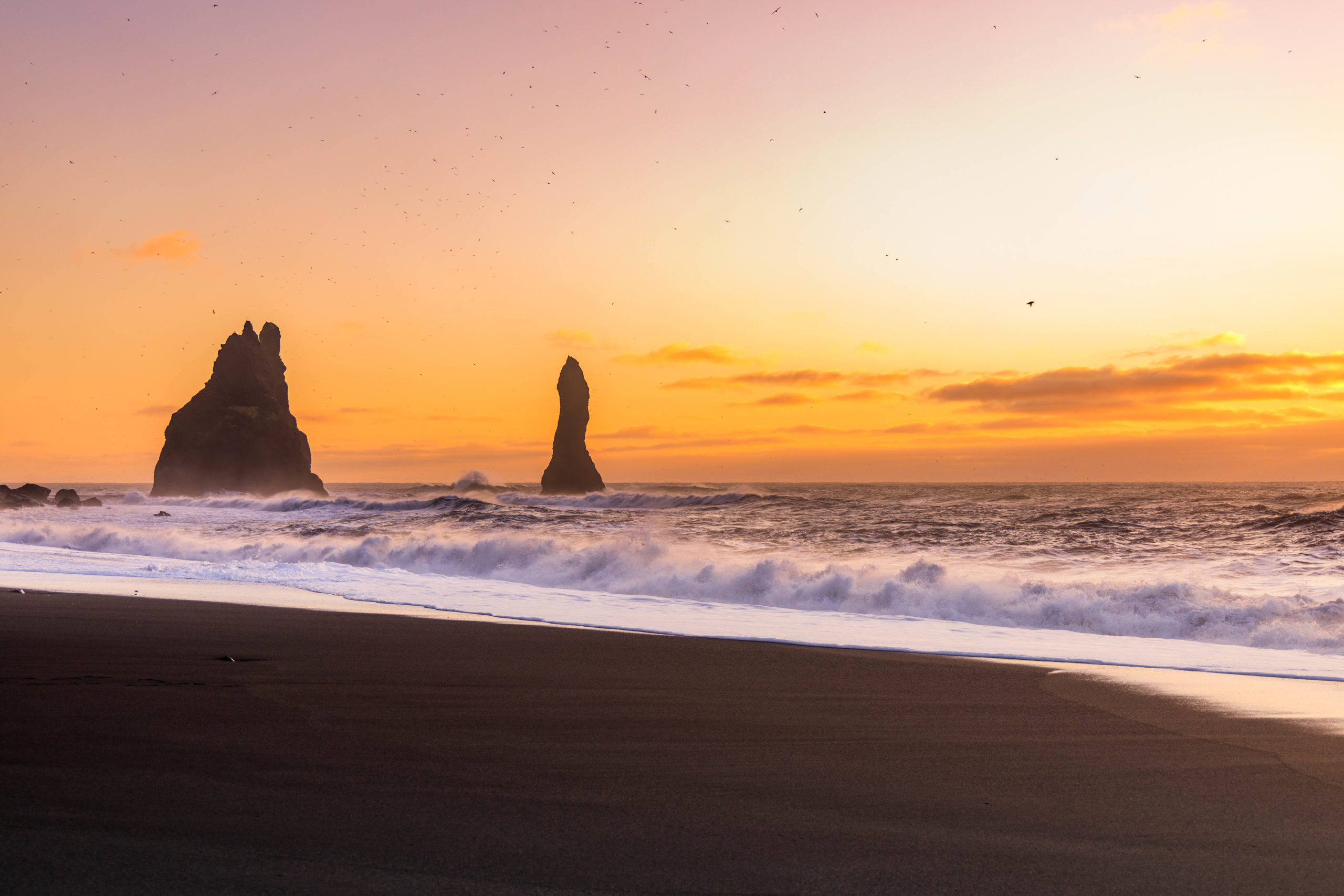
Iceland’s black sand beaches, now famous the world over, are just one of the fascinating geological consequences that have arisen due to these prior eruptions.
When flowing lava contacts seawater, a violent, yet spectacular reaction occurs. The lava enters a rapid cooldown phase immediately, breaking down into tiny debris particles that become scattered over vast distances.
This process does not change the rock’s colour, merely its density, leaving Iceland’s shorelines as a stunning reminder as to how this country’s natural beauty came first about.
PLAN YOUR JOURNEY
Travelling to Iceland?
Check our overnight tours with a driver guide that includes a one night stay in a bubble.
*Starting from ISK 59.900 per person
Why is Reynisfjara considered the best black sand beach in Iceland?
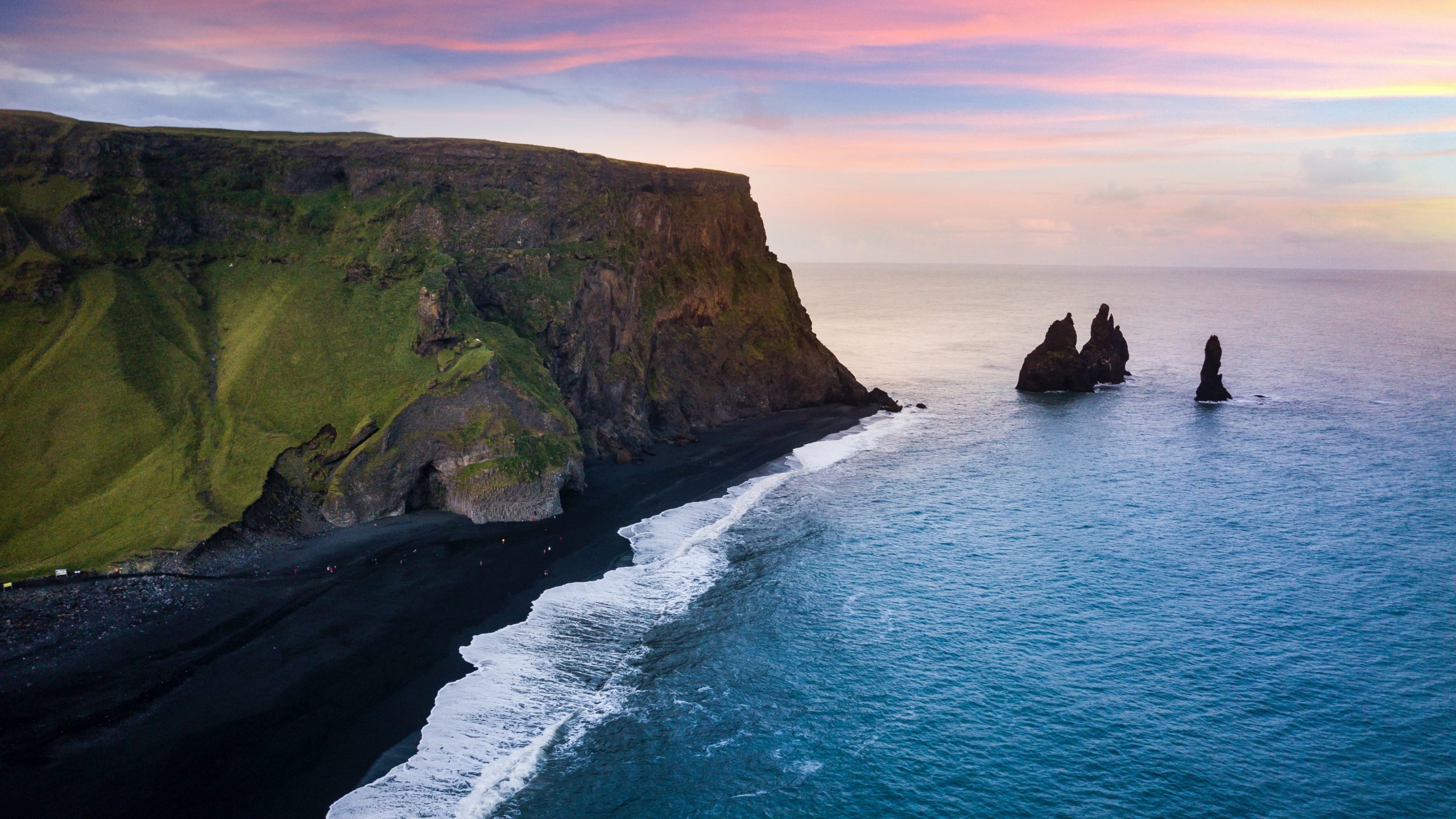
With its unique, jet-black pebbles, peculiar basalt columns and towering rock stack, it is no wonder that Reynisfjara holds an iconic status among Icelandic natural attractions.
Reynisfjara is the most famous of its contemporaries for a variety of reasons. The first is practical, as it is located roughly at the centre-bottom of South Iceland. These coordinates have made it, and the adjacent village of Vík í Mýrdal, popular stops for travellers looking for excitement while passing through the area.
The second reason falls to a cluster of 66-metre high (217 ft) basalt rock stacks that stand off the shoreline. Known as Reynisdrangar, this compelling landmark compliments South Iceland surroundings landscape no-end, adding drama and grand scale to an otherwise remote location.
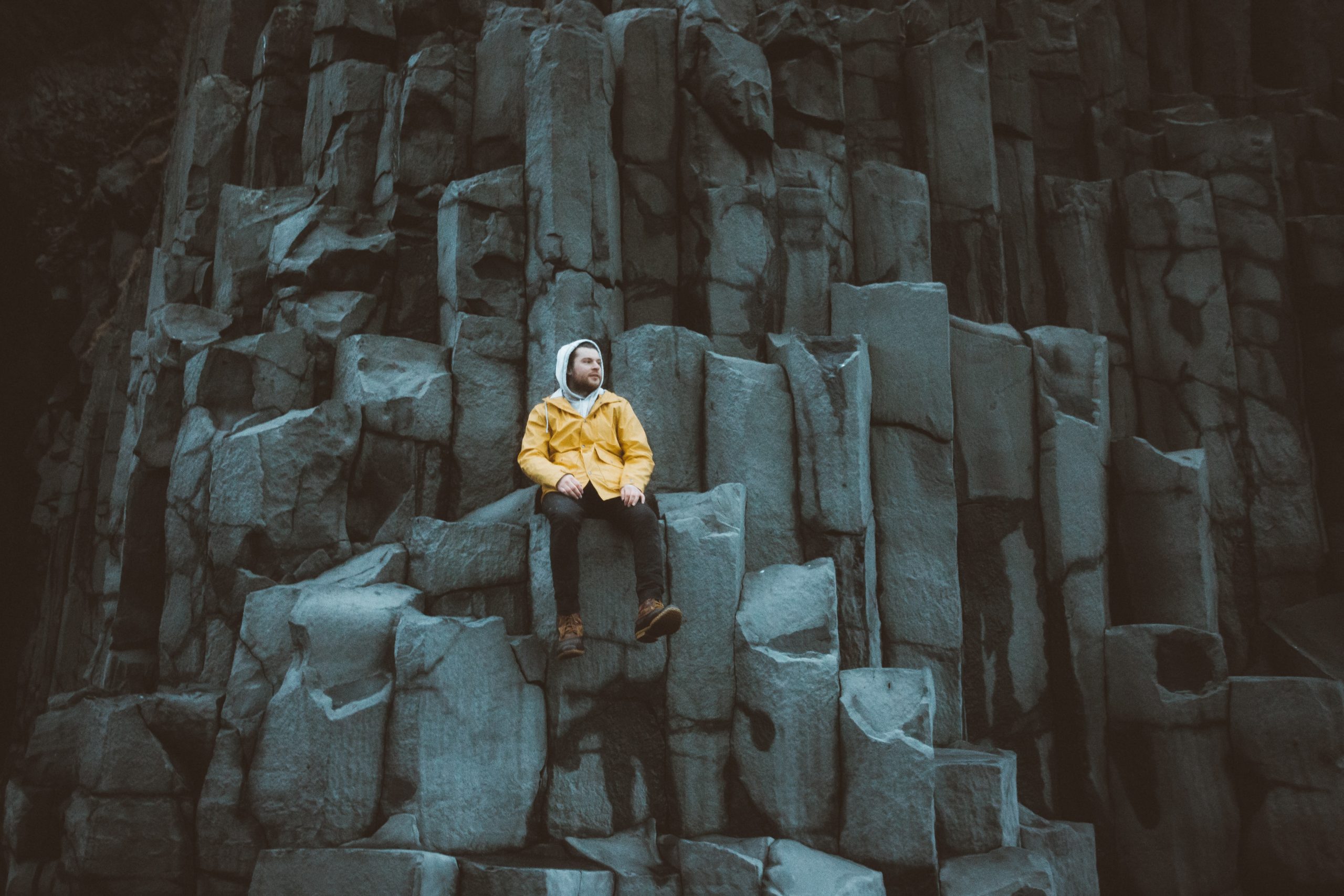
There are even more novelties that make Reynifjara worthy of your interest. On the opposite side to the ocean, the beach is enclosed by steep cliff edges that rise upward like a grey pyramid. Named Garðar after a nearby farmstead, ancient lava flows have shaped the rock face into near-perfect octagonal columns, making them a wonder unto themselves.
Getting photographed sitting atop these naturally formed steps is a matter of tradition for many guests eager to contribute their own pictures to the thousands found across social media.
Further along the beach, Reynisfjara boasts its own pirate’s grotto, a damp seaside cove often overlooked by guests hurrying to pack their days. Known as Hálsanefshellir cave, this enormous chamber sees the distinctive Garðar columns extend across its ceiling and walls, the natural design so intricate as to appear sculpted by hands.
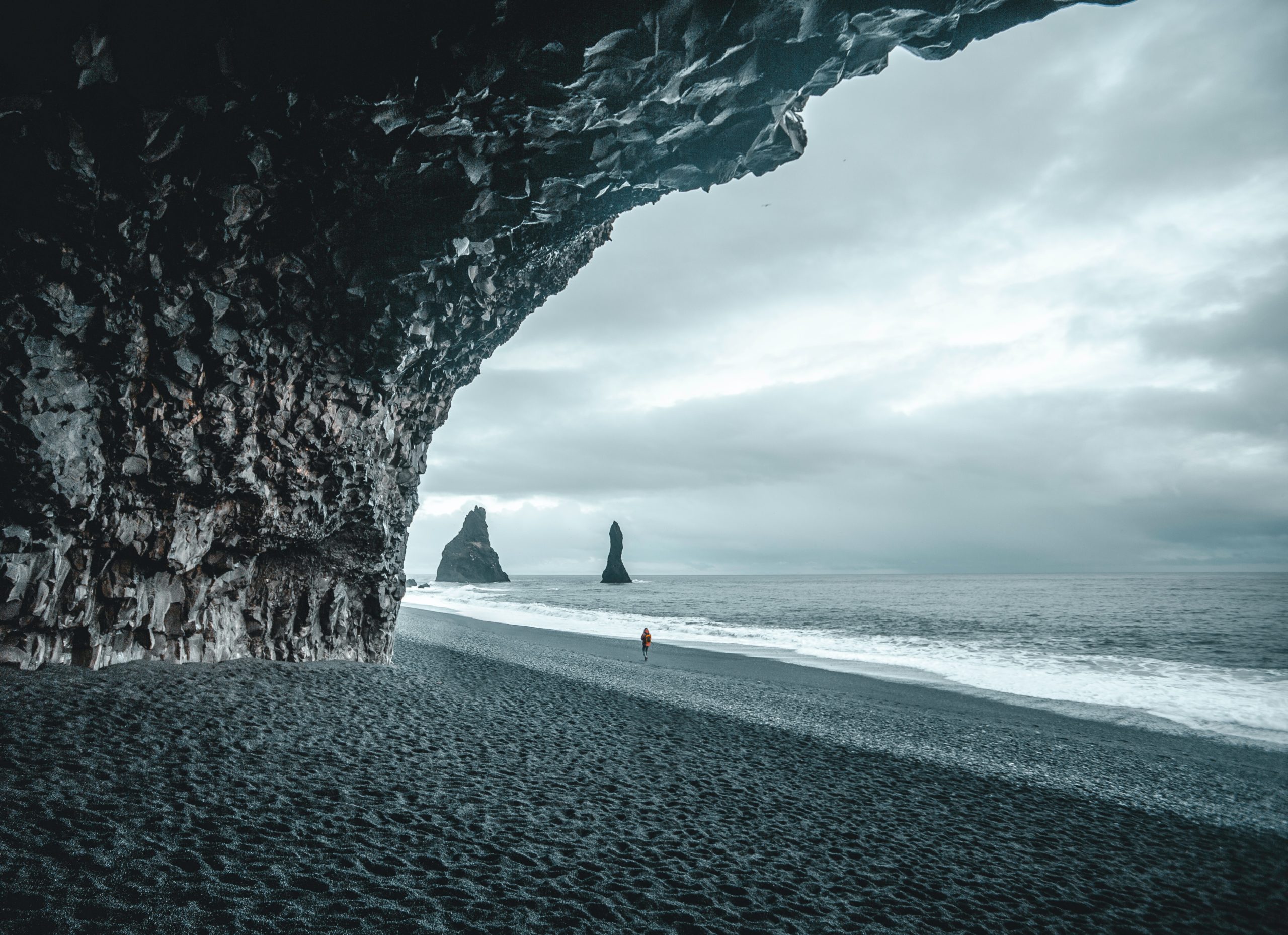
Where is the black sand beach in Iceland
Reynisfjara sits beside the quaint coastal village, Vík í Mýrdal, and is considered a staple stop for sightseeing tours in South Iceland. Despite being home to little more than 300 or so people, Vík (as it is shortened) serves as the optimum spot to grab a bite to eat or bed down for the night.
Reykjavík, where most visitors will be departing, is approximately 180 kilometres (112 miles) to Reynisfjara. Vík í Mýrdal lies directly on Iceland’s Ring Road, meaning guests will have to drive around two and a half hours to reach the beach, not accounting for the pit stops and points-of-interest en route.
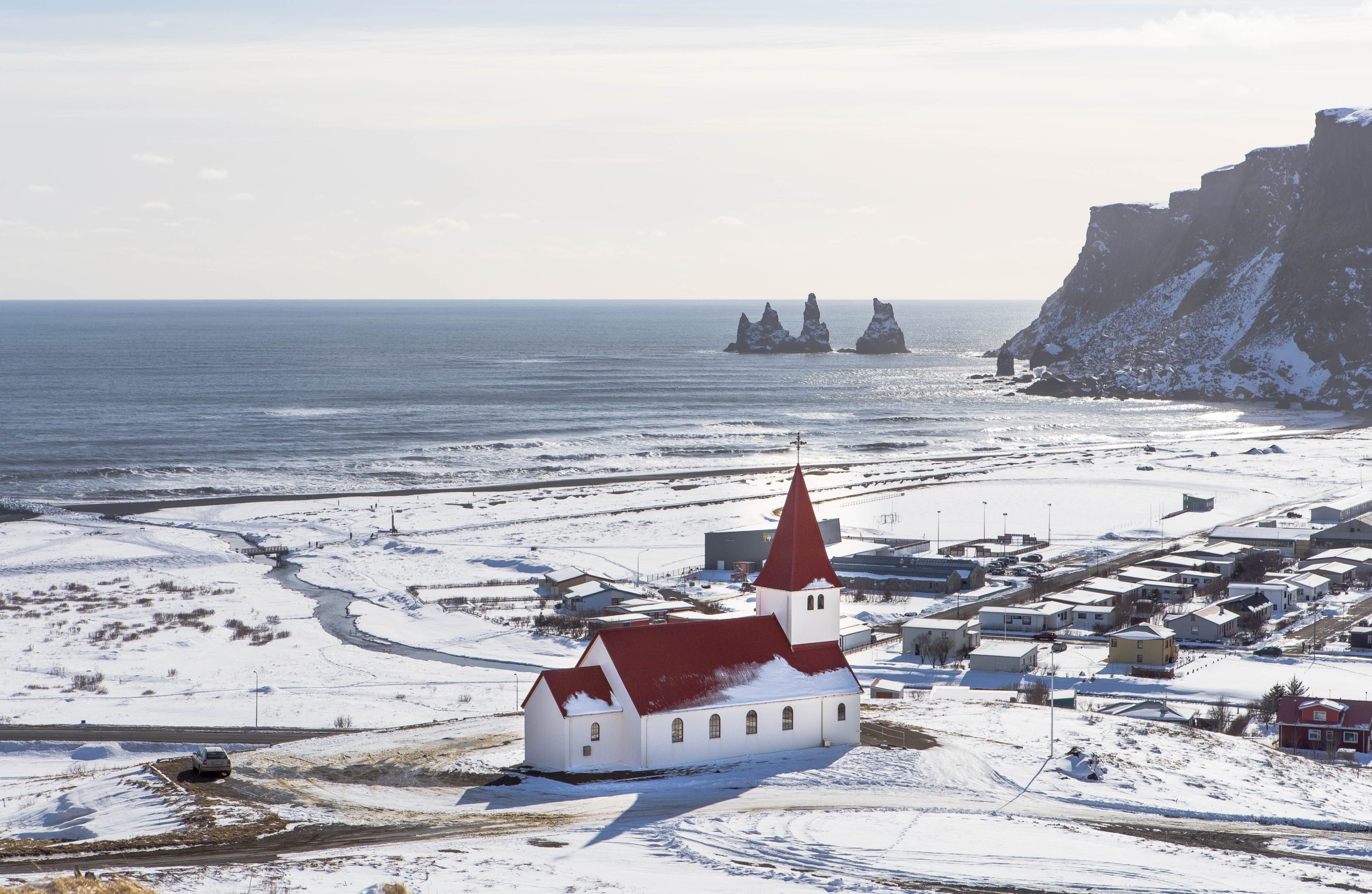
Reynisfjara and Reynisdrangar in Icelandic Folklore
Icelandic folklore is a rich tapestry of ancient tales, passed down generation-to-generation by word-of-mouth and through the Sagas’ epic poetry.
Unsurprisingly, Reynisdrangar has not escaped from inspiring storytellers, with many yarns and anecdotes having been spun about this fantastical place over the last thousand years.
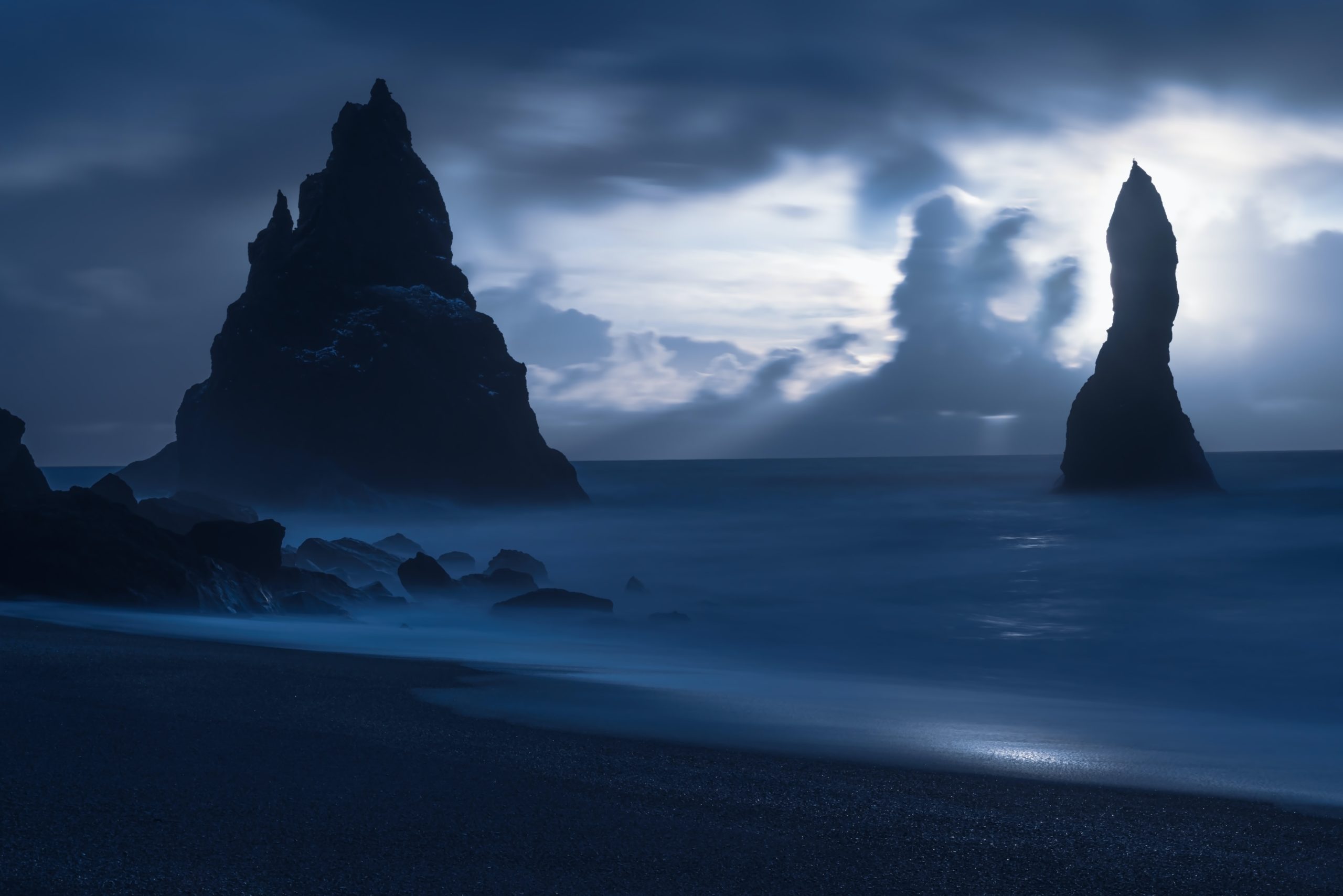
One story speaks of two trolls, now considered extinct in Iceland, caught in the sunlight while dragging their boats to shore. All that was left of their petrified bodies was the Reynisdrangar rock stacks, exposed to the air, sky and waves for the remainder of eternity. Another story claims the same trolls were frozen as revenge for stealing a local farmer’s wife.
In either case, it’s the trolls that got the short-end of the stick (—as trolls are liable to do). While scientists and mystics will differ as to these claims’ veracity, there is no denying the tangible sense of magic, of mystery, this beach draws out of those who visit.
Such thoughts occurred, at one time or another, to the location scouts of HBO’s popular ‘Game of Thrones,’ who utilised Reynisfjara as Eastwatch-by-the-Sea in two episodes of the show’s seventh season. Of course, hours could be spent arguing over whether Game of Thrones constitutes a modern-day folktale, but we thought it was worth mentioning here nonetheless.
Is Reynisfjara black sand beach safe to visit?
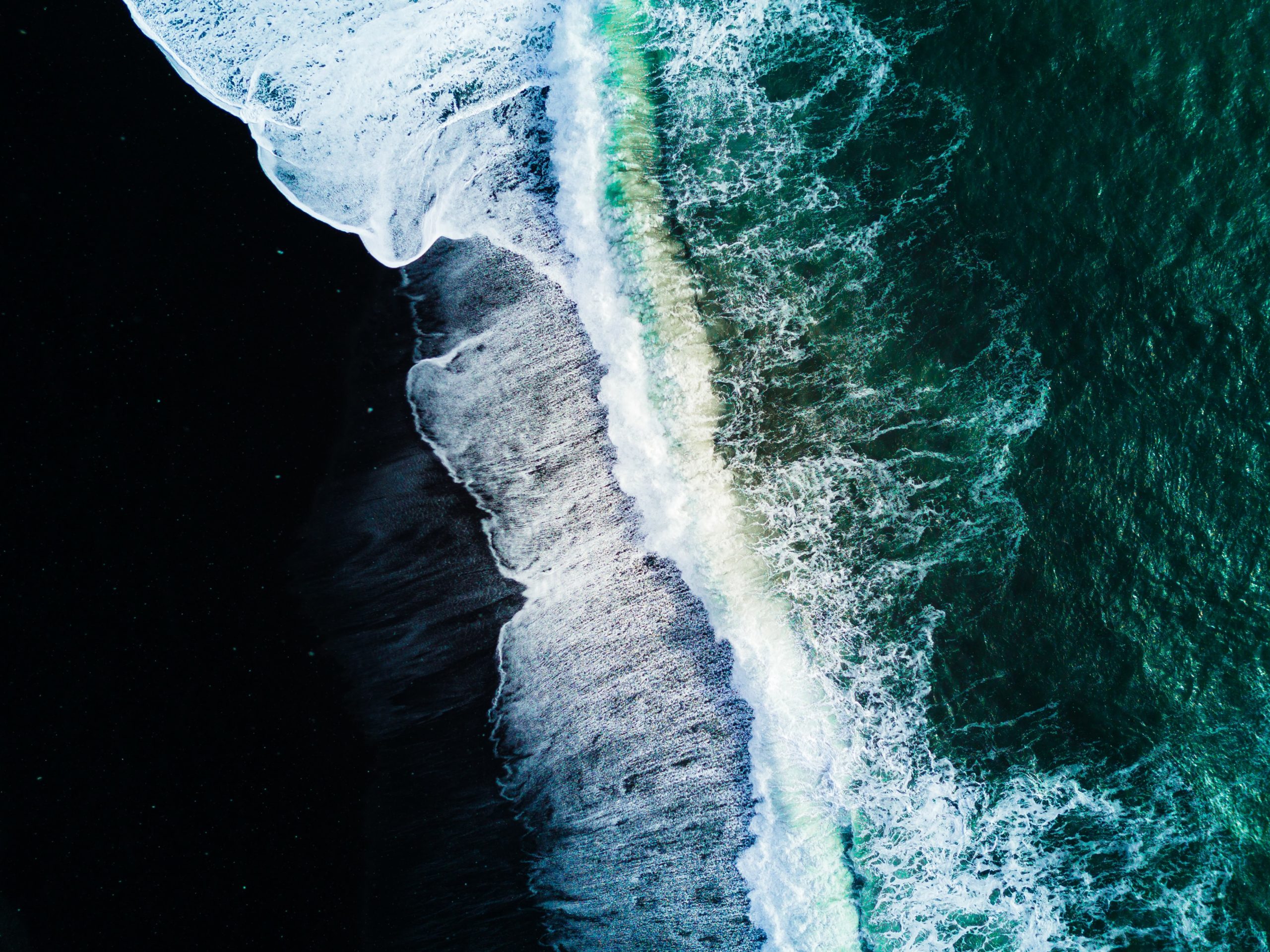
While it might seem counterintuitive to visit an area considered dangerous, there are certain safety precautions you must keep in mind at Reynisfjara. Signposts along the beach allude to ‘Sneaker Waves’; these have a habit of catching off-guard guests who venture too close to the water. More than capable of pulling an adult out with it, this water barely, a few celsius, is almost impossible to escape from.
These warnings must be taken as gospel, as anyone unlucky enough to be dragged out to sea at Reynisfjara will soon fall victim to dangerous rip currents, deteriorating a dire situation further. Even on apparently calm days, there is no telling how the waves will behave; some roll in small, others surge up the sand as if from nowhere, shocking all who witness it. If ever there was a place to supervise your children closely, this would be it.
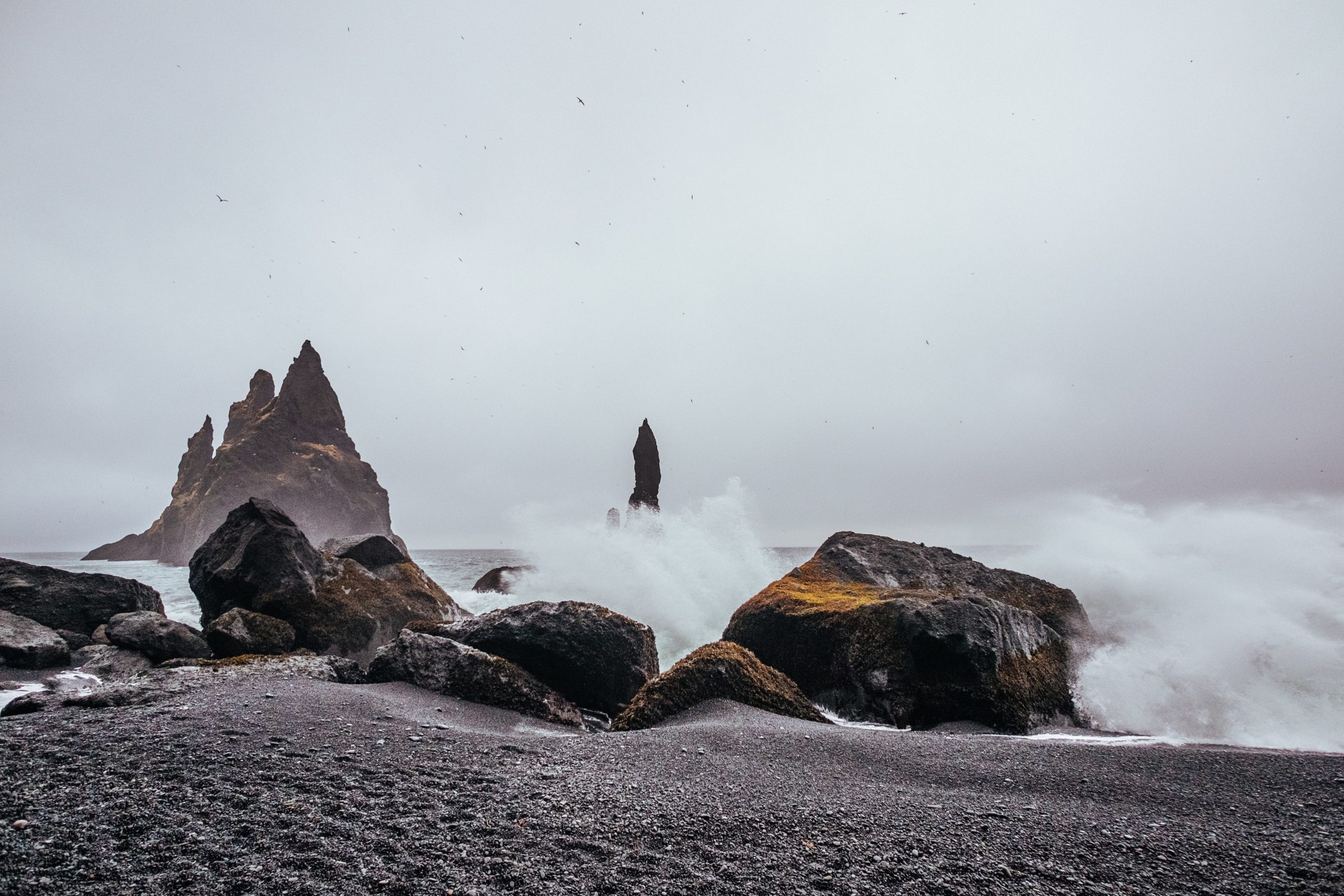
A quick search on YouTube will persuade you that, indeed, the beach poses an all-too-real threat for those who dismiss the warning signs as overly cautious. Regardless of how epic the surrounding area might be, the North Atlantic ocean is notoriously unpredictable, cold and more-than-capable of reaching right up the shore. If there’s a lesson here, make it this; don’t ever turn your back on the water. Remain vigilant at all times.
While there is no question Reynisfjara is one of Iceland’s most beautiful sites, it is imperative to respect the beach from a distance that ensures the safety of your party. Unfortunately, fatal accidents have occurred at the site in the past, which should only go-to-show how vital it is to trust the mandated advice.
Do not assume the area is safe just because others at the beach act like it’s so, and avoid visiting during bouts of rough weather. Iceland’s nature is a sight to behold, but never at the expense of one’s life.
Does Iceland have other black sand beaches?
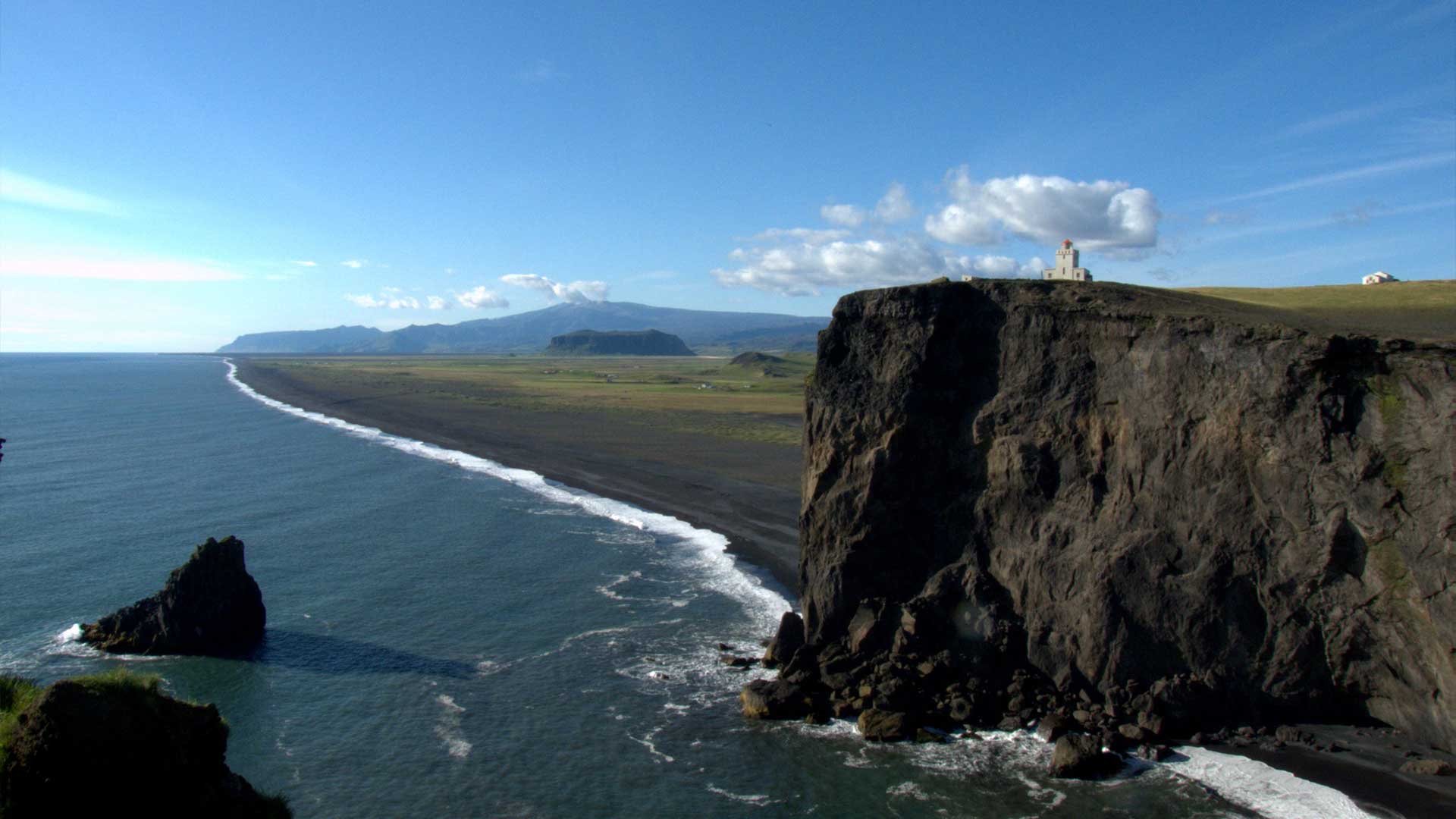
Yes, you can find black sand beaches all around the country, and many are arguably just as beautiful as Reynisfjara. In truth, most of Iceland’s beaches can be constituted as ‘black sand’, though some are more famous than others. Make sure to get out and explore during your time here—you might find a hidden gem, just to yourself.
In South Iceland, we have the sands surrounding Dyrhólaey promenade, the dark vastness of Solheimasandur, and further east, the iceberg-lined shores of Diamond Beach. While sightseeing on the South Coast, you can visit all these locations, best spread out over a few days.
Those remaining in Iceland’s Capital Region will want to pay a visit to Seltjörn, a black sand beach located on the sublime Seltjarnarnes Peninsula. Home to Grotta lighthouse, this area is popular among stargazers, Northern Lights hunters, and anyone looking for a quick break from city life. A mere ten minutes drive from downtown Reykjavík, pack a towel and try out the soothing foot bath, free-to-use for all those in the vicinity of the lighthouse.
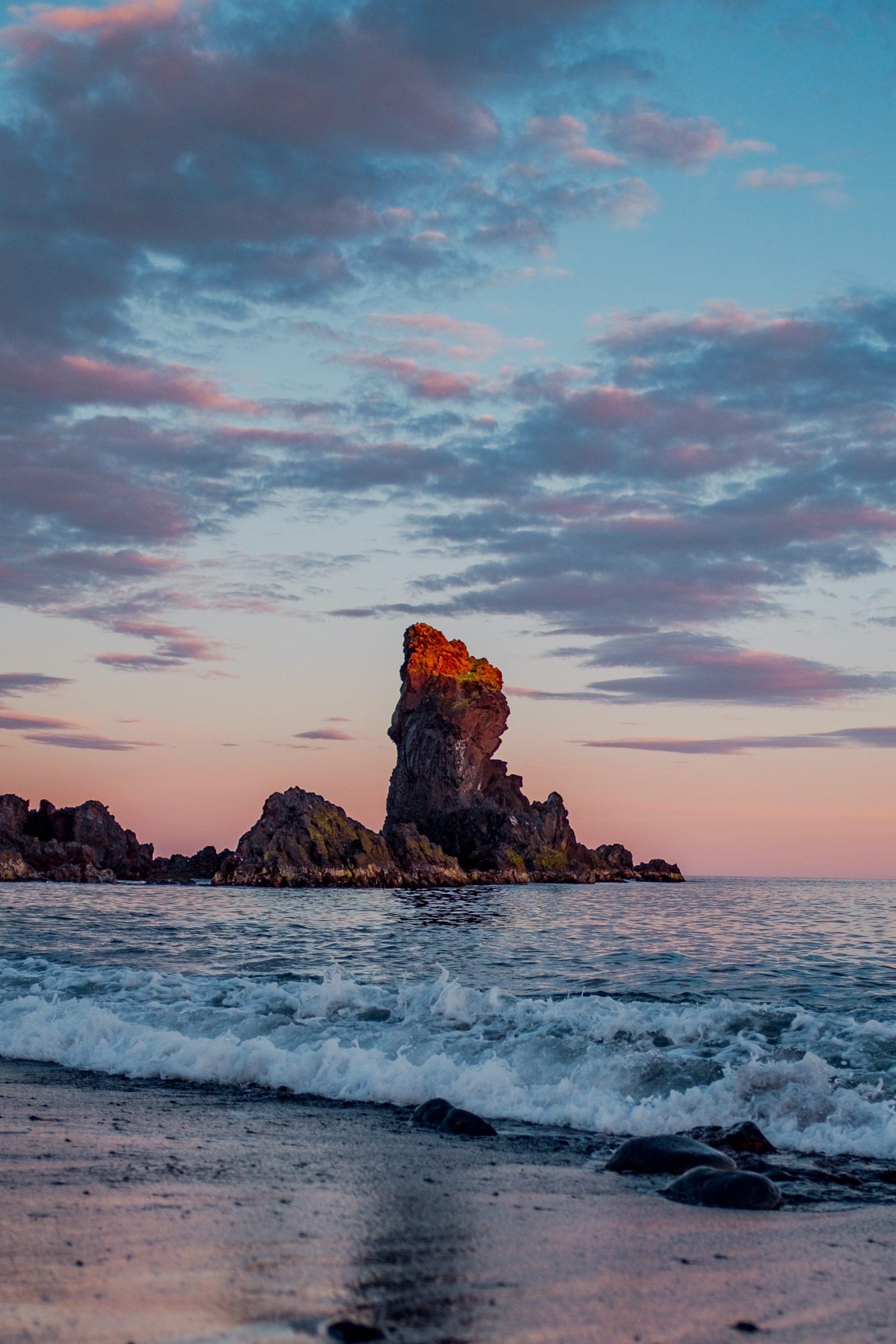
The Snæfellsnes Peninsula has its share of black sand beaches, the best known being Djúpalónssandur, with its gnarled volcanic rocks and small aquamarine ponds. Snæfellsnes offers stranger sights than black sand beaches, however. While it’s odd that golden sand is considered a novelty in Iceland, visitors can find just that at Skarðsvík Bay. On sunny days, this remote, albeit gorgeous site resembles a stretch of Mediterranean shoreline.
If you’re looking for something to blow all else from the water, then Rauðisandur, or Red Sands, in the Westfjords will suit your needs. As its name suggests, this 10-kilometre long beach boasts almost maroon-coloured sand that is, in fact, primarily composed of crushed scallop shells. Seals are known to frequently lounge in this area, so keep your eyes peeled for local wildlife.
What attractions are nearby to Reynisfjara in Iceland?
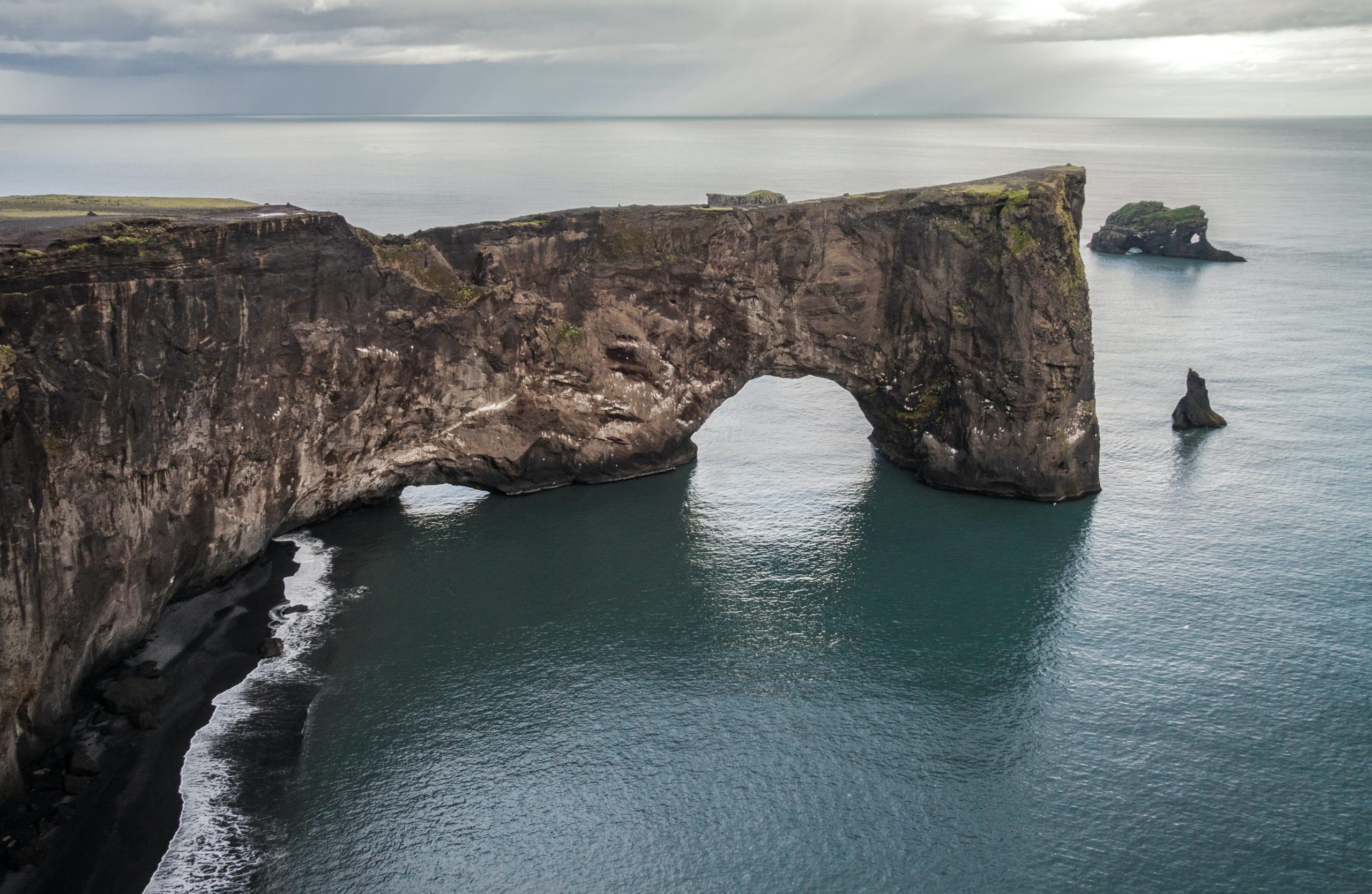
If you’re planning this most famous of Iceland’s black sand beaches, then you’ll want to make sure you check out other great attractions in the area. (Frankly, doing otherwise is downright negligent.)
Dyrhólaey promontory is one site worthy of a visit, beloved by guests and locals alike for its towering bird cliffs, photogenic lighthouse and impressive rock arch. Aside from the fact that South Iceland’s views are truly spectacular from Dyrhólaey, Atlantic Puffins nest here each summer, making it a must-stop on any sightseeing tour.
Seljalandsfoss and Skógafoss waterfalls are also found on the South Coast, both visible to passing drivers from the Ring Road. These two are considered among the most famous sights not just in South Iceland, but the entire country, so make sure to schedule time in for a visit.

At sixty metres high (197 ft), Seljalandsfoss is a narrow waterfall that cascades over an ancient sea cliff, with a makeshift trail that leads directly behind the water. Only a five-minute stroll from Seljalandsfoss is another waterfall called Gljúfrabúi, hidden inside the crevasse of a canyon wall.
A short drive away, Skógafoss waterfall is much broader and more powerful than Seljalandsfoss, and as such, emits an enormous plume of steam at its base. Photographers use this water vapour to play tricks with the light, adding double rainbows to their images.
According to legends, the treasure of a former Viking resides behind Skógafoss waterfall. However, some locals embellish the tale further, claiming that this concealed gold is protected by a mean old troll afraid to step out from his cave into the light.
Whatever the case, you’ll appreciate stunning views of this colossal landmark, both from the lagoon at the base of the waterfall, and the viewing platform up top which can be reached by a wooden staircase.
What season shall I visit Reynisfjara in Iceland?
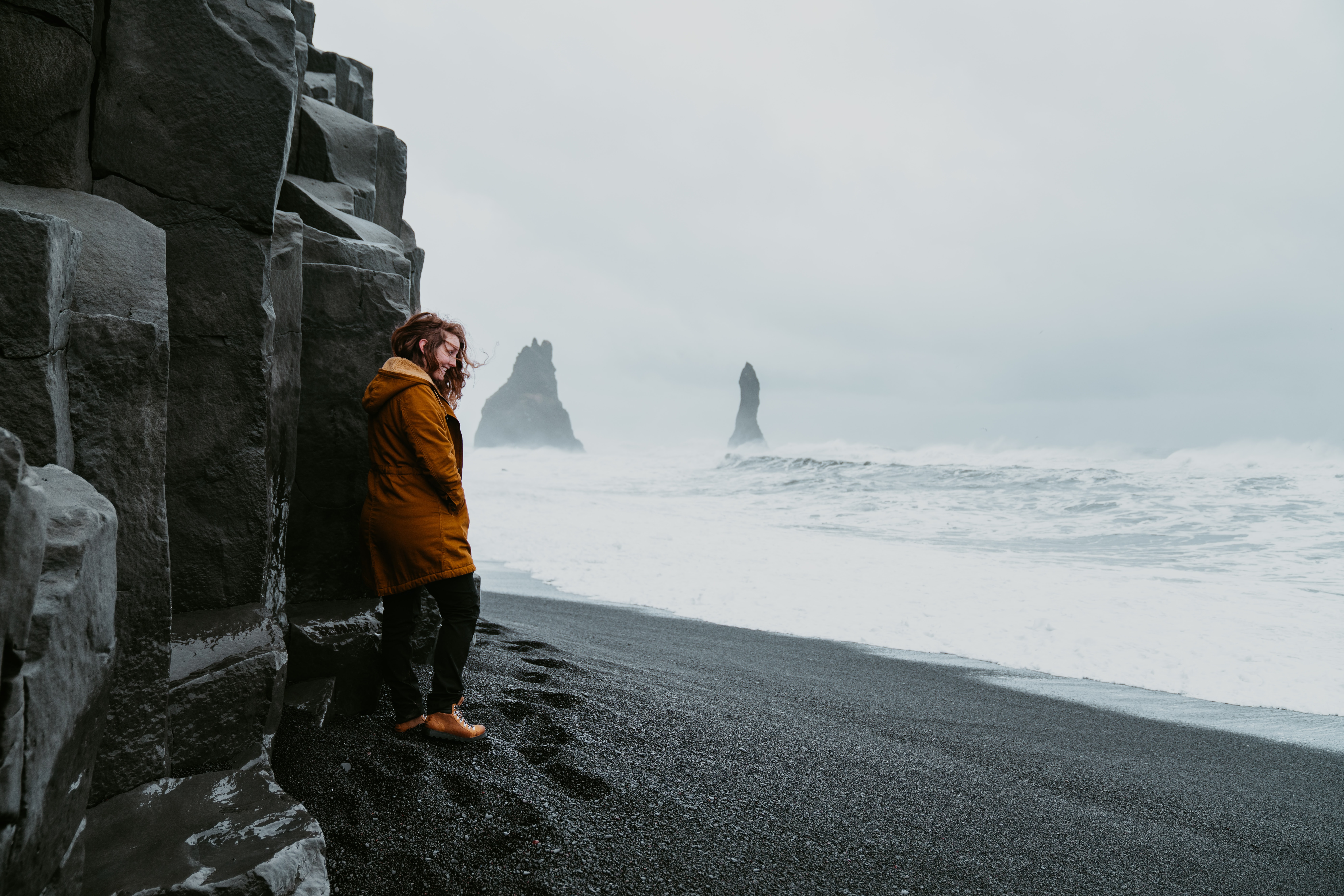
Given its easy accessibility just off the Ring Road, Reynisfjara can be visited regardless of whether you choose to visit in the summer or winter. Both seasons offer their advantages and disadvantages.
During the winter, the black pebbles and snow congregate together to form stunning contrasts beneath your feet, and there is no describing that breathtaking sensation of seeing the mountains above the beach cloaked in white.
Another benefit of visiting Reynisfjara during the winter is that you will have a better chance of avoiding the crowds. As aforementioned, Reynisfjara is one of Iceland’s most popular attractions, so extra consideration should be taken if you’re hoping to have the area to yourself, or as close to as possible.
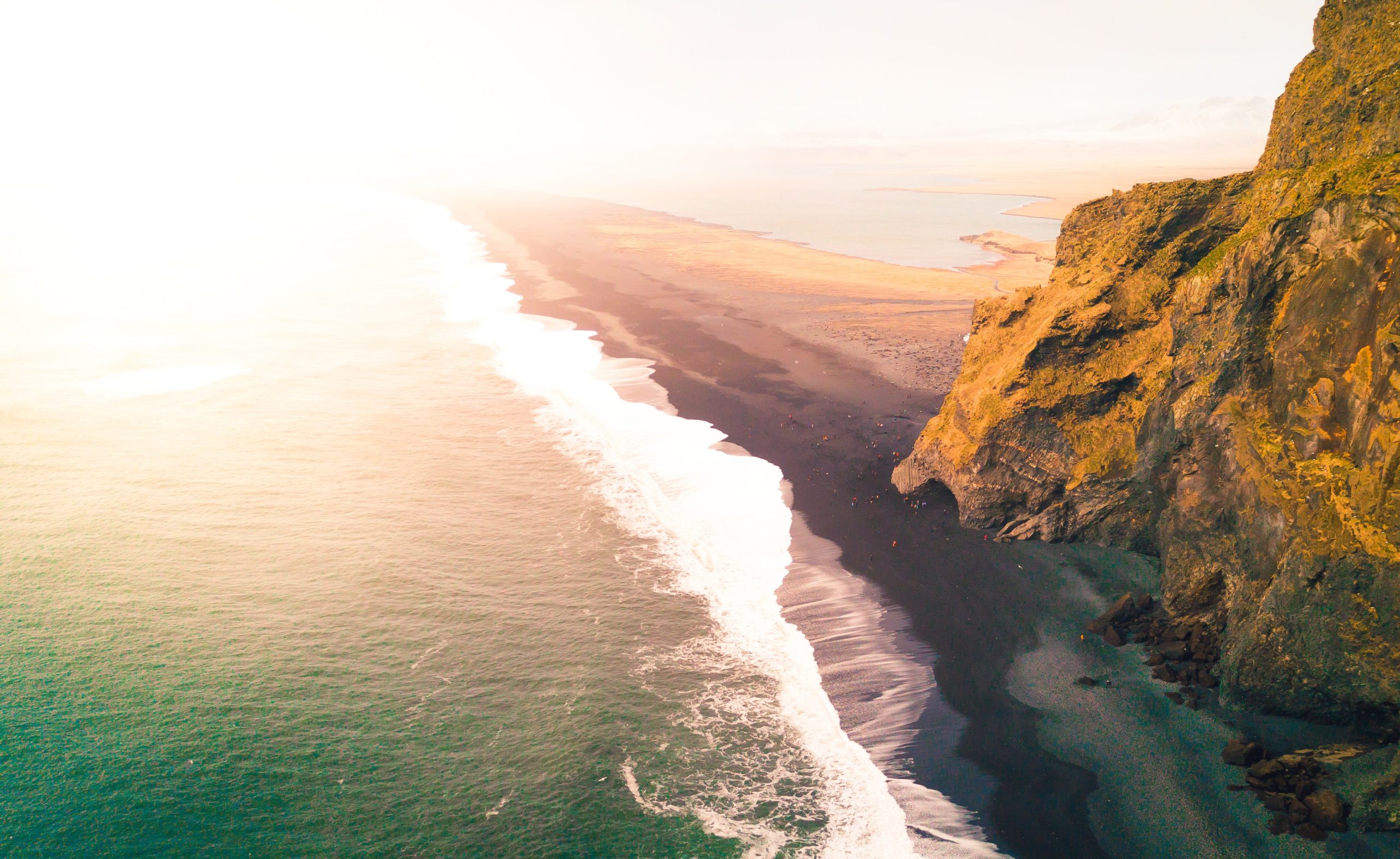
While you may find yourself joined by other travelling parties during the summer, you will have more daylight hours in which to appreciate the beach. Such an abundance of sunlight is perfect for those visitors looking to stretch out their journey, making sure to maximise their time at each stop.
On top of that, better weather will be advantageous for seeing further into the distance, allowing you a better view of the surrounding countryside. Given the breadth of beauty South Iceland offers, this point has more value than you might at first realise.
In summary, it matters not when you choose to discover Reynisfjara, only that you take the time to do so. Stepping onto its jet-black stones, breathing in that salty sea air, culminates in an experience like no other. With vast views over the ocean and encircling mountains, you’ll no doubt be pleased you made the extra effort.
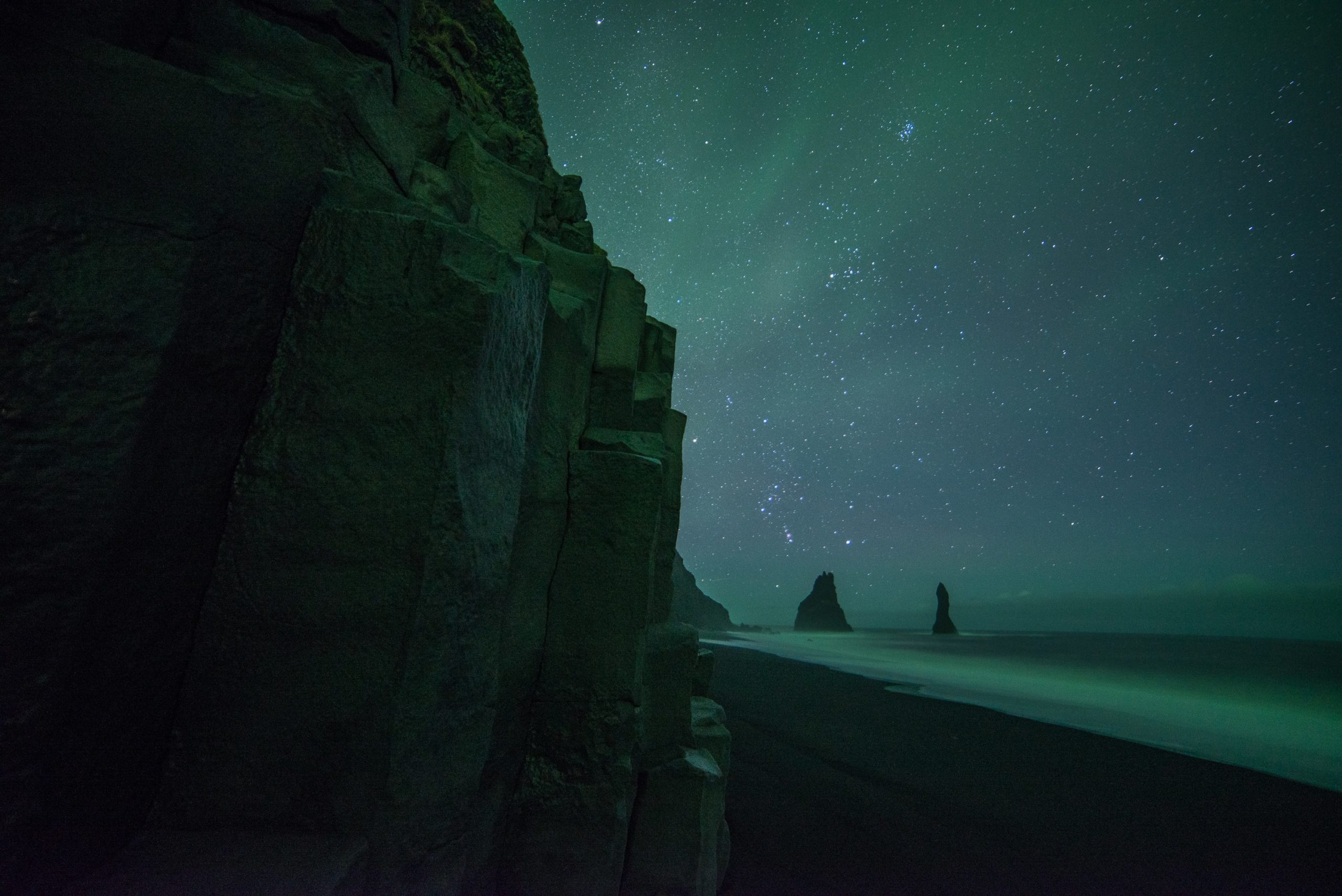
PLAN YOUR JOURNEY
Travelling to Iceland?
Check our overnight tours with a driver guide that includes a one night stay in a bubble.
*Starting from ISK 59.900 per person
Where was Love on Iceland filmed?
Where was Love on Iceland filmed?
By Michael Chapman
Chloe discovers more than just sheep, mountains and glacier lagoons when her ex-boyfriend, Charlie, arrives on her Iceland vacation unexpectedly...
Where was Love on Iceland filmed?
By Michael Chapman
Chloe discovers more than just sheep, mountains and glacier lagoons when her ex-boyfriend, Charlie, arrives on her Iceland vacation unexpectedly...
Love on Iceland is a Hallmark romantic-comedy directed by Clare Niederpruem and starring Kaitlin Doubleday and Colin Donnell as former partners reigniting their passion while travelling around Iceland.
Doubleday plays the part of Chloe, an overworked American podcaster looking to bring her boss new ideas by taking a trip abroad with her friends, played by Patti Murin and Preston Sadleir. But when Chloe’s ex-boyfriend and high school sweetheart, Charlie (Colin Donnell), tags along without invitation, things soon heat up in unexpected ways—fortunate, given the winter conditions.
The production marks the first time the Hallmark Channel has used Iceland as a shooting location, and the filmmakers have made the most of the photographic opportunities offered. This is something Love on Iceland does incredibly well, showcasing their exquisite choice of setting with wide sweeping shots that all but pop from the screen.
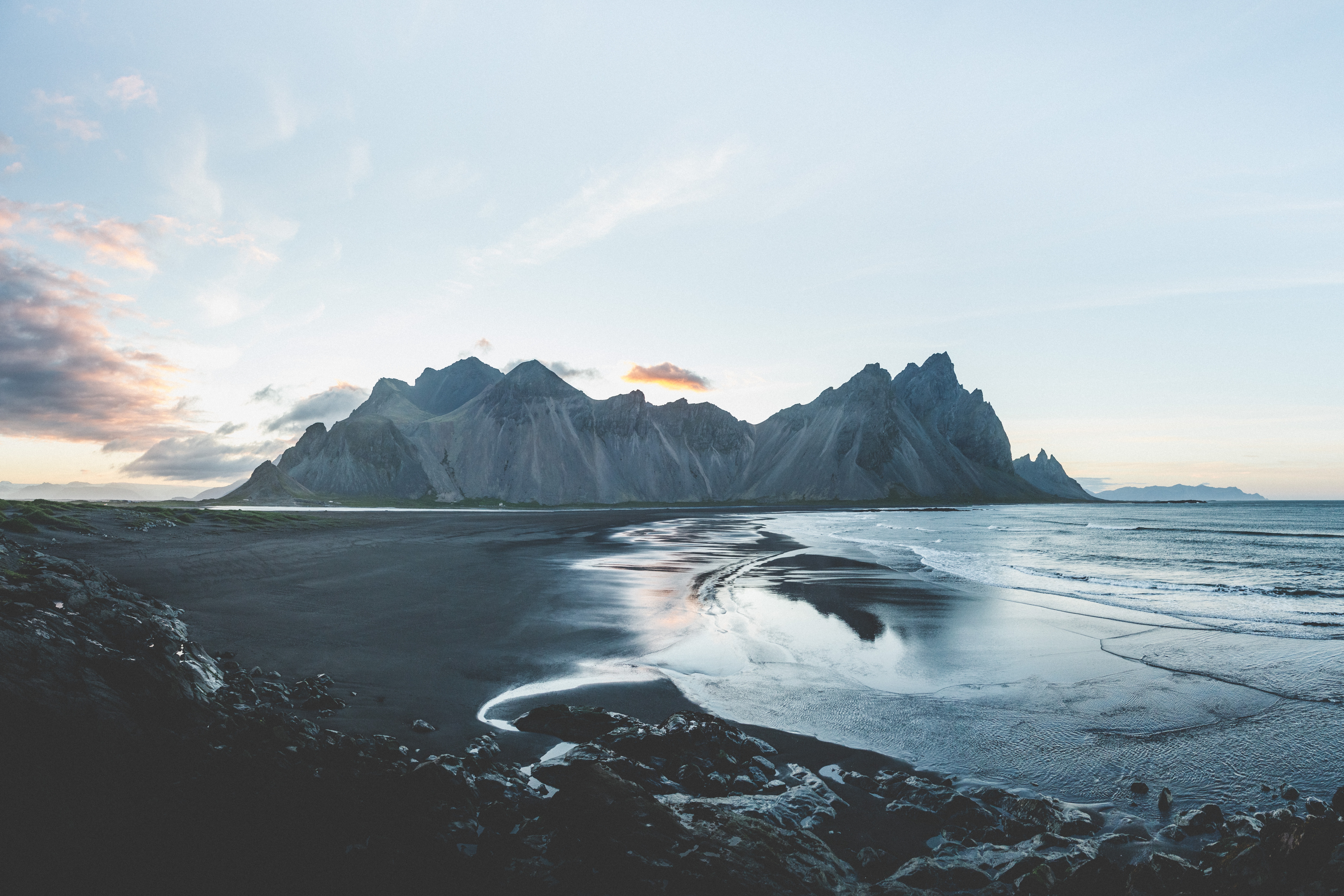
One can’t help but get the impression watching Love on Iceland that the filmmakers were grateful for the chance to shoot somewhere other than Canada. Such is the remarkable job they’ve done translating Iceland to the big screen. The film was shot in fifteen days, edited in two weeks, and premiered for the first time in January 2020.
As with everyone who visits Iceland, the cast members quickly fell head-over-heels with their surroundings and were soon posting pictures from the set on their Instagram accounts.
‘You couldn’t recreate this place or experience anywhere else in the world,’ Donnell tells Hallmark in a behind-the-scenes interview. ‘The people are amazing. The landscape is just absolutely stunning. And there is this wonderful culture that infuses the way of life here. It makes you feel at home.’
What were the shooting locations of Love on Iceland?
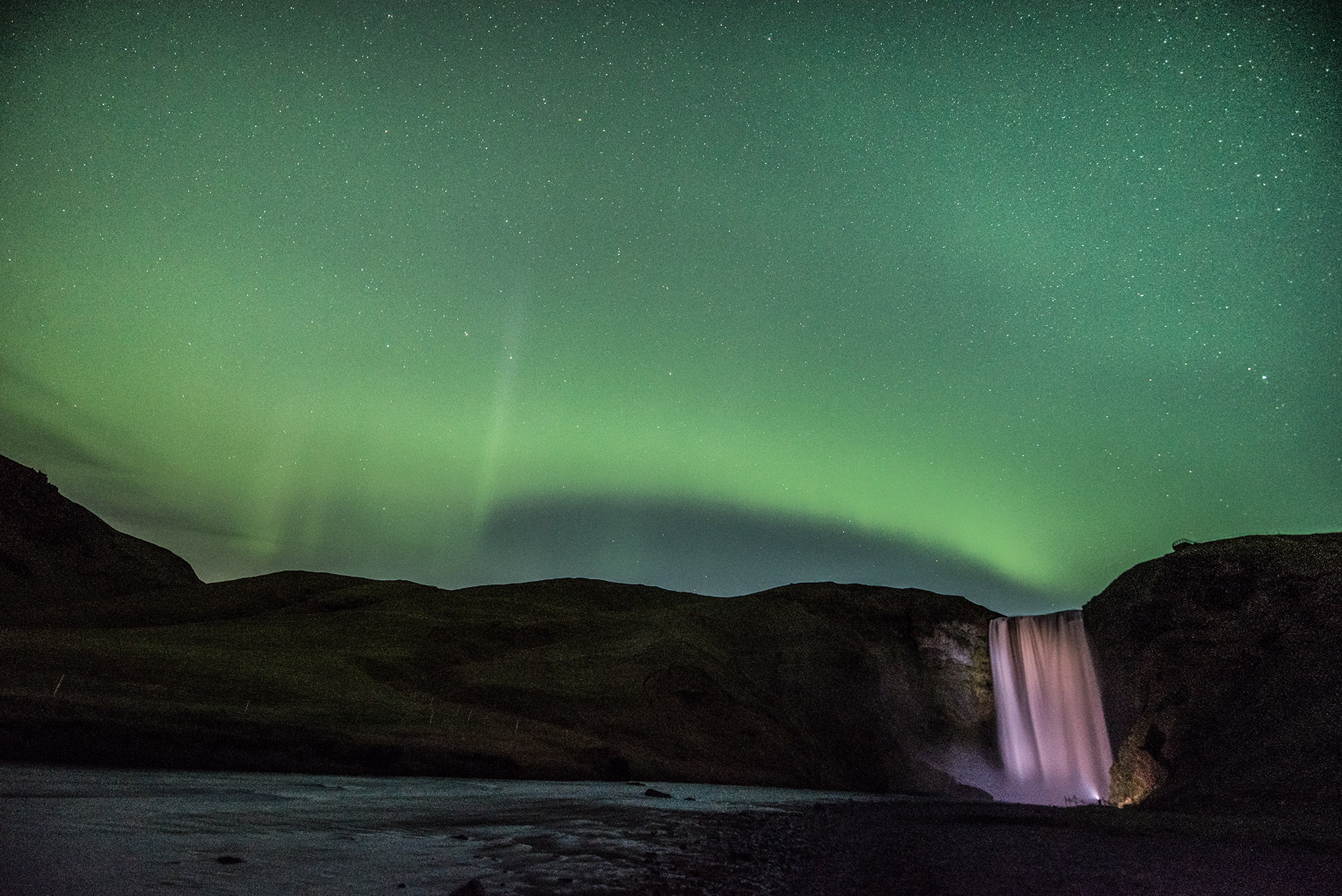
Love on Iceland (2020) showcases many of the natural attractions that have made this country famous, ranging from its glittering glaciers to its black sand beaches and dramatic waterfalls. Much of the film is shot in South Iceland, which has been attracting international visitors with the diversity of its landscape and awe-inspiring natural landmarks for the last decade.
Nicknamed as ‘The Crown Jewel of Iceland,’ Jökulsárlón glacier lagoon serves as an early scene in the film. Like all who visit this majestic locale, the central characters are notably breath taken by the site’s ethereal charm and otherworldly aesthetic. Jökulsárlón is known for its floating icebergs, playful seal colony and magnificent views of the national park in which it resides.
Diamond Beach, only a five minutes stroll from Jökulsárlón, also makes an appearance in Love on Iceland. This volcanic stretch of shore often sees icebergs washing up against the pebbles, creating stark contrasts that are a real feast for the eyes. However, do note the film indicates that the site is easily reachable from Reykjavík, given its where the cast chooses to take a walk after dining out in the city, some 380 km away.
In truth, we recommend you take a few days to explore the breadth of the South Coast, Diamond Beach included.
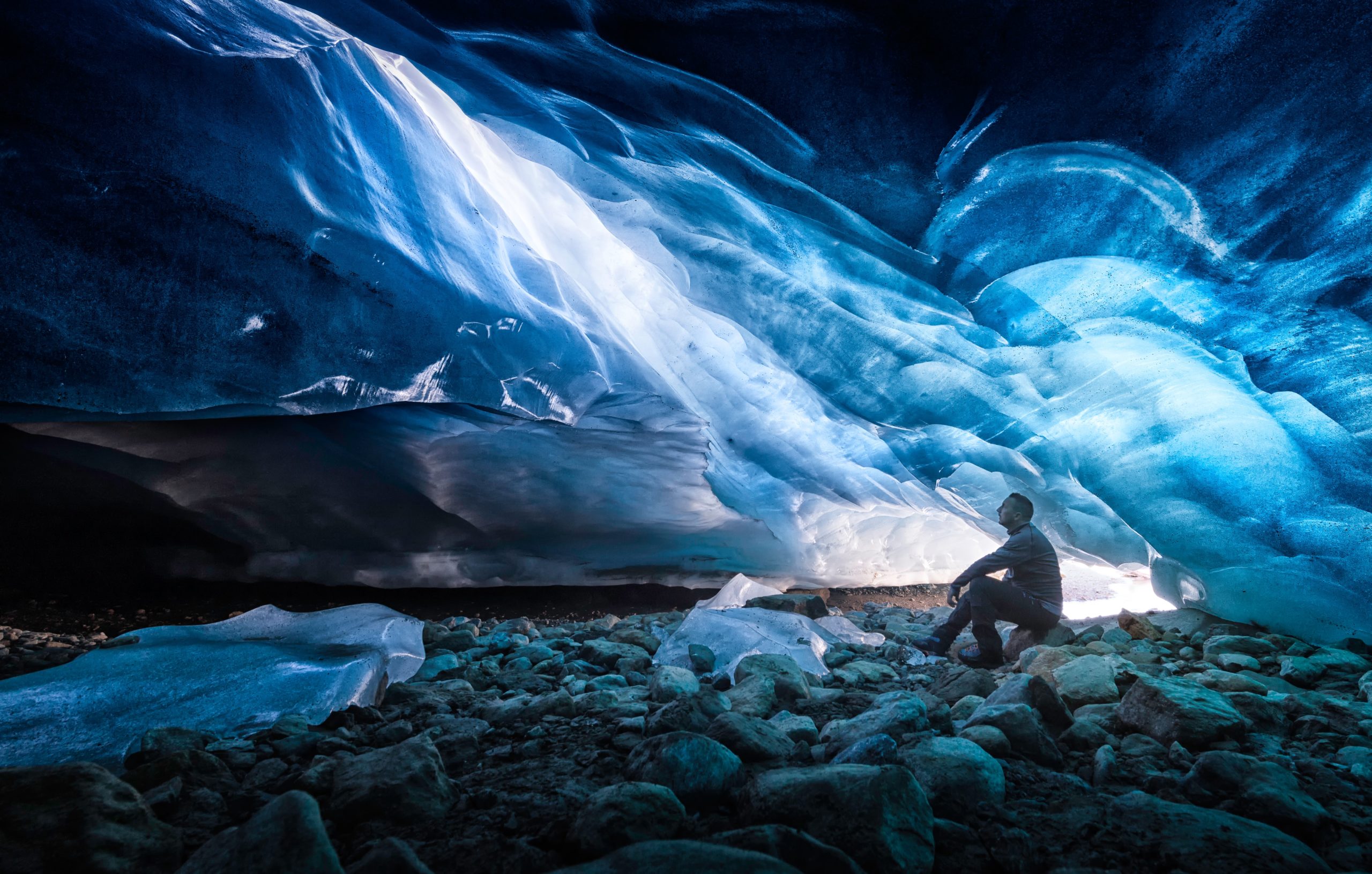
Chloe and her travel pals also spend time exploring Vatnajökull’s crystalline ice caves, some height above the lagoon. Once again, the filmmakers have excelled in translating just how awe-inspiring these caverns can be, taking extra care to capture shades of blue so vibrant that one could be forgiven for believing CGI enhanced the scene. Not true; Vatnajökull’s ice caves really are that splendid!
Several other Vatnajökull area shots, including those of Skaftafell Nature Reserve’s luscious hillsides and the creeping glacial tongue, Svínafellsjökull, add to the film’s setting, adding a level of intrigue and depth to the cinematography.
Other treasures of the South Coast sightseeing trail are also on display, namely the haunting black sand beach, Reynisfjara, and the picturesque waterfall, Seljalandsfoss. At 60 metres high, Seljalandsfoss is always high on the bucket lists of prospective travellers, drawing interest with the narrow pathway that leads directly behind the cascading water—perfect for photographers!
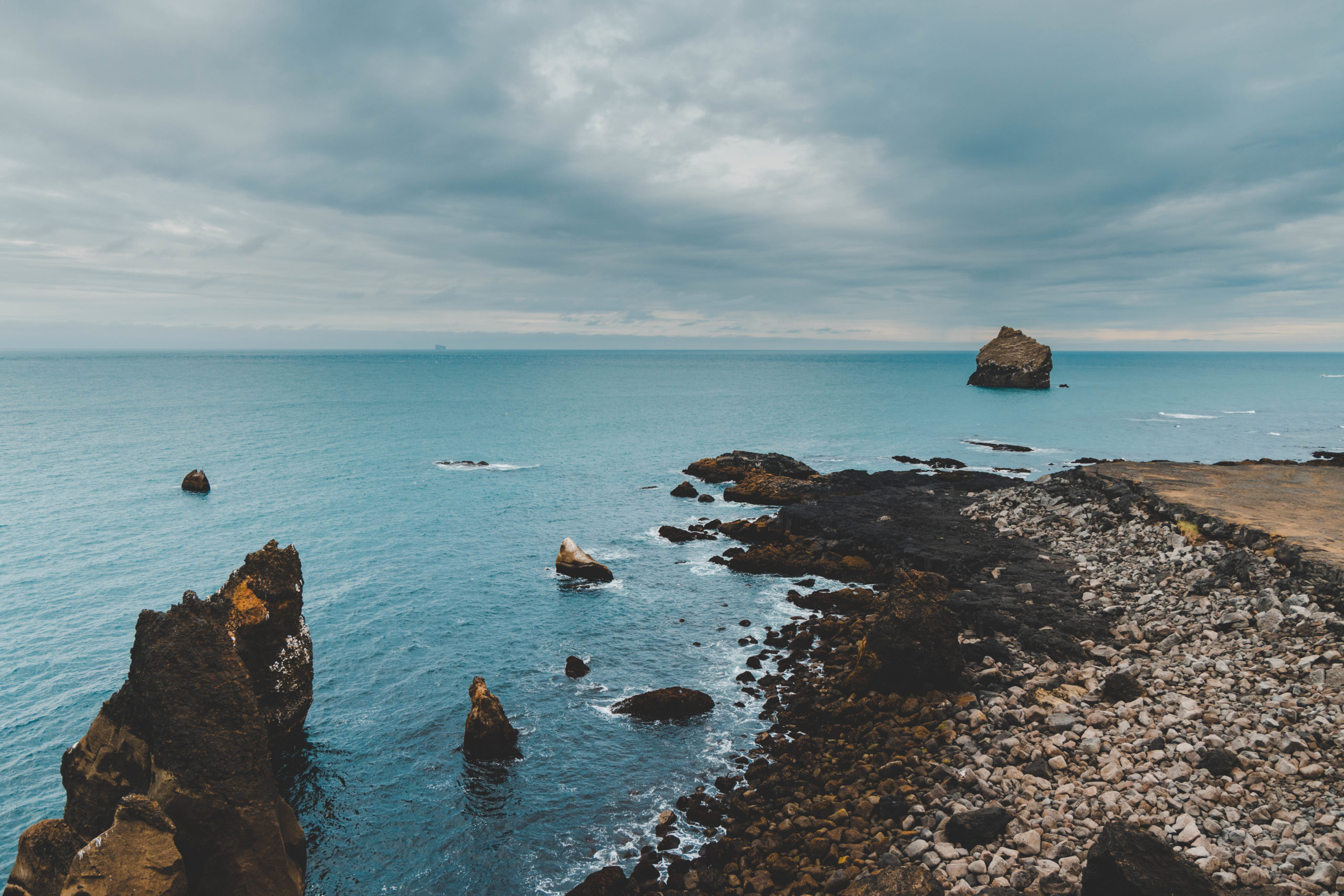
Only a short drive away, Dyrhólaey promenade is utilised thanks to its fantastic panoramas over the surrounding countryside, as well as the scenic rock arch that drops sharply into the crashing waves. With incredible views of the shorelines, distant mountains and wide-open ocean, the former-island of Dyrhólaey attracts thousands of nesting seabirds each summer, as well as hundreds of eager twitchers who come to see them.
In one intimate scene, Chloe and Charlie spend a night in one of our very own Bubbles, which are also found in South Iceland. Fans of the movie love to picture what their stay might be at this novel and immersive choice of accommodation, carefully placed in the lush depths of an Icelandic forest.
Other locations used were the small town of Hafnarfjörður and the capital city itself, Reykjavík. Love on Iceland does a fabulous job portraying the city as the quaint and highly livable place it is, focusing its lens on the beloved downtown pond, Lake Tjornin, as well as more iconic sights like Hallgrímskirkja Lutheran Church and the glassy architecture of Harpa Concert Hall.
Why should you watch Love on Iceland?
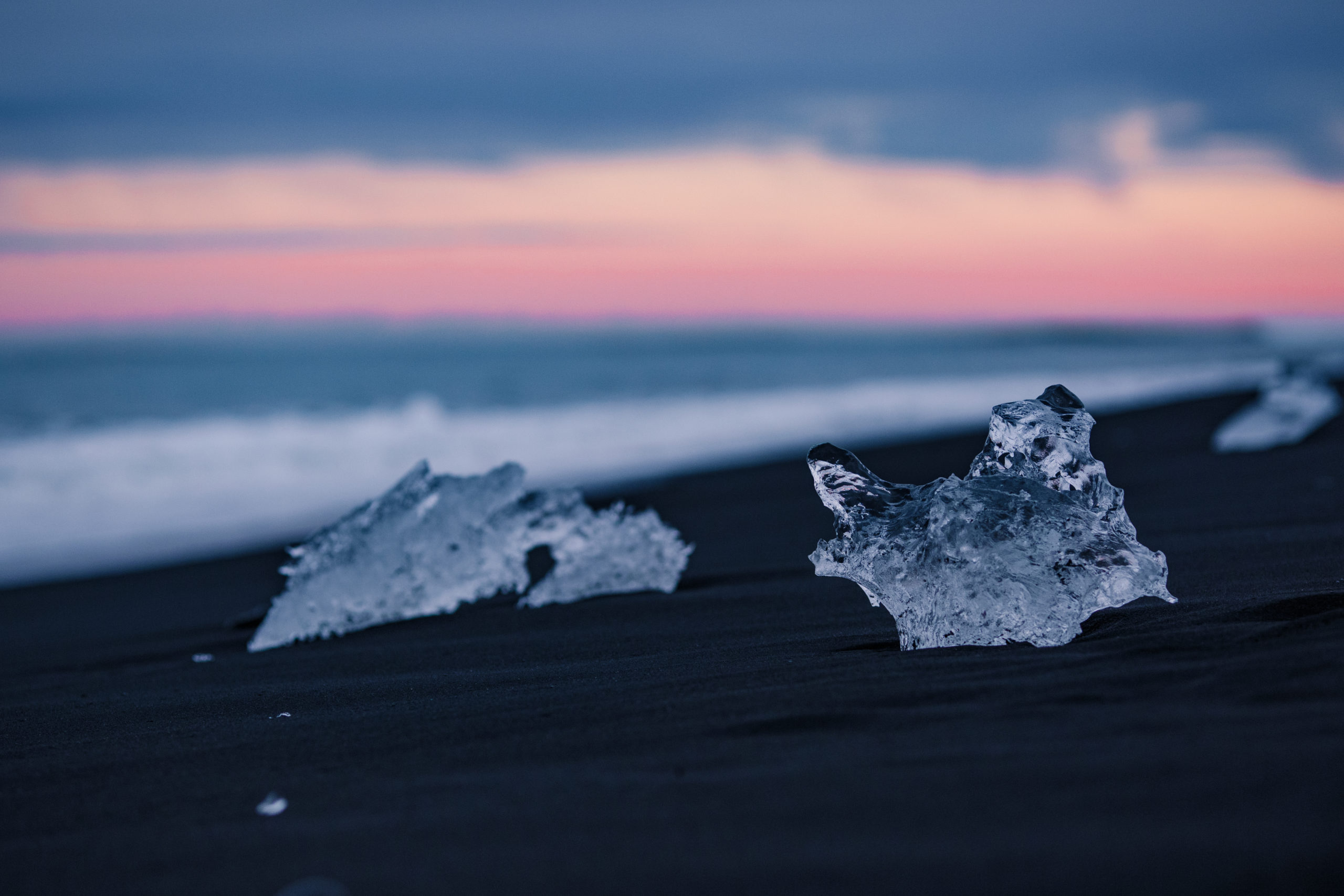
If ever there was a film that made you desperate to pack your bags and set-off travelling, then Love on Iceland would be it. With masterful control of the camera and a clear vision of the film being made, the director, Niederpruem, captures the local scenery in such a way as to exemplify its most unique and dramatic qualities.
Even Icelanders who have seen the film, no doubt, concluded its 84-minute runtime with the urge to hop the back-fence and rediscover all their homeland has to offer.
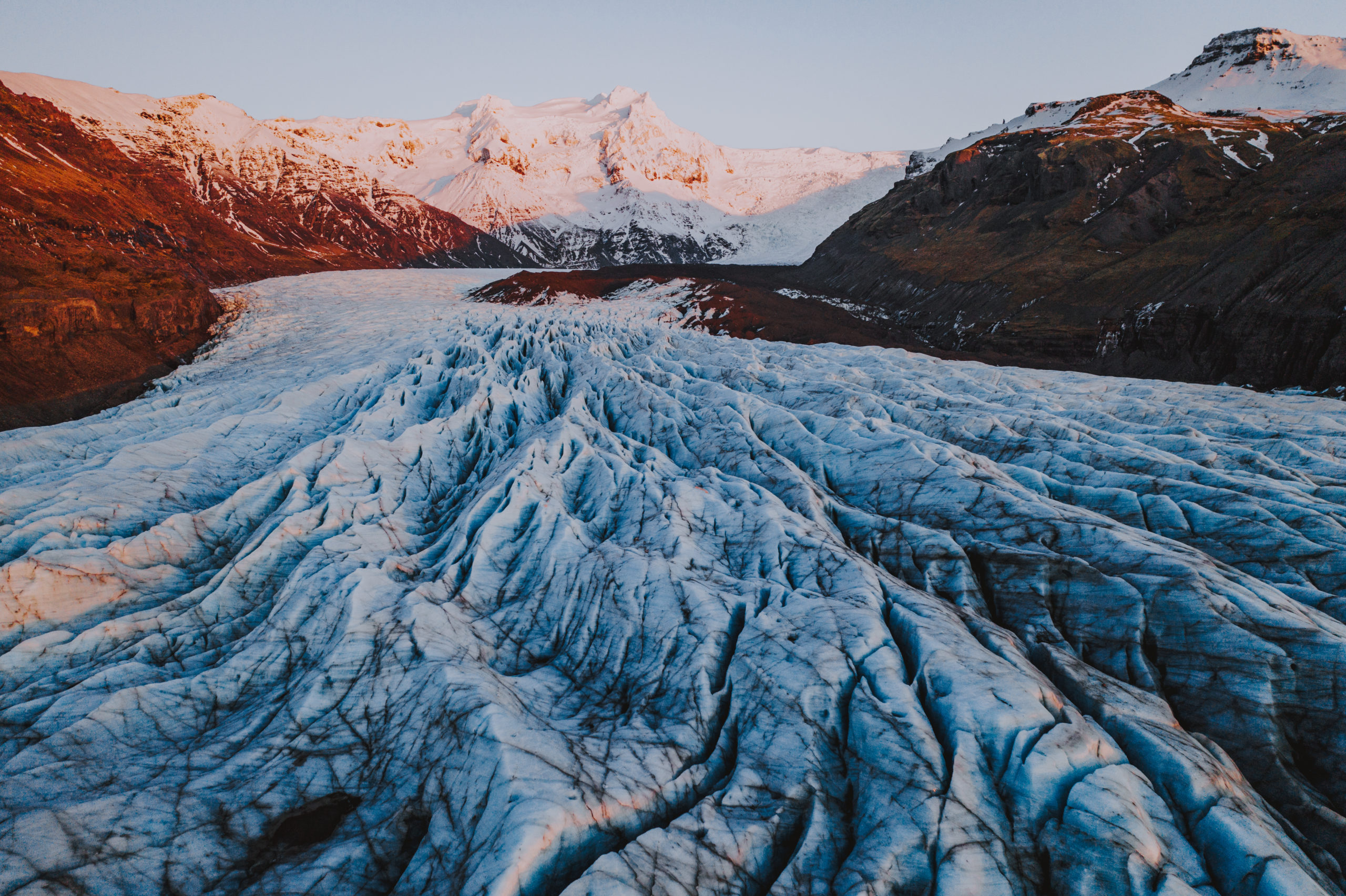
Love on Iceland does not shy away from providing a little background information on its setting. The filmmakers have sprinkled interesting facts about Iceland throughout, providing another reason to watch this movie should you be planning a trip here in the near future.
How can you see the locations in Love on Iceland?
If you’re hoping to stay in a bubble just as Chloe and Charlie did in the film, may we direct you to the Guided Tours listed on our main page.
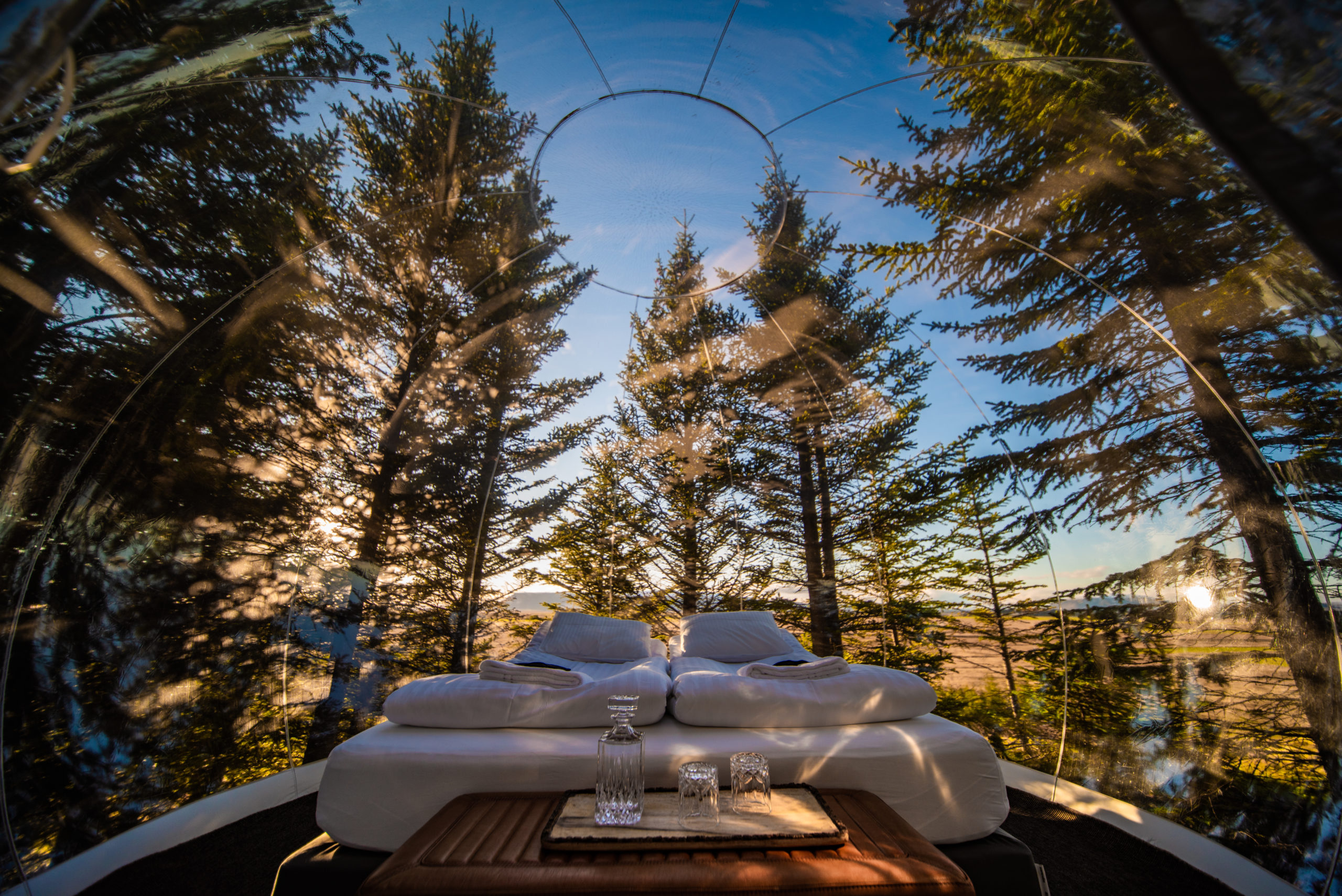
These excursions, available for both winter and summer travellers, not only allow you to visit many of the natural attractions showcased in Love on Iceland, but also spend the night in a transparent igloo. There are currently two bubble locations available for travellers hoping to experience this unique overnight stay, and both offer fantastic memories, regardless of when you visit.
During the summer, our Bubbles offer long daylight hours beneath the glowing Midnight Sun, while guests in the winter will continuously be on the lookout for the elusive Northern Lights dancing majestically through the see-through ceiling. During the day, you will be led by one of our professional and experienced guides around Iceland’s most cherished locales.
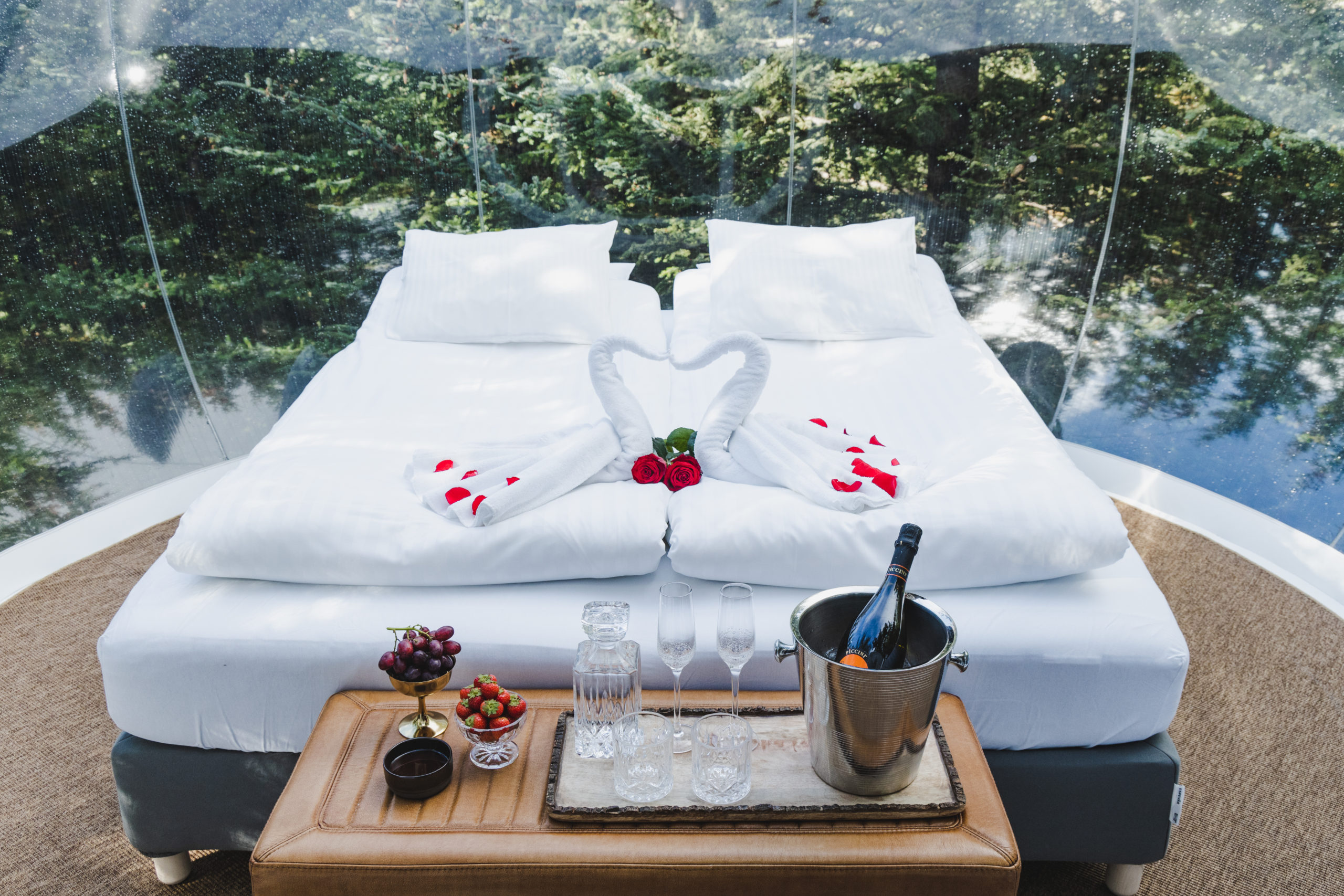
A trip such as this is perfect for new couples, honeymooners and devoted partners looking for their next adventure overseas.That’s not to say that the single travellers among us won’t have an incredible time too.
Who knows in which direction cupid’s arrow points? Iceland is one of the most romantic and enchanting destinations in the world. Falling in love here—and with here, we might add—is not a hard thing to do.
